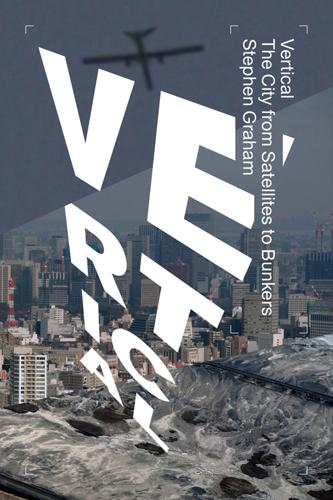
Vertical: The City From Satellites to Bunkers
by
Stephen Graham
Published 8 Nov 2016
See also Stephen Graham, ed., Disrupted Cities: When Infrastructure Fails, New York: Routledge, 2009. 43Robert David Onley, ‘Death from Above: The Weaponization of Space and the Threat to International Humanitarian Law’, Journal of Air Law and Commerce 78, 2013, p. 739. 44Ursula Heise, Sense of Place and Sense of Planet: The Environmental Imagination of the Global, Oxford: Oxford University Press, 2008, p. 11. 45See Chris Tong, ‘Ecology without Scale: Unthinking the World Zoom,’ Animation 9:2, 2014, pp. 200–1. 46See Hito Steyerl, ‘In Free Fall: A Thought Experiment on Vertical Perspective’, E-Flux Journal 4, 2011, available at e-flux.com/journal. 47Mark Dorrian, ‘On Google Earth’, New Geographies 4, 2011, pp. 164–70. 48Daniel Laforest, ‘The Satellite, the Screen, and the City: On Google Earth and the Life Narrative’, International Journal of Cultural Studies, July 2014. 49Tong, ‘Ecology without Scale’. 50Leon Gurevitch, ‘Google Warming: Google Earth as Eco-machinima’, Convergence 20, 2014, p. 97. 51See Daniel Laforest, ‘The Satellite, the Screen, and the City: On Google Earth and the Life Narrative,’ International Journal of Cultural Studies, 2015, p. 6. 52Cited in Roger Stahl, ‘Becoming Bombs: 3D Animated Satellite Imagery and the Weaponization of the Civic Eye’, MediaTropes 2:2, 2010, p. 66. 53Michael Crutcher and Matthew Zook, ‘Placemarks and Waterlines: Racialized Cyberscapes in Post-Katrina Google Earth’, Geoforum 40:4, 2009, pp. 523–34. 54See Lisa Parks, ‘Digging into Google Earth: An Analysis of “Crisis in Darfur”’, Geoforum 40:4, 2009. pp. 535–45; Andrew Herscher ‘From Target to Witness: Architecture, Satellite Surveillance, Human Rights’, in Bechir Kenzari, ed., Architecture and Violence, Barcelona: Actar, 2010, pp. 127–48. 55James Walter, ‘Archimedean Witness: The Application of Remote Sensing as an Aid to Human Rights Prosecutions’, PhD thesis, Los Angeles, UCLA. 56Linda Quiquivix, ‘Art of War, Art of Resistance: Palestinian Counter-Cartography on Google Earth,’ Annals of the Association of American Geographers 104:3, 2014, pp. 444–59. 57Chris Perkins and Martin Dodge, ‘Satellite Imagery and the Spectacle of Secret Spaces’, Geoforum 40:4, 2009, pp. 546–60. 58This case is described in more detail in chapter 12. 59Michael; Byrne, ‘Google Earth and the Bahraini Uprising’, Motherboard, 17 February 2011, available at motherboard.vice.com/. 60Stahl, ‘Becoming Bombs’, p. 67. 61Brian Holmes, ‘Drifting through the Grid: Psychogeography and Imperial Infrastructure’, May 2003, available at springerin.at. 62Lars Lerup, ‘Vastlands Visited’, in Alan Berger, ed., Drosscape: Wasting Land in Urban America, New York: Princeton Architectural Press, 2006, p. 242. 63Lerup, ‘Vastlands Visited’, p. 243. 64Dorrian, ‘On Google Earth’, p. 169. 65Ibid. 66An example was Liverpool in 2006.
…
At such a point, he suggests, ‘there exists only a small leap in logic between the prospects of satellites armed with missiles for self-defence, to satellites (or space-bombers/orbiters) armed with missiles and bombs for offensive purposes.’43 World-Zoom: Google Earth Today the aerial view – the image of everywhere – seems to be everywhere. – Dorrian and Pousin, Seeing from Above Perhaps the most profound effect of the contemporary proliferation of satellites centres on the way their extraordinary powers of seeing from above are now harnessed to computers and smart phones. Google Earth is obviously especially pivotal here. As a system of systems linked to a computer or mobile smartphone, it offers almost infinite possibilities of zooming into and out of views of Earth’s surface at local, regional and global scales.44 Google Earth does this by ‘mashing up’ global satellite imagery, geopositioning coordinates, digital cartography, geolocated data, three-dimensional computerised maps, architectural drawings, street-level digital imagery and other social media, data and software.
…
Satellites and satellite vision are absolutely pivotal to this new sense of vertical ‘free fall’ that attends this new age.46 Google Earth is central to these transformations. It is the prime means through which vertical and oblique views of our world view have rapidly become radically accessible, zoomable and pannable in a myriad of ways. Many researchers suggest that mass public access to Google Earth fundamentally challenges long-standing assumptions that the view from above necessarily involves dispassionate, technocratic or privileged visual power.47 In presenting a ‘virtual globe’ that can be navigated on screen and repeatedly zoomed, Google Earth thus presents a powerful imagination of the planet: one that is simultaneously global, corporate and saturated with commercial data and corporate location-based advertising.
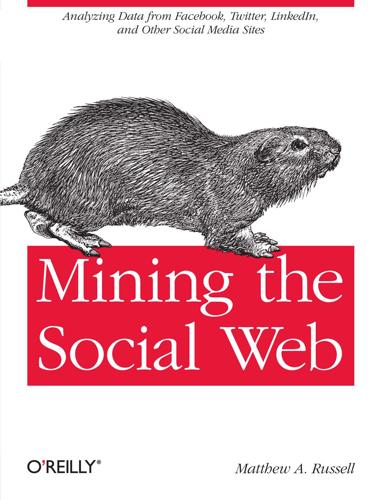
Mining the Social Web: Finding Needles in the Social Haystack
by
Matthew A. Russell
Published 15 Jan 2011
(A Data-Driven Game) example user object represented as JSON data, Souping Up the Machine with Basic Friend/Follower Metrics pretty-printing Twitter data as, Tinkering with Twitter’s API sample output from script converting mbox data to JSON, mbox: The Quick and Dirty on Unix Mailboxes script loading data into CouchDB, Bulk Loading Documents into CouchDB json package, Tinkering with Twitter’s API JVM (Java Virtual Machine), couchdb-lucene: Full-Text Indexing and More jwz threading, Threading Together Conversations K k-means clustering, k-means clustering keyword search capabilities in applications, couchdb-lucene: Full-Text Indexing and More KMeansClustering class, Mapping Your Professional Network with Google Earth, Mapping Your Professional Network with Google Earth feeding geocoordinates into, Mapping Your Professional Network with Google Earth getclusters method, Mapping Your Professional Network with Google Earth KML (Keyhole Markup Language), Plotting geo data via microform.at and Google Maps, Mapping Your Professional Network with Google Earth constructing to feed into Google Earth, Mapping Your Professional Network with Google Earth L Levenshtein distance, Common Similarity Metrics for Clustering lexical diversity, Frequency Analysis and Lexical Diversity likelihood ratio, How the Collocation Sausage Is Made: Contingency Tables and Scoring Functions LinkedIn, LinkedIn: Clustering Your Professional Network for Fun (and Profit?)
…
geographically clustering LinkedIn network, Geographically Clustering Your Network, Closing Remarks, Mapping Your Professional Network with Google Earth, Mapping Your Professional Network with Google Earth, Mapping Your Professional Network with Dorling Cartograms mapping network with Dorling Cartograms, Mapping Your Professional Network with Dorling Cartograms mapping network with Google Earth, Mapping Your Professional Network with Google Earth, Mapping Your Professional Network with Google Earth geopy module, Mapping Your Professional Network with Google Earth getmail, Analyzing Your Own Mail Data GitHub repository, Or Not to Read This Book?
…
C Cantor, Georg, Elementary Set Operations canvas element, support by browsers, Visualizing Mutual Friendships Within Groups canviz tool, Closing Remarks cardinality of sets, Elementary Set Operations chi-square, How the Collocation Sausage Is Made: Contingency Tables and Scoring Functions Chrome, Graph Your Inbox Extension, The Graph Your (Gmail) Inbox Chrome Extension chunking, A Typical NLP Pipeline with NLTK chunks, A Brief Thought Exercise circo tool, Visualizing Tweet Graphs cliques, detecting and analyzing in Twitter friendship data, Clique Detection and Analysis, Clique Detection and Analysis closed-world versus open-world assumptions, Open-World Versus Closed-World Assumptions cluster module, Hierarchical and k-Means Clustering clustering, Clustering Contacts by Job Title, Common Similarity Metrics for Clustering, A Greedy Approach to Clustering, Scalable clustering sure ain’t easy, Scalable clustering sure ain’t easy, Intelligent clustering enables compelling user experiences, Hierarchical and k-Means Clustering, k-means clustering, k-means clustering, Geographically Clustering Your Network, Mapping Your Professional Network with Google Earth, Mapping Your Professional Network with Google Earth, Mapping Your Professional Network with Dorling Cartograms, Clustering Posts with Cosine Similarity, Clustering Posts with Cosine Similarity common similarity metrics for, Common Similarity Metrics for Clustering contacts by job title, Clustering Contacts by Job Title hierarchical, Hierarchical and k-Means Clustering incorporating random sampling to improve performance, Scalable clustering sure ain’t easy intelligent, enabling compelling user experiences, Intelligent clustering enables compelling user experiences k-means, k-means clustering LinkedIn network geographically, Geographically Clustering Your Network, Mapping Your Professional Network with Google Earth, Mapping Your Professional Network with Google Earth, Mapping Your Professional Network with Dorling Cartograms mapping with Dorling Cartograms, Mapping Your Professional Network with Dorling Cartograms mapping with Google Earth, Mapping Your Professional Network with Google Earth, Mapping Your Professional Network with Google Earth scalable, high cost of, Scalable clustering sure ain’t easy Tutorial on Clustering Algorithms, k-means clustering using cosine similarity to cluster posts, Clustering Posts with Cosine Similarity, Clustering Posts with Cosine Similarity using greedy approach, A Greedy Approach to Clustering code examples for this book, Or Not to Read This Book?
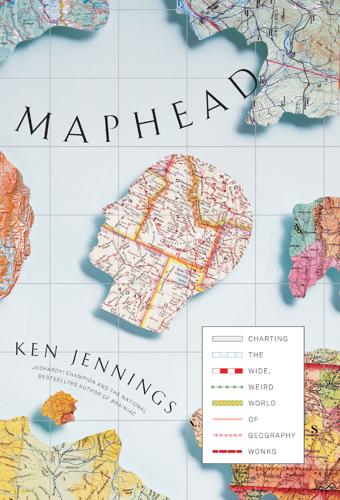
Maphead: Charting the Wide, Weird World of Geography Wonks
by
Ken Jennings
Published 19 Sep 2011
Maybe it’s a sign of the unusual burden he carries as Google Earth’s head engineer. After all, I’ve never met anyone in charge of his own planet before. You may scoff that Google Earth isn’t a real planet, but consider: its architecture contains hundreds of terabytes of data. (A terabyte is equivalent to one thousand gigabytes; the entire text of every book in the Library of Congress could be stored in just twenty terabytes or so.) It’s a mammoth responsibility, surely more complex than being the person in charge of, say, some uninhabitable iceball like Uranus or Neptune. But rank does have its privileges: the center of Google Earth (that is, the exact center of the map when the application opens) is an apparently random apartment building in Lawrence, Kansas—a secret salute to McClendon, who grew up in that very building.
…
The library of aerial photographs that coats Google Earth—taken from satellites, planes, hot-air balloons, even camera-equipped kites—is growing exponentially. “All the pictures that have ever been taken are less than what we’re going to have next year,” McClendon tells me.* The eventual goal is centimeter-per-pixel imagery for the entire globe: every square centimeter of the (real) Earth’s surface would be its own pixel on Google Earth, not unlike Lewis Carroll’s imaginary map. That goal is still more than twenty years away, McClendon guesses, since there are still places on Google Earth where the resolution is fifteen meters per pixel, more than a thousand times chunkier.
…
Keyhole’s aerial imagery soon began appearing on Google’s new map page, and for a while, Google Maps became a dreamy utopia, the vast majority of its users idly browsing the globe from space, not printing out driving directions from point A to point B. Two months later, when Google finally released Keyhole’s application for free as Google Earth, demand exploded. “We nearly took down Google a couple times,” laughs McClendon. “We actually had to turn off downloads of Google Earth because it was so popular. The first six days, it was nip and tuck.” When I met McClendon at the National Geographic Bee, he invited me to stop by his Mountain View, California, offices for “the nickel tour” if I was ever in the neighborhood.
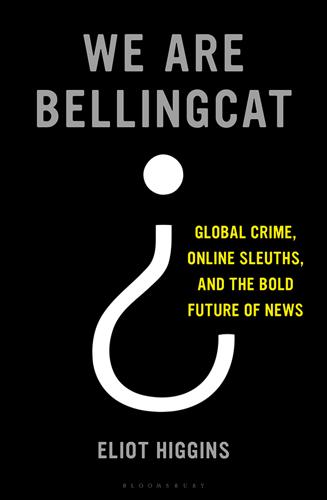
We Are Bellingcat: Global Crime, Online Sleuths, and the Bold Future of News
by
Eliot Higgins
Published 2 Mar 2021
I loaded one of the most useful apps in our toolbox, Google Earth, which patches together satellite images and aerial photos into a model of the globe, allowing the user to zoom into any area, tilting whole cities up and down, left and right. You can also measure distances and compare satellite images from different times with a slider that shifts between then and now – vital when tracking conflicts, as I had found when studying neighbourhoods of Damascus a few months apart, seeing a once-bustling area wiped out. Another key feature of Google Earth is its 3D view, which allows you to tilt an aerial image to the perspective of someone on the ground, viewing the landscape head-on.
…
Online, we found a photo of the Chinese Buildings that resembled those in the execution video. Aerial images on Google Earth looked promising, too. The problem was, there were hundreds of identical unfinished buildings. Social-media videos from June 2017 showed Werfalli and his soldiers using a bulldozer to dig up weapons buried by their opponents around the skeletal building zone. In the background, we noticed a fence much like that glimpsed briefly in the execution footage. On Google Earth, we found that just such a fence led to an open area with patches of vegetation. In satellite imagery, the patches seemed to match the scrub in the execution video.
…
A news site cited a rebel who claimed that 50 per cent of Free Syrian Army weaponry was captured in battle, 40 per cent gained by ransoming soldiers and buying arms from corrupt military officers,42 while 10 per cent had been donated or smuggled from outside the country. One newspaper spoke of rebel emissaries meeting with top US officials and pleading for heavier weaponry, bringing an iPad loaded with Google Earth to show rebel positions and regime targets.43 With the proper firepower, they pledged to knock out regime tanks and aircraft. The international community hesitated, unsure which of the hundreds of fighting outfits to deal with. Despite this smattering of clues, I failed to find a clear account of what the rebels actually had.

The Stack: On Software and Sovereignty
by
Benjamin H. Bratton
Published 19 Feb 2016
The utopian urbanism of this Pakistani state within a state may be based on an expansive geographical vision of Dar al-Islam, whereas the cosmopolitan logic of Google and Google Earth is a singular denuded space into which competing claims can be enveloped. The platform utopia of Google Earth's cosmographic capacities are instrumentalized by fundamentalist politico-theological geographies, such that one space can interweave through the other in the same projection. And again, their interweaving and interdependency produce the space of their encounter (once more, the lesson is less that jihad can fit within Google Earth but than Google Earth fits within jihad). The space of this interlacing of utopias is made and thereby entered into, not entered into and so made, or again, after Adorno, “but in that we travel there, the island of utopia rises out of the sea.”
…
As much as classified reconnaissance, simulation, and situational-awareness tools are war technologies for states, declassified tools can be for nonstate actors; and the trail of representation and counterrepresentation of contested space through these specific tools and specific events is knotted. For example, in Mumbai, Google Earth was a mechanism of the attack itself, but news agencies also mapped the attacks in near real time using Google Earth as part of their own coverage. In this awkward recursion, satellite views of the City layer serve as medium of violence by those who would enact it, witness it, report it, or defend against it, as Google Earth's cosmograms are deployed by politico-theological geographies that may appear at first to be outside its intended program.58 Here a proto-AR is not only the territorial index through which such projections play themselves out; it is, as much as the City that it maps, the very means to project their activist and in this case irredentist imagination.
…
Today, that same apparently same self-evident image of totality also serves as a graphical user interface to personal mapping applications that are based on satellite observations of all locations within the image-territory. Google Earth, for example, is a meta-interface into an archaeological view of the virtual frozen present of a planet comprehensively available to vision, but also largely devoid of animal bodies. It frames an Earth mostly deserted by humans who have left behind empty cities. For Google Earth, both the image and the interface promise an absolute frame; a metaframe of frames and their collaborative geopolitical ambition is derived from that promise.
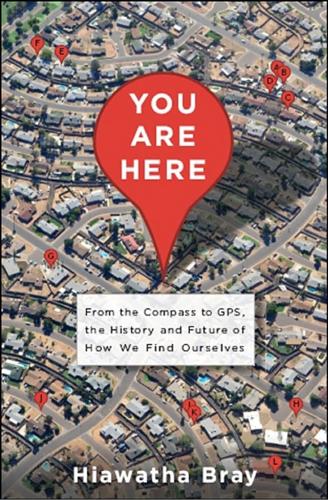
You Are Here: From the Compass to GPS, the History and Future of How We Find Ourselves
by
Hiawatha Bray
Published 31 Mar 2014
he asked.8 Diller was practically alone in his skepticism. Since its release Google Earth has been downloaded more than a billion times. Its visual appeal is irresistible. Yes, a user can look at his own house from space—but also at the Grand Canyon, the Parthenon, or the Great Wall of China, anyplace one might dream of visiting, rendered with lifelike clarity. In addition, Google Earth let anyone create customized maps of favorite places or subjects. Hanke’s team had developed Keyhole Markup Language, a simple set of codes for highlighting locations and objects on Google Earth or Google Maps. It is no accident that KML sounds a lot like HTML, the standard language for building Web pages.
…
And Google Maps provided these remarkable capabilities at no charge. Two months later Google released an improved version of Keyhole’s EarthViewer as a free Internet download and renamed it Google Earth. The software, which ran on the user’s own computer instead of the Internet, was a three-dimensional model of the entire planet, made up of millions of aerial and satellite photos. Once again the user could zoom in and out and rotate the image, but this time as if he had the whole world in his hands. Not everyone was awed by Google Earth. Barry Diller, a media mogul who had helped establish the Fox and USA television networks and led the online search service Ask.com, considered it little more than a gimmick.
…
A KML user can even create an automated visual tour that scrolls across the screen like a movie, complete with musical soundtrack. With KML a student could create a Google Earth overlay showing where to party in Fort Lauderdale during spring break, a veteran of the wars in Vietnam or Iraq could mark the places he had fought, a historian of the civil rights movement could create a guided tour of the greatest landmarks of the struggle. With their simple tools for adding new landmarks, Google Earth and Google Maps had set the stage for a new kind of cartography—quick and dirty mapmaking that would help resolve conflicts and save lives.
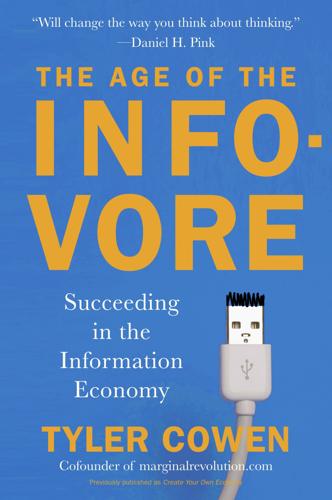
The Age of the Infovore: Succeeding in the Information Economy
by
Tyler Cowen
Published 25 May 2010
For the Steve Hofstetter quotation, see “Thinking Man: Steve Hofstetter is Your Friend,” November 14, 2005, www.collegehumor.com/article:1632255. On “Facebook-like” services for the very young, see Camille Sweeney, “Twittering from the Cradle,” The New York Times, September 11, 2008. For sources on Google Earth, see the Google Earth blog, www.gearthblog.com/blog/archives/2007/10/new_youtube_layer_in_google_earth.html. On crashing pools, see James Sherwood, “Teens Use Technology to Party in Neighbors’ Pools,” June 18, 2008, www.reghardware.co.uk/2008/06/18/tech_aids_pool_crashing/. On the precise ordering of physical daily experience, see Monica Hesse, “Bytes of Life,” Washington Post, September 9, 2008.
…
Earth itself can be viewed, classified, tagged, and mentally organized like never before. North Korean military installations and some other bits aside, Google Earth creates a tile-by-tile mosaic of the entire planet. There is tilt, zoom, rotation, and 3-D portrayals of major cities, all organized by zip code, address, or latitude and longitude. The layers function tells you where the public parks are, where an earthquake is most likely to strike, whether political refugees are streaming into a region, and whether you can view an area through a live webcam. Rowdy British teens use Google Earth to find neighbors’ empty pools to crash and commandeer for parties. Or you can embed your favorite YouTube video inside a picture of almost anywhere on the planet—you can listen to blues while watching the Mississippi Delta—or you can tour Disney in three dimensions.
…
Or you can embed your favorite YouTube video inside a picture of almost anywhere on the planet—you can listen to blues while watching the Mississippi Delta—or you can tour Disney in three dimensions. When you get bored with Google Earth, move on to Google Sky. Delicious, which is now used by at least three million people, helps you create your own multidimensional website for indexing content on particular topics. You can tag websites and photos and come back to them whenever you want, thereby generating easy access. It’s also easy to visit the links and photos that other people have marked with the same keywords.

Surveillance Valley: The Rise of the Military-Digital Complex
by
Yasha Levine
Published 6 Feb 2018
Derek Thompson, “Google’s CEO: The Laws Are Written by Lobbyists,” The Atlantic, October 1, 2010. 95. Par Po Bronson, The Nudist on the Lateshift and Other Tales of Silicon Valley (New York: Random House, 1999); Evan Ratliff, “The Whole Earth, Catalogued,” Wired, July 2007. 96. Avi Bar-Zeev, “Notes on the Origin of Google Earth,” Reality Prime, July 24, 2006, http://www.realityprime.com/blog/2006/07/notes-on-the-origin-of-google-earth/. 97. Jerome S. Engel, ed., Global Clusters of Innovation: Entrepreneurial Engines of Economic Growth Around the World (Cheltenham, UK: Edward Elger, 2014), 57. 98. John T. Reinert, “In-Q-Tel: The Central Intelligence Agency as Venture Capitalist,” Northwestern Journal of International Law & Business 33, no. 3 (Spring 2013). 99.
…
Army to Cut Costs, Improve Collaboration and Go Mobile with Google Apps,” Google Cloud (blog), October 22, 2013, https://cloud.googleblog.com/2013/10/us-army-to-cut-costs-improve.html. 115. “NGA has made a significant investment in Google Earth technology through the GEOINT Visualization Services Program on SECRET and TOP SECRET government networks and throughout the world in support of the National System for Geospatial Expeditionary Architecture,” explained the NGA. “The NSG, DoD, and Intelligence Community have made additional investments to support client and application deployment and testing that use the existing Google Earth services provided by NGA.” “Geospatial Visualization Enterprise Services,” Federal Business Opportunities, August 25, 2010, https://web.archive.org/web/20170528171729 /https://www.fbo.gov/index?
…
As it turns out, the same platforms and services that Google deploys to monitor people’s lives and grab their data could be put to use running huge swaths of the US government, including the military, spy agencies, police departments, and schools. The key to this transformation was a small start-up now known as Google Earth. In 2003, a San Francisco company called Keyhole Incorporated was on the ropes. Named like the CIA’s secret 1960s “Keyhole” spy satellite program, the company had been launched two years earlier as a spinoff from a video game outfit. Its CEO, John Hanke, hailed from Texas and had worked for a time in the US Embassy in Myanmar.

Spies, Lies, and Algorithms: The History and Future of American Intelligence
by
Amy B. Zegart
Published 6 Nov 2021
San Francisco startup Planet, which was founded by former NASA employees in 2010, has more than 150 satellites in orbit and offers imaging of any target up to two times a day, at three-meter and seventy-two-centimeter resolution.48 Seattle-based startup BlackSky has four imagery satellites in orbit and plans to eventually build a sixty-satellite constellation capable of revisiting the same city every ten to fifteen minutes with sub-one-meter resolution.49 Perhaps the most revolutionary change in satellite imagery is that just about anyone can use it. The costs of acquiring satellite images have plummeted, from nearly $4,000 per frame to as little as $10.50 Some high-resolution imagery is free: anyone with an Internet connection can access Google Earth, which has satellite and airplane overhead imagery with resolutions ranging from fifteen meters to less than half a centimeter. Google Earth also offers applications to conduct analysis, including 3D building modeling of facilities in its Earth maps and historical satellite image comparisons dating back thirty-five years. In short, commercial satellites now offer low-cost eyes in the sky for anyone who wants them.
…
Asborno For my children: Alexander, Jack, and Kate and For Craig, always CONTENTS Tables ix Figures xi Abbreviations and Acronyms xiii 1 Intelligence Challenges in the Digital Age: Cloaks, Daggers, and Tweets 1 2 The Education Crisis: How Fictional Spies are Shaping Public Opinion and Intelligence Policy 16 3 American Intelligence History at a Glance: From Fake Bakeries to Armed Drones 44 4 Intelligence Basics: Knowns and Unknowns 77 5 Why Analysis Is So Hard: The Seven Deadly Biases 108 6 Counterintelligence: To Catch a Spy 143 7 Covert Action: “A Hard Business of Agonizing Choices” 169 8 Congressional Oversight: Eyes on Spies 195 9 Intelligence Isn’t Just for Governments Anymore: Nuclear Sleuthing in a Google Earth World 225 10 Decoding Cyber Threats 251 Acknowledgments 277 Notes 281 Selected Reading 379 Index 393 TABLES 2.1 YouGov National Poll 2013: What Activities Does the NSA Do? 3.1 Unclassified U.S. Intelligence and Counterterrorism Studies, 1991–2001 4.1 Three Types of Intelligence 5.1 Sherman Kent’s “Words of Estimative Probability” 6.1 The Problem with Polygraph Tests: False Positives and False Negatives 9.1 Attributes of Non-Governmental vs.
…
China is launching massive cyberattacks to steal American intellectual property16 and building space weapons to cut off U.S. military satellite communications before the fighting ever starts.17 Russia is using Facebook, Twitter, and other social media platforms to wage information warfare.18 Three dozen countries have autonomous combat drones and at least nine have already used them.19 Terrorist groups are using online video games to recruit followers20 and Google Earth to plan their attacks.21 Despots in developing nations are employing high-tech repression tools.22 Weak states and non-state actors can inflict massive disruption, destruction, and deception with the click of a mouse. For most of history, power and geography provided security. The strong threatened the weak, not the other way around.
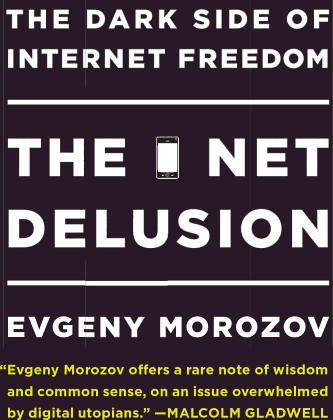
The Net Delusion: The Dark Side of Internet Freedom
by
Evgeny Morozov
Published 16 Nov 2010
Given the amount of research and technology money coming out of America’s defense and intelligence communities, it’s hard to find a technology company that does not have a connection to the CIA or some other three-lettered agency. Even though Google does not publicize this widely, Keyhole, the predecessor to Google Earth, which Google bought in 2005, was funded through In-Q-Tel, which is the CIA’s for-profit investment arm. That Google Earth is somehow a CIAFUNDED vehicle for destroying the world is a recurring theme in rare comments given by those working in security agencies of other countries. Lt. Gen. Leonid Sazhin of the Russian Federal Security Service was not just speaking for Russia when he expressed his frustration in 2005: “Terrorists don’t need to reconnoitre their target.
…
Nations are now arguing about whether Google Earth renders their borders in accordance with their wishes. Syria and Israel continue battling about how the contested Golan Heights territory should be listed in Facebook’s drop-down menus. Indian and Pakistan bloggers have been competing to mark parts of the contested territory of Kashmir as belonging to either of the two countries on Google Maps. The site had also been under attack for listing some Indian villages in the Arunachal Pradesh province, on the Indian-Chinese border, under Chinese names and as belonging to China. Cambodians, too, have been outraged by Google Earth’s decision to mark eleventh-century Preah Vihear temple, ownership of which was awarded to Cambodia in a 1962 court ruling, as part of Thailand.
…
FP Passport, Foreign Policy, December 31, 2009. blog.foreignpolicy .com/posts/2009/12/31/useless_democracy_promotion_efforts_theres _an_app_for_that. Khouri, Rami G. “When Arabs Tweet.” International Herald Tribune, July 22, 2010. Kingsbury, P., and J. P. Jones III. “Walter Benjamin’s Dionysian Adventures on Google Earth.” Geoforum 40, no. 4 (2009): 502-513. Kirkpatrick, Marshall. “Jordan Says It Will Begin Censoring Websites.” Read-WriteWeb , January 14, 2010. www.readwriteweb.com/archives/jordan_to_censor_websites.php. Klang, M. “Civil Disobedience Online.” Journal of Information, Communication & Ethics in Society 2, no. 2 (2008): 2.

Cities Are Good for You: The Genius of the Metropolis
by
Leo Hollis
Published 31 Mar 2013
While she ran out of supplies, she maintained her blog on Kenya politics until she decided she was no longer safe and left for South Africa. There, she posted updates and blogged on the possibilities of using Google Earth satellite imaging as a means to crowd-source stories. Within days, she had responses from other bloggers and engineers including Erik Hersman, David Kobia and Juliana Rotich and within weeks they had created the Ushahidi (Swahili for testament), and were coordinating reports of violence sent in by text or phone and then mapping them on an interactive Google Earth map. Ushahidi used the same complex network of telecommunications as the rioters in London and the protesters in Cairo to gather together real-time information.
…
I also look at other cities that have been in the news recently: the Fukushima nuclear plant that was damaged by the earthquake in March 2011; or I peer over Kabira, the slums outside Nairobi, where the shacks are so closely packed together that it is impossible to see where the streets and alleys wind through the neighbourhoods; finally, I click to the High Line in New York, and watch in wonder at how a channel of verdant green snakes through the city. Google Earth brings joy and fascination, but it can also be used to make a difference. In 2008 Clean Up The World started to use it to highlight places of particular crisis as well as show the impact of the International Clean Up Weekend. It is also being used to track the loss of the Antarctica ice cap, the depletion of the rainforest in Amazonia, measuring the largest oil spills in the world’s oceans13 as well as the extent of urban sprawl in cities like Houston and Phoenix. Google Earth is already having an unexpected impact on urbanism. In Dubai, islands are being designed to be seen from the air.
…
In Athens, in the aftermath of the Euro crisis, the Greek government has been using Google Earth to find out who has a swimming pool in their gardens and then checking this apparent wealth with their tax returns. This has resulted in a number of gardens being covered over in the city. During the Olympics, ‘Adizones’, ‘giant multisport outdoor zones’ sponsored by Adidas and offering a selection of gym equipment as well as dance and gymnastics, were built in public parks around London. From the air these projects clearly marked out the shape of the 2012 Games logo.14 The Palm Jumeirah, Dubai – the city designed to be seen from Google Earth Finally, in my laptop tour of the world, I type in the name of a city that does not even exist yet – Songdo – and am taken to a patch of bare ground to the west of Seoul, South Korea.
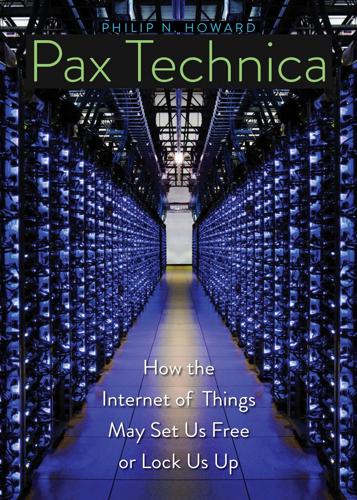
Pax Technica: How the Internet of Things May Set Us Free or Lock Us Up
by
Philip N. Howard
Published 27 Apr 2015
Communities in failed states seem to beget the most creative digital alternatives in governance. It’s a battle worth fighting, and if we lose there, we all lose in many ways. Finally, some rationality has to come to the use of export controls and information sanctions. Export controls on information technologies tend to have mixed effects. Tunisians used Google Earth to map torture centers. Yet Syrians couldn’t use Google Earth until late into their civil war, because it wasn’t licensed for export.38 Once people in authoritarian regimes have widespread access to new media, it becomes tough to take the technologies away. Mubarak, having faced the digital dilemma, drove more people into the streets of Cairo when he disconnected the country’s internet access.
…
“Light and Shady.” 35. http://www.fcc.gov/encyclopedia/universal-service. 36. “Www.africa.slow,” Economist, August 27, 2011, http://www. economist.com/node/21526937. 37. “Last Mile,” Wikipedia, accessed June 19, 2014, http://en.wikipedia.org/wiki/Last_mile. 38. T. C. Sottek, “Google Now Offers Google Earth, Picasa, and Chrome in Syria,” Verge, May 24, 2012, accessed September 30, 2014, http://www.theverge.com/2012/5/24/3041459/google-earth-picasa-chrome-syria. 39. Monk School of Global Affairs, Internet Filtering in a Failed State: The Case of Netsweeper in Somalia (Toronto: University of Toronto, February 2014), accessed September 30, 2014, https://citizenlab.org/2014/02/internet-filtering-failed-state-case-netsweeper-somalia/; Monk School of Global Affairs, O Pakistan, We Stand on Guard for Thee: An Analysis of Canada-Based Netsweeper’s Role in Pakistan’s Censorship Regime (Toronto: University of Toronto, June 2014), accessed September 30, 2014, https://citizenlab.org/2013/06/o-pakistan/. 40.
…
China was sending radiation experts to the disaster zone. So he started investigating with a team of undergraduate students. After three years of work, the investigation exposed a network of underground tunnels used by China’s Second Artillery Corps. The students translated thousands of pages of documents, studied Google Earth, scanned Chinese blogs, read military journals, and groomed their own contacts in China for information, producing a revised estimate of the number of nuclear weapons operated by that country’s military. Their work was the largest body of public knowledge yet published on China’s nuclear arsenal.

WikiLeaks and the Age of Transparency
by
Micah L. Sifry
Published 19 Feb 2011
Ory Okolloh, “Update Jan 7,” KenyanPundit, January 7, 2008, www. kenyanpundit.com/2008/01/06/update-jan-7. Laura Smith-Spark, “Google Earth Turns Spotlight on Darfur,” BBC News, April 11, 2007, http://news.bbc.co.uk/2/hi/africa/6543185.stm. Activists in Bahrain also used Google Earth to show their fellow citizens the palatial landholdings of the ruling family; the juxtaposition of these images against the more cramped residential spaces of working class Bahrainis helped drive turnout in the 2006 elections and swept a number of reformers into Parliament. William Wallis, “Google Earth spurs Bahraini equality drive,” Financial Times, November 24, 2006. Ory Okolloh, “Ushahidi.com,” KenyanPundit, January 9, 2008, www. kenyanpundit.com/2008/01/09/ushahidicom.
…
Okolloh’s blog became a hub of otherwise suppressed information, with Kenyan journalists and sources from 89 WIKILEAKS AND THE AGE OF TRANSPARENCY inside the divided political parties all sending her updates. “The disconnect between what I was hearing from my sources and what was happening in the media was very wide,” she recalls. Late the night of January 3, 2008, Okolloh posted another update on her blog, full of what she was hearing from all her sources. Two paragraphs stood out: Google Earth supposedly shows in great detail where the damage is being done on the ground. It occurs to me that it will be useful to keep a record of this, if one is thinking long-term. For the reconciliation process to occur at the local level the truth of what happened will first have to come out. Guys looking to do something—any techies out there willing to do a mashup of where the violence and destruction is occurring using Google Maps?

MacroWikinomics: Rebooting Business and the World
by
Don Tapscott
and
Anthony D. Williams
Published 28 Sep 2010
But instead of traversing through vast tracts of jungle in Indonesia or Brazil, they have been using a tool available to anyone with a PC and an Internet connection—Google Earth. The scientists are working with Google’s team to analyze satellite images that can shed light on the status of the world’s forests, without the need for expensive field studies.1 In fact, the idea over time is to gather together all of the earth’s raw satellite imagery data—petabytes of historical, present, and future data—and make it easily available through the Google Earth platform to anyone who cares to make use of it. The evidence accumulated to date is already helping scientists, governments, and conservationists to assess the scale of the deforestation problem on a global basis.
…
And thanks to the work of economists such as Nicholas Stern, we also know that protecting the world’s standing forests is one of the most cost-effective ways to cut carbon emissions and mitigate climate change.2 While free tools like Google Earth empower the world’s scientists and policy makers, they also make information that was once inaccessible and hard to understand available to the broader public. Indeed, by displaying that information in bold visual formats, these tools help communicate complex phenomena in a way that most laymen can easily grasp. Whether mapping the world’s oil spills, simulating the effects of sea-level rises, tracking mammals on the verge of extinction, or showing national per capita CO emissions, Google Earth, along with the data-crunching capabilities of Google’s server farms, provides an ideal platform on which to enhance our understanding of humanity’s impact on the biosphere.
…
They’ll be talking over the performance data at a management accountability meeting later in the day with Jeffrey Zients, the U.S. government’s new chief performance officer. Across town, the head of a D.C.-based government watchdog is preparing for her prime time media appearance by downloading exactly the same information. In the meantime she’s plotting trends on Google Earth and releasing new insights on her Twitter feed. Many employees find this new openness striking, even unnerving. And it’s true; the innovations Kundra is pursuing are genuinely remarkable at a time when most people associate government with waste, inefficiency, and graft. Where most governments build mainframes and buy expensive software, Kundra is encouraging federal agencies to use free Google services and open-source wikis for everything from word processing to performance measurement, to service improvement.

Everything Under the Sun: Toward a Brighter Future on a Small Blue Planet
by
Ian Hanington
Published 13 May 2012
The trouble with tar sands IF YOU WANT to be scared, you don’t need to watch a horror movie or read the latest Stephen King bestseller. Real terror can be found by simply firing up Google Earth, the computer program that allows users to look at satellite pictures of any place on the planet. By mousing over and zooming in, you can see what Alberta’s tar sands look like from space. It is not a pretty sight. In fact, it’s scary—and for good reason. A book by celebrated journalist Andrew Nikiforuk, Tar Sands: Dirty Oil and the Future of a Continent, explores what these grey spots on Google Earth mean to Canada’s environment and economy. It’s an important book, one that every Canadian should read to find out how the world’s largest energy project will affect us.
…
Googling under water THANKS TO AN initiative by Google, along with National Geographic, the BBC, and scientists and other partners from around the world, we’re starting to learn more about what lies beneath the oceans. Google has added the world’s oceans to its extensive Earth mapping. In a phone conversation with David Suzuki Foundation staff, John Hanke, director of Google Earth and Google Maps, admitted, “We had really overlooked two-thirds of the planet.” Partly because of prodding from oceanographer Sylvia Earle, the company embarked on a massive project as part of Google Earth 5.0 to map the oceans using sonar imaging, high-resolution and 3-D photography, video, and a variety of other techniques and content. Although the emerging picture is sometimes bleak, there’s a positive side.
…
The more we explore, the more fascinating things we find: strange and wonderful creatures, intricate corals, and ancient glass-sponge reefs. “Some of these treasures are being destroyed before we even know what’s there,” Earle said, adding that often as soon as people find out about an ocean resource, they exploit it. Part of the idea behind Ocean in Google Earth is to show people what we have and what we stand to lose if we don’t smarten up. “People will be aware of not only what’s there but what’s been lost,” Earle said. “People don’t seem to widely appreciate how important it is to protect the systems that give us life.” We can only hope this endeavour will lead to more concern for the state of the oceans and for the need to protect them.

Top Secret America: The Rise of the New American Security State
by
Dana Priest
and
William M. Arkin
Published 5 Sep 2011
As all this was going on, dive teams and Coast Guard boats patrolled the Potomac and Anacostia rivers while, overhead, layers of aircraft capped the largest protective bubble in the world: Air Force F-22 Raptor fighters and Air National Guard RC-26 surveillance aircraft flew above Customs and Border Patrol Blackhawk helicopters, while even higher, surveillance drones relayed real-time, full-motion video back to the dozens of stationary and mobile command centers that were lashed up with the military’s many geospatial Google Earth–like data feeds. Every single one of these military and law enforcement units had multiple backups, even the Colorado-based Northern Command,1 which had been established to defend the United States within its own borders after the 2001 terrorist attacks. And just in case its own headquarters were attacked, Northern Command kept the famous Cheyenne Mountain underground bunker on standby.
…
Its guardhouse is barely visible, but by looking carefully at the Federal Emergency Management Agency’s contracts for guard and facility maintenance services, Arkin had learned that the facility was quite large—90,000 square feet and under 75 acres, with a newly built helicopter pad, communications towers, and vent stacks. Olney, though, was far from the largest secret site. One source had told me that there was a lot of CIA activity in one particular rural northern Virginia community. On Google Earth, Arkin and I went through the secret locations in northern Virginia that were listed in his database. Within minutes we’d found what we were searching for: a massive complex on the top of a tree-covered mountain. It looked like it was undergoing construction, just as my source had claimed. I decided to take a look a few days later.
…
Its job was to analyze satellite and other intelligence images, to map Earth’s geography, and, most important, to provide an up-to-the-minute visual picture for war planners and military commanders on the ground. Once named the Defense Mapping Agency, it had expanded as the geospatial intelligence service for the entire government, from the intelligence community to the EPA. It was the government’s own Google Earth. Across the street, in an understated chocolate-brown business complex, I scribbled down all the corporate names I found on little signs on the office doors. One of them was named Carahsoft, a firm we hadn’t yet run across. Subsequent digging revealed it to be a leading intelligence agency contractor specializing in mapping, speech analysis, and data harvesting.

Paintwork
by
Tim Maughan
Published 28 Jul 2011
Instead she'd dropped a Post-it for him; a translucent slice of virtual A4 spinning slowly in the air at head height. He sighed and blinked at it, the note stopping its spin instantly to face him and just one word appearing on its surface: Starbucks. "Great" he muttered to himself, "but which fucking one?" He blinked at the Google Earth logo on the note's bottom right corner and a football-sized coffee bean materialised in the air next to it, followed by another identical one three metres away, and then half a second later another, and then another and another; so that within a few seconds a trail of them hung in the air, disappearing into the crowd of afternoon shoppers and snaking up the hill along Park Street.
…
Again, for as long as Paul could remember, Marcus had always tinkered and hacked away at any hardware or software he could get his hands on; making the games harder or easier, finding ways to cheat, finding – somehow – the online source code so that he could customise them. And not just games. When the hardware manufacturers and network providers wanted to augment-up Cuba and the paranoid government said no, together with a small group of fellow hackers he even set up Havana's first Spex AR space, from some thrown-together Google Earth data and strategically hidden, citywide, pirate radio style WIMAX routers. It would have been enough to have put him in a re-education centre for two years had he been caught, but the only people who ever knew about it loved Marcus – and the way he managed to feed their tech-lust cravings – too much to ever breathe a word.
…
All three of them pulled away, their mechs running in front of them, with his two wingmen veering off to his left and right, disappearing into the maze-like side streets to take up their standard flanking positions. If the Cubans had one advantage it was their inch-perfect knowledge of the playing field, and despite however many Google Earth simulations Kim's teams must have run he was convinced it would give them the edge. As he and Marcus powered towards Parque Central – this time with Alphonso running in front of the bike for maximum visibility – Paul was surprised to hear the synthetic booming of chain gun fire from his right.
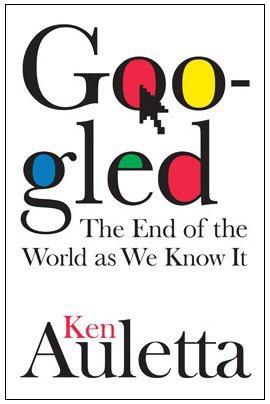
Googled: The End of the World as We Know It
by
Ken Auletta
Published 1 Jan 2009
This meant more dollars siphoned from traditional media, with the largest slice probably going to Google. And Google had started initiatives to sell advertising for television, radio, and newspapers, which could boost its market share. Google also introduced other services: Gmail, Google News, Google Earth, Google Maps, Google Video, Picasa for sharing digital photographs, Google Books to search every book ever published, Orkut, a social network site, or additional “cloud computing” applications such as Desktop or Docs. By 2008, Mel Karmazin was no longer alone in questioning Google’s intentions.
…
He went on to say that it was desirable for Google to diversify and that is “why we allocate 20 percent for adjacent areas such as Gmail and Google Desktop Search. The remaining 10 percent is saved for anything else, giving us freedom to innovate.” The letter cited some new products Google invented or acquired: Google Maps, which allowed users to map directions; Google Earth, which provided satellite images of the earth’s nearly sixty million square miles, allowing users to zoom in to search teeming Calcutta streets or war-torn Baghdad; Google Scholar, which allowed researchers to access academic papers and research; Google Video, which allowed users to search television programs; and Gmail.
…
They pledged to divert to this foundation one percent of Google’s profits, with three goals: to ascertain the quality of water and health care and other services country by country; to gather enough information to try to predict and prevent catastrophes, whether these be forces of nature or disease; and to make energy-renewable investments. Page and Brin sound more like social workers than hardheaded businessmen when they extol Google Earth as a vehicle to spot imminent disasters and offer to make “a gift” of this technology to disaster relief organizations. Google put up thirty million dollars to fund the X Prize Foundation’s Google Lunar X Prize, which would be awarded to the private team that designs the best robotic rover to traverse the moon’s surface and send high definition video images back to earth.
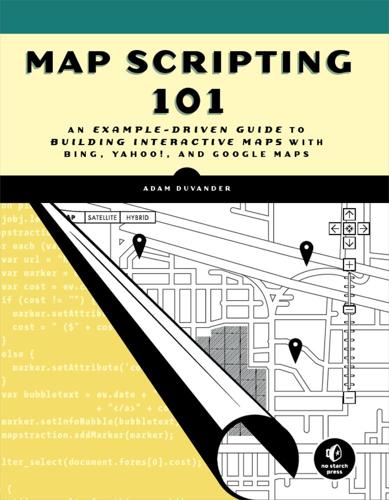
Map Scripting 101: An Example-Driven Guide to Building Interactive Maps With Bing, Yahoo!, and Google Maps
by
Adam Duvander
Published 14 Aug 2010
In Chapter 7 you'll learn several simple ways to access your user's location with various degrees of accuracy. I'll cover using the geolocation standard, falling back on IP address data, and integrating with location sharing services. In Chapter 8 you'll focus on common location data formats used on the Web. You'll learn to parse GeoRSS, Google Earth's KML, and XML output from most GPS devices. In Chapter 9 it's time to go server side. You'll get a crash course in PHP and MySQL, two technologies provided by many web hosts. We'll then use these languages for common location tasks, such as finding the closest points from your own database. In Chapter 10 you'll put it all together with five fun mashups.
…
In this section, I've shown how they can be used in RSS and Atom, the two most popular web feed formats. Also, you've learned how, in one line of Mapstraction code, to layer your GeoRSS feed on your map. To see an example of digging into GeoRSS, read #70: Display Recent Earthquakes Worldwide in #70: Display Recent Earthquakes Worldwide. #55: Use KML Google Earth, a three-dimensional geographic browser, popularized KML as a language to share geo-data. The acronym KML stands for Keyhole Markup Language, named after the company (acquired by Google) who invented it. Nevertheless, KML is an open standard based on XML. KML stores single locations, lists of points, and polygon shapes, among other features.
…
> ❷ <kml xmlns="http://www.google.com/earth/kml/2"> <Document> ❸ <Placemark> ❹ <name>Eiffel Tower</name> ❺ <description>The most recognizable place in Paris</description> <Point> ❻ <coordinates>2.29293460923931,48.85819570061303,0</coordinates> </Point> </Placemark> </Document> </kml> As you put your KML files together, you can view them in Google Earth or on the Google Maps website, as long as the KML is accessible on the web. Try viewing this example at http://maps.google.com/?q=http%3A//mapscripting.com/example.kml. Now let's examine what's inside that example KML file. As with every XML file, a KML file starts with the XML declaration ❶.

Order Without Design: How Markets Shape Cities
by
Alain Bertaud
Published 9 Nov 2018
Figure 3.7 Distance between buildings in China, determined by the angle of the sun on the winter solstice. Figure 3.8 The design of buildings in a block in Chandigarh (left) and Brasília (right). Sources: Topographical maps with built-up areas from Department of Urban Planning Chandigarh Administration, 2005, updated with the help of Google Earth satellite imagery, 2008. Figure 3.9 Pudong: Shanghai’s new financial center. Figure 3.10 The design and construction of roads and subway links to Pudong, 1992 and 2013. Figure 3.11 Relationship between population, land, and floor space consumption. It is assumed that prices are set by market supply, and demand/supply are constrained by topography and other variables.
…
Figure 4.12 Built-up area and premier cru vineyards, Beaune. Figure 4.13 Profile of urban and agricultural land prices along the AB axis, Beaune. Figure 4.14 Limit of urbanization, taking into account the cost of land development. Figure 4.15 Existing villages east of the immediate expansion area of Luoyang, China. Source: Vectorization of Google Earth Images, 2015; population estimates based on village surveys. Figure 4.16 Informal subdivision at the fringe of urbanization in Mexico City (left image) and Surabaya, Indonesia (right image; same scale for both images). Figure 4.17 Hanoi existing land use in 2010 and Hanoi’s capital master plan for 2030.
…
I wrote several reports on housing, densities, and transport recommendations regarding the development of Sana’a, but I am convinced that tracing streets—the task of separating public space from private space in advance of urban development—was certainly the activity that had the highest rate of return for the urbanization of the city. Looking now at a Google Earth image of Sana’a, I can still see some of these streets, now asphalted and densely lined with buildings. Planners Attempt to Shape Cities beyond Designing Street Layouts For some planners, however, limiting planning to the design of a street layout is not ambitious enough. Although the quantity of land allocated to different urban private uses is more appropriately determined by markets, planners believe they can significantly improve it through design.
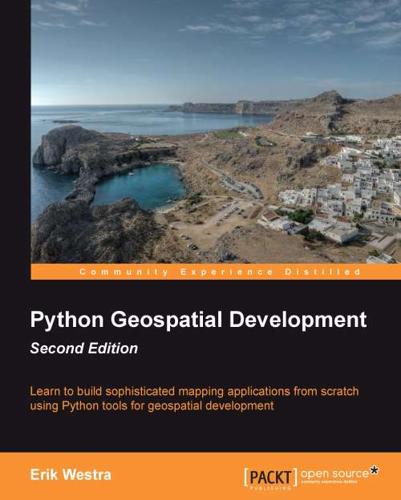
Python Geospatial Development - Second Edition
by
Erik Westra
Published 23 May 2013
Obtaining World Borders Dataset The World Borders Dataset can be downloaded from: http://thematicmapping.org/downloads/world_borders.php This website also provides further details on the contents of the dataset, including links to the United Nations' website where the region and subregion codes are listed. Sources of geospatial data in raster format One of the most enthralling aspects of programs such as Google Earth is the ability to "see" the Earth as you appear to fly above it. This is achieved by displaying satellite and aerial photographs carefully stitched together to provide the illusion that you are viewing the Earth's surface from above. While writing your own version of Google Earth would be an almost impossible task, it is possible to obtain free satellite imagery in the form of raster format geospatial data, which you can then use in your own geospatial applications.
…
Open source tools, where they were available, were obscure and hard to use. What is more, everything ran on the desktop—the concept of working with geospatial data across the Internet was no more than a distant dream. In 2005, Google released two products that completely changed the face of geospatial development. Google Maps and Google Earth made it possible for anyone with a web browser or a desktop computer to view and work with geospatial data. Instead of requiring expert knowledge and years of practice, even a four-year old could instantly view and manipulate interactive maps of the world. Google's products are not perfect: the map projections are deliberately simplified, leading to errors and problems with displaying overlays; these products are only free for non-commercial use; and they include almost no ability to perform geospatial analysis.
…
The Open Geospatial Consortium, often abbreviated to OGC (http://www.opengeospatial.org) is an international standards organization which aims to do precisely this: to provide a set of standard formats and protocols for sharing and storing geospatial data. These standards, including GML, KML, GeoRSS, WMS, WFS, and WCS, provide a shared "language" in which geospatial data can be expressed. Tools such as commercial and open source GIS systems, Google Earth, web-based APIs, and specialized geospatial toolkits such as OGR are all able to work with these standards. Indeed, an important aspect of a geospatial toolkit is the ability to understand and translate data between these various formats. As GPS units have become more ubiquitous, it has become possible to record your location data as you are performing another task.

The Age of Surveillance Capitalism
by
Shoshana Zuboff
Published 15 Jan 2019
(You will recall that Hanke had founded the CIA-funded satellite mapping company, Keyhole, and after Google’s purchase he led its transformation into Google Earth.) He told a reporter that it was all simply part of a “cycle of people understanding exactly what it is and what it isn’t and what they shouldn’t really be concerned about”—in other words, the dispossession cycle. Google Earth was also under fire, blamed for aiding a deadly terrorist attack in Mumbai, but Hanke insisted that the debate over Google Earth or Street View had “mostly died off” in “the West.” He cleverly equated any resistance to Google’s incursions with the anti-freedom-of-expression interests of authoritarian governments and their “closed information societies.”35 This would become a standard rhetorical device for Google and its allies as they executed their offense.
…
Google extended its services for another year at no cost in April 2004.76 In 2003 Google also began customizing its search engine under special contract with the CIA for its Intelink Management Office, “overseeing top-secret, secret and sensitive but unclassified intranets for CIA and other IC agencies.”77 Key agencies used Google systems to support an internal wiki called Intellipedia that allowed agents to share information across organizations as quickly as it was vacuumed up by the new systems.78 In 2004 Google acquired Keyhole, a satellite mapping company founded by John Hanke, whose key venture backer was the CIA venture firm, In-Q-Tel. Keyhole would become the backbone for Google Earth, and Hanke would go on to lead Google Maps, including the controversial Street View Project. In 2009 Google Ventures and In-Q-Tel both invested in a Boston-based startup, Recorded Future, that monitors every aspect of the web in real time in order to predict future events. Wired reported that it was the first time the CIA-backed venture firm and Google had funded the same startup and that both firms had seats on Recorded Future’s board of directors.79 In the decade that followed 9/11, surveillance exceptionalism was also expressed in the flattery of imitation, as the NSA tried to become more like Google, emulating and internalizing Google’s capabilities in a variety of domains.
…
My house, my street, my neighborhood, my favorite café: each is redefined as a living tourist brochure, surveillance target, and strip mine, an object for universal inspection and commercial expropriation. Google had already taken everything on the web, but Street View and Google’s other mapping operations, Google Maps and Google Earth (the company’s 3-D view of the world using satellite and aerial imagery), announced an even-more-ambitious vision. Everything in the world was to be known and rendered by Google, accessed through Google, and indexed by Google in its infinite appetite for behavioral surplus. The presumption is that nothing is beyond Google’s borders.
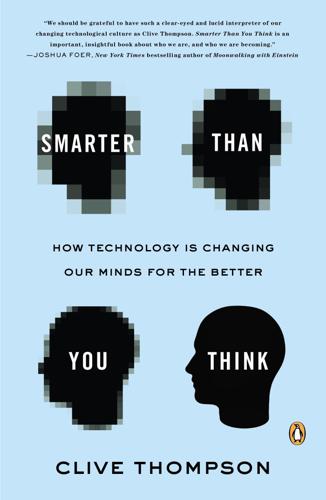
Smarter Than You Think: How Technology Is Changing Our Minds for the Better
by
Clive Thompson
Published 11 Sep 2013
Several other Google projects have leveraged different types of collective effort. When I visited the offices of Google Earth, its product manager, Peter Birch, booted up the software and zoomed in to Red Square in Moscow. As we approached street level, I could see hundreds of buildings appear, perfectly modeled in 3-D, including gorgeously rendered versions of St. Basil’s Cathedral, with its colorful, bulb-topped towers. Google didn’t design those buildings; fans of 3-D modeling did. Google simply made it easy to contribute, releasing free Building Maker software and an online tool for submitting your building for inclusion in Google Earth. If it’s accepted, Google includes your user name in the model, so people can know who made it and see all your other buildings, too.
…
During the upheaval after the rigged Kenyan election of 2007, she began tracking incidents of government violence. People called and e-mailed her tips, and she posted as many as she could. She wished she had a tool to do this automatically—to let anyone post an incident to a shared map. So she wrote about that: Google Earth supposedly shows in great detail where the damage is being done on the ground. It occurs to me that it will be useful to keep a record of this, if one is thinking long-term. For the reconciliation process to occur at the local level the truth of what happened will first have to come out. Guys looking to do something—any techies out there willing to do a mashup of where the violence and destruction is occurring using Google Maps?
…
“Now we have an amazing amount of buildings all over the world,” Birch told me, hovering his mouse over different buildings to show who’d crafted them. “And who knows where these people are and where they live? But that’s the kind of cool thing about it. People are able to communicate through this tool, where they can share all this information.” Google Earth’s relative openness—and its value as a creative showcase for one’s 3-D-modeling skills—turned out to be a tempting invitation to contribute, even though Google is clearly a for-profit entity. (In 2013, Google launched an even faster way of generating buildings—by using satellite photo data—and retired the building-maker tool, though it kept many of the buildings created by contributors.)
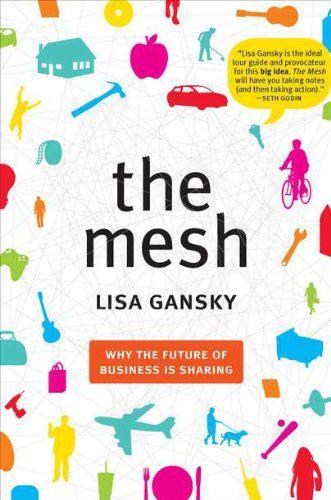
The Mesh: Why the Future of Business Is Sharing
by
Lisa Gansky
Published 14 Oct 2010
Google Maps has become a crucial, widely used share platform for many businesses, consumers, and nonprofit organizations. The maps provide location data—such as directions to the nearest bike-sharing outlet—that are crucial to many Mesh businesses. Google Earth is another share platform, continually improved by users through network services. And information available on Google Earth is often the basis for coordinated real-time action in the physical world. Jane Goodall, for example, uses the platform with the company’s Android phone to monitor forests and wildlife. Information-enabled, user-influenced share platforms and community trust-building are core features of the Mesh.
…
See Product design double bottom line of energy cooperatives government initiatives for green business practices and profits green criteria and purchasing decisions Mesh companies purchasing decisions, green drivers of recycling and reuse services sustainable design upcycling waste management, natural approach to Etsy Expedia Expensure Expert-advice sharing, Mesh companies for Facebook Firefox, community input First mover advantage Flash branding Flextronics, Mesh strategies Florida, Richard Folcia, Federico Food co-ops, Mesh companies Freepeats FreshlyBranded FriendlyFavor Friendster Full Mesh model Gardening, Mesh companies Geek Squad General Electric Get Satisfaction Global Green Godin, Seth Goodall, Jane GoodGuide Goods swaps, Mesh companies Google Google Earth Gordon, Chuck Green initiatives. See Environment management Green Note Griffith, Saul Groupon Hackerspaces Hagel, John Health and fitness, Mesh companies Heirloom design, versus disposable Hilton, Conrad Hobbies, Mesh companies Hollrr Home exchange Homeexchange.com Mesh companies partnership possibilities Home improvement, Mesh companies Home ownership, rejection of Homer, Chris Hub Huizenga, Wayne Humanitarian projects, Mesh companies Hybrid autos Income and profits double bottom line generation from the Mesh and ownership model partnership deals transaction fees Influencers Information revolution In Good Company Instructables Intellectual property, shared Internet companies, development, stages of Inventory, pick-and-pack facilities, use of iPod iTunes Jewelry rental, Mesh companies JGoods Johnson & Johnson Kashless Kennedy, Robert, Jr.
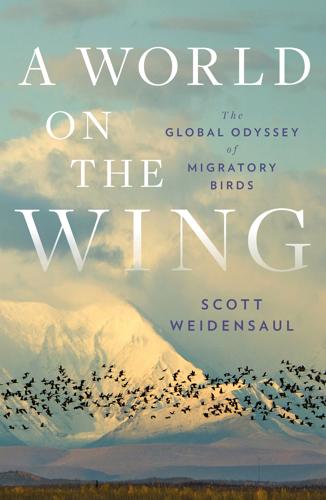
A World on the Wing: The Global Odyssey of Migratory Birds
by
Scott Weidensaul
Published 29 Mar 2021
“This used to be a favorite roost spot for waders,” Jing said sadly, showing me a photograph of the same area in 2012, with thousands of birds roosting quietly in wide expanses of shallow water. Closer to the seawall, we found active fish ponds roofed over with solar panels—the “horror scenario” Theunis had warned of, since it renders even this marginal habitat useless as a high-tide roost. (Once home, where my access to Google Earth was no longer blocked by the Chinese government, I was able to measure the extent of the aquaculture area from satellite images, on which the ponds look like densely packed cells under a microscope—more than 12,000 acres, parceled out into thousands of impoundments, along with a 1,000-acre reservoir Jing said would be used for watersport recreation.)
…
Like a Big Year, in which birders compete to find out who can see the most species within a geographic region like a state or continent, Fantasy Birding is all about racking up the biggest list, driven by eBird data. And if that seems esoteric, consider that some birders have compiled a list, now totaling more than a thousand species, of birds inadvertently photographed by the Google Earth Street View camera cars and later spotted online by exceedingly patient enthusiasts. Five HANGOVER You are a Kirtland’s warbler, the newly risen sun shining off your pale yellow breast and illuminating hundreds of acres of low, scrubby jack pine forest in every direction. Juncos, hermit thrushes, and savannah sparrows sing from the thickets, an upland sandpiper wolf whistles from the top of a dead snag, but you spare them not a thought.
…
But appearances aside, we’d been repeatedly warned to be off the road before dark, given the risk of bandits and armed insurgents in this remote and troubled corner of northeast India, not far from the Myanmar (Burmese) border. We had no idea how much farther ahead lay our destination, a village known as Pangti, or whether we’d actually reach it before nightfall. The cratered morass of a road we were on didn’t even show up on any of the maps of northeast India we had, and weeks earlier, staring at Google Earth satellite images of the area, I could only trace its path sporadically and with difficulty as it played peekaboo beneath the canopy of trees. Worse, the skies around us were largely empty of birds—which was more than a typical birding-trip disappointment. My colleagues and I had come here, to the state of Nagaland, in search of what’s reputed to be the single greatest gathering of birds of prey on the planet.
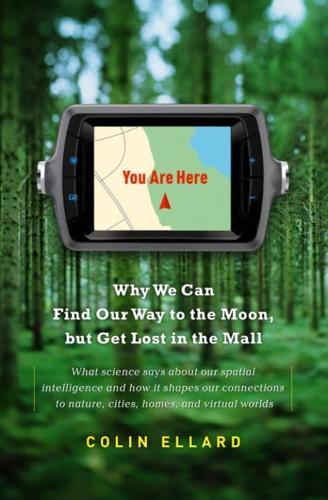
You Are Here: Why We Can Find Our Way to the Moon, but Get Lost in the Mall
by
Colin Ellard
Published 6 Jul 2009
When they return to him, the equipment they have worn provides Nold with a comprehensive record of their travels, their times of movement and lingering, and, most interesting of all, their emotional state at each step along the way. Though Christian Nold’s bio-mapping initiative is designed more as a participatory performance piece than as a scientific endeavor, his results have much to say about human engagement with urban spaces. Overlaid on satellite photographs of streetscapes borrowed from Google Earth, the bio-maps show a cartographic sculpture of how the city feels. High arousal can be found at locations of stress (busy street crossings, for example) but also where the attention and interest of the walker has been engaged by a beautiful architectural facade, a busy market, or an interesting shop.
…
Today, the evolution of remarkably accurate and tiny GPS receiver chips (about the size of a pinkie fingernail) has meant that these signals are widely available in a variety of consumer products, including laptop computers, pocket computers, cell phones, cars, and digital cameras. The wide availability of GPS-enabled devices, along with geographic software that is useful for professionals but user-friendly enough for casual users, has led to sharp interest in tagging objects with information about location. Google’s stunning free software Google Earth, which enables users to view everything from a snapshot of the entire globe to detailed street-level views of major urban centers, has led to a craze for what some refer to as “geo-everything.” At first blush, geo-coding, in which our activities, snapshots, phone calls, and blogs are tagged with precise latitude and longitude information, might seem like something that would interest only a thin segment of the technophile population, but there is something compelling about connecting the moments, thoughts, and glimpses of our lives to actual rock-and-brick locations.
…
Although we may have left some of the wayfinding skills we share with other animals in ancient dust, we still sometimes seem to respond to the call of old biological circuits that remind us of the importance of place. The current fascination with GPS and geo-coded data is one sign of an inner sense of the importance of the wheres of our lives. Michael Jones, the chief technical officer of Google and the developer of geospatial applications such as Google Earth, describes a romantic fascination with place-based computer data that draws hundreds of millions of users to such applications first to play and explore but ultimately to learn and to draw connections between themselves and the real places of the world.1 The best example of this is the Crisis in Darfur project, a joint effort between Google and the United States Holocaust Museum, in which virtual visitors can zoom over villages burned to the ground by Sudanese soldiers.12 Viewers can interact with villagers one on one by flying in close to see and hear firsthand accounts of atrocities from victims and their families.
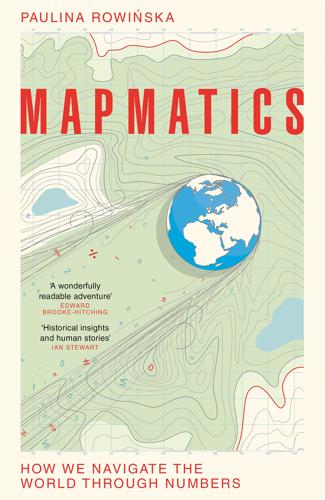
Mapmatics: How We Navigate the World Through Numbers
by
Paulina Rowinska
Published 5 Jun 2024
And that on the other, when we apply the theory of probability to the map, we can optimize our search. Maps and maths, together, save lives. LIKE MANY MAP NERDS, I’ve spent countless delightful hours discovering the world through Google Earth. It feels reassuring to see that after centuries of cartographic developments, we finally have a complete map of both the continents and the oceans – or do we? As it turns out, we know less about the bottom of our oceans than about the surface of Mars. Google Earth’s images don’t represent direct measurements of the ocean depths, they represent satellite data – and these data are much less precise than we’d wish. For as much as 80 per cent of the ocean floor, this is the best information we have, making the vast majority of the Earth’s surface a true terra incognita.
…
So, satellite-based measurements of differences in sea level let us map large landforms on the ocean floor. These imprecise data make up most of what we see on ocean parts of Google Earth. Because radar signals quickly die off in water, mapping the bottom of the ocean is much harder than mapping dry land even on other planets. While we’ve mapped most of the surfaces of the Moon, Venus and Mars with a resolution of at least 100 metres, most of the seabed’s maps have a resolution of only a few kilometres. This means that Google Earth and similar maps show only features with at least one dimension exceeding a few kilometres, omitting anything smaller. Precise maps of the ocean floor are crucial for reasons beyond the safety of tens of thousands of ships large and small crossing the oceans every day.
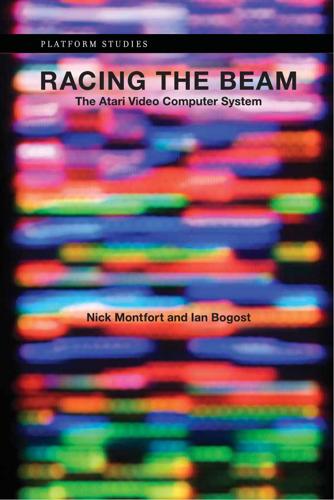
Racing the Beam: The Atari Video Computer System
by
Nick Montfort
and
Ian Bogost
Published 9 Jan 2009
Easter eggs can be traced back at least to the early 1970s, when the TOPS-10 operating system on the PDP-10 was programmed to respond to the command “make love” with “not war?”12 More recent Easter eggs are much more sophisticated. One recent version of Microsoft Excel contains a hidden flight simulator game, as does Google Earth. Adventure contained the first Easter egg known to appear in any video game. The hidden message itself is reasonably simple. Warren Robinett signed his game “Created by Warren Robinett” using letters running vertically down the center of the screen (see figure 3.4). Accessing the Easter egg is less simple.
…
Ultima I: The First Age of Darkness. Apple ][. Origin Systems, 1980. Garriott, Richard (as Lord British). Ultima IV: Quest of the Avatar. Apple ][ and many other home computers and consoles. Origin Systems, 1985. General Computing Corporation. Ms. Pac-Man. Distributed by Bally Midway, 1982. Google. Google Earth. Web and downloadable application with video game Easter egg. 2004–present. Gremlin. Blockade. Arcade. 1976. Hasboro Interactive. Atari Arcade Hits: Volume 1. Programmed and produced by Jeff Vavasour. Windows. 1999. [164] Higinbotham, William. Tennis for Two. Developed at the Brookhaven National Laboratory. 1958. id Software.
…
See Cartridges (VCS); specific video games Game developers, 60–61, 116. See specific game developers “homebrew” programmers, 142 teams of, 101–102 Garriott, Richard, 61 General Computing Company, 77 General Foods, 124 General Instruments, 10, 22 [giantJoystick], 143 The Godfather, 51 Goldberger, Jim, 116 Google Earth, 59 Gorf, 96 Grand Prix, 106, 107, 108, 112 Grand Theft Auto series, 4, 113, 128 Gran Trak 10, 21, 22 Green, Chris, 66 Grubb, Bill, 116 Grusin, Richard, 145–146 Half-Life series, 5, 51 Halloween, 128 Index Handheld electronic games, 121–122 Haunted House, 6, 59, 110, 111, 131–132 High-definition televisions (HDTVs), 141 High score list, 86–87 Higinbotham, Willy, 8, 9 Home Pong.
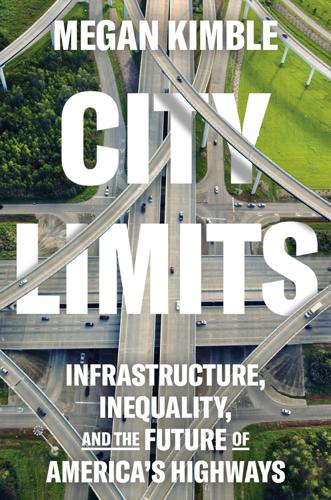
City Limits: Infrastructure, Inequality, and the Future of America's Highways
by
Megan Kimble
Published 2 Apr 2024
“And then he said, to make myself clear, would you do this?” “I saw that Akron has a project that they’re trying to get a grant for,” Steve says. “The Innerbelt. Do you know about this?” He swivels his chair around to face his desktop computer and pulls up Google Earth, zooming into a swath of highway north of Akron’s downtown. “Look at all the traffic,” he says, sardonic. The road, as captured by Google Earth’s satellite, has no cars on it. “It’s like the Inner Loop in Rochester. When I saw it in person, I asked if it was open,” Beth says, staring down at her laptop. “Look at this.” She reads the headline of an article published in the Beacon Journal: “The Failed Akron Innerbelt Drove Decades of Racial Inequity.”
…
When she had first moved abroad, after graduating with a master’s degree in information technology from the University of Houston, she was in her early twenties and wanted to see the world. But as she approached thirty, she grew tired of living out of a suitcase and finding spiders in her twin bed. She wanted to put down roots. So whenever she had a free moment, she looked for land. Sitting at her desk in Iraq, inside the reinforced walls of an Air Force base, she scrolled Google Earth, moving methodically up and down streets. She’d grown up in southwest Houston, near the Astrodome, but she wanted to live somewhere central. Eventually, she settled on the Fifth Ward, a quiet, historically Black neighborhood northeast of downtown. She bought a parcel of land, a small lot surrounded by trees on the corner of Nance and Grove Streets, and started designing her dream house from the ground up.
…
Just beyond, a cleared stretch of dirt sweeps through the frame, the bulldozed land stripped of any former habitation. “It looks like a bomb went off,” Steve says. “I can’t believe there was a day where people were like, you know what we should do? Tear down all the businesses and houses around our downtown. That seems smart. Let’s do that,” Beth says. Steve turns back to the Google Earth image. “They’ve got an awesome new baseball stadium downtown,” he says, scrolling along the Innerbelt’s trajectory. “They should tear down the whole thing.” When Coalition for a New Dallas launched its campaign to remove I-345 in 2013, Steve walked around the Smart Growth America office with his laptop, showing everyone the website.
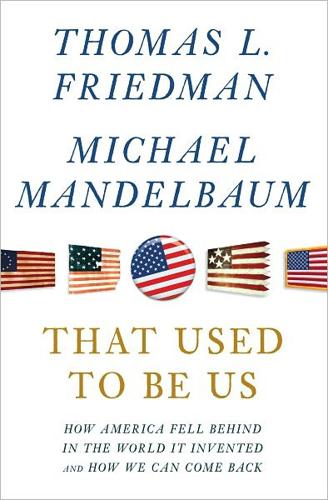
That Used to Be Us
by
Thomas L. Friedman
and
Michael Mandelbaum
Published 1 Sep 2011
“Mahmood, who lives in a house with his parents, four siblings and their children,” the paper reported, “said he became even more frustrated when he looked up Bahrain on Google Earth and saw vast tracts of empty land, while tens of thousands of mainly poor Shiites were squashed together in small, dense areas. ‘We are 17 people crowded in one small house, like many people in the southern district,’ he said. ‘And you see on Google how many palaces there are and how the al-Khalifas [the Sunni ruling family] have the rest of the country to themselves.’ Bahraini activists have encouraged people to take a look at the country on Google Earth, and they have set up a special user group whose members have access to more than 40 images of royal palaces.”
…
Bahraini activists have encouraged people to take a look at the country on Google Earth, and they have set up a special user group whose members have access to more than 40 images of royal palaces.” Nearly five years later, Google Earth images helped to fuel a revolution in Bahrain and other repressive Arab states. The first story tells us how fast and far the network of information technologies that are driving globalization has expanded, just in the last five years. Every day the world’s citizens, governments, businesses, terrorists—and now mountaintops—are being woven together into an ever tightening web, giving more and more people in more and more places access to cheap tools of connectivity, creativity, and collaboration. The second story tells us that all this connectivity is enabling a whole new category of workers to join the global marketplace.
…
Friedman, Milton Froome, Nia Frugal Superpower, The (Mandelbaum) fuel cells Fung, Victor G Galileo Gallup polls Gates, Bill gay rights General Electric General Motors Georgetown University Georgia Gerencser, Mark Germany; Nazi; renewable energy in Gerry, Elbridge Gerrymandering (documentary) Gettysburg, battle of Gibbs, Robert GI Bill of Rights Gilbert and Sullivan Gingrich, Newt Gleason, Jackie Global Achievement Gap, The (Wagner) globalization; challenges of; climate change and; free-market economics and; jobs and; merger of IT revolution and; price pressures from Global Talent Index global warming, see climate change Godfather, The (movie) Goldie, Daniel Goldin, Claudia Goldman Sachs Gooding, Cuba, Jr. Google; Earth; Maps Gore, Al Government Accounting Office Graham, Lindsey Granholm, Jennifer Grant, Ulysses S. Grantham, Jeremy Gray, C. Boyden Great Depression Greatest Generation Great Recession Great Teachers and Leaders Act (Colorado; 2010) Greece Green, Harold H. Greenspan, Alan Greenville (South Carolina) Greer, Ken Grinnell College Grohl, Dave Gross, Bill gross domestic product (GDP) Gupta, Deepa Gutenberg printing press H Haiti Haizlip, Nagga Hamilton, Alexander H&R Block Hanushek, Eric A.

The Allotment Chef: Home-Grown Recipes and Seasonal Stories
by
Paul Merrett
Published 3 Sep 2014
However, following a boozy New Year’s Day lunch, MJ has the bright idea of logging on to Google Earth and inputting the coordinates of Blondin so we can enjoy a virtual visit. The aim is to show our friends where we (currently don’t) spend our Sunday afternoons. It works a treat. The entire area is pictured perfectly via satellite, with bountiful vegetable patches paying homage to the Earth’s face, though with one shocking discovery – our plot is featured only as the barren wasteland we inherited some eighteen months ago. I can’t believe that Google Earth is so behind the times and I decide to email Google to demand an updated image forthwith!
…
No problem. We at IPlot will get them dug in. For the specialist gardener there is the whole range of obscure vegetables to enjoy with just the simple click of a button. Salsify, artichokes, sea kale and red carrots will all be available for immediate download. And with coordinates provided by Google Earth you can tune in and watch your garden grow. One click of a button and out rushes some chap with a watering can. You can tend your virtual plot while down the pub, on the train or even while on holiday … OK, so I’ve overdone this digging thing lately. What I need is a night off. I have arranged to meet some friends, most of whom are chefs, for a quick beer.

Data Action: Using Data for Public Good
by
Sarah Williams
Published 14 Sep 2020
These communities also use their networks to send the insight they find in the data to broad groups. According to Dosemagen, the team's work also made an impact by exposing conditions on the ground to wider audiences. “News outlets including the New York Times, the Boston Globe, ABC, and CNN used the images in their stories. Lawyers requested copies for litigation. Google Earth posted the group's maps on their websites.” 39 Dosemagen referred to this practice as “community science.” Instead of answering a researcher's questions, “Community science empowers ordinary people to ask their own scientific questions and follow through with data collection and analysis. The process is as much about science as it is about education, community building, and curiosity.” 40 The collaboration that started over the oil spill launched the nonprofit Public Lab, which refers to itself on its website's homepage (publiclab.org) as a community to investigate environmental concerns by developing do-it-yourself (DIY) techniques and tools.
…
,” Responsible Data (blog), accessed July 28, 2019, https://responsibledata.io/what-is-responsible-data/. 28 This group includes the Center for International Earth Science Information Network (CIESIN), The Earth Institute, Columbia University, City University of New York (CUNY) Institute for Demographic Research (CIDR), The Connectivity Lab at Facebook / Internet.org, ESRI, German Aerospace Center (DLR), European Commission—Joint Research Centre (JRC), ImageCat, Inc., Oak Ridge National Laboratory (ORNL), U.S. Census Bureau, WorldPop, Bill & Melinda Gates Foundation, Google Earth Engine, United Nations Committee of Experts on Global Geospatial Information Management, United Nations Population Division, United Nations Population Fund (UNFPA), and The World Bank. 29 Tobias Tiecke, “Open Population Datasets and Open Challenges—Facebook Code,” n.d., https://code.fb.com/core-data/open-population-datasets-and-open-challenges/. 30 Ibid. 31 Shota Iino et al., “Generating High-Accuracy Urban Distribution Map for Short-Term Change Monitoring Based on Convolutional Neural Network by Utilizing SAR Imagery,” in Earth Resources and Environmental Remote Sensing/GIS Applications VIII, vol. 10428, 2017, 1042803. 32 Interview with Joe Schumacher of CIESIN, March 2018. 33 Ibid. 34 Ibid. 35 Interview with Holly Krambeck, Transportation Specialist World Bank, phone call, August 2018. 36 World Bank, “Open Traffic Data to Revolutionize Transport,” December 19, 2019, http://www.worldbank.org/en/news/feature/2016/12/19/open-traffic-data-to-revolutionize-transport. 37 Ibid. 38 World Bank, “World Bank Group and GSMA Announce Partnership to Leverage IoT Big Data for Development,” February 26, 2018, http://www.worldbank.org/en/news/press-release/2018/02/26/world-bank-group-and-gsma-announce-partnership-to-leverage-iot-big-data-for-development. 39 Ibid. 40 Robert Kirkpatrick, “A New Type of Philanthropy: Donating Data,” Harvard Business Review, March 21, 2013, https://hbr.org/2013/03/a-new-type-of-philanthropy-don. 41 Ibid. 42 Vincent D.
…
See also specific applications Geography of Buzz project 115, 119, 120 Geotagged messages 121–122 Gerrymandering 5–8 Getty Images 120 bias in data and 114–120 database of 114, 117, 134 for Geography of Buzz project 116 Ghana 200, 203 Ghost Cities project 96–101, 103, 104, 108, 112–114, 217–219 in Chengdu, China 105 drones and 104, 106 photos of underused developments found 107 screenshot of data 110 user interacting with website 111 GIScorps 83 Gitelman, Lisa xii Glaeser, Edward L. 98 Glass, James 42 Global Design Exposition, New York University 67 Global Resource Center for the Development of Informal Transit Data 155 Global Science Research (GSR) 91 Global System for Mobile Communications (GSMA) 207 Goad Fire Insurance Plans (London, England) 14 Goldsmith, Stephen 47 Goldsmiths, University of London 68 Goodchild, Michael 54 Google 94, 130–131, 188, 193 augmented reality navigation tool 190, 190 data collection and 189 Google Assistant 94 Google Earth 71 Google Flu Trends (GFT) 130–131, 134, 215 Google Maps 54–55, 69, 95, 146 Google Maps transit directions 77, 149 Google Purchases 94 Sidewalk Labs 47 Waymo (autonomous vehicle program) 189 Govern, Maureen 197 Government(s). See also specific countries collection of data from citizens 78–79 protection from surveillance by xix release of data and 69 GPS data for location 52, 80, 204 Grab Taxi 204, 205, 206 Gray Area 85 Great Britain 14, 91.
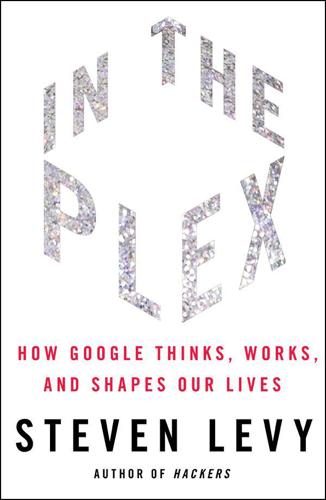
In the Plex: How Google Thinks, Works, and Shapes Our Lives
by
Steven Levy
Published 12 Apr 2011
“We thought it was too fundamental to let somebody else control it,” says Eric Schmidt. So Google bought it, changed the business model from a $1,000-a-year subscription to free, and integrated it into its Google Maps application—and into its mirror world. By 2009, 300 million people routinely peered down on the earth from space via Google Earth. ▲ Google launched its Knol project in 2008, when the head of search engineering, Udi Manber, an aficionado of New Yorker–style cartoons, found unsatisfactory results for a query on that magazine’s wry artist Peter Arno. He began thinking of a project that would encourage people with expertise on a subject to create online encyclopedia-style articles on their specialties or just things they knew a lot about.
…
By the end of the next day, the Google team published a detailed interactive snowstorm map that aggregated information from dozens of different sources—things like news, weather reports, airport closures, and road status. It was wildly popular, and Google did a variation on other holidays. When a major earthquake hit China, the Googlers combined the system with Google Earth to bring in satellite images. Google provided the Chinese government information it had not gathered on its own. The government actually presented Google with an award for its efforts. By 2009, Google was the market leader in maps. But arguably the most important project at Google was the Pinyin Input Method Editor (IME), a system that sped up and streamlined the often awkward task of producing Chinese-language ideographs on a computer keyboard.
…
One product in particular, however, had already emerged as Google’s most troublesome, almost a symbol for the disconnect between Google’s goals and the now-global concerns regarding Google’s intrusiveness. That was Google Street View, an outgrowth of Google Maps. Its purpose was to show users what a location looked like as if they were teleported into the physical realm and plopped on the ground in front of the address they were searching for. The feature was of a piece with less commercial Google Earth additions such as Google Moon, Google Mars, and Google Sky. Unlike their earthbound counterparts, those couldn’t be easily monetized—when virtually navigating the moon and the constellations, one is unlikely to be directed to the nearest dry cleaning or fast-food establishment—but they did fit into Google’s bigger vision as the dominant repository of not just the world’s information but the universe’s.

Atomic Accidents: A History of Nuclear Meltdowns and Disasters: From the Ozark Mountains to Fukushima
by
James Mahaffey
Published 15 Feb 2015
The Soviet espionage network, which was second to none, obtained the plans for this top secret system at the Hanford Works, and this was a short-cut to production without a lot of rediscovery and experimental development as was necessary in the UK. 121 No published plan diagram of the Windscale reactors shows the blowers. That is because the blowers were located in two separate buildings per reactor, one left and one right, connected by large concrete tunnels. The Windscale reactors are still there and can be seen on Google Earth. Windscale Unit 1 is at latitude 54.423796°, longitude -3.496658°. The stack on Unit 1 has been torn down and the base is filled with concrete. Unit 2, to the left of Unit 1, looks complete, but the west-side blower building has been torn down and made into a parking lot. 122 The Canadians did indeed supply plutonium for the time-critical atomic bomb project, but unlike the Windscale reactors, the NRX reactor at Chalk River was not designed specifically to make Pu-239.
…
Eventually the Air Force was able to find 25 pounds of fragments identified as belonging to a MK-6. When it left the bomb bay, the thing had weighed 7,600 pounds. In August 1958, the Gregg family was paid $54,000 for their losses. They moved elsewhere. Today, the crater is still there, although it is somewhat filled in and obscured with plants and trees. It is visible on Google Earth. Just look for Mars Bluff. The flight rules were changed immediately. After Mars Bluff, the locking pin was inserted by the bomb-loading crew while the plane was on the ground and remained in at all times, unless you were intending to drop the device. At great expense, all the existing nuclear weapons were upgraded to have reformulated chemical explosives that would not detonate on contact.
…
The introduction of the 1-megaton MK-43 aerial bomb in April 1961 made this possible. The B-58 could carry four of these weapons along with the TCP. The MK-43 was interesting in that the wrenches, H745 and H1210, used to arm it were stored in a neat compartment recessed on the left side of the bomb. 200 You can find the crash site using Google Earth. Just look for Mount Kologet, and the crash site is indicated on the Wikipedia layer. A B-36 was a lot of metal, and although scroungers have carried off some interesting pieces, there is too much splattered all over the mountain to ever clean up completely. The wreckage was found and identified on September 3, 1953, by a team of Air Force investigators who hiked in on foot.

100 Things We've Lost to the Internet
by
Pamela Paul
Published 14 Oct 2021
Kids were once taught to read maps starting in elementary school, coloring them in and, later, answering multiple-choice questions about continents and capitals. The annual unit on geography always began with a chapter on map literacy. Those kinds of maps were usually simple and dull, but a good map could drive the imagination. Now kids head to Google Earth. [ 54 ] EMPATHY Given the extent of the communication pinging around—everyone having a voice and expressing themselves and being heard—you would think we’d all be linked arm in arm atop a shining pinnacle of peace, love, and understanding. Alas, the more people interact online, the less they seem to truly hear one another, and the less they want to hear one another.
…
“Yup,” she said in a resolute manner, as if confirming the diagnosis of a skin condition. “That’s definitely Mars and over there is Saturn.” We all turned away from the sky to peer into her phone. Sometimes, that online view is all you get, and it’s a whole lot cheaper than an international flight; you just spin that Google Earth and take in the views. The sun is always shining, and the image definition is spectacular. But as with so many other things, you tend to lose the big picture when you’re seeing it only on a small screen. [ 92 ] SCRABBLE TILES I can’t get anyone to play Scrabble, or what I like to call “real Scrabble,” with me—the kind with a gameboard and lettered tiles, no matter whether they’re the immaculately buffed wooden ones or the cheaper plastic kind.

Connectography: Mapping the Future of Global Civilization
by
Parag Khanna
Published 18 Apr 2016
GLOBAÏA http://globaia.org Globaïa designs and promotes visualizations and animations at the intersection of art and science to raise awareness about social and environmental challenges. GLOBAL SPATIAL DATA INFRASTRUCTURE ASSOCIATION http://www.gsdi.org/SDILinks The Global Spatial Data Infrastructure Association provides global, regional, and national links to spatial data infrastructures. GOOGLE EARTH PLUG-IN https://www.google.com/earth/explore/products/plugin.html The Google Earth Plug-In is a free JavaScript API that lets users embed Google Earth in their webpages in order to navigate geographic data on a 3-D globe as well as build sophisticated 3-D map applications. IMF DIRECTION OF TRADE STATISTICS http://data.imf.org The IMF’s Direction of Trade Statistics presents current figures on the value of merchandise exports and imports disaggregated according to a country’s primary trading partners.
…
In 2014, even the publisher HarperCollins released an edition of its Middle East Atlas that omitted Israel entirely to cater to the sensitivities of its Arab market. India and China continue to issue conflicting maps as to the precise location of their border in several different sectors where their armies continue to skirmish. Google Earth has heretofore made its maps outside national dictates, depicting disputed areas as such without taking sides. When it mistakenly ceded a disputed portion of the San Juan River to Costa Rica in 2010, however, Nicaragua almost declared war—on one of the only countries in the world that has no army!

Future Crimes: Everything Is Connected, Everyone Is Vulnerable and What We Can Do About It
by
Marc Goodman
Published 24 Feb 2015
In its online video production, the reviled terror group offered new recruits the opportunity to “do the things you do in games, in real life on the battlefield … like attack a military convoy or kill police officers.” The video is plastered with the ISIS logo. Internet reconnaissance and research by terrorists are commonplace, and on more than one occasion officials have found Google Earth images of intended targets, including a 2007 planned attempt by terrorists to blow up fuel tanks at New York’s John F. Kennedy International Airport. Terrorists have been early adopters of technology, particularly in their use of data encryption to secure their communications. For instance, “Ramzi Yousef, the convicted mastermind of the first World Trade Center Bombing in 1993, used encrypted files to hide details of his plot to destroy 11 U.S. airliners.”
…
When it launched Gmail in 2004, it offered an amazing one gigabyte of data, vastly outmatching the paltry two megabytes offered by the dominant player of the day, Microsoft’s Hotmail. As the young organization hit its stride, other fantastic products emerged, and eventually we were introduced to Google Calendar, Google Contacts, Google Maps, Google Earth, Google Voice, Google Docs, Google Street View, Google Translate, Google Drive, Google Photos (Picasa), Google Video (YouTube), Google Chrome, Google+, and Google Android, to name but a few. One by one, services such as phone calls, translation, maps, and word processing—services for which we would previously have paid hundreds of dollars (think Microsoft’s Office)—were now suddenly free.
…
They had seen the future and leveraged modern information technologies every step of the way throughout their assault to locate additional victims and slaughter them. When the attackers set out to sea from Pakistan under cover of darkness, they wore night-vision goggles and navigated to Mumbai using GPS handsets. They carried BlackBerrys containing PDF files of the hotel floor plans and used Google Earth to explore 3-D models of target venues to determine optimal entry and exit points. During the melee, LeT assassins used satellite phones, GSM handsets, and Skype to coordinate with their Pakistan-based command center, which monitored broadcast news, the Internet, and social media to provide real-time tactical direction to its ground assault team.
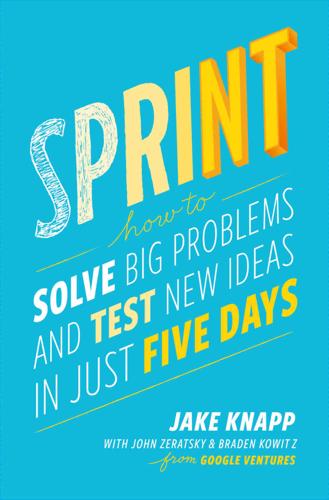
Sprint: How to Solve Big Problems and Test New Ideas in Just Five Days
by
Jake Knapp
,
John Zeratsky
and
Braden Kowitz
Published 8 Mar 2016
What had appeared to be isolated undersea mountains were in fact one long, interconnected chain of volcanic ranges and deep valleys. It jumped right out of her map: a thick, unbroken band stretching for thousands of miles. Today, you can easily see the Mid-Ocean Ridge (as it’s now known) using Google Earth. In the Atlantic Ocean the ridge shows up as a dark blue line snaking from the waters north of Greenland, through Iceland, and all the way into the South Atlantic. There, at tiny Bouvet Island, it connects with another jagged blue band and runs east toward the Indian Ocean. On and on it goes, one ridge connecting to another, from ocean to ocean, around the entire earth.
…
A., 229 feedback, 207 reaction vs., 169–70 finance experts, 34 Fitbit, 171 fitness training, automated, 171–74 FitStar sprint, 171–74, 189, 206 Flatiron Health sprint, 60–64, 76, 85, 88, 100–101, 153, 176, 224 Flickr, 143 focus, sprint process emphasis on, 32 Foundation Medicine sprint, 16, 176–77, 185 FoundationOne, 176 Freeman, James, 21–25, 30, 103 Gebbia, Joe, 210–11 genetic analysis, in cancer treatments, 176 George Mason University, 38 Getting Things Done (Allen), 108–9 Giarusso, Serah, 24, 103 Glitch (video game), 128–29, 143 Gmail, 2, 4 goals, ambitious, 229 goals, long-term, 55–57, 61, 67, 110, 138, 141, 147 dangerous assumptions and, 56–57 in Flatiron Health sprint, 62–63 Goldilocks quality, 170, 207 Gonzalez, Tony, 171–72 Google, 60 experimentation culture of, 1 self-driving car of, 16 Google Earth, 83 Google Forms, 121 Google Hangouts, 3 Google Search, 4 Google Ventures (GV), 4–6, 7, 12, 15, 16, 60, 85, 113, 130, 171, 176, 201, 231 Google X, 4 Grace, Merci, 130, 131, 143–44, 152, 156, 175, 216–17, 221, 222 Graco sprint, 27–28 Green, Bobby, 76, 85, 86 Grijalva, Dave, 171–74 Harry Potter and the Philosopher’s Stone (Rowling), 196, 196n heat map, in deciding process, 131, 132–35 high stakes, as challenge, 26 honesty, in deciding process, 139–40 hotels, guest satisfaction and, 10, 56 Howard, Ron, 53 How Might We notes, 68, 73–82, 110 in Blue Bottle sprint, 73–74 challenges and, 77–78 in Flatiron Health sprint, 76–78 maps and, 81–82 organizing, 79–80 prioritizing, 80–81 target and, 87 HTML, 184 Hurley, Chad, 6 IdeaPaint, 44 IDEO, 73 illusion, 165–66 see also façades Incredibles, The (film), 149 Indian Ocean, 84 industrial companies, sprints and, 27–28 Ingram, Alex, 62, 76 interruptions, productivity and, 38–39 Interviewer, 188, 190, 204–5, 217, 225 tips for, 212–15 interviews, 196–200, 201–15 being a good host in, 212 broken questions in, 214–15 context questions in, 202, 205–6 curiosity mindset in, 215 debriefing in, 202, 209–10 detailed tasks in, 202, 208–9 as emotional roller coaster for sprint team, 197 feedback in, 207 in FitStar sprint, 197, 206 in FitStar test, 208 five-act structure of, 202 ideal number of customers for, 197–99 introducing prototypes in, 202, 206–7 in One Medical sprint, 199–200 open-ended vs. leading questions in, 212–13 power of, 210–11 schedule of, 199 in Slack sprint, 217 team observation of, see interviews, learning from thinking aloud in, 207–8 welcome in, 202, 204–5 “why” questions in, 199–200 interviews, learning from: in Blue Bottle sprint, 223–24 in Flatiron Health sprint, 224 group note-taking in, 219–21 importance of real-time team observation in, 202–4, 218–19 looking for patterns in, 222 in Savioke sprint, 223 in Slack sprint, 220–21, 223 sprint questions and, 222–23 Invite Media, 60 iPads, 171–73, 178, 189 as banned from sprint room, 41 JavaScript, 184 Keynote, 171, 173, 175, 176, 177, 178, 184–85, 186 Knapp, Jake, 24, 27–28, 30, 47, 48, 60, 62, 76, 77, 85, 107n, 109 Kowitz, Braden, 5, 22, 23–24, 30, 43, 60, 76, 156, 216 Kranz, Gene, 53, 55, 85 Lachapelle, Serge, 3 Lancelotta, Mary Pat, 176 Landauer, Thomas K., 198n laptops, as banned from sprint room, 41 Lau, Tessa, 11, 12, 178 lean development, 17 learning, see interviews, learning from Lightning Demos, 96–101, 110 Lord of the Rings, The (Tolkien), 59, 60 Lowe, David, 27 McKinsey & Company, 230 Makers, 187, 188 mapping the problem, 16, 59–67, 110, 230 in Blue Bottle sprint, 23–24, 65, 66 division of labor and, 101–2 experts and, 69–70, 76, 77 in Flatiron Health sprint, 62–63 How Might We notes and, 81–82, 85 in Savioke sprint, 10, 64–65, 66 steps in, 66 as story, 65–66 target and, 84, 85–86 Margolis, Michael, 5, 12, 60, 62, 201–2, 203, 204, 206, 208, 209, 212, 214, 216, 217 Maris, Bill, 4–5 markers, dry-erase, 75 marketing experts, 34 Maser, Mike, 171–73 “Mathematical Model of the Finding of Usability Problems, A” (Nielsen and Landauer), 198n mechanics, of product or service, 70–71 Medium, 6 Medium sprint, 224 Meehan, Bryan, 22 meetings, frustrations of, 127–28, 230 Microsoft Word, 186 Mid-Ocean Ridge, 83–84, 87 “Mind Reader, The” (Blue Bottle solution sketch), 104–6, 115 Mission Control, 53–54, 225 momentum, regaining, 26 Move Loot sprint, 113 movies, façades in, 165–66, 173 My Neighbor Totoro (film), 98 NASA, 54 Nest, 16 Newton, Alice, 195–96 Newton, Nigel, 195–96 New York Times, 15, 130, 152, 153, 188 Nielsen, Jakob, 197–98, 198n no-devices rule, 41, 110 Note-and-Vote, 146–47 note-taking: on interviews, 219–21 sketching and, 109, 110 see also How Might We notes Ocean’s Eleven (film), 29–30, 36, 37, 225 office supplies, for sprint rooms, 45 One Medical Group sprint, 180–82, 185–86, 199 opening scene, 188 OstrichCo, 139–40 paper, for sprint rooms, 44 paper coffee filters, 95–96 patterns, in customer reactions to prototypes, 222 permission, Facilitators and, 89 personal trainers, 171 phones, as banned from sprint room, 41 Photoshop, 184 Pitt, Brad, 29, 36 Pixar, 149 plate tectonics, 84 PlayStation, 178 Porter, Josh, 89 Post-It notes, see sticky notes PowerPoint, 184, 186 previous efforts, see existing solutions priorities, setting, 54–55 “Priority Inbox” project, 2–3 Procter & Gamble, 73 productivity, interruptions and, 38–39 progress, rapid, from sprint process, 31 prototype mindset, 168–69, 230 prototypes, prototyping, 16, 60, 183–90 actors and scripts in, 186 appearance of reality in, 169–70 Asset Collector in, 188 in Blue Bottle sprint, 25, 28, 104–6 Brochure Façades in, 185 Deciders and, 31, 32 deciding on, see deciding as disposable, 169 division of labor in, 183, 187 façades and, see façades Facilitator and, 187 in FitStar sprint, 189 focus on learning from, 169 in Foundation Medicine sprint, 185 Goldilocks quality in, 170 in Graco sprint, 27–28 Interviewer in, 188, 190 Makers in, 187 mindset and, 168–69 in One Medical sprint, 199 picking right tools for, 183–86 in Priority Inbox sprint, 3 Rumbles and, 143–47 in Savioke sprint, 9, 10, 11–12, 185 sketching and, 104–6 in SquidCo sprint, 30–31 Stitcher in, 183, 187, 189 storyboard scenes and, 188, 189–90 trial run in, 183, 189–90 universal application of, 169 using existing objects or spaces in, 186 Writer in, 187–88 questions: in interviews, 212–14 obvious, Facilitators and, 90 questions, finding answers to, 138, 141, 147 in Blue Bottle sprint, 23 in FitStar sprint, 171 in Flatiron Health sprint, 62–63, 88 in Foundation Medicine sprint, 176–77 in Graco sprint, 27–28 and learning from interviews, 222–23 in One Medical sprint, 180 role of sprints in, 15, 16–17, 67 in Savioke sprint, 9, 10, 178 in Slack sprint, 175, 216–17, 222–23 Starting at the End and, 55–58 surface and, 28 see also How Might We notes reaction, feedback vs., 169–70 Relay robot, 7, 14, 56 eyes of, 97–98 guest satisfaction and, 10 guests’ responses to, 13 “personality” of, 11, 13, 71, 178, 179 risk-taking, 156, 166 robot helpers, human interaction with, 8–9, 10 Rogers, Jan, 46–47 Rogers, Loran, 46, 48 rooms, for sprints, 41–45 Rumbles, 143–47, 223 in Blue Bottle sprint, 146 Deciders in, 145, 146 fake brands in, 145–46 Note-and-Vote in, 146–47 single-prototype vs., 145, 147 in Slack sprint, 144, 145 Savioke Labs sprint, 7–15, 26, 33, 64, 66, 71, 119, 145, 153, 157, 178–79, 185, 223 better guest experience as goal of, 56, 84 schedule, clearing space for sprints in, 10, 39, 40–41 screener surveys, in recruiting test customers, 119–21 Scribe, in speed critique, 135–36 Seattle, Wash., 229 Sharpies, 75n simplicity, in maps, 66 sketching, 16, 60, 102, 103–18 abstract ideas and, 106–7 in Blue Bottle sprint, 24, 103–4, 108, 113 Crazy 8s exercise in, 109, 111–13 in Move Loot sprint, 113 prototypes and, 104–6 of rough ideas, 109, 111 solution sketches in, see solution sketches taking notes in, 109, 110 as working alone together, 107–9 Slack sprint, 129–31, 143–44, 149–58, 175, 216, 217, 220–21, 222, 223 expansion into new markets as challenge for, 129–30 Smithsonian Institute, 228 snacks, for sprints, 45 solution sketches, 109, 114–18 anonymity of, 114–15 in Blue Bottle sprint, 116–17 deciding on, see deciding as explanatory, 114 importance of words in, 115 maybe-laters in, 142, 155 single-scene, 114, 117 in Slack sprint, 130 sticky notes and, 114 storyboard format in, 114, 116 titles for, 115 winners in, 141–42 speed critique: in deciding process, 131, 135–37 Scribe in, 135–36 sprints: checklists for, 232–49 clearing calendars for, 10, 39, 40–41 concept of, 3 daily schedule in, 39, 40–41, 90–91 deciding process in, see deciding façades in, see façades as five-day process, 5–6, 9, 16, 40–41 frequently asked questions about, 251–57 learning from, see interviews, learning from no-devices rule in, 41, 110 origin of, 2–5 prototypes in, see prototypes, prototyping questions to be answered in, see questions, finding answers to; tests, real-world risk-taking in, 166 Rumbles in, 143–47 setting priorities in, 54–55 storyboards in, see storyboarding time allocation in, 38–41 timers for, 46–48 uncovering dangerous assumptions through, 56–57 universal application of, 229–30 versatility of, 5–6, 229–30 wide application of, 5–6 working alone together in, 107–9 work rooms for, 41–45 Squarespace, 186 SquidCo sprint, 30–31, 32, 139 Starting at the End, 5, 53–58 in Apollo 13 rescue, 53–54 in Blue Bottle sprint, 55–56, 57 in Flatiron Health sprint, 62–63 long-term goals and, 55–57, 61, 62–63, 67 questions to be answered in, 55–58, 62–63, 67 in Savioke sprint, 56 setting priorities in, 54–55 startups, 231 sprints and, 4–5, 15–16, 27 Starwood, 9 sticky notes: poster-size, 43, 44 solution sketches and, 114 see also How Might We notes Stitcher, 187, 189 storyboarding, 125, 148–58 “artist” for, 151, 154–55, 156 assigning prototyping tasks from, 188, 189–90 in Blue Bottle sprint, 153, 157, 188 competitors’ products in, 154 copywriting in, 155–56 Decider in, 156 detail in, 156 in Flatiron Health sprint, 153 maybe-laters in, 155 opening scene in, 152–53 resisting new ideas in, 155 risk-taking in, 156 in Savioke sprint, 153, 157 in Slack sprint, 149–53, 156 solution sketches as, 114, 116 test-time limits and, 157 story-centered design, 5 strategy, 70 straw polls, 87–88 in deciding process, 131, 138–40 successes, flawed, 223–24 supervotes, 143, 144 in deciding process, 131, 140–42, 143 surface, as contact point between product and customer, 28 target, 82, 83–88 in Blue Bottle sprint, 84–85, 101 Decider and, 31, 32, 85–88 in Flatiron Health sprint, 85–87, 88 How Might We notes and, 87 key customers in, 85–86 key event in, 85–86 maps and, 84, 85–86 in Savioke sprint, 84 straw polls and, 87–88 Tcho, 97 team processes, 1 teams, 29–37, 218 in Blue Bottle sprint, 22–24, 33 challenges and, 68 choosing members of, 33, 34–36 Deciders in, see Deciders division of labor in, 101–2 experts and, see Ask the Experts Facilitators in, see Facilitators ideal size of, 33 interviews observed by, see interviews, learning from in Ocean’s Eleven, 29–30 in Savioke sprint, 9–11, 33 in SquidCo sprint, 30–31 troublemakers in, 35 tech/logistic experts, 34 “Tenacious Tour, The” (Slack solution sketch), 144, 175, 217, 220–21, 222 tests, real-world, 5, 16, 231 in Blue Bottle sprint, 25 competitors’ products in, 154 Deciders and, 31, 32 in FitStar sprint, 173–74 in Graco sprint, 27–28 interview in, see interviews recruiting customers for, 119–23, 197 in Savioke sprint, 10, 11–13, 15 time units in, 157 Tharp, Marie, 83–84 3D printing, 27, 185, 186 tight deadlines, 109 time, allocation of, for sprints, 38–41 timers, in deciding process, 136, 138 Time Timers, 46–48 Tolkien, J.

Is the Internet Changing the Way You Think?: The Net's Impact on Our Minds and Future
by
John Brockman
Published 18 Jan 2011
The post-Berners-Lee world of 2010, if we could have imagined it forty years ago, would have seemed shattering. Anybody with a cheap laptop computer and a Wi-Fi connection can enjoy the illusion of bouncing dizzily around the world in full color, from a beach webcam in Portugal to a chess match in Vladivostok, and Google Earth actually lets you fly the full length of the intervening landscape, as if on a magic carpet. You can drop in for a chat at a virtual pub in a virtual town whose geographical location is so irrelevant as to be literally nonexistent (and the content of whose LOL-punctuated conversation, alas, is likely to be of a driveling fatuity that insults the technology that mediates it).
…
To be contemporary means to resist the homogenization of time, through ruptures and discontinuities. M is for Maps The Internet increased the presence of maps in my thinking. It’s become easier to make maps, to change them, and also to work on them collaboratively and collectively and share them (e.g., Google Maps and Google Earth). After the focus on social networks of the last couple of years, I have come to see the focus on location as a key dimension. N is for New geographies The Internet has fueled (and been fueled by) a relentless economic and cultural globalization, with all its positive and negative aspects. On the one hand, there is the danger of homogenizing forces, which is also at stake in the world of the arts.
…
It is a reasonable guess that GPS changes the way that taxi drivers’ brains weight memory versus processing; it seems like a reasonable guess that the Internet changes the way my brain does, too. Often the transformational role of the Internet is described in terms of memory—that is, in terms of the information the Internet stores. It’s easy to be awed by the sheer magnitude of data available on Wikipedia, Google Earth, or Project Gutenberg. But what makes these Websites transformative for me is not the data. Encyclopedias, maps, and books all existed long before their titles were dressed up in dots and slashes. What makes them transformative is their availability—the new processes by which that information can be accessed.

Unit X: How the Pentagon and Silicon Valley Are Transforming the Future of War
by
Raj M. Shah
and
Christopher Kirchhoff
Published 8 Jul 2024
I swore to myself that I would never be in a position where I didn’t have the means to take care of my kids if something happened to Nick.” Shield Capital’s biggest investment to date was Albedo, a startup whose satellites boast exponentially higher resolution than what is typical today. To get a sense of the difference, each pixel of the satellites that deliver images for Google Earth resolves one square meter of the earth. Albedo’s eagle-eyed cameras create images where each pixel represents ten centimeters. It’s the difference between being able to identify that an object is a car and being able to tell what kind of car it is and whether it has a bumper sticker. Shield Capital’s timing turned out to be prescient.
…
.; specific projects DJI (Chinese drone company), 103, 104, 107, 137, 209, 211 Rogue Squadron’s hacking and reverse engineering, 106–7 Donovan, Matt, 63–64 drones (UAS, unmanned aircraft system), 114, 237 Afghanistan War and, 105 AI-empowered, 210, 228–29 Air Force purchase of, 228–29 attacks on U.S. service members in the Mideast by, 241 Beall’s Android app to locate enemy operators, 106 Blue UAS program, 108, 131, 235 changing fighter aviation, 114, 237–38, 241 cost of, versus conventional craft, 241 “counter-UAS” solutions (drone-killers), 9, 106, 126, 202, 210, 237, 238, 241 DIU funding of U.S. makers, 107–8 DIU Rogue Squadron, 104–10, 210, 211 DJI Chinese drones, 104–7, 137, 201 in DoD inventory, 103 DoD’s Replicator Initiative, 239–40 Gorgon Stare sensors on, 119 Iranian-made drones, 201–2, 209, 240 kamikaze drones, 201, 210, 232, 235, 237, 240, 241 North Korean use of, 214 quadcopters, 3, 4, 107, 201, 202, 209, 232, 240 Russia and, 240 Shield AI, 100–101, 131 Skydio, 202 terrorists’ using, 240–41 Turkish Bayraktar TB2s, 209 Ukraine War and, 201, 204, 208–12, 232–35, 237 used by ISIS and insurgents, 3–4, 103 used to surveil U.S. military bases and ports, 106 U.S. military vulnerability, 238 weaponizing of hobby drones, 3–4, 103, 106 Duchak, George, 20 Dunford, Joseph, 62, 63, 119 Dunnmon, Jared, x, 150–51 DIU AI technical director, 151, 203 partnership with PMS-408, 152 Ukraine War and, 203, 204–5 Edgesource, 210 Elroy Air, 181–84 End of History and the Last Man, The (Fukuyama), 218, 237 ESL company, 84, 85 Esper, Mark, 154 EUCOM, 205 Evolv Technology, 117–18 eVTOL (electric-powered vertical takeoff and landing aircraft), ix, 3, 114–16, 181–84 aerial cargo options, 182–83 air taxi, 115 “dual-use” product, 115 Elroy Air’s Chaparral, 181–84 Joby Aviation and, 116 military use, 182, 183 F-16 Viper, 1, 4, 14, 34, 237–38 Facebook, 123, 124 FAR (Federal Acquisition Regulations), 38, 39, 40, 43 defense supplement (DFAR), 38 Farris, Ryan, 73, 74, 76–77, 78, 87 Banazadeh and SAR satellites, 86 Capella funding and, 95 Datahub project and, 81 J-39 SWAT team and, 74, 80 Orbital Effects founded, 97 FedEx, 182 Felter, Joe, 179 FitzGerald, Ben, 154 5G telecommunications, 4 Flake, Jeff, 195 Fog of War (film), 147 ForAllSecure, 100, 132 Fort Hunter Liggett, California, 115 Founders Fund, 122, 123, 124 Four Steps to the Epiphany (Blank), 85 Fukuyama, Francis, 218 Fu Ying (Chinese AI diplomat), 162–68 Gallagher, Mike, 156–57, 161, 244 Garg, Avichal, 169 General Dynamics, 1 Giannandrea, John, 118 Ginkgo Bioworks, 174 Giustina, Marissa, 169 Goldfein, David, x, 59–60, 63, 68, 178, 179, 189 Google, xi, 5, 48, 162, 169, 195, 203 AI research, 48, 118 Cloud AI, 239 government grants to, 8 Project Maven and, 100, 116, 119–21, 127–28 rebuffs Secretary of Defense Carter, 7 resumes working with the DoD, 158 Schmidt as CEO, 48, 49, 186 self-driving car project, 20, 48 Taylor recruited from, 20–21, 114 U.S. Army using collaboration suites, 238 Google Brain, 119, 121 Google DeepMind, 140 Google Earth, 190 Google Glass, 20 Google Translate, 48 Google X, 20, 114 Grady, Claire, 42 Granberg, Brett, 181 Greene, Diane, 120 Greenwalt, Bill, 41, 42 Griffin, Mike, 121–22, 130, 154, 223 Haines, Avril, 184 Hanscom Air Force Base, Massachusetts, 53, 59, 63 HarbourVest Partners, ix, 180 Hariprasad, Vishaal “V8,” 21, 131, 184, 243 Harrigian, Jeffrey “Cobra,” x, 51, 54, 56, 57–58, 60, 63, 65 HawkEye 360, 181, 189, 202, 232 HealthCare.gov, 13, 48 Hicks, Kathleen, 222, 226, 239–40 Innovation Steering Group, 226 “Replicator Initiative” and, 240 Hill, Lisa, 190 Hobbes, Thomas, 218 Hoffman, Reid, 123, 143 Holland, Dan, 190 Holmes, Elizabeth, 103 Horvitz, Eric, 144 Hsu, Jason, 218 Huawei, 137, 163–64 human systems, 36, 100 earbuds for high-noise, 100 wearables to monitor soldiers, 100 Huntington Ingalls Industries, 187 Hyton, John, 123–24 IARPA (Intelligence Advanced Research Projects Activity), 134 Ierardi, Tony, 94 In-Q-Tel, 117, 125, 127, 181 Interstellar (Nolan), 225 Iran capture of Saildrones, 112–13 drones used by terrorists, 241 drones used in Ukraine, 201–2, 209 Houthi attacks on Red Sea shipping and, 241 Russian contract for drones with, 240 Iraq, 45, 51, 119, 129, 154, 237 ISIS, 45, 52 AI to track, 100 use of hobby drones, 3–4 Israel Hamas drone attacks on, 240–41 war in Gaza, 241 IT (information technology), 5, 35, 36, 54, 100, 238 Iyer, Akhil, 190 Jacobsen, Mark, 104–10, 210, 216 JAIC (Joint Artificial Intelligence Center), 121–22, 132, 158, 212 Japan, 160, 197, 238, 239, 245 Jassey, Andrew, 144 Jenkins, Richard, x, 110–13 DIU contact and venture capital, 112 Greenbird “land yacht,” 110–11 Iranian capture of Saildrones, 112–13 NOAA partnership, 111 Saildrone, 110–11 Jobs, Steve, v Joby Aviation, ix, 115–16, 131, 182, 239 Johnson, Lyndon B., 139, 147 Joint Chiefs of Staff Brown as Chairman, 230 Dunford as Chairman, 62, 63, 119 Hyton as Vice Chairman, 124 Kirchhoff and, 145 North Korea threat and, 75, 79, 80 Selva as Vice Chairman, 75, 78, 93 Winnefeld as Vice Chairman, xi, 78, 80, 114, 138 Joint Futures, 238 Joint Staff J-8, 94 Joint Staff J-39, 74 Banazadeh and SAR satellites, 85–86 Datahub project, 80, 81, 86, 98 DIU and, 74 North Korean nuclear missile surveillance, xi, 74–86, 98 SWAT team, 80 Kaljulaid, Kersti, 164–65, 167 Karp, Alex, 213 Katz, Safra, 144 Kendall, Frank, 111, 228–29 Kennedy, John F., 246 Kernan, Joseph, 122 Kespry company, 128–29 Kessel Run, 69–70, 132 Beachkofski as commander, 70 CAOC software overhaul and, 67–68 Slapshot app, 69 vision of, 70 Killian, James, v Kim Il-sung, 91 Kim Jong-il, 90–91 Kim Jong-un, 7, 73, 75, 91, 98 King, Angus, 156–57 Kirchhoff, Christopher, 150 advice for Shah, 185 Albright and, 143 at Aspen Strategy Group (2018), 134 background, 13–14, 33, 62, 145 briefs Congressional Cybersecurity Commission, 156–57 Capella Space project and, 89, 94–95 Carter’s death and, 219, 220 China’s aggressive AI plan and, 138 China’s threat and, 130–31 COVID-19 and, 163 Dailey’s CSO idea and, 24, 42–43 declines joining Biden administration, 169–71 DIU-led Warsaw conference and, 234–36 DIU 3.0 and, 226–27 DIUx recruits him, with Shah, 2, 11, 15–17, 20–21 Ebola Task Force and, 163, 170 “An Even Flatter World: How Technology Is Remaking the World Order,” 139, 202 expertise on national security commissions, 144 fight to restore DIUx budget, 28–36 helps write Obama’s technology strategy, 140–41 as lead NSC strategist for technology, 2, 13, 62 leaked email of, 61–62 leaves DIUx, 129–30 meetings with staffers “Evelyn and Ed,” 29–31, 34 mission of, at DIUx, 2 at Moffett Field office, 67–68 Munich Security Conference and, 163, 167 New York Times op-ed, 120 NSCAI and, 144–45 relationship with McCord, 33 “A Requiem for Defense Innovation?
…
See drones Raps, Susan, 42–43 Rasmussen, Anders Fogh, 175 Raytheon, 5, 123, 215 Reagan, Ronald, 77 Resilience, 131, 184, 190 Rice, Condoleezza, 134, 178 Richardson, John, 224 Rieschel, Gary, 169 Rosenbach, Eric, 16, 26, 220 Ross, Wilbur, 129 ROTC (Reserve Officers’ Training Corps), 191–92, 194 Rothzeid, David, 190 Russia (former Soviet Union) Black Sea Fleet, 114 electronic warfare system (Tobol), 211 Iranian drones and, 201, 209, 240 jammers used by, 211 military budget, 217 new weapons, 225 nuclear weapons and, 79 SAM missiles, 84 Ukraine War and, 98, 114, 190, 199–201, 210–11, 218 as threat to U.S., 225 Saildrone, x, 110–13, 131 Sanger, David E., 92 SAR (synthetic aperture radar) technology, ix, 74, 80–81 Banazadeh and, 82–83 “Douser” system and, 81 funding for, 87–88 KN-08 surveillance problem and, 76 microsatellites and Capella, 81–83, 91–93, 199, 215, 232 traditional designs, 83 Sasse, Ben, 157 satellites Albedo high resolution, 190 Capella’s microsatellites, 81–83, 86–88, 91–98, 199, 215, 232 commercial companies, 83 DIUx and SAR sensor North Korea project, 74–86 for Google Earth, 190 “Guo Wang” satellites, 225 HawkEye 360, 181, 189, 202, 232 KH-1 Corona, 77 optical-based, limitations, 83 Planet Labs, 202 reconnaissance, 77, 79, 80, 83 Starlink, 201, 204, 224–25 Scale AI, 169, 239 Donovan platform, 239 Schadlow, Nadia, 139–40, 141 Schmidt, Eric, xi, 46, 47, 118, 130, 134, 220 advice for Shah, 184, 186 Biden administration and, 169–70 CAOC misuse of IT and, 54 career history, 48–49, 186 heads the DIB, 46, 47, 48–49, 155 Munich meeting with China’s top AI diplomat, Fu Ying, 162–68 NSCAI and, 143–45, 147–48, 155–57, 175 Pelosi and, 162 SCSP and, 206 Trump and, 159 Ukraine War and, 210, 212 Schmidt Futures, 130, 134, 143 Schumer, Chuck, 158, 161, 174 SCIF (sensitive compartmented information facility), 73 Scott, Denise, 43 SCSP (Special Competitive Studies Project), 206 Seidman, Ricki, 170–71 Selva, Paul, 75, 78, 88, 93–95 SenseTime, 137 Serafini, John, 181, 189 Shah, Raj M. angel investing and, 131, 180–84, 202 Ash Carter Exchange meeting, 228 background, 14, 187 Banazadeh and SAR satellites, 85–86 Brown and, 172 “The Business of the UAS Industry,” 235 Capella and, 73–75, 86–88, 92–98 Carter and, 219 on Commission on Planning, Programming, Budgeting, and Execution Reform, 245–46 cybersecurity startups, 2, 14, 15, 21, 184, 190, 197 DIU 3.0 and, 226–27 DIUx, personal investment in, 129 DIUx all-hands meeting, 19, 21–23 DIUx mission, 2, 21–22 DIUx recruits him, with Kirchhoff, 2, 11, 15–17 DIUx team members and, 19–21 as “dual fluency” reservist, 21 as F-16 pilot, 1, 44, 64, 65, 237 fight to restore DIUx’s budget, 28–36 founding CEO, Resilience, 131 as Hoover Institution fellow, 179 leaves DIUx, 130 Mattis and, 108 meeting with McCain, 64–66 meeting with Thornberry, 71–72 NATO’s Innovation Fund and, 233, 245 need for national strategy on AI, 143 North Korea surveillance project, 76–77, 78 NSCAI and, 144 number of trips to D.C., 28, 71 policy changes to improve U.S. military readiness, 192–96 Project Maven and, 117–18, 120–21 Schmidt and, 155, 184, 186 Shield Capital and, 173, 177, 179, 184–91 Stanford class, 179 Stephens and Luckey meet, 125–26 Taiwan and, 218 tanker refueling project, 54–55 Tech Track 2 and, 178–80, 230 Trump meeting with, 128–29 Ukraine and, 215, 232–34 venture capitalists and, 103 visit to CAOC at Al Udeid, 45–46, 49 visit to Hanscom Air Force Base, 53 Warsaw conference on UAS scaling and, 234–36 Wert tries to shut down DIU, 59–60 Shanahan, John “Jack,” xi, 117, 121 JAIC and, 121, 158, 212 NSCAI and, 158–59 Ukraine War and, 212–13 Shanahan, Patrick, 153 Shield AI, 100–101, 131, 191 Nova drones, 101 Shield Capital, ix, 173, 177, 179, 181, 184–91, 197, 239 Shyu, Heidi, 222–23 Silicon Valley, 97 acceptable attire in, 17–18 advantages of, 76 Carter’s overtures to, 7–9 China’s venture capital in, 149 deal-making in, 36–37, 38 defense investing in, 138, 143, 177–91 defense-oriented startups, 101, 103, 127, 131, 191, 215, 237 DIUx contracts and raising venture capital for startups, 9, 85, 96, 97, 98, 99, 101, 202 DIUx located in, 8–9, 12 DIUx’s mission to link startups with the Pentagon, 2, 9–10, 89 DoD relations with, 5–6, 40, 97, 122–28, 178, 237 (see also Project Maven; specific products) “fail fast” philosophy and, 13 global technology market and, 39 “lean” methodology, 54, 84 moral objections to weapons of war, 6, 120–21, 127–28, 183, 188 need for H-1B visas for critical engineers, 195 NSA spying and, 6, 7 Replicator Initiative and, 240 startups created by immigrants, 195–96 startups surpassing big defense contractors, 116 startups with transformational technology, 5 startups with warfare innovations, 3 Ukraine War and, 190, 202–3, 206, 207 way of, better to beg forgiveness, 66, 243 “Working backward from the customer,” 46, 85 world’s ten largest tech companies based in the U.S., 177 See also venture capital; specific startups Skydio, 108, 202 Smith, Megan, 140 Snowden, Edward, 6, 7, 10 Somewear Labs, 202, 205 Sorensen, Reuben, xi, 73–74, 76, 78, 87, 92 Banazadeh and SAR satellites, 86 Capella funding and, 95 Datahub project and, 80, 81 J-39 SWAT team and, 74, 80 Orbital Effects founded, 97 SOUTHCOM, Saildrone project, 111 South Korea, 89–92 Brooks as U.S.

Whole Earth Discipline: An Ecopragmatist Manifesto
by
Stewart Brand
Published 15 Mar 2009
That life, most of it microbial, determines most of the Gaian balance of gases in the atmosphere. In 2009 the spectacular array of services from Google Earth was expanded to include Google Ocean. Besides displaying the best current data on the ocean bottom and on currents and temperature, it is adding Encyclopedia of Life material as it accumulates. Google Earth is being used to track the behavior of everything from polar ice to radio-tagged animals. Threatened habitat is monitored, and so are illegal logging and mining operations. In the United States, a Google Earth add-on called MapEcos flags all the industrial polluters, complete with detailed comparison with other offenders, and a service called Vulcan maps carbon dioxide emissions from fossil-fuel use.
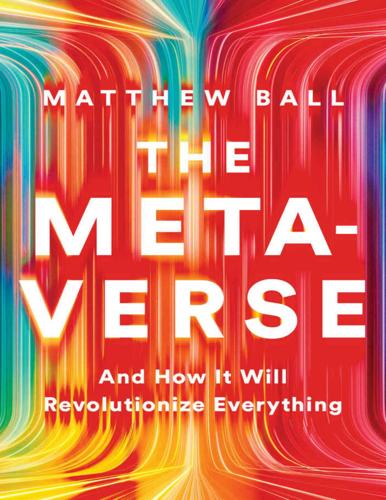
The Metaverse: And How It Will Revolutionize Everything
by
Matthew Ball
Published 18 Jul 2022
Conversations with Stephenson helped inspire Jeff Bezos to found the private aerospace manufacturer and suborbital spaceflight company Blue Origin in 2000, with the author working there part-time until 2006, when he became a senior advisor to the company (a position he still holds). As of 2021, Blue Origin is considered the second most valuable company of its kind, ranked only behind Elon Musk’s SpaceX. Two of the three founders of Keyhole, now known as Google Earth, have said their visions were informed by a similar product described in Snow Crash, and that they once tried to recruit Stephenson to the company. From 2014 to 2020, Stephenson was also “Chief Futurist” at Magic Leap, a mixed reality company that was also inspired by his work. The company later raised over half a billion dollars from corporations including Google, Alibaba, and AT&T, attaining a peak valuation of $6.7 billion, before struggles to realize its vaulting ambitions resulted in a recapitalization and the departure of its founder.* Stephenson’s novels have been cited as the inspiration for various cryptocurrency projects and non-cryptographic efforts to build decentralized computer networks, as well as the production of CGI-based movies which are watched at home but generated live through the motion-captured performance of actors that might be tens of thousands of miles away.
…
Chapter 1 A Brief History of the Future 1. Neal Stephenson, Snow Crash (New York: Random House, 1992), 7. 2. John Schwartz, “Out of a Writer’s Imagination Came an Interactive World,” New York Times, December 5, 2011, accessed January 4, 2022, https://www.nytimes.com/. 3. Joanna Robinson, “The Sci-Fi Guru Who Predicted Google Earth Explains Silicon Valley’s Latest Obsession,” Vanity Fair, June 23, 2017, accessed January 4, 2022, https://www.vanityfair.com/. 4. Stanley Grauman Weinbaum, Pygmalion’s Spectacles (1935), Kindle edition, p. 2. 5. Ryan Zickgraf, “Mark Zuckerberg’s ‘Metaverse’ Is a Dystopian Nightmare,” Jacobin, September 25, 2021, accessed January 4, 2022, https://www.jacobinmag.com/. 6.
…
See ownership Epic Games lawsuit against Apple, 14n, 22–23, 32n, 134, 186, 284 lawsuit against Google, 22–23 Live Link Face app, 159 “Llama-Rama” cross-over events, 137 Psyonix acquisition, 137 Quixel “MegaScans,” 156 Rocket League, 137 vision of the Metaverse, 19 see also Fortnite; Sweeney, Tim; Unreal game engine Epic Games Store (EGS), 180–82, 184, 201, 234–35 Epic Online Services, 114, 137–38 Ethereum, 210–12, 217, 222–23, 227–28, 230, 233, 293 European Union, xiv, 137, 184, 296, 306 Evans, Don, 65 EVE Online, 45–46, 55–56, 90 Exxon Mobil, 166 eye tracking, 156, 162, 252 Faber, David, 20–21 Facebook, xi–xii, xiv, 18–19, 20–21 brain-to-computer interfaces (BCIs), 155 competing with Snapchat, 115–16 criticism of the Apple App Store, 198–99 Instagram acquisition, 276 integration with other apps, 215 investment in AR/VR hardware, xi, 139, 143, 150, 204–5, 287 investments in wearables, 153, 162 iOS app development, 25–26, 193–94 market capitalization of, 166 Metaverse according to, xi–xii, 18–19, 20–21, 239, 245, 274, 276–77, 286–91, 298–99, 308 monthly users, 13 pre-Metaverse analogy for “metagalaxies” on, 43–44 2012 Metaverse keynote, 57, 286–87 Unity and, 276–77 user authentication and, 138–39 WhatsApp, 26, 61, 79, 274, 276 see also Instagram; Oculus VR; Zuckerberg, Mark Facebook Connect authentication APIs, 138 Facebook Dating, 116 Facebook Gaming, 116 Facebook News Feed, 49, 194 Facebook Pages, 43 Facebook Reality Labs, xi Facebook Watch, 260 Faceshift, 144 FaceTime, 65, 83 facial scanning, 157, 258 Fall Guys, 137 Far Cry, 278 Farmville, 222–23 Favreau, Jon, 257–58 Fedwire (Federal Reserve Wire Network), 168–70 fiber optic networks, 27, 84, 87, 128 field of view, 97, 145–47, 162 FIFA, 37, 139, 176 file formats, 39, 41, 121–24, 123, 136, 299 Financial Times, 228 Firefly, 143 “first sale doctrine,” 165–66 Fitbit, 153 5G networks, 87, 243 “force field,” 152 Ford, Henry, 241–42 Fortnite, 11–12, 40, 74–78, 82, 86, 90–95, 117n, 133–34, 268 branded experiences in, 139, 264 economics of, 181–82, 246–47 in Epic’s fight with Apple, 32 the lack of persistence of, 44, 45 “Llama-Rama” cross-over events, 137 on the Nintendo Switch, 133, 134–35 Peely skin, 40, 127 split-screen feature, 97 Travis Scott concert on, 12, 54–55, 77, 139, 280, 54 Fortnite: Battle Royale, 54 Fortnite Creative Mode (FNC), 11, 108–9, 111, 114–16, 259, 264 4G networks, 81, 87, 244, 245, 249 4K, 93, 100, 145 frame rate, 91, 98, 100, 145, 147, 161–62 France, 84, 130, 136 Free Fire, 44, 91–92, 114, 116, 147, 303 free speech, 11 free-to-play game monetization, 137, 139–40, 179, 279, 281, 286 Friends with Benefits (FWB), 228–29 Funimation, 280 GAFAM (Google, Apple, Facebook, Amazon, and Microsoft), 273–83 game development for Android, 131 cross-platform game engines, 109, 131–32, 175–77 as driver of the next internet, 64–68 independent game engines, 107, 108, 278, 297 interoperability among, 107, 122n, 136 live services suites, 107–9, 117, 133, 176, 188, 286 “netcode” solutions in, 81–82 proprietary game engines, 106–7, 117–18, 136, 279 software development kits (SDKs), 142, 175, 203, 309 virtual worlds and game engines, 105–8 see also application programming interfaces (APIs); Unity game engine; Unreal game engine game engines, 105–8, 109, 122n, 131–32, 136, 175–77, 278, 297, 299 games and gaming AAA games, 114, 133 Amazon and, 178–79, 278, 281n on Android, 32, 92, 133 on the blockchain, 222–25 casual gaming, 80, 255 in China, xiii–xiv, 115 cloud streaming, 77–78, 82, 195–96, 198 cross-platform gaming (cross-play), 132–35, 137–38, 176, 177, 179, 245–46 free-to-play game monetization, 137, 139–40, 179, 279, 281, 286 “games-as-a-service” model, 178 interoperability among game platforms, 37, 132–35, 175, 299–300 sustainability and monetization, 125, 182 virtual gambling, 218, 259–60, 271, 292 see also cloud game streaming; multiplayer games; popular gaming platforms and games GameSparks (Amazon), 107–8, 117 GameStop, 28, 177, 178 Garena, 44 “gas” fees, 209, 227 gatekeepers, 206, 213–14, 234 Gates, Bill, 25, 239, 271, 279 General Electric, 60, 166 Genvid Technologies, 260 GeoCities, 14 gestures, 152–53, 156, 244 Gibson, William, 5–8, 14, 289 GIF file format, 41 globalization, 136–37, 222 God of War, 139, 280 “God on Earth,” 14, 119–20, 289 Goldman Sachs, 145 Google Ad Words, 263 Google, xiv, 4, 9 Android-based phones, 25, 61, 214 Daydream VR platform, 142 dominance of, 189 Dropcam acquisition, 148 Fitbit acquisition, 153 Gmail, 124, 227, 275, 299 in-house incubator, 143 investments in AR/VR hardware, 141–44, 150–51 investments in virtual worlds and 3D tech, 9, 155–58 investments in wearables, 153–55 lawsuit from Epic Games, 22–23 market capitalization of, 166 Motorola acquisition, 213 Nest Labs acquisition, 158 North AR glasses acquisition, 141 see also Android Google Cardboard, 141–42 Google Chrome, 15, 184, 194, 275 Google Contact Lens, 154 Google Drive, 39 Google Earth, 4 Google Expeditions, 142 Google Glass, 141, 154 Google Jump, 142 Google Labs, 143 Google Meet, 51 Google Play Store, 184, 213 Google Project Starline, 155–56, 157 Google Stadia, 96, 100, 131, 196–98, 275, 277, 282, 286 Google Street View, 37 governance, 33, 58, 211, 214, 222 over cryptocurrency, 301 the future of integrated virtual world platforms (IVWPs), 297–300 KYC (Know Your Customer) regulations, 301 of the Metaverse, 33, 58–59, 211, 214, 222, 295–302 Grand Theft Auto V, 80, 112, 114–15, 181, 259–60 graphics processing units (GPUs), 36–37, 65, 89, 97–101, 103, 105, 107n, 131 in consoles, 174–75 required by the Metaverse, 174, 223 in smartphones, 148, 159, 243–45 Griffin, Ken, 227 Gruber, John, 194 GSM Association, 243 Guinness World Records, 73 Guitar Hero, 160n Habitat, 8 Halo, 18, 139 hardware, 141–63 battery power, 146–47, 149, 161, 200–201, 271 beyond headsets, 151–55 as gateway to the Metaverse, 162–63 haptic feedback/interfaces, 151–52, 252, 261, 291–92 hardest challenge of our time, 146–51 near-field communication (NFC), 142, 189, 199–200, 203 personal “edge computers” or “edge servers,” 161 proprietary, 144 rise of personal computers, xiv, 22, 60, 64–65, 158–59 tenacity of the smartphone, 158–62 ubiquitousness of, 155–58 see also specific device models and manufacturers Hasbro, 139, 233 HBO, 50, 142 Headspace, 256 Hearthstone, 82 Helios rendering engine, 119, 136 Helium hotspots, 224 Hinge, 19, 261 HoloLens, 18, 141, 144–46, 147, 267–68, 279 Hong Kong International Airport “digital twin,” 31, 118 Honour of Kings, 82 Horizon Worlds, 115, 204, 277 Horizon Zero Dawn, 117, 139, 280 Hotmail, 275 HTML5, 26 Huang, Jensen, xii, 20, 66, 93, 231, 239, 245, 293 Huawei, 61, 213 Hulu, 142 “hyper-digital reality,” xii, 7n, 239, 307n “hyperreality,” 6–7 HyperText Markup Language (HTML), x, 26 hypertext, x, 24 Hypixel Studios, 115 IBM, 25, 28, 60, 62, 274 “IBM and the Seven Dwarfs,” 60 ICANN, 108 ICQ, 13, 61, 114, 273 identity, 127 as continuity of memory, 48 the individual presence of unlimited users, 54–58 loss of presence, 252 use of facial recognition in authentication, xiii, 159 see also avatars Imagination Technologies, 148 IMAX, 36, 90, 256 immersion, 18–19n, 190, 252, 256, 268 independent game engines, 107, 108, 278, 297 India, 84, 296, 302 Industrial Light & Magic (ILM), 118–19, 136, 258–59 Infineon, 243 “Information Superhighway, The,” 22 initial public offerings (IPOs), xii Instagram, 26, 116, 216 Facebook acquisition, 276 integration with other apps, 287–88, 300 “instant messaging” applications, 49, 61, 242, 249.
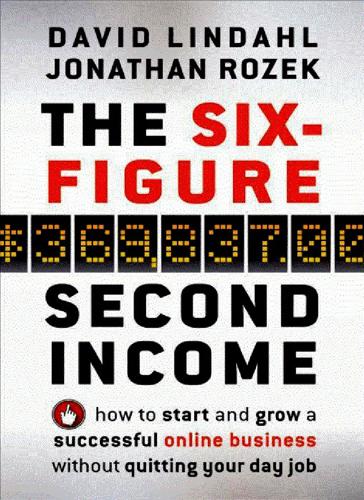
The Six-Figure Second Income: How to Start and Grow a Successful Online Business Without Quitting Your Day Job
by
David Lindahl
and
Jonathan Rozek
Published 4 Aug 2010
It turned out they were messing with the wrong guy, because my friend is a world-ranked expert in martial arts. He disarmed the attacker, who ran downstairs and out the door with his accomplice. Needless to say, my friend was rattled by the experience. Rather than complain or withdraw into a shell he decided to do something about it. As you may know, tools like Google Earth make it simple to find addresses, and other tools can scour motor vehicle registries and other sources to put together files the CIA would be proud of. That’s what his attackers must have done. Now, instead of wanting a high profile, my friend wanted the money but no longer the fame. Over a period of months he was able to assemble a group of people with different talents to erase much of the publicity and contact information on the Internet about him.
…
See also Videos eBay Echo-media.com Economy, as false barrier to success Edison, Thomas Editing content web sites Education/credentials Elance.com E-mail autoresponders commercial accounts contact information including cultivating customer relationships using effective e-mail systems encouraging product consumption through faxes instead of home accounts names of accounts nonbuyers providing insight through segmentation of distribution list selling customer contact list spam two-way communication through web forms as welcome guest, becoming a Escrow accounts Excuses, making Experts, quoting Facebook Fame Family/friends Fast-start guides Faxes Federal Trade Commission Ford, Henry Free content audios calendars consultations lead generation through lunch/dinner seminars membership site services newsletters online calculators PDFs posters special reports toll-free 24/7 recorded lines trial software t-shirts videos Free-standing inserts Friends/family Frontinus, Julius Sextus FTP (File Transfer Protocol) Tools Game changers Games Getting-started kits Giveaways. See Free content GoDaddy.com Godin, Seth Google article marketing recognition by blog directory eBay featured listings picked up by gimmick regulation by Google AdSense Google AdWords Google Analytics Googlebot Google Earth Google Insights for Search Google Keyword tool Google Trends Google Website Optimizer IP addresses blocked by local/geographic rankings by organic rankings by pay-per-click advertising with press releases picked up by web hosting by YouTube owned by Graphic designers. See Designers Guarantees Halbert, Gary Hobbyists Home-study courses HTML (hypertext markup language) editors Ideas/inventions.

Digital Disconnect: How Capitalism Is Turning the Internet Against Democracy
by
Robert W. McChesney
Published 5 Mar 2013
Air Force, for example, did the research in the early 1960s that provided the basis for the personal computer and the mouse.17 Likewise, the basic architecture of computer design, advances in time-sharing minicomputers, and most of networking technology were the result of military spending and “massive government support.”18 As John Hanke, an Internet CEO and one of the creators of Google Earth, put it, “The whole history of Silicon Valley is tied up pretty closely with the military.” Google Earth specifically would not exist unless the military had been “willing to pay millions of dollars per user to make it possible.” “We’ve come to the point,” Peter Nowak writes, “where it’s almost impossible to separate any American-made technology from the American military.”19 Nor is this ancient history.
…
See Federal Trade Commission (FTC) Galbraith, James K., 60, 241–42n78 Galbraith, John Kenneth, 18 Gannett, 186 Gary, Indiana, 224, 225 GateHouse Media, 177, 192 Gates, Bill, 27–28, 108, 133, 135 Gates, Henry Louis, Jr., 108 Genachowski, Julius, 116 General Electric, 120, 124 General Motors, 32 The General Theory of Employment, Interest, and Money (Keynes), 47 Germany, 35, 206 Gilder, George: Life after Television, xi–xii Gini index, 35 Gitlin, Todd, 214 Gmail, 138 The Godfather, Part II, 91 Google, 28, 131, 132, 137–40 acquisitions, 134, 138 advertising, 102, 148, 149, 190 cash on hand, 137 cloud computing, 136 copyright issues, 126, 127 e-mail service, 138 Europe, 143 Facebook relations, 261n48 FTC relations, 142, 143, 153 lobbying, 144 market share, 131 monopolistic practices, 143 Net neutrality views, 119, 120 Obama relations, 116 open-source software use, 108 privacy policy, 151, 152, 153 proprietary platforms, 135 SOPA opposition, 92 tax evasion, 145 video platforms, 1, 128, 128–29, 138 Wikipedia synergy, 108 See also Android “Googledom,” 144 Google Earth, 100–101 Google Fiber network, 139 Google+, 135 Google search, 6, 131, 132, 136, 142, 143, 157, 190 advertising, 102, 148 copyright issues, 127 Journatic attempt to confound, 192 Google Translate, 277n104 Gore, Al, 98–99, 106, 116–17, 250n2 government classification of documents, 160, 169–70 government policy, 64, 91–95, 98–120, 142–43, 152–54, 162, 166–68, 263n81 author-recommended reforms, 211–14, 216–17 corruption of process, 217 role of radical criticism, 284n39 See also advertising regulation; deregulation; economic regulation; media policy; “monopoly licenses”; taxation; U.S.
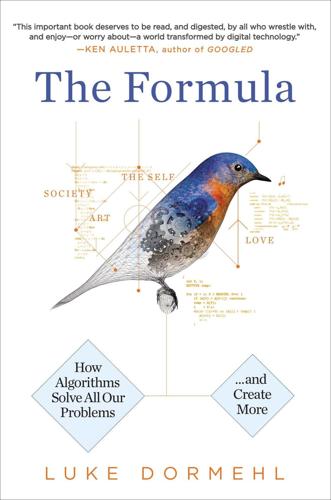
The Formula: How Algorithms Solve All Our Problems-And Create More
by
Luke Dormehl
Published 4 Nov 2014
Over the past decade, Google Maps has become a ubiquitous part of many people’s lives, vital to how we move from one place to another on a daily basis. As journalist Tom Chivers wrote in the Daily Telegraph, “Of all of the search giant’s many tentacles reaching octopus-like into every area of our existence, Maps, together with its partner Google Earth and their various offspring, can probably claim to be the one that has changed our day-to-day life the most.”31 In 2011, while speaking to the website TechCrunch, Daniel Graf, the director of Google Maps for mobile, asked rhetorically, “If you look at a map and if I look at a map [my emphasis], should it always be the same for you and me?
…
(Winner) 134 Dodds, Peter 172–76 Dominguez, Jade 25 Dostoyevsky, Fyodor 118 Dourish, Paul 231 Dow Jones 219 drunk driving 142–44 Eagle, Nathan 85 Ecker, David 206–7, 219 eHarmony 71, 74–77, 88 see also Internet; love and sex; Warren, Neil Clark Eisenstein, Sergei 178 Electric Dreams 103 Ellul, Jacques 5, 56 EMD Serono 58 emotion sniffing 51–52 Emotional Optimisation 200–201 Enchanted Loom, The (Jastrow) 96 entertainment, see art and entertainment Epagogix 165–68, 170–72, 176, 179, 191, 203, 205 Eric Berne Memorial Scientific Award 23 Essay on the Moral Statistics of France (Guerry) 117 “Experimental Study of Inequality and Unpredictability in an Artificial Cultural Market” 173 Facebook 232, 241 and Facedeals 20 and facial recognition 215 how algorithms work with 2 jobs at 27 profiles, and people’s success 30–31 profiles, traits inferred from 37–38 Timeline feature on 38–39 and YouAreWhatYouLike 37 Facedeals 20 facial recognition and analysis 20, 33, 91, 146, 151, 193, 215 and Internet dating 78 Failing Law Schools (Tamanha) 216 Family Guy 196 Farewell to the Working Class (Gorz) 217–18 Fast Company 3, 35, 128, 220 on Amazon 44–5 Faster Than Thought (Bowden) 184 Faulkner, William 187 Feldman, Konrad 18–19 films, see art and entertainment Filter Bubble, The (Pariser) 47 Fincher, David 189 Find the Love of Your Life (Warren) 73 FindYourFaceMate 78 Fitbit 13 FitnessSingles 78 Flash Crash 219 flexitime 43 Food Stamp Act (US) 154–55 Ford, Henry 44 Foucault, Michel 101 Fourastie, Jean 219 Freud, Sigmund 11 Friedman, Milton 218 Galbraith, Robert 187 Gale, David 62–63, 66 Galton, Francis 31–32 gaming technology 32–33 Gass, John 148 Gates, Bill 182 Geek Logik (Sundem) 67–68 gender reassignment 26 GenePartner 77–78 Generation X (Coupland) 16 Gibson, William 194n Gild 25–26, 29–30 Gillespie, Tarleton 233 Gladwell, Malcolm 211 Goldman, William 161, 173 Good Morning America 67 Google 201–2 and auto-complete 225–27 claimed objectivity of 220–21 differentiated results from 46–48 dynamic-pricing patent granted to 50; see also differential pricing employment practices of 41–42 and facial recognition 215 Flu Trends algorithm of 238–39 how algorithms work with 2 and inadvertent racism 151 and Lake Wobegone Strategy 27–29 Levy’s study of 41 and news-outlet decline 225–27 People Analytics Group within 41–42; see also web analytics and self-driving cars 143, 213 Slate article on 41 and UAL 229 Google Earth 135 Google Glass 14, 26 Google Maps 16, 134–35 Google Street View 227 Google Translate 215, 221 Gorz, André 217 Gottschall, Jonathan 186 Gould, Stephen Jay 33–34 Graf, Daniel 135 graph theory 182 Grindr 89, 152 Guardian 84 Guattari, Félix 48, 54 Guerry, André-Michel 114–18 Gusfield, Joseph 142–43 Halfteck, Guy 32–34 Hansen, Mark 53 Hanson, Curtis 167 Heaven’s Gate 167 Henry VI (Shakespeare) 125–26 Her 103 Hitchcock, Alfred 17 Hogge, Becky 44 Holmes, Katie 68–69 Holmes, Oliver Wendell Jr. 158 Horkheimer, Max 179, 205 House of Cards 188–89 House of Commons, rebuilding of 45 How the Mind Works (Pinker) 80 Human Dynamics (at MIT) 85 Hume, David 199–200 Hunch 37, 234 Hunger Games, The 169 Hutcheson, Joseph C.
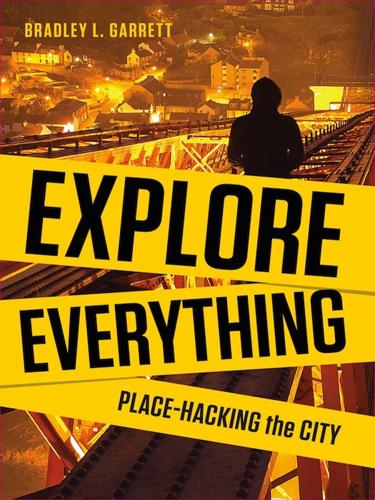
Explore Everything
by
Bradley Garrett
Published 7 Oct 2013
That climb was the beginning of two weeks on the road that ended with something even more ambitious: a thirty-metre abseil down a construction shaft to gain access to the Antwerp Pre-metro, a system of tunnels and stations under the southwestern suburbs of the city, where tracks were never laid and trains never run. The underground site has been abandoned since the 1980s, and we wanted to walk its length. It was 5 August, and although it was warm out, it was spitting rain as Guts pulled the car up to the curb next to the massive black hole we had found with Google Earth on Winch’s Blackberry. Winch jumped out of the front seat and hopped over a fence to cross the street. I looked over at ‘Gary’ – his eyes were bloodshot, his shirt was stained with blood and mud after weeks on the road vaulting barbed-wire fences, being chased by dogs and sleeping in derelict buildings, and he had a nest of petrol station food wrappers and plastic bottles around his feet.
…
Dan Salisbury, sitting next to me and on his first trip to the continent, started jumping around and clapping, saying, ‘Let’s go climb that!’ and ‘Ooh, that looks old!’ Winch and I were drinking Chimay that we’d picked up at a petrol station, and Winch, as usual, was perusing photos on the Internet and scrolling around on his cracked Blackberry, looking at an aerial view of our next location on Google Earth, trying to find a possible entry point. He turned to us slowly and said, ‘So, you guys, we’re staying in a hotel tonight’ – everyone looked stunned – ‘that closed in 1996!’ And we all erupted in riotous laughter. Urban explorers are fascinated by the flotsam of the built environment, locating sites of haunted memory, seeking interaction with the ghosts of lives lived.5 When these places are located, their fragile deteriorations are captured in photos, the snap of the camera shutter like an exploding chemistry experiment where past, present and future are fused.6 Taking the photograph creates a moment of temporal juxtaposition, giving us, as the artist Robert Smithson once wrote, an ‘illusion of control over eternity’.7 In abandoned bunkers, hospitals and industrial sites, we found moments caught between the present and the past, confrontations that flared up with unexpected material traces.

The Smartphone Society
by
Nicole Aschoff
This core belief in the power of technology and data is part of a broader worldview encapsulated in popular Silicon Valley sayings such as “Move fast and break things” and the abbreviated “Ask for forgiveness, not permission.” Google never asked permission to photograph the front of everyone’s home, link it to a physical address, and put it on the web. Nor did the company ask permission for its Google Earth cars, kitted up with special equipment, to vacuum up unencrypted Wi-Fi traffic (usernames, passwords, emails, photos, videos) as they drove around taking photographs. Incidentally, in that case, Google didn’t ask for forgiveness either; it claimed that it had a right to the data, just as someone has the right to listen to a radio station in their car.
…
“Abrams, Jenna,” 109 ACLU (American Civil Liberties Union), 21, 22, 96, 148–49, 153, 176n28 Acxiom, 72, 77 addiction to social media, 65–69 Admiral, 78, 79 Adolfsson, Martin, 84 AdSense, 52 Advanced Research Projects Agency Network (ARPANET), 80 advertising: data collection and, 76–77, 83–84; on Facebook, 47–48; on Google, 52; political, 149 AdWords, 52 Afghanistan, politics in, 95–96 age discrimination, 149 AI Now, 129, 157 Airbnb, 42, 119, 120, 148 al-Abed, Bana, 90 al-Abed, Fatemah, 90 Aldridge, Rasheen, 91 algorithm(s): for consumer categories, 77; in dystopian future, 129–30, 131; in politics, 109–10; recommender, 67; search, 51–52, 53 algorithmic accountability, 151, 157–59 “algorithmic management,” 32–34 Alibaba, 4, 42 Allard, LaDonna Brave Bull, 104 aloneness, 7 Alphabet, 41, 55, 76, 122, 150 Alpha Go Zero program, 122 alter-globalization activists, 91 Amazon: acquisitions by, 41; and CIA, 81; in Europe, 150; marketplace model of, 150; as monopoly, 53–54; and new capitalism, 118–19; as new titan, 38–41, 44, 45; power of, 54–55; Rekognition software of, 149; tax evasion by, 49; warehouse workers at, 31–32, 33, 34; working conditions at, 46 Amazon Shopping, 30 Amazon Web Services (AWS), 41 American Academy of Pediatrics, 9 American Association of People with Disabilities, 55 American Civil Liberties Union (ACLU), 21, 22, 96, 148–49, 153, 176n28 American Dream, 120–21 American Library Association, 55 amplification, 91 analog networks, in cognitive mapping, 143 Android operating system, 39, 41, 53, 69, 70–71, 72 “angel investor,” 120 Ant Financial, 42 antidiscrimination laws, 149 antitrust laws and practices, 43–44, 52–53, 55, 150 AOL, data collection from, 81 app(s): top ten, 38 “app dashboard,” 69 app jobs, 30–34, 35, 137 Apple: data collection from, 81; in Europe, 150; low-paid workers at, 147; as new titan, 42; refusal of “right to repair” by, 155; supply chain of, 28–29; tax evasion by, 49–50; working conditions at, 46 appropriation, frontiers of, 73–76 appwashing, 34, 35, 146 “Arab Spring,” 97 Ardern, Jacinda, 93 ARPANET (Advanced Research Projects Agency Network), 80 artificial intelligence, 121–22, 123, 130 aspirational story, 120 assembly workers, 28–29 Athena, 42 AT&T, 29, 42, 43, 71 attention, 7 Audible, 41 Australia, justice in, 21 automation, 128, 131 automobiles, analogy between smartphones and, 2–3, 161, 162 autonomy, 117, 124 AWS (Amazon Web Services), 41 bad behavior, 138–39 Baidu, 42 Bannon, Steve, 105 Barlow, John Perry, 124 Bellini, Eevie, 24 Berners-Lee, Tim, 40 Beyoncé, 61, 107 Bezos, Jeff, 38, 44, 49, 54, 118–19 Bharatiya Janata Party (India), 93 big data, 76, 83–84, 145 Binh, Huang Duc, 95 black(s): police violence against, 17–23, 35, 169n6, 169n13 Blackberry, 6 “black-box algorithms,” 151 Black Lives Matter (BLM), 89–90, 100–102, 104, 107, 111 Blades, Joan, 91 blockchains, 124 body cameras worn by police, 22 book publishers, 172n40 boredom, 11 bots, 109 Boyd, Wes, 91 boyfriend, invisible, 24 Boyle, Susan, 63 Brazil, politics in, 97 Brin, Sergei, 38, 41, 54, 119, 148 Brown, Michael, Jr., 22, 89–90, 91, 101–2 Buffett, Warren, 41 Bumble, 23, 91 Bumblehive, 81 Burke, Tarana, 108 Bush, George W., 99 Calico, 41 California Consumer Privacy Act, 150 “CamperForce,” 31–32 Canales, Christian, 21 cancer, 7 candidates, social media use by, 103–5 Capital G, 41 capitalism: chameleonesque quality of, 116–17; crony, 105; and frontiers, 72–79; maps of, 143–44; neoliberal, 69, 102, 112–13, 117–18, 144–45; smartphones as embodiment of, 161–62; spirit of, 115–18; surveillance, 8 capitalist frontiers, government and, 80–81 carbon footprint, 82, 175n77 Carnegie, Andrew, 37, 54, 57 Castile, Philando, 20, 35 CatchLA, 62 caveats, 14–15 celebrities, in digital movements, 91 celebrity culture, 64–65 censorship, 95 Center for American Progress, 55 Center for Responsive Politics, 56 Central Intelligence Agency (CIA), 81, 95, 96, 138, 175n74 centrism, 112 Chadaga, Smitha, 89 change agent, 12 Chan, Priscilla, 56 Chan Zuckerberg Initiative (CZI), 56 Charles, Ashley “Dotty,” 109 Charlottesville, Virginia, 106–7, 111 Chesky, Brian, 120 children, 8, 9, 11–12, 84 China, 4, 42, 94–95 Chronicle, 41 CIA (Central Intelligence Agency), 81, 95, 96, 138, 175n74 Cienfuegos, Joaquin, 20–21 City of the Future, 124 Clinton, Bill, 43, 91, 99 Clinton, Hillary, 50, 107 Clooney, George, 91 “the cloud,” 82 cloud storage facility, 81 coercive relationships, 137–38, 152–54 cognitive maps and mapping, 143–59; algorithmic accountability in, 151; antidiscrimination laws in, 149; coercive and unjust relationships in, 152–54; defined, 143; digital and analog networks in, 143; digital commons in, 156–59; ecological externalities in, 145; economic implications in, 151–52; internet access for poor and rural communities in, 149–50; lacunae in, 145; low-paying jobs in, 146–49, 153–54; monopoly in, 150; political advertising in, 149; power in, 145; and principles of smartphone use, 152–59; privacy in, 150–51; selfish or immoral behavior in, 154–56; sociotechnical layers of, 145 collateral damage, 96 collective action, 155–56 Comcast, 29, 71 comic books, 11 commodification of private sphere, 144 Communications and Decency Act, 51 communities, on-line, 64 community broadband initiative, 149–50 Community Legal Services, 171–72n32 Compass Transportation, 147 Computer and Communications Industry Association, 55 “connected presence,” 6 connection, 44, 63–64, 143, 162 connectivity, 122 Connolly, Mike, 94 consumer(s): vs. producers, 28–29 consumer categories, 77 consumer scores, 77–78 consumption, 83, 138–39 content algorithms, 51–52 content creation, 74–79 contingent workers, 30 convenience, 29–30, 35 Cooperation Jackson, 155 cop-watch groups, 20–21 “The Counted,” 19, 169n6 “creative monopoly,” 44 creativity, 117 credit scores, 78–79 creepin”, 65 critiques, 7–8 crony capitalism, 105 CrushTime, 24 Cruz, Ted, 92 “Cuban Twitter,” 95 Cucalon, Celia, 48 Cullors, Patrisse, 100–102 cultural capital, 62 “custom breathers,” 69 “customer lifetime value score,” 78 “cyberspace,” 82 CZI (Chan Zuckerberg Initiative), 56 Dakota Access Pipeline Protests, 103–4, 110 dashboard apps, 132 data brokers, 72, 77 data centers, energy use by, 82 data collection, 70–72, 83–84, 137, 150–51, 156–59 data mining, 76–79 data ownership, 135–36 “data smog,” 72 Data & Society, 151, 179n20 data vendors, 76 datification, 156–57, 161 dating apps, 23–27, 35 decentralization, 101–2, 120 decommodification, 156–57 DeepMind, 41, 79, 122, 157 Deliveroo, 32–33, 153 Department of Homeland Security, 149 Desai, Bhairavi, 146 Descartes, René, 67 Diallo, Amadou, 19 Diapers.com, 41 dick pics, 25 Dick’s Sporting Goods, 91 digital-analog political model, 104, 110–12, 145, 162 digital commons, 139–41, 156–59 digital divide, 28–29, 35 “digital exclusion,” 29 digital frontier, limits of, 82 digital justice, 17–23, 152, 157, 169n6, 169n13 digital networks, 143 digital platforms, 44 “digital redlining,” 29 “digital well-being,” 69 disconnection, 132–33 discrimination in housing, 47–48 divides, 17–36; built-in, 28–34, 35; related to justice, 17–23, 169n6, 169n13; related to sexuality, 23–27, 35 division of labor, 74–75 Dobbs, Tammy, 129 documentation, 62 domestic violence, 25 DoorDash, 33–34, 146–47 dopamine driven feedback loops, 67 double standard, 25–27, 35 drone warfare, 95 “dual economy,” 12–13 dumbness, 7, 9 “dumb phone,” 1, 8, 132, 167n15 dystopian future, 125–26, 128–30, 131 eBay, 147, 148 Echo Look device, 84 ecological externalities, 145 ecological limit of digital frontier, 82–83, 175n77 economic crisis (2008), 98–100, 117–18 economic divide, 13–14 economic implications, in cognitive mapping, 151–52 economic nationalism, 105 “ecosystems,” 40 Eddystone, 78 education, 13 Edwards, Jordan, 18 Egypt, 92, 97 elderly Americans, 63–64, 84 Electronic Frontier Foundation, 55, 124 Elliot, Umaara, 90 Ellison, Keith, 45 emails: vs. phone calls, 6; scanning of, 70–71 Emerson, Ralph Waldo, 133 employment relationships, 137 encryption, 81, 175n74 energy consumption, 151–52, 154–55; by physical elements of digital life, 82, 175n77 entrepreneurship, 120–21 environmental justice, 154–55 Epsilon, 72 Equal Credit Opportunity Act, 78 Estrada, Joseph, 90–91 Europe, American tech titans in, 150 European Union (EU), 49, 52–53, 150–51 experience economy, 62, 83 exploitation of labor, 75 externalization of work and workers, 31 Facebook: acquisitions by, 41; addiction to, 66–67, 69; and antidiscrimination laws, 149; credit ratings by, 79; data collection by, 71–72, 76, 81, 84; demographics of, 84; discrimination in advertising by, 47–48; employees organizing at, 148; in Europe, 150; Free Basics by, 41–42, 50; low-paid workers at, 147; managing impressions on, 63; as monopoly, 53–54, 172n46; and new capitalism, 124, 136; as news source, 50–51; as new titan, 38–39, 40, 41–42, 44–45; power and influence of, 56; tax evasion by, 49; time spent on, 60 Facebook Live, 84 Facebook Pixel, 72 “Facebook Revolution,” 97 facial recognition software, 129, 149 Fair Housing Act, 48 fake news, 50–51, 56 Federal Bureau of Investigation (FBI), 149 feedback loop, 66–67 “Feminist Five,” 108 feminist movement, 107–8 Ferguson, Missouri, 89–90, 101–2 Fields, James Alex, Jr., 106 filter bubbles, 53, 109–10 financial crisis (2008), 98–100, 117–18 fintech companies, 78–79 flexibility, 117 FlexiSpy, 25 FOIA (Freedom of Information Act) requests, 149 food delivery apps, 32–33 food pictures, 62 forced arbitration, 148 Ford, Henry, 37, 124 Fordlandia, 124 Ford Motor Company, 37, 38, 44 Fowler, Susan, 126–27 FoxConn, 28 framing of analysis of cell phones, 12–14 Free Basics, 41–42, 50 Freedom of Information Act (FOIA) requests, 149 “free market” competition, 98 free speech, 138 Friedman, Patri, 124 frontier of social media, 59–86; addiction to, and fears about, 65–69; and big data, 82–86; characteristics of, 59–65; and government, 80–81; and privacy, 69–72; and profit, 72–79 Fuller, Margaret, 133 Galston, Bill, 45 gamification, 23–24, 146 Garza, Alicia, 100–102 Gassama, Mamoudou, 115 Gates, Bill, 56, 130 General Data Protection Regulation (GDPR), 150–51, 156 Geofeedia, 96 geopolitics, 95–96, 144 Germany, 3 Ghostbot, 24 gig economy, 137 Gilded Age, 1–2, 11, 54 global divides, 28–29 globalization, 98 Global Positioning System (GPS), 5 Gmail, 38, 71 Goodman, Amy, 104 Google: addiction to, 69; advertising on, 76; companies owned by, 41; data collection by, 70–71, 76, 81, 150; employees organizing at, 147–48; in Europe, 150; immoral projects at, 154; and intelligence agencies, 81; lobbying by, 55; low-paid workers at, 147; molding of public opinion by, 55; as monopoly, 52–54; and new capitalism, 119–20, 123, 136; as new titan, 38, 39, 40, 41, 43–45, 56; for online search, 52; power and influence of, 55–56; research funding by, 55; “summer camp” of, 55; tax evasion by, 49, 50; use by children, 84; working conditions at, 47 Google Calendar, 71 Google Chrome browser, 53 Google Drive, 71 Google Earth, 123 Google Fiber, 41 Google Images, 131 Google News, 50 Google Play, 72 Google Search, 38, 41, 53 Google Shopping Case, 52–53 Google Translate, 10 government: and capitalist frontiers, 80–81; and Silicon Valley, 124; surveillance by, 137–38, 144, 148–49 government tracking, 94–95 GPS (Global Positioning System), 5 Grant, Oscar, III, 18 Gray, Freddie, 22, 96 Great Pessimism, 118, 119 Great Recession, 118 Greece, 97 greenhouse emissions, 82 Green New Deal, 103, 151–52, 154, 179n22 Greenpeace, 157 Grindr, 23 gun violence, 90, 91, 110, 111 GV, 41 habitus, 62 Happn, 23, 24 Harari, Yuval Noah, 129–30, 132 Hearst, William Randolph, 50 Herndon, Chris, 56 Heyer, Heather, 106 Hirschman, Albert, 133 household expenses, 13 housing, discrimination in, 47–48 human, fear of becoming less, 67–68 iBeacon, 78 IBM, 149 ICE (Immigration and Customs Enforcement), 21, 148 ICT (information and communication technologies) sector, energy used by, 82 ideals, 120 “identity resolution services,” 77 ILSR (Institute for Local Self-Reliance), 149–50, 153 Immigration and Customs Enforcement (ICE), 21, 148 immoral behavior, 138–39, 154–56 impressions, management of, 62–63 income discrepancy, 12–13 independent contractors, 33–34, 137, 153 India, 4, 42, 60, 93 individualism, 117, 118 information and communication technologies (ICT) sector, energy used by, 82 injustice, 17–23, 169n6, 169n13 In-Q-Tel, 96 insta-bae principles, 61–62 Instacart, 30, 146 Instagram: addiction to, 69; content on, 60, 61, 62; creepin’ on, 65; data collection from, 72; demographics of, 61; microcelebrities on, 60; as new titan, 38, 41; time spent on, 60; value of, 74 Institute for Local Self-Reliance (ILSR), 149–50, 153 insurance companies, data mining by, 79 intelligence agencies, and capitalist frontiers, 81 internet: access for poor and rural communities to, 149–50; access to high-speed, 5, 29; creation of, 80; early days of, 40; government shutdown of, 94; smartphone connection to, 10 Internet Association, 45 Internet Broken Brain, 66 Internet.org, 41 Internet Research Agency, 109 internet service providers, and privacy, 71–72 inventions, new, 11 investors, 120–21 invisible boyfriend, 24 iPhone, 6, 42 Iron Eyes, Tokata, 104 Jacob’s letter, 127 Jacobs, Ric, 127 Jaffe, Sarah, 91 James, LeBron, 92 Jenner, Kris, 59 Jigsaw, 41 Jobs, Steve, 2, 6, 42 Joint Special Operations Command, 95 Jones, Alex, 111 Jones, Keaton, 109 justice, 17–23, 152, 157, 169n6, 169n13 Kalanick, Travis, 126, 127 Kardashian, Kim, 59 Kardashian, Kylie, 59 Kasky, Cameron, 90 Kattan, Huda, 60 Kellaway, Lucy, 1 Kennedy, John F., 88 Kerry, John, 56 Keynes, John Maynard, 117 Khosla, Sadhavi, 93 King, Martin Luther, Jr., 97 King, Rodney, 19 Klein, Naomi, 104 Knight First Amendment Institute, 93, 175n14 Knoll, Jessica, 108 Kreditech, 78–79 Kristol, Bill, 45 Kurzweil, Ray, 123 Lanier, Jaron, 67, 70, 135 Lantern, 95 law enforcement, surveillance by, 96–97, 137–38, 176n28 “leaners,” 29 Lean In (Sandberg), 107 Lehman Brothers, 98 Levandowski, Anthony, 123 LGBTQ community, 10, 64 “lifestyle politics,” 133 “like” button, 66 Lind, William, 105 “listening tour,” 56 Liu Hu, 94 live chats, 5 livestreaming of police violence, 20–21 lobbying, 55, 56 location data, 71 logistics workers, 31 Loon, 41 Loop Transportation, 147 Losse, Katherine, 124 love, 23–27, 35 low-income households, access to high-speed internet by, 29 low-paying jobs, 146–49, 153–54 Luxy, 23 Lyft 30, 31, 33, 146, 153 Lynd, Helen, 2, 3 Lynd, Robert, 2, 3 Lynn, Barry, 56 machine learning, 76, 121–22, 174n52 “machine zone,” 8 Macron, Emmanuel, 93 mainstream media, bypassing of, 91 Ma, Jack, 42 Makani, 41 mamasphere, 64 March for Our Lives, 104 March of the Margaridas, 108 Marjorie Stoneman Douglas (MSD) High School, 90 marketification, 161 Markey, Ed, 152, 179n22 marriage, expectations and norms about, 24–25 Marshall, James, 17–19 Marshall, Tanya, 17–19 Martin, Trayvon, 22, 100 Marx, Karl, 67 mass shootings, 90, 91, 110, 111 Match.com, 23, 24 Match Group, 24 Matsuhisa, Nobu, 62 Maven, 147–48 McDonald, Laquan, 18 McInnes, Gavin, 106, 107, 111 McSpadden, Lezley, 101 meaning, sense of, 64–65, 162 Medbase200, 77 men’s work, 75 mental health of children, 8 meritocracy, 121 Messenger: data collection from, 72 Messenger Kids, 84 metadata, 72 #MeToo movement, 108 microcelebrities, 60 microchoices, 69 Microsoft: and City of the Future, 124; data collection from, 81; employees organizing at, 148; in Europe, 150; immoral projects at, 154; as new titan, 42, 43, 55, 56 Middleton, Daniel, 60 “Middletown,” 2–3 Middletown: A Study in Contemporary American Culture (Lynd and Lynd), 2–3 military, 80–81, 95 mind-body divide, 67–68 miners, 28 Minutiae, 84 misogyny, 25 Mobile Devices Branch of CIA, 81, 95 Mobile Justice MI app, 21, 169n13 Modi, Narendra, 93 Mondragon, Elena, 22–23 monetization, 59, 79 money accounts, mobile, 10 monopolies, 43–46, 52–53, 150 Morgan, J.

Seeds of Hope: Wisdom and Wonder From the World of Plants
by
Jane Goodall
Published 1 Apr 2013
As I told you, I don’t pretend to understand the sophisticated technology, but I certainly understand how it helps us in the field. And Rebecca Moore, of Google Earth Outreach program, you have been a staunch supporter ever since we first met and you told me how you had used satellite imagery to show your local community that plans to log a pristine forest would endanger the community’s children, since helicopters carrying huge tree trunks would have to fly right over the school. And this saved the forest. I was so impressed—and from there you have gone on to give us huge support. Google Earth, thanks to your efforts, is providing the Android smartphone tablets and cloud technology to help local communities monitor their forests around Gombe and Masito-Ugalla in Tanzania.
…
Initially, this concept was flawed, since it was almost impossible to monitor its effectiveness. A government, or village leadership, could accept money to protect their forest but continue to cut down the trees undetected. Nonetheless, gradually new technology was making it possible, in cooperation with DigitalGlobe, Google Earth, and Esri, to monitor the situation from space using satellite imagery. Another criticism of REDD was that it showed a lack of concern for the welfare of villagers: if they were suddenly deprived of their livelihood—not allowed to cut down trees for charcoal or make new clearings to grow food for their families, for example—they would suffer.
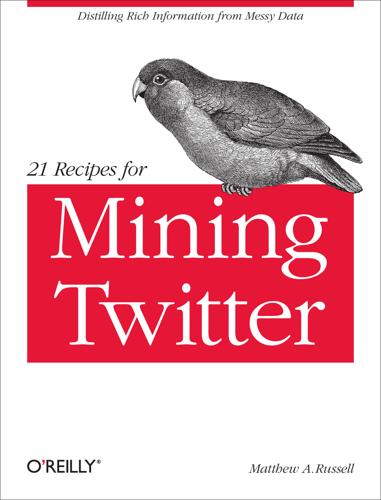
21 Recipes for Mining Twitter
by
Matthew A. Russell
Published 15 Feb 2011
. _, screen_name_to_location, _ = analyze_users_in_search_results(t, Q, 2) locations = screen_name_to_location.values() location2coords, location2description = geocode_locations(g, locations) Once you’ve successfully resolved location descriptions to geocoordinates, you can easily create a KML file and visualize the locations in Google Maps or Google Earth. 60 | The Recipes
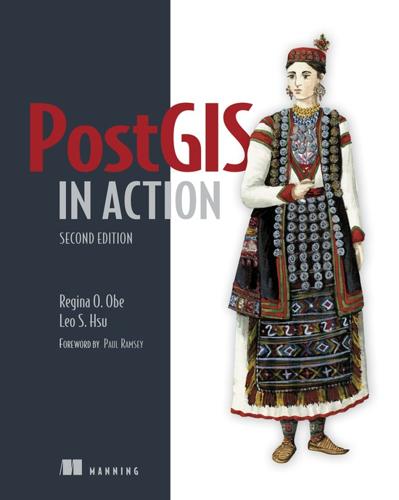
PostGIS in Action
by
Regina O. Obe
and
Leo S. Hsu
Published 2 May 2015
The types of people we’ve found are most attracted to PostGIS and are best suited for reading this book are listed here. GIS practitioners and programmers You know everything about data, geoids, and projections. You know where to find sources of data. You can create stunning applications with ArcGIS, MapInfo, Google Earth, OpenLayers, Adobe Flex, Silverlight, or other Ajax-enabled toolkits. You’re adept at generating data sources in Esri shapefiles, using MapInfo, and creating cartographic masterpieces. You may even be able to add and extract data from a spatially enabled database, but when asked questions about the data, you’re stuck.
…
Export PostGIS table and query to KML These examples always include a NameField argument. This tells ogr2ogr which field to use as the KML title. When exporting multiple tables, ogr2ogr places them all into the same KML file. Take a look at the KML generated by the preceding multi-table export in Google Earth, and you’ll see two layers in the biketrail.kml file: one for track_point and one for tracks. Export to MapInfo TAB file format using ogr2ogr The next example outputs to MapInfo TAB format. Unlike KML, which is always in WGS 84 lon/lat (EPSG 4326), MapInfo data can be in any spatial reference system.
…
ST_AsBinary is the OGC- and SQL/MM-compliant version, whereas ST_AsEWKB is a PostGIS-specific version that includes the SRID. 6.1.2. Keyhole Markup Language (KML) Keyhole Markup Language is an XML-based format created by Keyhole, Inc., to render geospatial data in its applications. KML gained enormous popularity after Google acquired Keyhole and integrated KML into Google Maps and Google Earth. OGC accepted KML as a standard transport format in its own right. The PostGIS geometry and geography function for exporting to KML is called ST_AsKML. The default output is KML version 2 with 15-digit precision. ST_AsKML isn’t one function, but several with the same name that take different arguments.
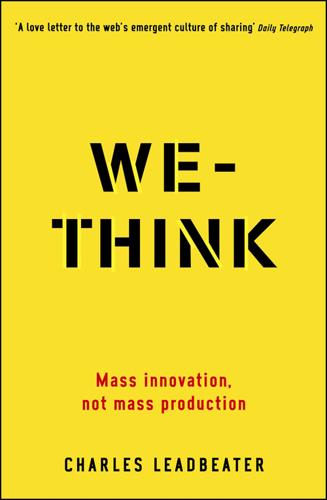
We-Think: Mass Innovation, Not Mass Production
by
Charles Leadbeater
Published 9 Dec 2010
The core will come from trusted sources of high-quality data, provided by the founding institutions: the Field Museum of Natural History at Harvard University, three other leading US institutions and a consortium of the world’s 10 largest natural-history libraries, including London’s Natural History Museum and the Botanical Gardens at Kew. The EOL will also include user-generated content filtered by a three-step process of quality control. Only material that meets the gold standard will be visible on the site to everyone. The EOL plans to engage citizen scientists with tools developed with Google Earth to allow people to log observations of specimens. Science in future will not be solely a collaboration among scientists across disciplines and time zones. More sciences will acquire a following of citizen scientists who will work alongside the professionals. Astronomy is a prime example. Like most sciences, astronomy started with amateurs.
…
WikiHistory counter.li.org/ english.ohmynews.com/ www.fark.com www.ige.com www.plastic.com portal.eatonweb.com www.slashdot.org www.technorati.com/about www.worldofwarcraft.com INDEX 42 Entertainment 10, 11 A ABC 173 academia, academics 6, 27, 48, 59 Acquisti, Alessandro 210 Adam, James 95 adaptation 109, 110, 121 advertising 104, 105, 129, 173, 180, 219 Aegwynn US Alliance server 99 Afghanistan 237 Africa broadband connections 189 mobile phones 185, 207 science 196 use of Wikipedia 18 Aids 193, 206, 237 al-Qaeda 237 Alka-Seltzer 105 Allen, Paul 46 Altair BASIC 46 Amadeu, Sérgio 202 amateurism 105 Amazon 86 America Speaks 184 American Chemical Society 159 anarchy cultural 5 Wikipedia 16 Anderson, Chris: The Long Tail 216 Apache program 68 Apple 42, 103, 104, 135, 182 iPhone 134 iPods 46 Arendt, Hannah 174, 176 Argentina 203 Arrayo, Gloria 186 Arseblog 29, 30 Arsenal Football Club 29, 30 Arsenal.com 29 arXiv 160 Asia access to the web 5, 190 attitude to open-source 203 and democracy 189 mobile phones 166, 185 and open-source design communities 166–7 Ask a Ninja 57, 219 assembly line 93, 130 assets 224 astronomy 155, 162–3 authority 110, 115, 233 authorship and folk culture 57, 58 and mapping of the human genome 62 Azerbaijan 190 B bacteria, custom-made 164 Baker, Steve 148 Banco do Brazil 201 Bangladesh 205–6 banking 115, 205–6 Barber, Benjamin: Strong Democracy 174 Barbie, Klaus 17 Barbie dolls 17 Barefoot College 205 barefoot thinking 205–6 Barthes, Roland 45 Batchelor, Charles 95 Bath University 137 BBC 4, 17, 127, 142 news website 15 beach, public 49, 50, 51 Beach, The (think-tank) xi Bebo 34, 85, 86 Bedell, Geraldine x, xii–xiii Beekeepers 11, 15 Benkler, Yochai 174 The Wealth of Networks 194 Berger, Jorn 33 Bermuda principles 160 Billimoria, Jeroo 206 BioBrick Foundation 164 biology 163 open-source 165 synthetic 164–5 BioMedCentral 159 biotechnology 154, 163–4, 196–7, 199 black fever (visceral leishmaniasis) 200 Blackburn Rovers Football Club 29 Blades, Joan 188 Blizzard Entertainment 100 Bloc 8406 191 Blogger.com 33 blogs, blogging 1, 3, 20, 29–35, 57, 59, 74, 75, 78, 86, 115, 159, 170, 171, 176, 179, 181–2, 183, 191, 192, 214, 219, 229 BMW 140 Bohr, Neils 93 bookshops 2 Boulton, Matthew 54–5 Bowyer, Adrian 139, 140, 232 Boyd, Danah 213, 214 Bradley, Bill 180 Brand, Stewart 39–40, 43, 63 brands 104, 109 Brazil 201–2 Brenner, Sydney 62–5, 70, 77, 118, 231 Brief History of Time, A (Hawking) 163 Brindley, Lynne 141, 142, 144–5 British Library, London 141, 142, 144, 145 British Medical Journal 159 British National Party 169 Brooks, Fred 77–8 Brooks Hall, San Francisco 38 BT 112 bugs, software 70, 72, 165 bulletin boards 34, 40, 68, 77 Burma 190, 191 Bush, President George W. 18, 33–4, 180, 183 business services 130, 132, 166 C C. elegans (Caenorhabditis elegans) 62–5 Cambia 197 Cambridge University Press 159 camcorders 11 Campbell, Anne 176 Cancer Genome Atlas 160 capital 224 capitalism 224 commune 121, 125 managerial 24 modern 91, 121 social dimension of 90 Carlson, Rob 164 Carnegie Mellon University 210 cars manufacture 135–6 sharing 153 CBS 173 Center for Bits and Atoms, MIT 139 CERN (European Organization for Nuclear Research) 30–31, 159 Chan, Timothy 106, 107 chat rooms 165 Chavez, President Hugo 203 Cheney, Dick 180 Chevrolet 105 Chicago: Full Circle council project 184 China based on privileged access to information 236 creative and cultural sectors 129–30 hackers 234 Internet connection 190, 204 makes available genetic data 199 motor-cycle production 136–7 online games market 106 open-access scientific data 159–60 open-source designs 141 politics 171, 192 power struggle in 235 spending on R & D 96, 159 web censorship 190–91 Chinese Communist Party 171, 235 Chongquing, China 136 Cisco 190 Citibank 207 Citizendium 14 climate change 170, 239 Clinton, Bill 174, 188 Clinton, Senator Hillary 181, 182, 183 CNN 15 co-operatives 121, 122, 123, 188 co-ordination 109, 110–11 coffee houses, London 95 Coke 109–10, 239 Cold War 169, 235 Coles, Polly xiii collaboration 9, 22, 31, 32, 36, 67, 79–80, 81, 82 collaborative innovation 65, 70, 75 and commerce 227 computer game 99, 100 Cornish tin-mining 55 and healthcare 150 and the library of the future 145 new technologies for 227–8 open 126, 128 peer 239 public services 145, 146, 152, 153 scientific 154, 155–6 We-Think 21, 23, 24, 146 Collis, Charles 134 Columbia University 212 commerce 25, 38, 48, 52, 57, 98, 227 commons 49, 50, 51–3, 79, 80, 124, 191, 226 communes 39–40, 46, 90, 121, 122, 128 communication(s) 130, 168, 174, 206, 239 mobile 186 Communism, collapse of 6 communities collaborative 117 and commerce 48 and commons 52 conversational 63 Cornish tin-mining 55 creative 70, 95 diverse 79–80 egalitarian 27, 48, 59, 63, 64 hacker 232 healthcare 151, 152 independence of 23 of innovation 54 libertarian, voluntaristic 45 Linux 65, 227 and loss of market for local newspapers 3 meritocratic 63 open-source 45, 68, 75, 80, 83, 95–6, 102, 109, 110, 111 open-source design 166–7 of scientists 53, 228 self-governing 59, 79, 80, 97, 104, 232 sharing and developing ideas 25 web 21, 23 worm-genome researchers 62–5 community councils 77, 80, 82 Community Memory project 42–3 companies computer-games 128 employee-owned 121, 122 shareholder-owned 122, 123, 125 see also corporations; organisations computer games 60, 127, 218 children and 147 created by groups on the web 7, 23, 87 modularity 78 multi-player 7, 204 success of World of Warcraft 98–9 tools for creating content 74 and We-Think 23 computer-aided design 134 computers democratising how information is accessed 139 distrust of 39 Goa School Computers Project 200–201 laptop 5, 36, 82, 155 mini- 135 personal 39, 46, 203 punch-cards 38 and science 154, 155 viruses 3, 4 connect 67, 75–9 Connectiva 201 consumer spending 131 consumers 98–108 consumer innovators 101–3 consumption constraints 25–6 engaging 89 fans 103–4 freedom 218 and innovation risk 100–101 participant 98–108 urban 124 contribute 67, 70, 71, 72, 73, 74–5 conversation 53, 54, 63, 69, 77, 93, 95, 113, 118, 174 Copernicus, Nicolaus 162 copyright 124, 157, 196 core 66, 67, 68–9, 70 Cornell University 233 ‘Cornish’ engines 55–6, 136, 229 Cornish tin-mining industry 54–6, 63, 125, 136 corporations centralisation of power 110 closed 128 and collaborative approaches to work 109 the cost of corporate efficiency 89–90 difficulty in making money from the web 7 hierarchies 88, 110 industrial-era 88 leadership 115, 117–19 loss of stability 122 restructuring and downsizing 88–9 see also companies; organisations counter-culture (1960s) 6, 27, 39, 45, 46, 59 Counts, David 183 Craigslist 3, 40, 118, 128, 218 Creative Commons 124 creative sector 129–30 creativity 1–2, 3, 5, 6, 9, 67, 82–3 collaborative 7, 20, 58, 86, 154 collective 39, 57–8 consumers 89 corporate 91–2 emergence of 93, 96 enabled by the web 1–2, 3, 5, 19, 26, 218–21, 222, 227 freedom to create 218–21 and interaction 119 and open innovation 93 origin of 112–13 social 5, 7, 58, 59, 82, 83, 86 tools for 218, 219 Crick, Francis 52, 62, 76 crime 153, 169, 183 criminality 1, 3 crowds 23, 61, 70, 72, 77 Crowdspirit 134 cultural élite 2 cultural sector 129–30 culture academic 38 anti-industrial 27, 28 basis of 4 collaborative 135 consumerist 172 corrosion of 4 cultural anarchy 5 folk 6, 27, 56–9, 220, 226 hippie 38 individual participation 6 political 171 popular 102 post-industrial 27, 28 pre-industrial 27, 28 We-Think 28, 59, 62, 169, 194, 230, 232–3, 238 Web 2.0 45 web-inflected 27 Western 239 wiki 14 work 114 YouTube cultural revolution 3 Cunningham, Ward 35–6 cyber cafés 107, 190, 192, 201, 204 Cyworld 34, 85, 86 D Dali, Salvador 105 Darby, Newman 102 Darpa 164 David, Paul 53 de Soto, Hernando 224–5 The Mystery of Capital 224 de Vellis, Phil 182 Dean, Howard 176–7, 178, 180, 185 Dean Corps 177 Debian 66 Debord, Guy 45, 46 decentralisation 7, 13, 39, 46, 59, 78, 226, 232 decision-making 78, 82, 84, 115, 173, 174 del.i.cious 86 democracy 1, 3, 5, 6, 7, 16, 24, 170–74, 175, 176–92 basis of 174 conversational democracy at a national level 184 ‘craftsmen of democracy’ 174 Dean campaign 178 democratic advances 184 depends on public sovereignty 172 formal 195 geek 65 Homebrew 176 public debate 170, 171 and We-Think 170, 221, 239 Department for International Development (DFID) 207 Descartes, René 19–20 design 166 modular 136–7 open-source 133–5, 140, 141, 162–3, 166–7 developing world Fab Labs in 166 government attitudes to the Internet 190 impact of the web on 166 mobile phones 185–6 and open-access publishing 166 and open-source design communities 166–7 and open-source software 200–203 research and development 196 and We-Think’s style of organisation 204 diabetes 150 Digg 33 discussion forums 77 diversity 9, 23, 72, 76, 77, 79–80, 112, 121 division of labour 111 DNA description of the double helix (Watson and Crick) 52, 62, 76 DNA-sequencing 164–5 Dobson, John 102, 162–3 Doritos 105 dot.com boom 106 Dupral 68 Dyson (household-goods company) 134 Dyson, Freeman 163, 164 E E-Lagda.com 186 Eaton, Brigitte 33 Eatonweb 33 eBay 40, 44, 102, 128, 152, 165, 216–18, 221, 229, 235 Ebola virus 165 Eccles, Nigel xi economies of scale 137 economy digital 124, 131, 216 gift 91, 226 global 192 global knowledge 239 of ideas 6 individual participation 6 industrial 122 market 91, 221 a mass innovation economy 7 networked 227 of things 6 UK 129, 130 and We-Think 129 Edison, Thomas 72, 93, 95 EditMe 36 education 130, 146–50, 167, 183, 194, 239 among the poorest people in the world 2, 193 civic 174 a more convivial system 44 Edwards, John 181 efficiency 109, 110 Einstein, Albert: theory of relativity 52 elderly, care of 170 Electronic Arts 105, 106, 128, 177 Electronic Frontier Foundation 40 electronics 93, 135 Eli Lilly (drugs company) 77 Ellis, Mark: The Coffee House: a social history 95 enclosures 124 Encyclopaedia Britannica, The 15–18, 126 encyclopaedias 1, 4, 7, 12–19, 21, 23, 36, 53, 60, 61, 79, 161, 231 Encyclopedia of Life (EOL) 161, 226 Endy, Drew 164, 165 energy 166, 232, 238 Engelbart, Doug 38–9, 59 engineering 133, 166 Environmental Protection Agency 152 epic poems 58, 60 equality 2, 24, 192–7, 198, 199–208 eScholarship repository, University of California 160 Estonia 184, 234 Estrada, President Joseph 186 ETA (Basque terrorist group) 187 European Union (EU) 130 Evans, Lilly x Evolt 68, 108 F Fab Labs 139, 166, 232 fabricators 139 Facebook 2, 34–5, 53, 142, 152, 191, 193, 210 factories 7, 8, 24 families, and education 147 Fanton, Jonathan 161 Fark 33 Feinstein, Diane 176 Felsenstein, Lee 42, 43, 44 fertilisers 123 Field Museum of Natural History, Harvard University 161 file-sharing 51, 58, 135, 144, 233 film 2, 3, 4, 47, 86, 129, 216, 218, 220–21 film industry 56 filters, collaborative 36, 86 financial services 130, 132 Financial Times 118 First International Computer (FIC), Inc. 136, 141 flash mobbing 10, 11 Flickr 34, 85, 86, 210, 218–19 Food and Drug Administration (US) 92 Ford, Henry 24, 93, 96 Fortune 500 company list 122 Frank, Ze (Hosea Jan Frank) 57, 219 freedom 1, 2, 6, 24, 208, 209, 210–21, 226 French, Gordon 41, 42 friendly societies 188 Friends Reunited 34 friendship 5, 233 combinatorial 95 Friendster 34, 35 fundamentalists 232 G Gaia Online 35 Galileo Galilei 154 gambling 169 GarageBand software 57, 135, 148 Gates, Bill 46, 47, 51, 227 Gates Foundation 160 geeks 27, 29–36, 37, 38, 48, 59, 65, 179 gene-sequencing machines, automated 64 genetic engineering 164, 196–7, 235 Georgia: ’colour revolution’ 187 Gershenfeld, Neil 139–40, 166, 232 GetFrank 108 Ghana, Fab Lab in 139 Gil, Gilberto 202 Gjertsen, Lasse 56, 218 Gland Pharma 200 global warming 238 globalisation 202, 228, 239 Gloriad 155 GM 135 Goa School Computers Project 200–201 Goffman, Erving 103–4 Goldcorp Inc. 132–3, 153 Golden Toad 40 GoLoco scheme 153 Google x, 1, 29, 32, 33, 47, 66, 97, 104, 113–14, 128, 141, 142, 144, 212 Google Earth 161 Gore, Al 64 governments in developing countries 190 difficulty in controlling the web 7 GPS systems 11 Grameen Bank 205–6, 208 ‘grey’ sciences 163 grid computing 155 Gross, Ralph 210 group-think 23, 210–11 groups 230–31 of clever people with the same outlook and skills 72 decision-making 78 diverse 72, 80, 231 and tools 76–7 Guthrie, Woody 58 H Habermas, Jurgen 174 hackers 48, 74, 104, 140, 232, 234 Hale, Victoria 199 Halo 2 science fiction computer game 8 Hamilton, Alexander 17–18 Hampton, Keith 183–4 Hanson, Matt xi health 130, 132, 146, 150–52, 167, 183, 239 Heisenberg, Werner 93 Henry, Thierry 29 Hewlett Packard 47 hierarchies 88, 110, 115 hippies 27, 48, 59, 61 HIV 193 Homebrew Computer Club 42, 46–7, 51, 227 Homebrew Mobile Phone Club 136 Homer Iliad 58 Odyssey 58 Homer-Dixon, Thomas: The Upside of Down 238–9 Hubble, Edwin 162 Human Genome Project 62, 64, 78, 155, 160, 161, 226 human rights 206 Hurricane Katrina 184 Hyde, Lewis: The Gift 226 hypertext 35, 39 I I Love Bees game 8, 10–12, 15–16, 19, 20, 69, 231 IBM 47, 66, 97 System/360 computer 77 idea-sharing 37, 94, 237, 239 as the biggest change the web will bring about 6 with colleagues 27 and consumer innovators 103 dual character of 226 gamers 106 Laboratory of Molecular Biology 63 through websites and bulletin boards 68 tools 222 We-Think-style approach to 97 and the web’s underlying culture 7 ideas combining 77 and creative thinking 87 from creative conversations 93, 95 gifts of 226 growth of 222, 239 and the new breed of leaders 117–18 ratifying 84 separating good from bad 84, 86 testing 74 the web’s growing domination 1 identity sense of 229 thieves 213–14 Illich, Ivan 43–5, 48 Deschooling Society 43, 44, 150 Disabling Professions 43 The Limits to Medicine 43, 152 Tools for Conviviality 44 independence 9, 72, 231 India Barefoot College 205 creative and cultural sectors 129–30 Fab Lab in 139 Internet connection 190, 204 mobile phones 207 and One World Health 200 spending on R & D 96 telephone service for street children 206 individuality 210, 211, 215, 216, 233 industrialisation 48, 150, 188 information barriers falling fast 2 computers democratise how it is accessed 139 effect of We-Think 129 large quantities on the web 31–2 libraries 141, 142, 143, 145 looking for 8 privileged access to 236 sharing 94, 136 the web’s growing domination 1 Wikipedia 19 Innocentive 77 innovation 5, 6, 91–3, 94, 95–8, 109 among the poorest people in the world 2 biological 194 collaborative 65, 70, 75, 90, 119, 146, 195 collective 170, 238 and competition/co-operation mix 137 Cornish mine engines 54–6 corporate 89, 109, 110 and creative conversations 93, 95 creative interaction with customers 113 cumulative 125, 238 decentralised 78 and distributed testing 74 and diverse thinking 79 and education 147 independent but interconnected 78 and interaction 119 and Linux 66 local 139 a mass innovation economy 7 medical 194 open 93, 96–7, 125, 195 in open-source communities 95–6 and patents 124 pipeline model 92, 93, 97 R & D 92, 96 risks of 100–101 social 170, 238 successful 69 user-driven 101 and We-Think 89, 93, 95, 125, 126 the web 2, 5, 7, 225 Institute for One World Health 199–200 Institute for Politics, Democracy & the Internet (IPDI) 179 Institute of Fiscal Studies 131 institutions convivial 44 industrial-era 234 and knowledge 103 and professionals 3, 5 public 142, 145 Instructables site 134 Intel 97 intellectual property 75, 122, 124, 125, 234 law 124–5 intelligence, collective bloggers 33 getting the mix right 23 Google’s search system 32 I Love Bees and Wikipedia examples 8, 10–19 milked by Google 47 the need to collaborate 32 self-organisation of 8 and social-networking sites 35 the web’s potential 3, 5 International Polar Year (IPY) 156, 226 Internet broadband connection 178, 189, 192 combined with personal computers (mid-1990s) 39 cyber cafés 107, 190, 192, 201, 204 Dean campaign 177 in developing countries 190 draws young people into politics 179, 180 an early demonstration (1968) 38 and Linux 66 news source 178–9 open-source software 68 openness 233 and political funding 180 pro-am astronomers 163 used by groups with a grievance 168 in Vietnam 189–90, 191 investment 119, 121, 133, 135 Iran 190, 191 Iraq war 18, 134, 191 Israel 18 Ito, Joi 99 J Japan politics 171 technology 171 JBoss 68 Jefferson, Richard 197, 199 Jodrell Bank Observatory, Macclesfield, Cheshire 162 JotSpot 36 journalism 3, 74, 115, 170–71 Junker, Margrethe 206 K Kampala, Uganda 206 Kazaa music file-sharing system 144 Keen, Andrew 208 The Cult of the Amateur 208 Kelly, Kevin 211 Kennedy, John F. 176 Kenya 207 Kepler, Johannes 162 Kerry, John 180 Khun, Thomas 69 knowledge access to 194, 196 agricultural 194 barriers falling fast 2 collaborative approach to 14, 69 encyclopaedia 79 expanding 94 gifts of 226 individual donation of 25 and institutions 103 and networking 193 and pro-ams 103 professional, authoritative sources of 222 sharing 27, 44, 63, 70, 199 spread by the web 2, 3 Wikipedia 16, 18, 19, 195 Korean War 203 Kotecki, James (’EmergencyCheese’) 182 Kraus, Joe 36 Kravitz, Ben 13 Kuresi, John 95 Kyrgyzstan: ’colour revolution’ 187 L Laboratory of Molecular Biology, Cambridge 62–3, 77 labour movement 188 language 52–3 Lanier, Jaron 16, 210–11, 213 laptop computers 5, 36, 82, 155 lateral thinking 113 leadership 89, 115, 116, 117–19 Lean, Joel 55 Lean’s Engine Reporter 55, 63, 77 Lee, Tim Berners 30–31 Lego: Mindstorms products 97, 104, 140 Lewandowska, Marysia 220, 221 libraries 2, 141–2, 143, 144–5, 227 life-insurance industry (US) 123 limited liability 121 Linked.In 35 Linux 65–6, 68, 70, 74, 80, 85, 86, 97, 98, 126, 127, 128, 136, 201, 203, 227 Lipson Community College, Plymouth 148 literacy 194 media 236 Lloyd, Edward 95 SMS messaging (texting)"/>London coffee houses 95 terrorist bombings (July 2005) 17 Lott, Trent 181–2 Lula da Silva, President Luiz Inacio 201 M M-PESA 207, 208 MacArthur Foundation 161 McCain, John 180 MacDonald’s 239 McGonigal, Jane 11, 69 McHenry, Robert 17 McKewan, Rob 132–3, 153 McLuhan, Marshall: Understanding the Media 45 Madrid bombings (March 2004) 186–7 Make magazine 165 management authoritative style of 117 and creative conversation 118 hierarchies 110 manufacturing 130, 132, 133–7, 138, 139–41, 166, 232 niche 139 Marcuse, Herbert 43 Marin 101 Mark, Paul xi market research 101 market(s) 77, 90, 93, 102, 123, 216, 226–7 Marsburg virus 165 Marx, Karl 224 mass production 7, 8, 24, 56, 96, 227, 232, 238 Massachusetts Institute of Technology (MIT) 139, 164, 233 Matsushita 135 media 129, 130, 156, 172, 173, 182, 211 literacy 236 Meetup 179, 185 Menlo Park laboratory, New Jersey 95 Merholz, Peter 33 meritocracy 16, 63 Microsoft 46, 47, 51, 56, 75, 109–10, 126, 127, 144, 202, 203, 204, 239 Office 201 Windows 200 Windows XP 66 Middle East 170, 189, 190, 192 Milovich, Dimitry 102 ‘minihompy’ (mini homepage) 204 Minnesota Mining and Materials 121 mobile phones 5 in Africa 185, 207 in Asia 166, 185 camera phones 74, 115, 210 children and 147 in developing-world markets 207–8 with digital cameras 36 flash mobs 10 I Love Bees 11 in India 207 open-source 136, 203 politics 185–9 SMS messaging (texting) 101–2, 185, 187, 214, 215 mobs 23, 61 flash 10, 11 modularity 77, 84 Moore, Fred 41–2, 43, 46, 47, 59, 227 More, Thomas: Utopia 208 Morris, Dick 174 Morris, Robert Tappan 233 Mosaic 33 motivation 109–12, 148 Mount Wilson Observatory, California 162 mountain bikes 101 MoveOn 188–9 Mowbray, Miranda xi music 1, 3, 4, 47, 51, 52, 57, 102, 135, 144, 218, 219, 221 publishing 130 social networking test 212–13 mutual societies 90, 121 MySpace 34, 44, 57, 85, 86, 152, 187, 193, 214, 219 MySQL 68 N National Football League (US) 105 National Health Service (NHS) 150, 151 National Public Radio (NPR) 188 Natural History Museum, London 161 Nature magazine 17 NBC 173 neo-Nazis 168 Netflix 216, 218 Netherlands 238 networking by geeks 27 post-industrial networks 27 social 2–7, 20, 23, 34–5, 36, 53, 57, 86, 95, 147, 149, 153, 159, 171, 183–4, 187, 193, 208, 210, 212, 213–15, 230, 233 New Economy 40 New Orleans 184 New York Magazine 214 New York Review of Books 164 New York Stock Exchange 95 New York Times 15, 182, 191 New Yorker magazine 149 Newmark, Craig 118 news services 60, 61, 171, 173, 178–9 newspapers 2, 3, 30, 32, 34, 171, 172, 173 Newton, Sir Isaac 25, 154 niche markets 216 Nixon, Richard 176 NLS (Online System) 39 Nokia 97, 104, 119, 140 non-profits 123 Nooteboom, Bart 74 Noronha, Alwyn 200–201 Norris, Pippa 189 North Africa, and democracy 189 Nosamo 35, 186 Noyes, Dorothy 58 Nupedia 13, 14 Nussbaum, Emily 214–15 O Obama, Barack 181, 191 Ofcom (Office of Communications) 31 OhmyNews 34, 87, 204, 231 oil companies 115 Oldenburg, Henry 25, 53–4, 156 Ollila, Jorma 119 Online System (NLS) 39 Open Architecture Network (OAN) 133–4 Open Net Initiative 190 Open Office programme 201 Open Prosthetics 134 Open Source Foundation 97 OpenMoko project 136 OpenWiki 36 O’Reilly, Tim 31 organisation commons as a system of organisation 51 pre-industrial ideas of 27, 48 social 20, 64, 165 We-Think’s organisational recipe 21 collaboration 21, 23 participation 21, 23 recognition 21 Organisation for Economic Co-operation and Development (OECD) 196 organisations civic 189 open/collaborative vs. closed/hierarchical models 89, 126, 127, 128 public 152 successful 228 see also companies; corporations Orwell, George: 1984 182 Ostrom, Elinor 51–2, 80 ownership 6, 119, 120, 121–6, 127, 128, 225 Oxford University 234 P paedophiles 3, 168, 213–14 Page, Scott xi, 72 Pakistan 237 Palace of Fine Arts, San Francisco 40 parallel universes 7 participation 23, 216, 223, 230, 232 consumers 98, 100 public services 145, 146, 150, 152, 153 a We-Think ingredient 21, 24 Partido Populaire (PP) (Spain) 187 patents 55, 56, 92, 97, 102, 124, 154, 196, 197, 199 Paul, Ron 185 Pawson, Dave x–xi Pax, Salam 57 peasants 27, 48, 59 peer recognition 54, 106, 111, 156, 228–9 peer review 53, 54, 156, 165, 236 peer-to-peer activity 53–4, 135, 148, 151 People’s Computer Company 41 People’s Democratic Party (Vietnam) 191 performance art/artists 2, 10 performance management 110 Perl 68 Peruvian Congress 202 Pew Internet & American Life 31, 179 pharmaceutical industry 92–3, 195–6, 197, 199, 200 Phelps, Edmund 114–15, 220 Philippines: mobile phones 185–6 Philips, Weston 105 photographs, sharing of 34, 75, 86, 218–19 Pitas.com 33 Plastic 33 Playahead 35 podcasts 142 Poland 220–21 polar research 156 politics bloggers able to act as public watchdog 181–2, 183 decline in political engagement 171–2 democratic 173 donations 179 funding 180–81 and journalism 170–71 and mobile phones 185–9 online 183 the online political class 179 and online social networks 35, 86 political advocates of the web 173–4 racist groups on the web 169 and television 173, 183 ultra-local 183, 184 US presidential elections 173, 179 videos 182 the web enters mainstream politics 176 young people drawn into politics by the Internet 179 Popper, Karl 155 Popular Science magazine 102 pornography 169, 214 Post-it notes 121 Potter, Seb 108–9 Powell, Debbie ix power and networking 193 technological 236 of the We-Think culture 230 of the web 24–5, 185, 233 PowerPoint presentations 140, 142, 219 privacy 210, 211 private property 224, 225 Procter and Gamble (P & G) 96–7, 98 productivity 112, 119, 121, 151, 227, 232 agricultural 124 professionals, and institutions 3, 5 property rights 224 public administration 130 Public Broadcasting Service 188 Public Intellectual Property Research for Agriculture initiative 199 Public Library of Science 159 public services 132, 141–2, 143, 144–53, 183 public spending 146 publishing 130, 166 science 156–7, 159–60 Putnam, Robert 173, 184 Python 68 Q quantum mechanics 93 ‘quick-web’ 35 R racism 169, 181–2 radio 173, 176 RapRep (Rapid Replicator) machines 137, 138, 139, 140, 141, 232 Rawls, John: A Theory of Justice 194 Raymond, Eric 64 recognition 21, 223 peer 54, 106, 111, 156 record industry 56, 102 recycling 111 Red Hat 66, 227 Red Lake, Ontario 132, 133 research 166 market 101 pharmaceutical 195–6 research and development (R & D) 92, 96, 119, 196 scientific 154–7, 159–65 retailing 130, 132 Rio Grande do Sul, Brazil 201 Roh Moo-hyun, President of South Korea 35, 186 Roosevelt, Franklin 176 Roy, Bunker 205 Royal Botanic Gardens, Kew, Surrey 161 Royal Society 54 Philosophical Transactions 25, 156 Ryze.com 34 S Sacca, Chris 113, 114 Safaricom 207 St Louis world fair (1904) 75–6 Samsung xi, 203 Sanger, Larry 13, 14, 16 Sanger Centre, Cambridge 155 Sao Paolo, Brazil 201 SARS virus 165 Sass, Larry 139 satellite phones 11 Saudi Arabia 190 scanners 11 Schumacher, E.

New Dark Age: Technology and the End of the Future
by
James Bridle
Published 18 Jun 2018
It’s possible to click on any one of the thousands of little plane icons and see its track, its make and model, the operator and flight number, its origin and destination, and its altitude, speed, and time of flight. Every plane broadcasts an ADS-B signal, which is picked up by a network of amateur flight trackers: more thousands of individuals who choose to set up local radio receivers and share their data online. The view of these flight trackers, like that of Google Earth and other satellite image services, is deeply seductive, to the point of eliciting an almost vertiginous thrill – a sublime for the digital age. The dream of every Cold War planner is now available to the general public on freely accessible websites. But this God’s-eye view is illusory, as it also serves to block out and erase other private and state activities, from the private jets of oligarchs and politicians to covert surveillance flights and military manoeuvres.25 For everything that is shown, something is hidden.
…
(von Neumann), 28 Capital in the Twenty-First Century (Piketty), 112 carbon dioxide, 75 Catch-22 (Heller), 187–8 ‘cautious regulator’ theory, 94–5 CCTV, 181–2 centaur chess, 159 Chanarin, Oliver, 143 chaotic storage, 115–6 Chargaff, Erwin, 96–7 Charlie Hebdo attacks, 212 chemtrails, 192–5, 206–8, 214 children’s television, 216–7 children’s YouTube, 219, 238 Cirrus homogenitus, 196, 197 Civil Aviation Authority (CAA), 161–2 clear-air turbulence, 68 climate carbon dioxide, 75 global warming, 73, 193, 214 permafrost, 47–9, 56–7 seed banks, 52–6 turbulence, 65–9 climate change patterns disrupted by, 72–3 resilience against, 59 climate crisis, 56 Clinton, Bill, 243 Clinton, Hillary, 207, 232–3 cloning, 86–8 closed-circuit television, 181–2 cloud(s), 6–7, 8, 17, 195–6 ‘The Cloud Begins with Coal-Big Data, Big Networks, Big Infrastructure, and Big Power’ report, 64 ‘The Cloud of Unknowing,’ 9 cloudy thinking, 9 coal deposits, discovery of, 52 coastal installations, 62 Cocks, Clifford, 167 code/spaces, 37–9 code words, 175 cognition about, 135–6 artificial intelligence (AI), 139 facial recognition, 141 image recognition, 139–40 machine translation, 147 ‘predictive policing’ systems, 144–6 collectivism, totalitarianism vs., 139 Commission on Government Secrecy, 169 complex systems about, 2–3 aggregation of, 40 high-frequency trading, 14, 106–7, 108, 122, 124 complicity computational logic, 184–5 Freedom of Information, 161–2, 165, 192 global mass surveillance, 179–80 Glomar response, 165, 186 public key cryptography, 167–8 computation calculating machines, 27 Electronic Numerical Integrator and Computer (ENIAC), 27, 27–30, 33 flight trackers, 35–6, 36 IBM Selective Sequence Electronic Calculator (SSEC), 30, 30–2, 31, 146 opaqueness of, 40 computational logic, 184–5 computational thinking about, 4 evolution of, 248 importance of, 44–5 Concorde, 69, 70, 71 conspiracy chemtrails, 192–5, 206–8, 214 conspiracy theories, 195, 198–9, 205 contrails, 196–8, 197, 214 global warming, 73, 193, 214 9/11 terrorist attacks, 203–4, 206 ‘Conspiracy as Governance’ (Assange), 183 contrails, 196–8, 197, 214 Copenhagen Climate Change Conference (COP15), 199 Cowen, Deborah, 132 Credit Suisse, 109 cryptocurrency, 63 Cumulus homogenitus, 195–6 cyborg chess, 159 D Dabiq (online magazine), 212 Dallaire, Roméo, 243 darkness, 11–2 “Darkness” (poem), 201–2 dark pools, 108–9 DARPA (Defense Advanced Research Projects Agency), 33 Darwin, Charles, 78 data abundance of, 83–4, 131 big, 84 importance of, 245–6 realistic accounting of, 247 thirst for, 246 data dredging, 90–1 Debord, Guy, 103 DEC (Digital Equipment Corporation), 33 Decyben SAS, 110 Deep Blue, 148–9, 157–60 DeepDream, 153, 154–5 DeepFace software, 140 defeat devices, 120 Defense Advanced Research Projects Agency (DARPA), 33 de Solla Price, Derek, 91–2, 93 Diffie-Hellman key exchange, 167 digital culture, 64–5 Digital Equipment Corporation (DEC), 33 digital networks, mapping, 104 digitisation, 108 ‘Discussion of the Possibility of Weather Control’ lecture, 26 diurnal temperature range (DTR), 204 DNA sequencing, 93 D-Notices, 179 domain name system, 79 doomsday vault, 52–3 Dow Jones Industrial Average, 121–2 drones, 161–2 drug discovery/research, 94–5 DTR (diurnal temperature range), 204 Duffy, Carol Ann, 201 Dunne, Carey, 194–5 E Elberling, Bo, 57 electromagnetic networks, 104 Electronic Computer Project, 27 Electronic Frontier Foundation, 177 Electronic Numerical Integrator and Computer (ENIAC), 27, 27–30, 33 Elements of Chemistry (Lavoisier), 208–9 Elkins, Caroline, 183–4 Ellis, James, 167 encoded biases, 142 ‘End of Theory’ (Anderson), 83–4, 146 Engelbart, Douglas, 79 ENIAC (Electronic Numerical Integrator and Computer), 27, 27–30, 33 Enlightenment, 10 Environmental Protection Agency (EPA), 119–20 EPA (Environmental Protection Agency), 119–20 Epagogix, 130 epidemic type aftershock sequence (ETAS) model, 145–6 Epimetheus, 132–4 Equinix LD4, 104 Eroom’s law, 86, 93–6 ETAS (epidemic type aftershock sequence) model, 145–6 Euronext Data Center, 104, 105, 106 Evangelismos Hospital, 130–1 evolution, theory of, 78 exploitation, 229–30 Eyjafjallajökull, eruption of, 200–1, 202 F Facebook, 39–40, 156–7 facial recognition, 141 Fairchild Semiconductor, 80 Farage, Nigel, 194 Fat Man bomb, 25 Fermi, Enrico, 250 Ferranti Mark I, 78 fiat anima, 19–20 fiat lux, 19–20 Finger Family, 221–2, 224, 227 ‘Five Eyes,’ 174 Flash Boys (Lewis), 111–2 flash crash, 121–2, 130–1 FlightRadar24, 36, 189, 191 flight trackers, 35–6, 36 ‘Fourteen Eyes,’ 174 Fowler, R.H., 45 Frankenstein (Shelley), 201 fraud, 86–8, 91 Freedom of Information, 161–2, 165, 192 Friends’ Ambulance Unit, 20 Fuller, Buckminster, 71 Futurama exhibit, 30–1 ‘Future Uses of High Speed Computing in Meteorology’ lecture, 26 G Gail, William B., 72–3 Galton, Francis, 140 game developers, 130 Gates’s law, 83 GCHQ (Government Communications Headquarters), 167, 174, 176–9, 189 genocide, 243 ghost cars (Uber), 118–9 G-INFO, 190 global mass surveillance, 179–80 Global Positioning System (GPS), 36–7, 42–3 Global Seed Vault, 54 global warming, 73, 193, 214 Glomar response, 165, 186 Godard, Jean-Luc, 143 Google, 84, 139, 230, 242 Google Alerts, 190 Google Brain project, 139, 148, 149, 156 Google Earth, 35–6 Google Home, 128–9 Google Maps, 177 Google Translate, 147–8, 156 Government Communications Headquarters (GCHQ), 167, 174, 176–9, 189 GPS (Global Positioning System), 36–7, 42–3 Graves, Robert, 159 Gravity’s Rainbow (Pynchon), 128 gray zone, 212–4 Great Nōbi Earthquake, 145 Greenland, 57–8 Green Revolution, 53 Greyball programme, 119, 120 guardianship, 251–2 H Hankins, Thomas, 102 Haraway, Donna, 12 Harvard Mark I machine, 30 Hayek, Friedrich, 156–7 The Road to Serfdom, 139 The Sensory Order: An Inquiry into the Foundations of Theoretical Psychology, 138–9 HealthyFoodHouse.com (website), 231–2 Heller, Joseph Catch-22, 187–8 Hermes, 134 Hersh, Seymour, 164 Hewlett-Packard, 143 hidden technological processes, 120 high-frequency trading, 14, 106–7, 108, 122, 124 high-throughput screening (HTS), 95–6 Hillingdon Hospital, 110–1, 111 Hippo programme, 32 Hofstadter, Douglas, 205–6 Hola Massacre, 170 homogenitus, 195, 196 Horn, Roni, 50, 201 How-Old.net facial recognition programme, 141 ‘How the World Wide Web Just Happened’ lecture, 78 HTS (high-throughput screening), 95–6 Hughes, Howard, 163 Hughes Glomar Explorer, 163–5 human genome project, 93 Human Interference Task Force, 251 human violence, 202 Humby, Clive, 245, 246 Hwang Woo-suk, 86–8 hyperobjects, 73, 75, 76, 194 hypertext, 79 I IBM Selective Sequence Electronic Calculator (SSEC), 30, 30–2, 31, 146 ICAO (International Civil Aviation Organisation), 68 ICARDA (International Center for Agricultural Research in the Dry Areas), 53–4, 55 ICT, 60–2 image recognition, 139–40 Infinite Fun Space, 149–50, 156 information networks, 62 information superhighway, 10 Infowars (Jones), 207 In Place of Fear (Bevan), 110 Institute of the Aeronautical Sciences, 26 integrated circuits, 79, 80 Intel, 80 International Center for Agricultural Research in the Dry Areas (ICARDA), 53–4, 55 International Civil Aviation Organisation (ICAO), 68 International Cloud Atlas, 195 Internet Research Agency, 235, 237 Inuit Knowledge and Climate Change, 199 The Invisibles (Morrison), 196–7 Isaksen, Ketil, 54 ISIL, 212–3 J Jameson, Fredric, 205 Jelinek, Frederick, 146–7 Jones, Alex Infowars, 207 Joshi, Manoj, 68–9 journalism, automated, 123–4 just-in-time manufacturing, 117 K K-129, 162–3 Karma Police operation, 175 Kasparov, Garry, 148–9, 157–8 Keeling Curve, 74, 74 Kennedy, John F., 169–70 Kinder Eggs, 215–6 Kiva robots, 114 Klein, Mark, 176–7 Kodak, 143 Krakatoa, eruption of, 202 Kunuk, Zacharias, 199, 200 Kuznets curve, 113 L Large Hadron Collider, 93 Lavoisier, Antoine, 78 Elements of Chemistry, 208–9 Lawson, Robert, 175–6 LD4, 104, 105 Leave Campaign, 194 Leibniz, Gottfried Wilhelm, 78 Levy, David, 158, 159 Lewis, Michael Flash Boys, 111–2 LifeSphere, 125 literacy in systems, 3–4 Lockheed Ocean Systems, 163 Logan, Walt (pseudonym), 165 Lombroso, Cesare, 140 London Stock Exchange, 110–1 Lovecraft, H.P., 11, 249 ‘low-hanging fruit,’ 93–4 M Macedonia, 233–4 machine learning algorithms, 222 machine thought, 146 machine translation, 147 magnetism, 77 Malaysian Airlines, 66 manganese noodles, 163–4 Manhattan Project, 24–30, 248 Mara, Jane Muthoni, 170 Mark I Perceptron, 136–8, 137 Maslow’s hierarchy of needs, 128–9 Matthews, James Tilly, 208–10, 209 Mauro, Ian, 199 McCarthy, Joe, 205 McGovern, Thomas, 57–8 McKay Brothers, 107, 110 memex, 24 Mercer, Robert, 236 Merkel, Angela, 174 metalanguage, 3, 5 middens, 56 migrated archive, 170–1 Minds, 150 miniaturisation principle, 81 Mirai, 129 mobile phones, 126 The Modern Prometheus (Shelley), 201 monoculture, 55–6 Moore, Gordon, 80, 80, 83 Moore’s law, 80–3, 92–4 Mordvintsev, Alexander, 154 Morgellons, 211, 214 Morrison, Grant The Invisibles, 196–7 Morton, Timothy, 73, 194 Mount Tambora, eruption of, 201 Moynihan, Daniel Patrick, 169 Munch, Edvard The Scream, 202 Mutua, Ndiku, 170 N NarusInsight, 177 NASA Ames Advanced Concepts Flight Simulator, 42 Natanz Nuclear Facility, 129 National Centre for Atmospheric Science, 68–9 National Geospatial-Intelligence Agency, 243 National Health Service (NHS), 110 National Mining Association, 64 National Reconnaissance Office, 168, 243 National Security Agency (NSA), 167, 174, 177–8, 183, 242–3, 249–50 National Security Strategy, 59 natural gas, 48 neoliberalism, 138–9 network, 5, 9 networks, 249 Newton, Isaac, 78 NewYorkTimesPolitics.com, 221 New York World’s Fair, 30–1 NHS (National Health Service), 110 9/11 terrorist attacks, 203–4, 206 ‘Nine Eyes,’ 174 1984 (Orwell), 242 NORAD (North American Air Defense Command), 33 North American Air Defense Command (NORAD), 33 ‘The Nor’ project, 104 Not Aviation, 190–1 NSA (National Security Agency), 167, 174, 177–8, 183, 242–3, 249–50 nuclear fusion, 97–8, 100 nuclear warfare, 28 Numerical Prediction (Richardson), 45 Nyingi, Wambugu Wa, 170 Nzili, Paulo Muoka, 170 O Obama, Barack, 180, 206, 231 Official Secrets Act, 189 Omori, Fusakichi, 145 Omori’s Law, 145 Operation Castle, 97 Operation Legacy, 171–2 Optic Nerve programme, 174 Optometrist Algorithm, 99–101, 160 O’Reilly, James, 185–6 Orwell, George 1984, 242 ‘Outline of Weather Proposal’ (Zworykin), 25–6 P Paglen, Trevor, 144 ‘paranoid style,’ 205–6 Patriot Act, 178 Penrose, Roger, 20 Perceptron, 136–8, 137 permafrost, 47–9, 56–7 p-hacking, 89–91 Phillippi, Harriet Ann, 165 photophone, 19–20 Pichai, Sundar, 139 Piketty, Thomas Capital in the Twenty-First Century, 112 Pincher, Chapman, 175–6 Pitt, William, 208 Plague-Cloud, 195, 202 Poitras, Laura, 175 Polaroid, 143 ‘predictive policing’ systems, 144–6 PredPol software, 144, 146 Priestley, Joseph, 78, 208, 209 prion diseases, 50, 50–1 PRISM operation, 173 product spam, 125–6 Project Echelon, 190 Prometheus, 132–4, 198 psychogeography, 103 public key cryptography, 167–8 pure language, 156 Putin, Vladimir, 235 Pynchon, Thomas Gravity’s Rainbow, 128 Q Qajaa, 56, 57 quality control failure of, 92–3 in science, 91 Quidsi, 113–4 R racial profiling, 143–4 racism, 143–4 ‘radiation cats,’ 251 raw computing, 82–3 Reagan, Ronald, 36–7 Reed, Harry, 29 refractive index of the atmosphere, 62 Regin malware, 175 replicability, 88–9 Reproducibility Project, 89 resistance, modes of, 120 Reuter, Paul, 107 Review Group on Intelligence and Communications Technologies, 181 Richardson, Lewis Fry, 20–1, 29, 68 Numerical Prediction, 45 Weather Prediction by Numerical Process, 21–3 Richardson number, 68 The Road to Serfdom (Hayek), 139 Robinson, Kim Stanley Aurora, 128 robots, workers vs., 116 ‘Rogeting,’ 88 Romney, Mitt, 206–7 Rosenblatt, Frank, 137 Roy, Arundhati, 250 Royal Aircraft Establishment, 188–9 Ruskin, John, 17–20, 195, 202 Rwanda, 243, 244, 245 S Sabetta, 48 SABRE (Semi-Automated Business Research Environment), 35, 38 SAGE (Semi-Automatic Ground Environment), 33, 34, 35 Samsung, 127 Scheele, Carl Wilhelm, 78 Schmidt, Eric, 241–5 The Scream (Munch), 202 Sedol, Lee, 149, 157–8 seed banks, 52–6 Seed Vault, 55 seismic sensors, 48 self-excitation, 145 ‘semantic analyser,’ 177 Semi-Automated Business Research Environment (SABRE), 35, 38 Semi-Automatic Ground Environment (SAGE), 33, 34, 35 semiconductors, 82 The Sensory Order: An Inquiry into the Foundations of Theoretical Psychology (Hayek), 138–9 Shelley, Mary Frankenstein, 201 The Modern Prometheus, 201 SIGINT Seniors Europe, 174 simulation, conflating approximation with, 34–5 Singapore Exchange, 122–3 smart products, 127–8, 131 Smith, Robert Elliott, 152 smoking gun, 183–4, 186 Snowden, Edward, 173–5, 178 software about, 82–3 AlphaGo, 149, 156–8 Assistant, 152 AutoAwesome, 152 DeepFace, 140 Greyball programme, 119, 120 Hippo programme, 32 How-Old.net facial recognition programme, 141 Optic Nerve programme, 174 PredPol, 144, 146 Translate, 146 Solnit, Rebecca, 11–2 solutionism, 4 space telescopes, 168–9 speed of light, 107 Spread Networks, 107 SSEC (IBM Selective Sequence Electronic Calculator), 30, 30–2, 31, 146 Stapel, Diederik, 87–8 Stapledon, Olaf, 20 steam engines, 77 Stellar Wind, 176 Stewart, Elizabeth ‘Betsy,’ 30–1, 31 Steyerl, Hito, 126 stock exchanges, 108 ‘The Storm-Cloud of the Nineteenth Century’ lecture series, 17–9 Stratus homogenitus, 195–6 studios, 130 Stuxnet, 129–30 surveillance about, 243–4 complicity in, 185 computational excesses of, 180–1 devices for, 104 Svalbard archipelago, 51–2, 54 Svalbard Global Seed Vault, 52–3 Svalbard Treaty (1920), 52 Swiss National Bank, 123 Syed, Omar, 158–9 systemic literacy, 5–6 T Taimyr Peninsula, 47–8 Targeted Individuals, 210–1 The Task of the Translator (Benjamin), 147, 155–6 TCP (Transmission Control Protocol), 79 technology acceleration of, 2 complex, 2–3 opacity of, 119 Teletubbies, 217 television, children’s, 216–7 Tesco Clubcard, 245 thalidomide, 95 Thatcher, Margaret, 177 theory of evolution, 78 thermal power plants, 196 Three Guineas (Woolf), 12 Three Laws of Robotics (Asimov), 157 Tillmans, Wolfgang, 71 tools, 13–4 To Photograph the Details of a Dark Horse in Low Light exhibition, 143 totalitarianism, collectivism vs., 139 Toy Freaks, 225–6 transistors, 79, 80 Translate software, 146 translation algorithms, 84 Transmission Control Protocol (TCP), 79 Tri Alpha Energy, 98–101 Trinity test, 25 trolling, 231 Trump, Donald, 169–70, 194–5, 206, 207, 236 trust, science and, 91 trusted source, 220 Tuktoyaktuk Peninsula, 49 turbulence, 65–9 tyranny of techne, 132 U Uber, 117–9, 127 UberEats app, 120–1 unboxing videos, 216, 219 United Airlines, 66–7 Uniting and Strengthening America by Fulfilling Rights and Ending Eavesdropping, Dragnet-collection and Online Monitoring Act (USA FREEDOM Act), 178 USA FREEDOM Act (2015), 178 US Drug Efficacy Amendment (1962), 95 V van Helden, Albert, 102 Veles, objectification of, 235 Verizon, 173 VHF omnidirectional radio range (VOR) installations, 104 Vigilant Telecom, 110–1 Volkswagen, 119–20 von Neumann, John about, 25 ‘Can We Survive Technology?
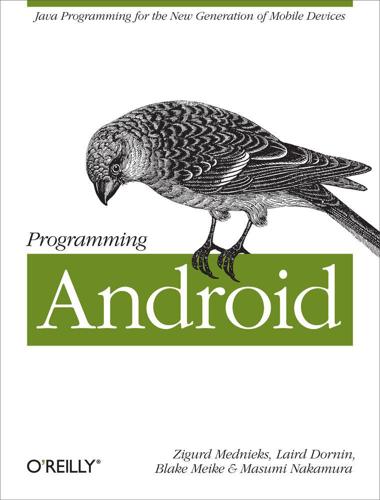
Programming Android
by
Zigurd Mednieks
,
Laird Dornin
,
G. Blake Meike
and
Masumi Nakamura
Published 15 Jul 2011
Here we’ve already loaded the file OR.kml, which is included on the website for this book. It traces a path near O’Reilly headquarters in Sebastopol, California. Figure 15-2. DDMS emulator with KML location updates You can create GPX tracks with many GPS navigation software tools, and KML tracks with Google Earth or many other navigation programs. The OR.kml file was generated by plotting a series of Google Earth placemarks and concatenating them together into a single file. Here’s an excerpt of OR.kml: <?xml version="1.0" encoding="UTF-8"?> <kml xmlns="http://earth.google.com/kml/2.2"> <Document> <name>OR1.kml</name> <StyleMap id="msn_ylw-pushpin"> <Pair> <key>normal</key> <styleUrl>#sn_ylw-pushpin</styleUrl> </Pair> <Pair> <key>highlight</key> <styleUrl>#sh_ylw-pushpin</styleUrl> </Pair> </StyleMap> <Style id="sh_ylw-pushpin"> <IconStyle> <scale>1.3</scale> <Icon> <href>http://maps.google.com/mapfiles/kml/pushpin/ylw-pushpin.png</href> </Icon> <hotSpot x="20" y="2" xunits="pixels" yunits="pixels"/> </IconStyle> <ListStyle> </ListStyle> </Style> <Style id="sn_ylw-pushpin"> <IconStyle> <scale>1.1</scale> <Icon> <href>http://maps.google.com/mapfiles/kml/pushpin/ylw-pushpin.png</href> </Icon> <hotSpot x="20" y="2" xunits="pixels" yunits="pixels"/> </IconStyle> <ListStyle> </ListStyle> </Style> <Placemark> <name>OR1</name> <LookAt> <longitude>-122.7583711698369</longitude> <latitude>38.38922415809942</latitude> <altitude>0</altitude> <range>14591.7166300043</range> <tilt>0</tilt> <heading>0.04087372005871314</heading> <altitudeMode>relativeToGround</altitudeMode> </LookAt> <styleUrl>#msn_ylw-pushpin</styleUrl> <Point> <coordinates>-122.8239277647483,38.40273084940345,0</coordinates> </Point> </Placemark> <Placemark> <name>OR2</name> <LookAt> <longitude>-122.7677364592949</longitude> <latitude>38.3819544049429</latitude> <altitude>0</altitude> <range>11881.3330990845</range> <tilt>0</tilt> <heading>-8.006283077460853e-010</heading> <altitudeMode>relativeToGround</altitudeMode> </LookAt> <styleUrl>#msn_ylw-pushpin</styleUrl> <Point> <coordinates>-122.8064486052584,38.40786910573772,0</coordinates> </Point> </Placemark> <Placemark> <name>OR3</name> <LookAt> <longitude>-122.7677364592949</longitude> <latitude>38.3819544049429</latitude> <altitude>0</altitude> <range>11881.3330990845</range> <tilt>0</tilt> <heading>-8.006283077460853e-010</heading> <altitudeMode>relativeToGround</altitudeMode> </LookAt> <styleUrl>#msn_ylw-pushpin</styleUrl> <Point> <coordinates>-122.7911077944045,38.41500788727795,0</coordinates> </Point> </Placemark> ...
…
placing applications in, Placing an Application for Distribution in the Android Market, Getting Paid Android Menu Editor, Extensions Android NDK, The Android Native Development Kit (NDK) (see NDK) Android Package Builder, Extensions android package tree, The Android Libraries Android Pre Compiler, Extensions Android projects, Making an Android Project (see projects) Android Resource Editor, Extensions Android Resource Manager, Extensions Android SDK, Installing the Android SDK and Prerequisites, Configuring the ADT plug-in, Installing the Android SDK and Prerequisites, Configuring the ADT plug-in, The Android SDK, The Android SDK, The Android SDK, The Android SDK, Adding Build Targets to the SDK, Test Drive: Confirm That Your Installation Works, Troubleshooting SDK Problems: No Build Targets, Troubleshooting SDK Problems: No Build Targets, Components of the SDK, android, Other SDK Tools, android, Keeping Up-to-Date, Example Code, Organizing Java Source, Organizing Java Source, JNI, NDK, and SDK: A Sample App, JNI, NDK, and SDK: A Sample App about, The Android SDK adding build targets, Adding Build Targets to the SDK components supported, Components of the SDK, android confirming installation, Test Drive: Confirm That Your Installation Works, Troubleshooting SDK Problems: No Build Targets downloading package, The Android SDK example code, Example Code folders for tools, The Android SDK installing, Installing the Android SDK and Prerequisites, Configuring the ADT plug-in, The Android SDK keeping up-to-date, Keeping Up-to-Date organizing Java source, Organizing Java Source, Organizing Java Source prerequisites, Installing the Android SDK and Prerequisites, Configuring the ADT plug-in sample application, JNI, NDK, and SDK: A Sample App, JNI, NDK, and SDK: A Sample App tools supported, Other SDK Tools, android troubleshooting problems, Troubleshooting SDK Problems: No Build Targets Android Virtual Device, Making an Android Virtual Device (AVD) (see AVD) Android XML Resources Editor, Extensions android.app library, The Android Libraries android.content library, The Android Libraries android.database library, The Android Libraries android.graphics library, The Android Libraries android.telephony library, The Android Libraries android.text library, The Android Libraries android.view library, The Android Libraries, Assembling a Graphical Interface android.webkit library, The Android Libraries android.widget library, The Android Libraries android.widgets package, Extending Android classes android:alwaysRetainTaskState attribute, Other activity attributes affecting task behavior android:finishOnTaskLaunch attribute, Other activity attributes affecting task behavior android:launchMode attribute, Launch mode android:name attribute, Task affinity android:noHistory attribute, Other activity attributes affecting task behavior android:process attribute, Other activity attributes affecting task behavior android:taskAffinity attribute, Task affinity AndroidManifest.xml file, Application Manifests, Application Manifests, Initialization Parameters in AndroidManifest.xml, Initialization Parameters in AndroidManifest.xml about, Application Manifests declarations in, Application Manifests initialization parameters in, Initialization Parameters in AndroidManifest.xml, Initialization Parameters in AndroidManifest.xml android_native_app_glue module, Native Activities animation, Bling, Animation, Transition animation, Animation, Background animation, Background animation, Background animation, Background animation, Surface view animation background, Background animation, Background animation frame-by-frame, Background animation, Background animation OpenGL example, Bling surface view, Surface view animation transition, Animation, Transition animation tweened, Animation Animation class, Animation, Transition animation, Transition animation, Transition animation about, Animation AnimationListener interface, Transition animation applyTransformation method, Transition animation, Transition animation AnimationDrawable class, Animation, Background animation, Background animation about, Animation, Background animation start method, Background animation AnimationListener interface, Transition animation, Transition animation about, Transition animation onAnimationEnd method, Transition animation AnimationSet class, Transition animation anonymous classes, Using Anonymous Classes, Using Anonymous Classes Apache HttpCore project, The Android Libraries APIs (application programming interfaces), Other Android Components, Specifying API-Level Compatibility, Defining a Provider Public API, Defining the CONTENT_URI, Implementing the Provider API, The delete method, Sensors, Other Sensors, Near Field Communication (NFC), P2P Mode, Gesture Input, Gesture Input, Accessibility, Accessibility accessibility, Accessibility, Accessibility Android applications and, Other Android Components application distribution and, Specifying API-Level Compatibility external sensors, Sensors, Other Sensors gesture input, Gesture Input, Gesture Input Near Field Communication, Near Field Communication (NFC), P2P Mode SimpleFinchVideoContentProvider example, Defining a Provider Public API, Defining the CONTENT_URI, Implementing the Provider API, The delete method .apk files, Running and debugging Android apps, Packaging an Android Application: The .apk File, Uploading Applications in the Market, Extensions about, Running and debugging Android apps, Packaging an Android Application: The .apk File building, Extensions uploading, Uploading Applications in the Market apkbuilder application, Packaging an Android Application: The .apk File Application class, Application Manifests, Life Cycle Methods of the Application Class, Life Cycle Methods of the Application Class about, Application Manifests life cycle methods, Life Cycle Methods of the Application Class, Life Cycle Methods of the Application Class application development, Modular Programming in Java, Modular Programming in Java, Traditional Programming Models Compared to Android, Java Coding in Eclipse, Refactoring, Editing Java Code and Code Completion, Refactoring, Applying Static Analysis to Android Code, Applying Static Analysis to Android Code, The Android Libraries, Extending Android classes, Rolling Your Own Widgets, Bitmaps, Bling, OpenGL Graphics, The SQL Language, The SQL Language, Database Design for Android Applications, Basic Structure of the SimpleVideoDbHelper Class, Basic Structure of the SimpleVideoDbHelper Class, Basic Structure of the SimpleVideoDbHelper Class, Using the Database API: MJAndroid, Using the execSQL method (see also Android applications; skeleton applications) additional information, The Android Libraries applying static analysis, Applying Static Analysis to Android Code, Applying Static Analysis to Android Code content assist, Editing Java Code and Code Completion database design, Database Design for Android Applications, Basic Structure of the SimpleVideoDbHelper Class Design for Extension coding rule, Extending Android classes graphics effects, Bling, OpenGL Graphics Java coding in Eclipse, Java Coding in Eclipse, Refactoring MJAndroid application example, Using the Database API: MJAndroid, Using the execSQL method modular programming, Modular Programming in Java, Modular Programming in Java refactoring, Refactoring rolling your own widgets, Rolling Your Own Widgets, Bitmaps SimpleVideoDbHelper class example, Basic Structure of the SimpleVideoDbHelper Class, Basic Structure of the SimpleVideoDbHelper Class SQL and, The SQL Language traditional programming models, Traditional Programming Models Compared to Android application distribution, Application Signing, Using a self-signed certificate to sign an application, Using a self-signed certificate to sign an application, Placing an Application for Distribution in the Android Market, Getting Paid, Google Maps API Keys, Specifying API-Level Compatibility, Compatibility with Many Kinds of Screens application signing, Application Signing, Using a self-signed certificate to sign an application exporting Android applications, Using a self-signed certificate to sign an application Google Maps API keys, Google Maps API Keys placing in Android Market, Placing an Application for Distribution in the Android Market, Getting Paid screen compatibility and, Compatibility with Many Kinds of Screens specifying API-level compatibility, Specifying API-Level Compatibility application programming interfaces, Other Android Components (see APIs) application signing, Application Signing, Public Key Encryption and Cryptographic Signing, Public Key Encryption and Cryptographic Signing, How Signatures Protect Software Users, Publishers, and Secure Communications, Self-signed certificates for Android software, Self-signed certificates for Android software, Signing an Application, Using a self-signed certificate to sign an application about, Application Signing cryptographic, Public Key Encryption and Cryptographic Signing, Public Key Encryption and Cryptographic Signing process overview, Signing an Application, Using a self-signed certificate to sign an application protection and, How Signatures Protect Software Users, Publishers, and Secure Communications, Self-signed certificates for Android software self-signed certificates, Self-signed certificates for Android software application template, The Android Framework (see skeleton applications) applications, Making an Android Project (see Android applications) ArrayList class, Collection implementation types, The Android Libraries Arrays class, The Android Libraries artifacts, Builders and Artifacts, Organizing Java Source defined, Builders and Artifacts projects and, Organizing Java Source assignment operator (=), Object Creation associations, defined, Associations asynchronous I/O mechanisms, Summary of Benefits AsyncTask class, Extending Android classes, AsyncTask and the UI Thread, AsyncTask and the UI Thread, AsyncTask and the UI Thread, AsyncTask and the UI Thread, AsyncTask and the UI Thread, AsyncTask and the UI Thread, AsyncTask and the UI Thread, AsyncTask and the UI Thread doInBackground method, AsyncTask and the UI Thread onClickListener method, AsyncTask and the UI Thread onPostExecute method, AsyncTask and the UI Thread onPreExecute method, AsyncTask and the UI Thread onProgressUpdate method, AsyncTask and the UI Thread publishProgress method, AsyncTask and the UI Thread subclassing and, Extending Android classes UI thread and, AsyncTask and the UI Thread, AsyncTask and the UI Thread audio, Audio and Video, Audio Playback, AudioTrack audio playback, MediaPlayer audio playback, AudioTrack audio playback, Audio Recording, AudioRecorder audio recording, MediaRecorder audio recording, MediaRecorder audio recording, Intent audio recording, AudioRecorder audio recording Android supported formats, Audio and Video AudioRecorder recording, AudioRecorder audio recording AudioTrack playback, AudioTrack audio playback Intent recording, Intent audio recording MediaPlayer playback, MediaPlayer audio playback MediaRecorder recording, MediaRecorder audio recording, MediaRecorder audio recording playback methods, Audio Playback, AudioTrack audio playback recording methods, Audio Recording, AudioRecorder audio recording AudioRecorder class, AudioRecorder audio recording, AudioRecorder audio recording audio recording, AudioRecorder audio recording startRecording method, AudioRecorder audio recording AudioTrack class, AudioTrack audio playback, AudioTrack audio playback, AudioTrack audio playback, AudioTrack audio playback, AudioTrack audio playback audio playback, AudioTrack audio playback pause method, AudioTrack audio playback play method, AudioTrack audio playback release method, AudioTrack audio playback stop method, AudioTrack audio playback AUTHENTICATE_ACCOUNTS permission, Authentication authenticating contact data, Authentication, Authentication AUTOINCREMENT constraint, Database constraints, Declaring Column Specification Strings AVD (Android Virtual Device), Making an Android Virtual Device (AVD), Making an Android Virtual Device (AVD), Making an Android Virtual Device (AVD), Making an Android Virtual Device (AVD), Making an Android Virtual Device (AVD), Running a Program on an AVD, Android Virtual Devices about, Making an Android Virtual Device (AVD), Android Virtual Devices additional information, Making an Android Virtual Device (AVD) creating, Making an Android Virtual Device (AVD), Making an Android Virtual Device (AVD) running programs on, Running a Program on an AVD setting parameters, Making an Android Virtual Device (AVD) avdmgr tool, Eclipse and Android B background animation, Background animation, Background animation BaseAdapter class, Extending Android classes Beaulieu, Alan, Additional Database Concepts bin directory, Organizing Java Source binary data, File Management and Binary Data Bitmap class, Canvas Drawing, Bitmaps BitmapDrawable class, Bitmaps BLOB type (SQLite), SQLite types Bloch, Joshua, Interfaces, Java Serialization block, defined, Final and Static Declarations Bluetooth standard, Bluetooth, The Bluetooth Protocol Stack, Bluez: The Linux Bluetooth Implementation, Using Bluetooth in Android Applications, The BtConsoleActivity class, Bluetooth and related I/O classes about, Bluetooth Android applications and, Using Bluetooth in Android Applications, The BtConsoleActivity class Linux implementation, Bluez: The Linux Bluetooth Implementation protocol stack and, The Bluetooth Protocol Stack SPP support, Bluetooth and related I/O classes BluetoothAdapter class, Bluetooth and related I/O classes BluetoothDevice class, Bluetooth and related I/O classes BluetoothSocket class, Bluetooth and related I/O classes Bluez Bluetooth stack, Bluez: The Linux Bluetooth Implementation boolean type, Primitive Types, Conventions on the Native Method Side BroadcastReceiver class, Other Android Components, BroadcastReceiver, Application Manifests, The Activity Class and Well-Behaved Applications about, Other Android Components, BroadcastReceiver manifest files and, Application Manifests well-behaved applications and, The Activity Class and Well-Behaved Applications builders, defined, Builders and Artifacts Bundle class, Serialization, Java Serialization, Java Serialization, Fragment Life Cycle, Saving and restoring instance state fragment life cycle and, Fragment Life Cycle getSerializable method, Java Serialization putSerializable method, Java Serialization serialization and, Serialization, Saving and restoring instance state Button class, Putting It Together, Wiring Up the Controller, Rolling Your Own Widgets about, Putting It Together setOnClickListener method, Wiring Up the Controller widgets and, Rolling Your Own Widgets byte type, Primitive Types, Conventions on the Native Method Side C Callback interface (Drawable), Background animation Callback interface (SurfaceHolder), Surface view animation, Surface view animation, Surface view animation about, Surface view animation surfaceCreated method, Surface view animation surfaceDestroyed method, Surface view animation callbacks, defined, Overrides and callbacks, Overrides and callbacks Camera class, Transition animation, Transition animation, Transition animation about, Transition animation rotate method, Transition animation translate method, Transition animation CAMERA permission, Recording Audio and Video Canvas class, Canvas Drawing, Canvas Drawing, Drawing text, Drawing text, Drawing text, Drawing text, Drawing text, Matrix transformations, Matrix transformations, Matrix transformations, Matrix transformations, Matrix transformations, Matrix transformations, Matrix transformations, Matrix transformations, Matrix transformations, Matrix transformations, Matrix transformations, Matrix transformations, Matrix transformations about, Canvas Drawing concatMatrix method, Matrix transformations coordinate transformation, Matrix transformations drawCircle method, Canvas Drawing drawing text, Drawing text, Drawing text drawPosText method, Drawing text drawText method, Drawing text drawTextOnPath method, Drawing text getMatrix method, Matrix transformations restore method, Matrix transformations rotate method, Matrix transformations, Matrix transformations save method, Matrix transformations scale method, Matrix transformations, Matrix transformations setMatrix method, Matrix transformations skew method, Matrix transformations, Matrix transformations translate method, Matrix transformations canvas drawing, Canvas Drawing, Canvas Drawing, Drawing text, Drawing text, Matrix transformations, Matrix transformations about, Canvas Drawing, Canvas Drawing drawing text, Drawing text, Drawing text matrix transformations, Matrix transformations, Matrix transformations cascading methods, Object Creation Cell ID, Location-Based Services certificate authority, How Signatures Protect Software Users, Publishers, and Secure Communications, Self-signed certificates for Android software certificate fingerprint, Debug certificates certificates, Self-signed certificates for Android software, Debug certificates, Creating a self-signed certificate, Using a self-signed certificate to sign an application, Using a self-signed certificate to sign an application debug, Debug certificates self-signed, Self-signed certificates for Android software, Creating a self-signed certificate, Using a self-signed certificate to sign an application, Using a self-signed certificate to sign an application char type, Primitive Types, Drawing text, Conventions on the Native Method Side CHECK constraint, Database constraints class attribute, Creating a Fragment .class files, The Java compiler, Builders and Artifacts classes, Objects and Classes, Object Creation, Object Creation, The Object Class and Its Methods, Final and Static Declarations, Final and Static Declarations, Abstract Classes, Using Anonymous Classes, Using Anonymous Classes, Extending Android classes, Extending Android classes, Classes That Support Serialization (see also specific classes) about, Objects and Classes abstract, Abstract Classes anonymous, Using Anonymous Classes, Using Anonymous Classes extending, Extending Android classes, Extending Android classes final and static declarations, Final and Static Declarations, Final and Static Declarations object creation, Object Creation, Object Creation serialization support, Classes That Support Serialization clip rectangle, Canvas Drawing ClipDrawable class, Drawables Cloneable interface, The Object Class and Its Methods code signing, Application Signing (see application signing) Collection interface, Collection interface types Collections Library, Collection interface types, Java generics ColorFilter class, Shadows, Gradients, and Filters com.android.ide.eclipse.adt plug-in, Plug-ins com.android.ide.eclipse.ddms plug-in, Plug-ins Comparable interface, Interfaces, Interfaces about, Interfaces compareTo method, Interfaces composition, defined, Using polymorphism and composition, Using polymorphism and composition compound queries, Additional Database Concepts concurrent programming, Basic Multithreaded Concurrent Programming in Java, Concurrency in Android, Concurrency in Android, AsyncTask and the UI Thread, AsyncTask and the UI Thread, Threads in an Android Process Android libraries and, Concurrency in Android AsyncTask and UI thread, AsyncTask and the UI Thread, AsyncTask and the UI Thread multi-threaded, Basic Multithreaded Concurrent Programming in Java, Concurrency in Android threads in Android processes, Threads in an Android Process constructors, Object Creation, Creating a Fragment defined, Object Creation Fragment class and, Creating a Fragment contact data, Account Contacts, Account Contacts, Authentication, Authentication, Synchronization about, Account Contacts, Account Contacts authenticating, Authentication, Authentication synchronizing, Synchronization Contacts class, Account Contacts, Account Contacts additional information, Account Contacts querying, Account Contacts ContactsContract content provider, Account Contacts, Account Contacts container views, Assembling a Graphical Interface, Layout content assist, Editing Java Code and Code Completion content providers, Content Providers, Content Providers, Using a content provider, Using a content provider, Content providers and the Internet, Organizing Java Source, Understanding Content Providers, Declaring Column Specification Strings, Implementing a Content Provider, Implementing a Content Provider, Defining the CONTENT_URI, Defining the CONTENT_URI, Writing and Integrating a Content Provider, File Management and Binary Data, File Management and Binary Data, Android MVC and Content Observation, Android MVC and Content Observation, A Complete Content Provider: The SimpleFinchVideoContentProvider Code, Determining How Often to Notify Observers, Declaring Your Content Provider, Exploring Content Providers, Developing RESTful Android Applications, A “Network MVC”, Summary of Benefits, Code Example: Dynamically Listing and Caching YouTube Video Content, File Management: Storing Thumbnails, Audio and Video, Stored Media Content, Account Contacts, Account Contacts about, Content Providers, Content Providers activities and, Organizing Java Source binary data, File Management and Binary Data building, Understanding Content Providers, Declaring Column Specification Strings ContactsContract, Account Contacts, Account Contacts CONTENT_URI constant, Implementing a Content Provider, Defining the CONTENT_URI, Defining the CONTENT_URI declaring, Declaring Your Content Provider developing RESTful applications, Developing RESTful Android Applications file management, File Management and Binary Data implementing, Implementing a Content Provider MediaStore, Audio and Video, Stored Media Content MVC architecture and, Content providers and the Internet, Android MVC and Content Observation, Android MVC and Content Observation network MVC and, A “Network MVC”, Summary of Benefits REST and, Exploring Content Providers SimpleFinchVideoContentProvider example, A Complete Content Provider: The SimpleFinchVideoContentProvider Code, Determining How Often to Notify Observers usage considerations, Using a content provider, Using a content provider writing/integrating, Writing and Integrating a Content Provider YouTube video example, Code Example: Dynamically Listing and Caching YouTube Video Content, File Management: Storing Thumbnails content:// URI, File Management and Binary Data ContentObserver.onChange method, Android MVC and Content Observation ContentProvider class, Other Android Components, Content Providers, Content Providers, Content Providers, Content Providers, Content Providers, Application Manifests, Serialization, The Activity Class and Well-Behaved Applications, Implementing a Content Provider, Defining the CONTENT_URI, Defining the CONTENT_URI, Defining the CONTENT_URI, Defining the CONTENT_URI, Extending ContentProvider, Extending ContentProvider, Extending ContentProvider, Extending ContentProvider, Extending ContentProvider, Extending ContentProvider, Extending ContentProvider, Extending ContentProvider, Extending ContentProvider, File Management and Binary Data, Implementing the onCreate Method, Implementing the getType Method, Implementing the Provider API, Implementing the Provider API, Implementing the Provider API, Implementing the Provider API, Developing RESTful Android Applications, File Management: Storing Thumbnails about, Other Android Components, Content Providers delete method, Content Providers, Defining the CONTENT_URI, Extending ContentProvider, Implementing the Provider API extending, Implementing a Content Provider, Extending ContentProvider, Extending ContentProvider getType method, Extending ContentProvider, Implementing the getType Method insert method, Content Providers, Defining the CONTENT_URI, Extending ContentProvider, Extending ContentProvider, Implementing the Provider API manifest files and, Application Manifests onCreate method, Extending ContentProvider, Implementing the onCreate Method openFile method, File Management: Storing Thumbnails openStream method, File Management and Binary Data query method, Content Providers, Defining the CONTENT_URI, Extending ContentProvider, Implementing the Provider API RESTful applications and, Developing RESTful Android Applications serialization and, Serialization update method, Content Providers, Defining the CONTENT_URI, Extending ContentProvider, Implementing the Provider API well-behaved applications and, The Activity Class and Well-Behaved Applications ContentProviderOperation class, Account Contacts, Account Contacts about, Account Contacts newInsert method, Account Contacts ContentProviderOperation.Builder class, Account Contacts ContentResolver class, Using a content provider, Content providers and the Internet, Content providers and the Internet, File Management and Binary Data, File Management and Binary Data, Android MVC and Content Observation, Android MVC and Content Observation, A “Network MVC”, File Management: Storing Thumbnails about, Using a content provider delete method, Android MVC and Content Observation insert method, A “Network MVC” notifyChange method, Content providers and the Internet, Android MVC and Content Observation openInputStream method, File Management and Binary Data, File Management: Storing Thumbnails openOutputStream method, File Management and Binary Data registerContentObserver method, Content providers and the Internet ContentUris.withAppendedId method, The insert method ContentValues class, Using the insert method, YouTubeHandler, Stored Media Content about, Using the insert method creating, YouTubeHandler stored media content, Stored Media Content Context class, Static Application Resources and Context, Resources, Connecting to a Location Provider and Getting Location Updates, Sensors, Accessibility about, Static Application Resources and Context getResources method, Resources getSystemService method, Connecting to a Location Provider and Getting Location Updates, Sensors, Accessibility ContextMenu class, The Menu contextual menus, The Menu Controller component (MVC), The Controller, Wiring Up the Controller, Wiring Up the Controller, Listening to the Model, Listening to the Model, Listening for Touch Events, Listening for Touch Events, Listening for Key Events, Advanced Wiring: Focus and Threading, Advanced Wiring: Focus and Threading about, The Controller focus and threading, Advanced Wiring: Focus and Threading, Advanced Wiring: Focus and Threading listening for key events, Listening for Key Events listening for touch events, Listening for Touch Events, Listening for Touch Events listening to the Model, Listening to the Model, Listening to the Model wiring up, Wiring Up the Controller, Wiring Up the Controller cpufeatures module, Android-Provided Native Libraries Create New Android Virtual Device (AVD) dialog, Making an Android Virtual Device (AVD) CREATE TABLE statement (SQL), SQL Data Definition Commands CRUD methodology, Inserting data into the database Ctrl-F11, Fragment Life Cycle Ctrl-space bar, Editing Java Code and Code Completion curly braces {}, Final and Static Declarations Currency class, The Android Libraries Cursor interface, Using a content provider, The Android Database Classes, The Android Database Classes, The Android Database Classes, Database Queries and Reading Data from the Database, Android MVC and Content Observation, The query method, A “Network MVC”, Account Contacts, Account Contacts about, Using a content provider, The Android Database Classes account contacts example, Account Contacts, Account Contacts moveToFirst method, Database Queries and Reading Data from the Database moveToNext method, The Android Database Classes moveToPrevious method, The Android Database Classes registerContentObserver method, Android MVC and Content Observation requery method, A “Network MVC” setNotificationUri method, The query method CycleInterpolator class, Transition animation D D-pads, Listening for Touch Events, Advanced Wiring: Focus and Threading Dalvik Debug Monitor Server, The Dalvik Debug Monitor Server (DDMS) (see DDMS) dalvik package tree, The Android Libraries Dalvik virtual machines (VMs), The Dalvik Debug Monitor Server (DDMS), The Dalvik VM, Zygote: Forking a New Process about, The Dalvik Debug Monitor Server (DDMS) Android runtime environment, The Dalvik VM Zygote process and, Zygote: Forking a New Process data structures, synchronization and, Synchronization and Data Structures data types, Primitive Types, SQLite types, Communication, Identity, Sync, and Social Media, Account Contacts, Conventions on the Native Method Side contact data, Communication, Identity, Sync, and Social Media, Account Contacts Java supported, Primitive Types JNI calls and, Conventions on the Native Method Side SQLite supported, SQLite types database schemas, SQL Data Definition Commands, Database constraints defined, SQL Data Definition Commands foreign key constraints, Database constraints database triggers, Additional Database Concepts databases, Relational Database Overview (see relational databases) Date class, The Android Libraries DatePicker class, Rolling Your Own Widgets DateTime class, Creating a Fragment, Fragment Life Cycle, Fragment Transactions DDMS (Dalvik Debug Monitor Server), The Dalvik Debug Monitor Server (DDMS), The Dalvik Debug Monitor Server (DDMS), The DDMS, Using DDMS to update location, Using DDMS to update location, Conventions on the Native Method Side about, The Dalvik Debug Monitor Server (DDMS), The Dalvik Debug Monitor Server (DDMS), The DDMS Emulator Control pane, Using DDMS to update location JNI conventions, Conventions on the Native Method Side location updates, Using DDMS to update location debug certificate, Debug certificates debuggable attribute, Using a self-signed certificate to sign an application debugging, Running a Program on an Android Device, Running and debugging Android apps Android applications, Running and debugging Android apps Android devices, Running a Program on an Android Device DecelerateInterpolator class, Transition animation default constructors, Object Creation DELETE operation (REST), Content Providers DELETE statement (SQL), Extending ContentProvider dependency injection, Overrides and callbacks deserializing data, Serialization Design for Extension coding rule, Extending Android classes developing applications, Modular Programming in Java (see application development) .dex files, Builders and Artifacts Dictionary class, The Java Collections Framework, The Android Libraries distributing applications, Getting Your Application into Users’ Hands (see application distribution) double type, Primitive Types, Conventions on the Native Method Side Draw9patch drawing program, Draw9patch Drawable class, Canvas Drawing, Drawables, Drawables, Drawables, Drawables, Background animation about, Canvas Drawing, Drawables, Drawables Callback interface, Background animation usage considerations, Drawables wrappers supporting, Drawables drawable directory, Resources drawing graphics, Rolling Your Own Widgets, Layout, Arrangement, Canvas Drawing, Matrix transformations, Drawables, Drawables, Bitmaps, Bling, OpenGL Graphics, Bling, Shadows, Gradients, and Filters, Animation, Surface view animation, OpenGL Graphics, OpenGL Graphics animations, Animation, Surface view animation Bitmap class support, Bitmaps Canvas class support, Canvas Drawing, Matrix transformations Drawable class support, Drawables, Drawables graphics effects examples, Bling, OpenGL Graphics layout considerations, Layout, Arrangement OpenGL support, Bling, OpenGL Graphics, OpenGL Graphics rolling your own widgets, Rolling Your Own Widgets shadows, gradients, filters, Shadows, Gradients, and Filters DROP TABLE statement (SQL), SQL Data Definition Commands dynamic declarations, Final and Static Declarations E Eclipse IDE, The Eclipse Integrated Development Environment (IDE), The Eclipse Integrated Development Environment (IDE), The Eclipse Integrated Development Environment (IDE), The Eclipse Integrated Development Environment (IDE), The Eclipse Integrated Development Environment (IDE), The Eclipse Integrated Development Environment (IDE), Adding Build Targets to the SDK, Using the Install New Software Wizard to download and install the ADT plug-in, Keeping Eclipse and the ADT Plug-in Up-to-Date, Eclipse for Android Software Development, Eclipse Concepts and Terminology, Associations, Plug-ins, Eclipse’s Java Runtime Environment, Extensions, Extensions, Associations, Eclipse Views and Perspectives, The Problems View, The Package Explorer View, The Task List View, The Outline View, The Problems View, Java Coding in Eclipse, Refactoring, Eclipse and Android, Eclipse and Android, Eclipse and Android, Eclipse and Android, Eclipse and Android, Eclipse and Android, Static Analyzers, Limitations of Static Analysis, Eclipse Idiosyncrasies and Alternatives, Eclipse Idiosyncrasies and Alternatives, Visualizing the Activity Life Cycle, Visualizing the Activity Life Cycle (see also ADT Eclipse plug-in) about, The Eclipse Integrated Development Environment (IDE) additional information, Using the Install New Software Wizard to download and install the ADT plug-in, Eclipse for Android Software Development concepts and terminology, Eclipse Concepts and Terminology, Associations confirming installation, The Eclipse Integrated Development Environment (IDE) downloading, The Eclipse Integrated Development Environment (IDE) Extensions view, Extensions File Explorer view, Eclipse and Android Heap view, Eclipse and Android idiosyncrasies and alternatives, Eclipse Idiosyncrasies and Alternatives, Eclipse Idiosyncrasies and Alternatives installing, The Eclipse Integrated Development Environment (IDE) Java coding in, Java Coding in Eclipse, Refactoring JRE requirements, The Eclipse Integrated Development Environment (IDE), Eclipse’s Java Runtime Environment keeping up-to-date, Keeping Eclipse and the ADT Plug-in Up-to-Date Layout view, Eclipse and Android LogCat view, Eclipse and Android, Visualizing the Activity Life Cycle, Visualizing the Activity Life Cycle Outline view, The Outline View Package Explorer view, Associations, The Package Explorer View Pixel Perfect view, Eclipse and Android Plug-ins view, Plug-ins, Extensions Problems view, The Problems View SDK and AVD Manager support, Adding Build Targets to the SDK static analyzers, Static Analyzers, Limitations of Static Analysis Task List view, The Task List View Threads view, Eclipse and Android views and perspectives, Eclipse Views and Perspectives, The Problems View eclipse.ini file, Eclipse’s Java Runtime Environment EditText class, Overrides and callbacks, Wiring Up the Controller, Alternative Ways to Handle Events addTextChangedListener method, Overrides and callbacks handling events, Alternative Ways to Handle Events invalidate method, Wiring Up the Controller encapsulation, Access Modifiers and Encapsulation, Encapsulation, Getters and setters about, Encapsulation access modifiers and, Access Modifiers and Encapsulation getter and setter methods, Getters and setters encryption, public key, Public Key Encryption and Cryptographic Signing, Public Key Encryption and Cryptographic Signing Enumeration interface, The Java Collections Framework, The Android Libraries Equinox framework, Eclipse Concepts and Terminology event queues, The Controller events, Listening for Touch Events, Listening for Touch Events, Listening for Key Events, Alternative Ways to Handle Events alternative ways to handle, Alternative Ways to Handle Events listening for key events, Listening for Key Events listening for touch events, Listening for Touch Events, Listening for Touch Events Exception class, Exceptions exceptions, Exceptions, Exceptions, Exceptions (see also specific exceptions) .exit command (SQLite), Example Database Manipulation Using sqlite3 exporting Android applications, Using a self-signed certificate to sign an application extends keyword, Objects, Inheritance, and Polymorphism extensions, defined, Extensions, Extensions external sensors, Sensors (see sensors) Eyes-Free open source project, Accessibility F File Explorer view (Eclipse), Eclipse and Android file management, File Management and Binary Data, File Management: Storing Thumbnails FileHandler class, File Management: Storing Thumbnails filters (drawing graphics), Shadows, Gradients, and Filters final declarations, Final and Static Declarations final keyword, Final and Static Declarations FindBugs tool, Type Safety in Java, FindBugs, FindBugs, Applying Static Analysis to Android Code, Applying Static Analysis to Android Code about, FindBugs, FindBugs applying static analysis, Applying Static Analysis to Android Code, Applying Static Analysis to Android Code type safety in Java, Type Safety in Java float type, Primitive Types, Conventions on the Native Method Side focusable attribute, Advanced Wiring: Focus and Threading FOREIGN KEY constraint, Database constraints forking processes, Zygote: Forking a New Process Fragment class, Fragments and Multiplatform Support, Creating a Fragment, Creating a Fragment, Creating a Fragment, Fragment Life Cycle, Fragment Life Cycle, Fragment Life Cycle, Fragment Transactions, Fragment Transactions, Visualizing the Fragment Life Cycle, Visualizing the Fragment Life Cycle, Visualizing the Fragment Life Cycle, Visualizing the Fragment Life Cycle, Visualizing the Fragment Life Cycle, Visualizing the Fragment Life Cycle, Visualizing the Fragment Life Cycle, Visualizing the Fragment Life Cycle, Visualizing the Fragment Life Cycle, Visualizing the Fragment Life Cycle, Visualizing the Fragment Life Cycle about, Fragments and Multiplatform Support creating fragments, Creating a Fragment getArguments method, Fragment Transactions onActivityCreated method, Visualizing the Fragment Life Cycle onAttach method, Visualizing the Fragment Life Cycle onCreate method, Creating a Fragment, Fragment Life Cycle, Visualizing the Fragment Life Cycle onCreateView method, Creating a Fragment, Visualizing the Fragment Life Cycle onPause method, Fragment Life Cycle, Visualizing the Fragment Life Cycle onResume method, Visualizing the Fragment Life Cycle onSaveInstanceState method, Fragment Life Cycle, Visualizing the Fragment Life Cycle onStart method, Visualizing the Fragment Life Cycle onStop method, Visualizing the Fragment Life Cycle setArguments method, Fragment Transactions visualizing life cycles, Visualizing the Fragment Life Cycle, Visualizing the Fragment Life Cycle FragmentManager class, The Fragment Manager, The Fragment Manager about, The Fragment Manager findFragmentByTag method, The Fragment Manager fragments, Fragments and Multiplatform Support, Creating a Fragment, Creating a Fragment, Fragment Life Cycle, Fragment Life Cycle, The Fragment Manager, Fragment Transactions, Fragment Transactions, The Compatibility Package, Visualizing the Fragment Life Cycle, Visualizing the Fragment Life Cycle about, Fragments and Multiplatform Support Android Compatibility Package and, The Compatibility Package creating, Creating a Fragment, Creating a Fragment life cycles of, Fragment Life Cycle, Fragment Life Cycle, Visualizing the Fragment Life Cycle, Visualizing the Fragment Life Cycle manipulating, The Fragment Manager transactions involving, Fragment Transactions, Fragment Transactions frame-by-frame animation, Background animation, Background animation FrameLayout class, The Fragment Manager, Gesture Input framework applications, A Framework for a Well-Behaved Application (see skeleton applications) G garbage collection, Garbage Collection gen directory, Organizing Java Source generics, Java generics Gennick, Jonathan, Additional Database Concepts geo utility, Using geo to update location Gesture class, Gesture Input gesture input, Listening for Touch Events, Listening for Touch Events, Gesture Input about, Gesture Input listening for, Listening for Touch Events, Listening for Touch Events GestureLibraries class, Gesture Input, Gesture Input about, Gesture Input fromRawResource method, Gesture Input GestureLibrary class, Gesture Input GestureOverlayView class, Gesture Input, Gesture Input about, Gesture Input OnGesturePerformedListener interface, Gesture Input GesturePoint class, Gesture Input GestureStore class, Gesture Input GestureStroke class, Gesture Input GET operation (REST), Content Providers getter methods, Getters and setters Global Positioning System (GPS), Location-Based Services, The Manifest and Layout Files, Using geo to update location GLSurfaceView class, OpenGL Graphics, OpenGL Graphics, OpenGL Graphics, OpenGL Graphics about, OpenGL Graphics Renderer interface, OpenGL Graphics sizeChanged method, OpenGL Graphics surfaceCreated method, OpenGL Graphics Goetz, Brian, Thread Control with wait() and notify() Methods Google Checkout, Becoming an Official Android Developer, Getting Paid Google Earth, Using DDMS to update location Google I/O conference, Developing RESTful Android Applications Google Maps, Google Maps API Keys, Mapping, The Google Maps Activity, The MapView and MapActivity about, Mapping API keys, Google Maps API Keys MapView class and, The MapView and MapActivity starting, The Google Maps Activity GPS (Global Positioning System), Location-Based Services, The Manifest and Layout Files, Using geo to update location GPU (Graphics Processing Unit), OpenGL Graphics gradients (drawing graphics), Shadows, Gradients, and Filters Graphics Processing Unit (GPU), OpenGL Graphics graphics, drawing, Rolling Your Own Widgets (see drawing graphics) gravity, Gravity GUI framework, Drawing 2D and 3D Graphics (see Android GUI framework) gyroscopes, Gyroscope H Handler class, Threads in an Android Process, Advanced Wiring: Focus and Threading about, Advanced Wiring: Focus and Threading Looper class and, Threads in an Android Process HashMap class, Collection implementation types, The Android Libraries, Using the insert method, The SimpleFinchVideoContentProvider Class and Instance Variables about, Collection implementation types Android libraries and, The Android Libraries ContentProvider class and, The SimpleFinchVideoContentProvider Class and Instance Variables ContentValues class and, Using the insert method HashSet class, Collection implementation types Hashtable class, The Java Collections Framework, The Android Libraries hcidump utility, Using Bluetooth in Android Applications Heap view (Eclipse), Eclipse and Android .help command (SQLite), Example Database Manipulation Using sqlite3 Hibernate framework, Serialization Hierarchy Viewer tool, Hierarchy Viewer HttpEntity interface, RESTfulContentProvider: A REST helper I ia32-libs package, The Android SDK iBATIS framework, Serialization IllegalStateException, AsyncTask and the UI Thread, Fragment Transactions, Measurement inheritance, Objects and Classes, Objects, Inheritance, and Polymorphism, Interfaces interfaces and, Interfaces Java support, Objects, Inheritance, and Polymorphism Java types and, Objects and Classes inner joins, Additional Database Concepts InputStream class, Bluetooth-specific protocols and adopted protocols INSERT statement (SQL), SQL Data Manipulation Commands, Inserting data into the database Install New Software Wizard, Using the Install New Software Wizard to download and install the ADT plug-in instance variables, The SimpleFinchVideoContentProvider Class and Instance Variables, The SimpleFinchVideoContentProvider Class and Instance Variables int type, Primitive Types, Conventions on the Native Method Side INTEGER type (SQLite), SQLite types, Declaring Column Specification Strings IntelliJ IDEA, Installing the Android SDK and Prerequisites Intent class, Activities, Intents, and Tasks, Launch mode, Modifying task behavior with intent flags, Modifying task behavior with intent flags, Modifying task behavior with intent flags, Modifying task behavior with intent flags, Modifying task behavior with intent flags, Modifying task behavior with intent flags, Modifying task behavior with intent flags, Modifying task behavior with intent flags, Modifying task behavior with intent flags, Modifying task behavior with intent flags, Modifying task behavior with intent flags, Modifying task behavior with intent flags, Modifying task behavior with intent flags, Modifying task behavior with intent flags, Modifying task behavior with intent flags, Modifying task behavior with intent flags, Intent audio recording, Intent video recording, The Google Maps Activity about, Activities, Intents, and Tasks android:launchMode attribute and, Launch mode audio recording, Intent audio recording FLAG_ACTIVITY_BROUGHT_TO_FRONT constant, Modifying task behavior with intent flags FLAG_ACTIVITY_CLEAR_TASK constant, Modifying task behavior with intent flags FLAG_ACTIVITY_CLEAR_TOP constant, Modifying task behavior with intent flags FLAG_ACTIVITY_CLEAR_WHEN_TASK_RESET constant, Modifying task behavior with intent flags FLAG_ACTIVITY_EXCLUDE_FROM_RECENTS constant, Modifying task behavior with intent flags FLAG_ACTIVITY_FORWARD_RESULT constant, Modifying task behavior with intent flags FLAG_ACTIVITY_LAUNCHED_FROM_HISTORY constant, Modifying task behavior with intent flags FLAG_ACTIVITY_MULTIPLE_TASK constant, Modifying task behavior with intent flags FLAG_ACTIVITY_NEW_TASK constant, Modifying task behavior with intent flags FLAG_ACTIVITY_NO_ANIMATION constant, Modifying task behavior with intent flags FLAG_ACTIVITY_NO_HISTORY constant, Modifying task behavior with intent flags FLAG_ACTIVITY_NO_USER_ACTION constant, Modifying task behavior with intent flags FLAG_ACTIVITY_PREVIOUS_IS_TOP constant, Modifying task behavior with intent flags FLAG_ACTIVITY_REORDER_TO_FRONT constant, Modifying task behavior with intent flags setting flags, Modifying task behavior with intent flags, Modifying task behavior with intent flags starting Google Maps, The Google Maps Activity video recording, Intent video recording interfaces, Interfaces, Interfaces, Interfaces, Interfaces (see also specific interfaces) about, Interfaces, Interfaces additional information, Interfaces Interpolator class, Transition animation IOException, Writing to a Tag ISO (International Organization for Standardization), Relational Database Overview Iterator interface, Collection interface types, The Android Libraries, The Android Libraries J Java Collections Framework, The Java Collections Framework, Collection interface types, The Android Libraries about, The Java Collections Framework collection interface types, Collection interface types java.util package and, The Android Libraries Java Collections Library, The Android Libraries Java compiler, The Java compiler, Organizing Java Source Java Cryptography Architecture, Debug certificates Java Development Kit, The Java Development Kit (JDK) (see JDK) .java files, organizing, Organizing Java Source, Organizing Java Source Java language, Java for Android, The Java Type System, Primitive Types, Objects and Classes, Object Creation, Object Creation, The Object Class and Its Methods, The Object Class and Its Methods, Objects, Inheritance, and Polymorphism, Objects, Inheritance, and Polymorphism, Objects, Inheritance, and Polymorphism, Final and Static Declarations, Final and Static Declarations, Final and Static Declarations, Abstract Classes, Interfaces, Interfaces, Exceptions, Exceptions, Java generics, Garbage Collection, Type Safety in Java, Getters and setters, Using Anonymous Classes, Using Anonymous Classes, Modular Programming in Java, Modular Programming in Java, Basic Multithreaded Concurrent Programming in Java, Synchronization and Thread Safety, Synchronization and Thread Safety, Thread Control with wait() and notify() Methods, Synchronization and Data Structures, Java Coding in Eclipse, Refactoring, Java Serialization abstract classes, Abstract Classes additional information, Java for Android anonymous classes, Using Anonymous Classes, Using Anonymous Classes coding in Eclipse, Java Coding in Eclipse, Refactoring exceptions support, Exceptions, Exceptions final and static declarations, Final and Static Declarations, Final and Static Declarations garbage collection, Garbage Collection generics, Java generics inheritance support, Objects, Inheritance, and Polymorphism interface support, Interfaces, Interfaces modular programming in, Modular Programming in Java, Modular Programming in Java multi-threaded concurrent programming, Basic Multithreaded Concurrent Programming in Java Object class and its methods, The Object Class and Its Methods, The Object Class and Its Methods object creation, Object Creation, Object Creation objects and classes, Objects and Classes passing parameters by value, Final and Static Declarations polymorphism support, Objects, Inheritance, and Polymorphism, Objects, Inheritance, and Polymorphism primitive types, Primitive Types serialization support, Java Serialization synchronization and data structures, Synchronization and Data Structures synchronization and thread safety, Synchronization and Thread Safety, Synchronization and Thread Safety thread control, Thread Control with wait() and notify() Methods type system, The Java Type System, Type Safety in Java, Getters and setters Java Native Interface, The Android Native Development Kit (NDK) (see JNI) Java packages, Java Packages, Java Packages, The Android Libraries, The Android Libraries (see also specific packages) about, The Android Libraries namespaces and, Java Packages scope and, Java Packages Java Runtime Environment (JRE), The Java Development Kit (JDK), The Eclipse Integrated Development Environment (IDE), Eclipse’s Java Runtime Environment about, The Java Development Kit (JDK) Eclipse requirements, The Eclipse Integrated Development Environment (IDE), Eclipse’s Java Runtime Environment Java Virtual Machine (JVM), The Dalvik Debug Monitor Server (DDMS), Traditional Programming Models Compared to Android DDMS support, The Dalvik Debug Monitor Server (DDMS) process overview, Traditional Programming Models Compared to Android java.awt package, The Android Libraries java.io package, Bluetooth-specific protocols and adopted protocols java.lang package, Java Packages, The Android Libraries java.rmi package, The Android Libraries java.util package, The Java Collections Framework, Java Packages, The Android Libraries java.util.concurrent package, Thread Control with wait() and notify() Methods javac command, The Java Development Kit (JDK) javax package, The Android Libraries javax.sound package, The Android Libraries javax.swing package, The Android Libraries JDK (Java Development Kit), The Java Development Kit (JDK), The Java Development Kit (JDK), The Java Development Kit (JDK), Keeping the JDK Up-to-Date confirming installation, The Java Development Kit (JDK) downloading, The Java Development Kit (JDK) installing, The Java Development Kit (JDK) keeping up-to-date, Keeping the JDK Up-to-Date JNI (Java Native Interface), The Android Native Development Kit (NDK), The Android Native Development Kit (NDK), Native Methods and JNI Calls, JNI, NDK, and SDK: A Sample App, JNI, NDK, and SDK: A Sample App about, The Android Native Development Kit (NDK) additional information, The Android Native Development Kit (NDK) conventions for method calls, Native Methods and JNI Calls sample application, JNI, NDK, and SDK: A Sample App, JNI, NDK, and SDK: A Sample App JRE (Java Runtime Environment), The Java Development Kit (JDK), The Eclipse Integrated Development Environment (IDE), Eclipse’s Java Runtime Environment about, The Java Development Kit (JDK) Eclipse requirements, The Eclipse Integrated Development Environment (IDE), Eclipse’s Java Runtime Environment JVM (Java Virtual Machine), The Dalvik Debug Monitor Server (DDMS), Traditional Programming Models Compared to Android DDMS support, The Dalvik Debug Monitor Server (DDMS) process overview, Traditional Programming Models Compared to Android K keycodes, KeyEvent class, Controlling the Map with the Keypad KeyEvent class, Listening for Key Events, Alternative Ways to Handle Events, Advanced Wiring: Focus and Threading, Controlling the Map with the Keypad focus and threading, Advanced Wiring: Focus and Threading getRepeatCount method, Listening for Key Events handling events, Alternative Ways to Handle Events keycodes, Controlling the Map with the Keypad KeyHandler.handleKey method, Using Anonymous Classes keystore, Debug certificates, Creating a self-signed certificate, Using a self-signed certificate to sign an application about, Debug certificates, Using a self-signed certificate to sign an application remembering password, Creating a self-signed certificate keystrokes, Listening for Key Events, Controlling the Map with the Keypad controlling map with, Controlling the Map with the Keypad listening for, Listening for Key Events keytool command, keytool, Debug certificates, Creating a self-signed certificate, Google Maps API Keys about, keytool creating private keys, Creating a self-signed certificate list option, Debug certificates, Google Maps API Keys L layout directory, Resources layout process, Layout, Layout, Measurement, Measurement, Arrangement about, Layout, Layout arrangement phase, Arrangement measurement phase, Measurement, Measurement Layout view (Eclipse), Eclipse and Android Layoutopt static analyzer, Layoutopt LBS (location-based services), Location and Mapping, Location-Based Services, Location-Based Services, Location-Based Services about, Location and Mapping Cell ID, Location-Based Services GPS, Location-Based Services triangulation, Location-Based Services libraries, Android, The Android Libraries (see Android libraries) life cycles, Component Life Cycles, The Activity Life Cycle, Serialization, Serialization and the Application Life Cycle, Creating a Fragment, Fragment Life Cycle, Fragment Life Cycle, Visualizing the Activity Life Cycle, Minor life cycle methods of the Activity class, Memory recovery and life cycles, Memory recovery and life cycles, Configuration changes and the activity life cycle, Configuration changes and the activity life cycle, Visualizing the Fragment Life Cycle, The Activity Class and Well-Behaved Applications, The Activity Life Cycle and the User Experience, The Activity Life Cycle and the User Experience, Life Cycle Methods of the Application Class, Life Cycle Methods of the Application Class Activity class and, Visualizing the Activity Life Cycle, Minor life cycle methods of the Activity class Android components, Component Life Cycles, The Activity Life Cycle Application class and, Life Cycle Methods of the Application Class, Life Cycle Methods of the Application Class configuration changes and, Configuration changes and the activity life cycle, Configuration changes and the activity life cycle fragment, Creating a Fragment, Fragment Life Cycle, Fragment Life Cycle Fragment class and, Visualizing the Fragment Life Cycle managing, Serialization memory recovery and, Memory recovery and life cycles, Memory recovery and life cycles serialization and, Serialization and the Application Life Cycle user experience and, The Activity Life Cycle and the User Experience well-behaved applications and, The Activity Class and Well-Behaved Applications, The Activity Life Cycle and the User Experience light sensors, Other Sensors LIKE keyword, Example Database Manipulation Using sqlite3 linear acceleration, Linear acceleration LinearGradient class, Shadows, Gradients, and Filters LinearInterpolator class, Transition animation LinearLayout class, Assembling a Graphical Interface, Fragments and Multiplatform Support, Layout, Measurement, Measurement, Measurement about, Assembling a Graphical Interface, Fragments and Multiplatform Support, Layout measurement process, Measurement onMeasure method, Measurement setGravity method, Measurement LinkedList class, Collection implementation types Linux environment, The Java Development Kit (JDK), The Eclipse Integrated Development Environment (IDE), The Android SDK, The Android SDK, Running a Program on an Android Device, Sandboxing: Processes and Users, Bluez: The Linux Bluetooth Implementation, Using Bluetooth in Android Applications, Setting Up the NDK Environment Bluetooth implementation, Bluez: The Linux Bluetooth Implementation hcidump utility, Using Bluetooth in Android Applications installing Android SDK, The Android SDK, The Android SDK installing Eclipse, The Eclipse Integrated Development Environment (IDE) installing JDK, The Java Development Kit (JDK) NDK requirements, Setting Up the NDK Environment running programs on Android devices, Running a Program on an Android Device sandboxing and, Sandboxing: Processes and Users List interface, Collection interface types, The Android Libraries ListView class, Fragments and Multiplatform Support, Android MVC and Content Observation, Android MVC and Content Observation, Account Contacts about, Fragments and Multiplatform Support account contacts example, Account Contacts notifications and, Android MVC and Content Observation setAdapter method, Android MVC and Content Observation location and mapping, Location and Mapping, Location-Based Services, Mapping, Mapping, The MapView and MapActivity, The MapView and MapActivity, MapView and MyLocationOverlay Initialization, MapView and MyLocationOverlay Initialization, MapView and MyLocationOverlay Initialization, MapView and MyLocationOverlay Initialization, Pausing and Resuming a MapActivity, Controlling the Map with Menu Buttons, Controlling the Map with Menu Buttons, Controlling the Map with the Keypad, Location Without Maps, Using DDMS to update location about, Mapping accessing without maps, Location Without Maps, Using DDMS to update location controlling with keypad, Controlling the Map with the Keypad controlling with menu buttons, Controlling the Map with Menu Buttons, Controlling the Map with Menu Buttons Google Maps, Mapping location-based services, Location-Based Services MapActivity class, The MapView and MapActivity, Pausing and Resuming a MapActivity MapView class, The MapView and MapActivity, MapView and MyLocationOverlay Initialization mobile phones and, Location and Mapping MyLocationOverlay class, MapView and MyLocationOverlay Initialization, MapView and MyLocationOverlay Initialization zooming in, MapView and MyLocationOverlay Initialization location-based services, Location and Mapping (see LBS) LocationListener interface, Connecting to a Location Provider and Getting Location Updates LocationManager class, Connecting to a Location Provider and Getting Location Updates, Connecting to a Location Provider and Getting Location Updates getLastKnownLocation method, Connecting to a Location Provider and Getting Location Updates requestLocationUpdates method, Connecting to a Location Provider and Getting Location Updates LocationProvider class, Connecting to a Location Provider and Getting Location Updates, Using geo to update location LogCat view (Eclipse), Eclipse and Android, Visualizing the Activity Life Cycle, Visualizing the Activity Life Cycle long type, Primitive Types, Conventions on the Native Method Side Looper class, Threads in an Android Process ls command, The SQL Language M Macintosh environment, The Java Development Kit (JDK), The Android SDK, Running a Program on an Android Device, Setting Up the NDK Environment installing Android SDK, The Android SDK installing JDK, The Java Development Kit (JDK) NDK requirements, Setting Up the NDK Environment running programs on Android devices, Running a Program on an Android Device magnetic sensors, Other Sensors manifest files, The Android Manifest Editor, Application Manifests, Initialization Parameters in AndroidManifest.xml, The Manifest and Layout Files, Authentication about, The Android Manifest Editor AndroidManifest.xml, Application Manifests, Initialization Parameters in AndroidManifest.xml authentication example, Authentication location without maps example, The Manifest and Layout Files Map interface, Collection interface types, The Android Libraries MapActivity class, Assembling a Graphical Interface, The MapView and MapActivity, MapView and MyLocationOverlay Initialization, Pausing and Resuming a MapActivity, Pausing and Resuming a MapActivity about, The MapView and MapActivity graphical interfaces and, Assembling a Graphical Interface isRouteDisplayed method, MapView and MyLocationOverlay Initialization onPause method, Pausing and Resuming a MapActivity onResume method, Pausing and Resuming a MapActivity MapController class, MapView and MyLocationOverlay Initialization, MapView and MyLocationOverlay Initialization, MapView and MyLocationOverlay Initialization, MapView and MyLocationOverlay Initialization, MapView and MyLocationOverlay Initialization, MapView and MyLocationOverlay Initialization, MapView and MyLocationOverlay Initialization about, MapView and MyLocationOverlay Initialization, MapView and MyLocationOverlay Initialization setZoom method, MapView and MyLocationOverlay Initialization zoomIn method, MapView and MyLocationOverlay Initialization zoomInFixing method, MapView and MyLocationOverlay Initialization zoomOut method, MapView and MyLocationOverlay Initialization zoomToSpan method, MapView and MyLocationOverlay Initialization mapping, Location and Mapping (see location and mapping) MapView class, The MapView and MapActivity, The MapView and MapActivity, Working with MapViews, MapView and MyLocationOverlay Initialization, MapView and MyLocationOverlay Initialization, MapView and MyLocationOverlay Initialization, MapView and MyLocationOverlay Initialization, MapView and MyLocationOverlay Initialization, MapView and MyLocationOverlay Initialization, MapView and MyLocationOverlay Initialization about, The MapView and MapActivity initializing, MapView and MyLocationOverlay Initialization, MapView and MyLocationOverlay Initialization prerequisites, The MapView and MapActivity setClickable attribute, MapView and MyLocationOverlay Initialization setEnabled attribute, MapView and MyLocationOverlay Initialization setSatellite attribute, MapView and MyLocationOverlay Initialization setStreetView attribute, MapView and MyLocationOverlay Initialization setTraffic attribute, MapView and MyLocationOverlay Initialization usage suggestions, Working with MapViews marshaling data, Serialization MaskFilter class, Shadows, Gradients, and Filters Matrix class, Matrix transformations, Transition animation, Transition animation Canvas class and, Matrix transformations postTranslate method, Transition animation preTranslate method, Transition animation MeasureSpec class, Measurement, Measurement, Measurement, Measurement, Measurement AT_MOST constant, Measurement EXACTLY constant, Measurement getMode method, Measurement getSize method, Measurement UNSPECIFIED constant, Measurement Media Store content provider, Audio and Video MediaPlayer class, Playing Audio and Video, Playing Audio and Video, Playing Audio and Video, Playing Audio and Video, Playing Audio and Video, Playing Audio and Video, Playing Audio and Video, Playing Audio and Video, MediaPlayer audio playback, MediaPlayer audio playback, MediaPlayer audio playback, MediaPlayer audio playback, MediaPlayer audio playback, MediaPlayer audio playback, Video Playback additional information, Playing Audio and Video audio playback, MediaPlayer audio playback create method, Playing Audio and Video getCurrentPosition method, MediaPlayer audio playback life cycle states, Playing Audio and Video pause method, Playing Audio and Video prepare method, Playing Audio and Video, MediaPlayer audio playback release method, Playing Audio and Video reset method, MediaPlayer audio playback setDataSource method, MediaPlayer audio playback start method, Playing Audio and Video, MediaPlayer audio playback stop method, Playing Audio and Video video playback, Video Playback MediaRecorder class, Recording Audio and Video, Recording Audio and Video, MediaRecorder audio recording, MediaRecorder audio recording, MediaRecorder audio recording, MediaRecorder audio recording, MediaRecorder audio recording, MediaRecorder audio recording, MediaRecorder audio recording, MediaRecorder video recording audio recording, MediaRecorder audio recording, MediaRecorder audio recording life cycle states, Recording Audio and Video permissions supported, Recording Audio and Video prepare method, MediaRecorder audio recording release method, MediaRecorder audio recording reset method, MediaRecorder audio recording start method, MediaRecorder audio recording stop method, MediaRecorder audio recording video recording, MediaRecorder video recording MediaStore content provider, Stored Media Content memory recovery and life cycles, Memory recovery and life cycles, Memory recovery and life cycles Menu interface, Controlling the Map with Menu Buttons, Controlling the Map with Menu Buttons add method, Controlling the Map with Menu Buttons NONE constant, Controlling the Map with Menu Buttons MenuItem interface, Controlling the Map with Menu Buttons menus, The Menu, The Menu, Controlling the Map with Menu Buttons, Controlling the Map with Menu Buttons, Controlling the Map with Menu Buttons controlling maps with, Controlling the Map with Menu Buttons, Controlling the Map with Menu Buttons implementing, The Menu, The Menu types of, Controlling the Map with Menu Buttons merchant accounts, Getting Paid methods, Object Creation, Final and Static Declarations, Final and Static Declarations, Exceptions, Getters and setters, Native Methods and JNI Calls cascading, Object Creation final and static declarations, Final and Static Declarations, Final and Static Declarations getters and setters, Getters and setters JNI conventions, Native Methods and JNI Calls throwing exceptions, Exceptions MJAndroid sample application, Android and Social Networking, Android and Social Networking, The Source Folder (src), Loading and Starting the Application, Database Queries and Reading Data from the Database, Using the query method, Database Queries and Reading Data from the Database, Using the query method, Modifying the Database, Using the execSQL method, The MapView and MapActivity, MapView and MyLocationOverlay Initialization, The MapView and MapActivity, MapView and MyLocationOverlay Initialization, MapView and MyLocationOverlay Initialization, Pausing and Resuming a MapActivity, Controlling the Map with Menu Buttons, Controlling the Map with Menu Buttons, Controlling the Map with the Keypad about, Android and Social Networking, Android and Social Networking controlling map with keypad, Controlling the Map with the Keypad controlling map with menu buttons, Controlling the Map with Menu Buttons, Controlling the Map with Menu Buttons database queries, Database Queries and Reading Data from the Database, Using the query method loading and starting, Loading and Starting the Application MapActivity class, The MapView and MapActivity, Pausing and Resuming a MapActivity MapView class, The MapView and MapActivity, MapView and MyLocationOverlay Initialization modifying database, Modifying the Database, Using the execSQL method MyLocationOverlay class, MapView and MyLocationOverlay Initialization, MapView and MyLocationOverlay Initialization reading data from database, Database Queries and Reading Data from the Database, Using the query method source folder, The Source Folder (src) Model component (MVC), The Model, Listening to the Model, Listening to the Model Model-View-Controller architecture, Content providers and the Internet (see MVC architecture) modular programming, Modular Programming in Java, Modular Programming in Java Monkey test automation tool, Monkey MotionEvent class, Putting It Together, Listening for Touch Events, Listening for Touch Events, Listening for Touch Events, Listening for Touch Events, Advanced Wiring: Focus and Threading, Native Activities ACTION_MOVE constant, Listening for Touch Events creating, Putting It Together focus and threading, Advanced Wiring: Focus and Threading getHistoricalX method, Listening for Touch Events getHistoricalY method, Listening for Touch Events getHistorySize method, Listening for Touch Events native activities and, Native Activities multimedia, Audio and Video, Playing Audio and Video, Recording Audio and Video, Intent video recording, Stored Media Content audio and video formats, Audio and Video playing audio and video, Playing Audio and Video recording audio and video, Recording Audio and Video, Intent video recording stored content, Stored Media Content MVC (Model-View-Controller) architecture, Content providers and the Internet, Threads in an Android Process, Android GUI Architecture, Putting It Together, The Model, The View, The Controller, Putting It Together, Putting It Together, Wiring Up the Controller, Advanced Wiring: Focus and Threading, Listening to the Model, Listening to the Model, Rolling Your Own Widgets, Canvas Drawing, SQL and the Database-Centric Data Model for Android Applications, SQL and the Database-Centric Data Model for Android Applications, SQL and the Database-Centric Data Model for Android Applications, Android MVC and Content Observation, Android MVC and Content Observation, A “Network MVC”, Summary of Benefits additional information, SQL and the Database-Centric Data Model for Android Applications Android GUI and, Android GUI Architecture, Putting It Together content providers and, Content providers and the Internet, Android MVC and Content Observation, Android MVC and Content Observation Controller component, The Controller, Wiring Up the Controller, Advanced Wiring: Focus and Threading essential design rules, Canvas Drawing Model component, The Model, Listening to the Model, Listening to the Model RESTful applications and, A “Network MVC”, Summary of Benefits SQL support, SQL and the Database-Centric Data Model for Android Applications, SQL and the Database-Centric Data Model for Android Applications threads in Android process and, Threads in an Android Process tying concepts together, Putting It Together, Putting It Together View component, The View, Rolling Your Own Widgets MyLocationOverlay class, Assembling a Graphical Interface, MapView and MyLocationOverlay Initialization, MapView and MyLocationOverlay Initialization, MapView and MyLocationOverlay Initialization, MapView and MyLocationOverlay Initialization getMyLocation method, MapView and MyLocationOverlay Initialization graphical interfaces and, Assembling a Graphical Interface initializing, MapView and MyLocationOverlay Initialization, MapView and MyLocationOverlay Initialization runOnFirstFix method, MapView and MyLocationOverlay Initialization N namespaces, Java packages and, Java Packages Native Development Kit, The Android Native Development Kit (NDK) (see NDK) native keyword, Conventions on the Java Side NativeActivity class, Native Activities, Native Activities NDEF (NFC Data Exchange Format), Near Field Communication (NFC) Ndef.writeNdefMessage method, Writing to a Tag NdefMessage class, Reading a Tag, Writing to a Tag NdefRecord class, Reading a Tag, Reading a Tag, Reading a Tag, Reading a Tag, Reading a Tag, Reading a Tag, Writing to a Tag reading tags, Reading a Tag, Reading a Tag RTD_SMART_POSTER constant, Reading a Tag RTD_TEXT constant, Reading a Tag RTD_URI constant, Reading a Tag TNF_ABSOLUTE_URI constant, Reading a Tag writing tags, Writing to a Tag NDK (Native Development Kit), The Android Native Development Kit (NDK), The Android NDK, Setting Up the NDK Environment, Compiling with the NDK, JNI, NDK, and SDK: A Sample App, JNI, NDK, and SDK: A Sample App, Android-Provided Native Libraries, Building Your Own Custom Library Modules, Native Activities, Native Activities about, The Android Native Development Kit (NDK), The Android NDK building custom library modules, Building Your Own Custom Library Modules compiling with, Compiling with the NDK native activities, Native Activities, Native Activities native libraries, Android-Provided Native Libraries sample application, JNI, NDK, and SDK: A Sample App, JNI, NDK, and SDK: A Sample App setting up environment, Setting Up the NDK Environment Near Field Communication, Near Field Communication (NFC) (see NFC) NetworkException, Exceptions New Android Project dialog, Making an Android Project New Android Project Wizard, Making an Android Virtual Device (AVD) new keyword, Object Creation NFC (Near Field Communication), Near Field Communication (NFC), Reading a Tag, Reading a Tag, Writing to a Tag, P2P Mode about, Near Field Communication (NFC) P2P mode, P2P Mode reading tags, Reading a Tag, Reading a Tag writing tags, Writing to a Tag NFC Data Exchange Format (NDEF), Near Field Communication (NFC) NfcAdapter class, Reading a Tag, Reading a Tag, Reading a Tag, Reading a Tag, Reading a Tag, Reading a Tag, Reading a Tag, Reading a Tag, Reading a Tag, P2P Mode, P2P Mode, P2P Mode ACTION_NDEF_DISCOVERED constant, Reading a Tag ACTION_TAG_DISCOVERED constant, Reading a Tag ACTION_TECH_DISCOVERED constant, Reading a Tag disableForegroundDispatch method, Reading a Tag, P2P Mode enableForegroundDispatch method, Reading a Tag, Reading a Tag, P2P Mode enableForegroundNdefPush method, P2P Mode EXTRA_ID constant, Reading a Tag EXTRA_NDEF_MESSAGES constant, Reading a Tag getDefaultAdapter method, Reading a Tag 9 patch (Android resource), Draw9patch, Drawables NIST (National Institute of Standards and Technology), Relational Database Overview no-arg constructors, Object Creation NOT NULL constraint, Database constraints O Object class, The Object Class and Its Methods, The Object Class and Its Methods, The Object Class and Its Methods, The Object Class and Its Methods, The Object Class and Its Methods, The Object Class and Its Methods, The Object Class and Its Methods, The Object Class and Its Methods, The Object Class and Its Methods, Thread Control with wait() and notify() Methods, Thread Control with wait() and notify() Methods, The Android Libraries about, The Object Class and Its Methods clone method, The Object Class and Its Methods equals method, The Object Class and Its Methods finalize method, The Object Class and Its Methods hashCode method, The Object Class and Its Methods java.lang package and, The Android Libraries notify method, The Object Class and Its Methods, Thread Control with wait() and notify() Methods notifyAll method, The Object Class and Its Methods toString method, The Object Class and Its Methods wait method, The Object Class and Its Methods, Thread Control with wait() and notify() Methods object-relational mapping (ORM), Serialization, Database Queries and Reading Data from the Database ObjectInputStream class, Java Serialization ObjectOutputStream class, Java Serialization objects, Objects and Classes, Object Creation, Object Creation about, Objects and Classes creating, Object Creation, Object Creation OnClickListener.onClick method, Wiring Up the Controller OnCreateContextMenuListener interface, The Menu, Fragments and Multiplatform Support OnFocusChangeListener interface, Advanced Wiring: Focus and Threading OnGesturePerformedListener interface, Gesture Input OnKeyListener interface, Using Anonymous Classes, Alternative Ways to Handle Events, Alternative Ways to Handle Events, The Menu handling events, Using Anonymous Classes, Alternative Ways to Handle Events onKey method, Alternative Ways to Handle Events troubleshooting, The Menu OnTouchListener interface, Listening for Touch Events, Alternative Ways to Handle Events handling events, Alternative Ways to Handle Events onTouch method, Listening for Touch Events Open With command, Associations OpenGL, The Android Libraries, Bling, OpenGL Graphics, OpenGL Graphics, OpenGL Graphics about, OpenGL Graphics animation example, Bling graphics support, OpenGL Graphics, OpenGL Graphics javax package support, The Android Libraries org.apache.http package tree, The Android Libraries org.json package, The Android Libraries org.w3c.dom package, The Android Libraries org.xml.sax package, The Android Libraries org.xmlpull package, The Android Libraries ORM (object-relational mapping), Serialization, Database Queries and Reading Data from the Database OSGi bundles, Eclipse Concepts and Terminology, Plug-ins OutOfMemoryException, Exceptions OutputStream class, File Management and Binary Data, Bluetooth-specific protocols and adopted protocols overrides, defined, Overrides and callbacks, Overrides and callbacks P P2P (peer-to-peer) communication, P2P Mode packaging Android applications, Packaging an Android Application: The .apk File Paint class, Canvas Drawing, Shadows, Gradients, and Filters, Shadows, Gradients, and Filters about, Canvas Drawing attributes of, Shadows, Gradients, and Filters setShadowLayer method, Shadows, Gradients, and Filters PAN (personal area network), The Bluetooth Protocol Stack parameters, Final and Static Declarations, Initialization Parameters in AndroidManifest.xml, Initialization Parameters in AndroidManifest.xml AndroidManifest.xml file, Initialization Parameters in AndroidManifest.xml, Initialization Parameters in AndroidManifest.xml passing by value, Final and Static Declarations Parcelable interface, Parcelable, Parcelable, Parcelable, Classes That Support Serialization, Saving and restoring instance state serialization support, Parcelable, Parcelable, Classes That Support Serialization, Saving and restoring instance state writeToParcel method, Parcelable password, remembering for keystore, Creating a self-signed certificate PATH environment variable, The Java Development Kit (JDK), The Android SDK PathEffect class, Shadows, Gradients, and Filters peer-to-peer (P2P) communication, P2P Mode PendingIntent class, Reading a Tag percent sign (%), Example Database Manipulation Using sqlite3 period (.), Example Database Manipulation Using sqlite3 permissions, Recording Audio and Video, The Manifest and Layout Files, Account Contacts, Authentication, Synchronization account contacts, Account Contacts authentication, Authentication GPS location providers, The Manifest and Layout Files MediaRecorder class, Recording Audio and Video synchronization, Synchronization persistence, applications and, Serialization, SQL and the Database-Centric Data Model for Android Applications personal area network (PAN), The Bluetooth Protocol Stack phone coordinate systems, Position, Accelerometer, Gyroscope, Rotation vector, Linear acceleration, Gravity about, Position accelerometers, Accelerometer gravity, Gravity gyroscopes, Gyroscope linear acceleration, Linear acceleration rotation vector, Rotation vector piconet, The Bluetooth Protocol Stack pipe character (|), Example Database Manipulation Using sqlite3 Pixel Perfect view (Eclipse), Eclipse and Android playback, Playing Audio and Video, Audio Playback, Video Playback audio methods, Audio Playback life cycle states, Playing Audio and Video video methods, Video Playback plug-ins, Plug-ins, Plug-ins, Extensions, Extensions (see also ADT Eclipse plug-in) defined, Plug-ins extensions and, Extensions, Extensions polymorphism, Objects, Inheritance, and Polymorphism, Objects, Inheritance, and Polymorphism, Using polymorphism and composition, Using polymorphism and composition porting software to Android, On Porting Software to Android POST operation (REST), Content Providers Prediction class, Gesture Input Preferences dialog, Configuring the ADT plug-in, Troubleshooting SDK Problems: No Build Targets preorder traversal, The View pressure sensors, Other Sensors PRIMARY KEY constraint, Database constraints, Declaring Column Specification Strings primitive types, defined, Primitive Types private keys, Creating a self-signed certificate, Creating a self-signed certificate, Don’t lose it!
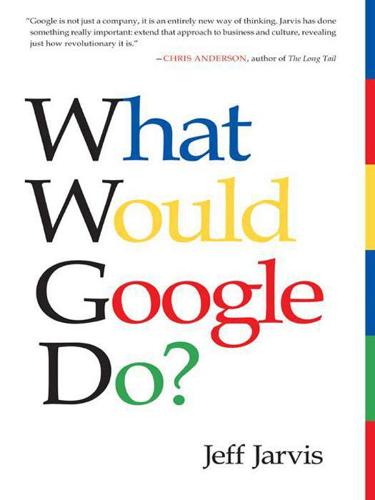
What Would Google Do?
by
Jeff Jarvis
Published 15 Feb 2009
I’d start a company that does nothing but help market homes in the open internet, creating listings on craigslist, taking pictures and making videos, making web pages for the homes, making sure those pages show up in searches, even buying ads on Google. Thanks to Google, you can do this on your own with links to as many photos as you want (free on Google Picasa); video tours (free on YouTube and easily shot with a $100 Flip Video camera); maps to area attractions (free with Google Maps); an aerial view (thanks to Google Earth); and lists and reviews of local restaurants (thanks to Yelp, also on Google Maps). Home sellers can add links to their own favorite hangouts and best grocery stores and add tips about where the kids can play. You can sell not just the property but the experience, the lifestyle, the community.
…
And I’ll add that, of course, both companies make the best products. They are fanatical about quality. But Tobaccowala said that what makes these two companies most alike is that—like any great brand—they answer one strong desire: “People want to be like God.” Google search grants omniscience and Google Earth, with its heavenly perch, gives us God’s worldview. Apple packages the world inside objects of Zen beauty. Both, Tobaccowala said, “give me Godlike power.” WWGD? indeed. Generation G Google is changing our societies, our lives, our relationships, our worldviews, probably even our brains in ways we can only begin to calculate.
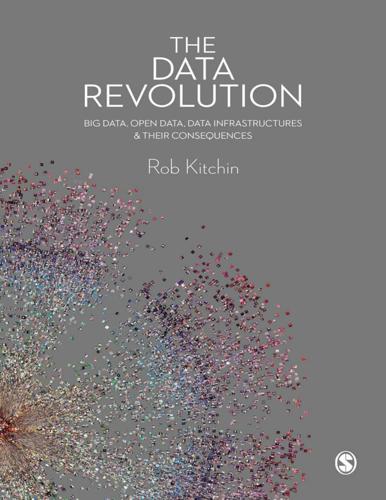
The Data Revolution: Big Data, Open Data, Data Infrastructures and Their Consequences
by
Rob Kitchin
Published 25 Aug 2014
An example of enhanced resolution are remote sensing images. In the late 1980s, the highest resolution images of the Earth’s surface available to most non-government researchers were those taken by Landsat satellites, where each pixel relates to a 30 × 30 metre parcel of land. Much of the imagery now available on Google Earth has a resolution of 2.5 × 2.5 metres, enabling much more detail to be viewed and analysed. Similarly, with respect to the output of census data, the resolution of the tertiary data has increased in many jurisdictions. In the Irish case, until recently census data were published for electoral divisions (ED) (3,409 areas with an average population of c.1,350, with the population per ED being much higher in cities and towns and lower in rural areas).
…
Crovitz, L.G. (2012) ‘Obama’s “Big Data” Victory’, Wall Street Journal, 18 November, http://online.wsj.com/article/SB10001424127887323353204578126671124151266.html (last accessed 19 November 2012). Crowley, U. (2009) ‘Genealogy method’, in R. Kitchin and N. Thrift (eds), International Encyclopedia of Human Geography, vol. 4. Elsevier, Oxford, pp. 341–4. Crutcher, M. and Zook, M. (2009) ‘Placemarks and waterlines: racialized cyberscapes in postKatrina Google Earth’, Geoforum, 40(4): 523–34. Cukier, K. (2010) ‘Data, data everywhere’, The Economist, 25 February, http://www.economist.com/node/15557443 (last accessed 12 November 2012). Culler, J. (2010) ‘The closeness of close reading’, ADE Bulletin, 149: 20–25. Curry, M.R. (1997) ‘The digital individual and the private realm’, Annals of the Association of American Geographers, 87: 681–99.
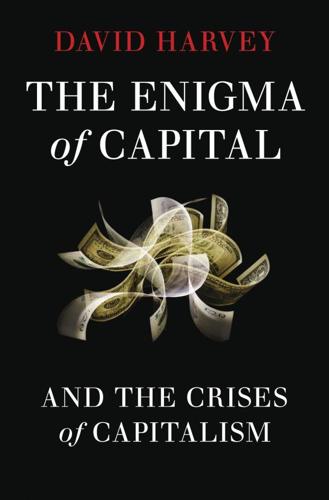
The Enigma of Capital: And the Crises of Capitalism
by
David Harvey
Published 1 Jan 2010
Hence the British Royal Society’s competition in the eighteenth century to construct a chronometer that could work on the high seas and so pinpoint locations accurately. In the early years, maps were guarded as state secrets and kept under lock and key. Now, of course, we have satellites, GPS systems and Google Earth to guide us, though this does not prevent the US from buying up all the satellite images of Afghanistan to protect its military interests. Drones flying over Afghanistan fire missiles on command from a base in Colorado. Computerised orders from Wall Street are executed in London and received instantaneously in Zurich and Singapore.
…
.: The World is Flat 132 futures, energy 24 futures markets 21 Certificates of Deposit 262 currency 24 Eurodollars 262 Treasury instruments 262 G G7/G8/G20 51, 200 Galileo Galilei 89 Gates, Bill 98, 173, 221 Gates foundation 44 gays, and colonisation of urban neighbourhoods 247, 248 GDP growth (1950–2030) 27 Gehry, Frank 203 Geithner, Tim 11 gender issues 104, 151 General Motors 5 General Motors Acceptance Corporation 23 genetic engineering 84, 98 genetic modification 186 genetically modified organisms (GMOs) 186 gentrification 131, 256, 257 geographical determinism 210 geopolitics 209, 210, 213, 256 Germany acceptance of state interventions 199–200 cross-border leasing 142–3 an export-dominated economy 6 falling exports 141 invasion of US auto market 15 Nazi expansionism 209 neoliberal orthodoxies 141 Turkish immigrants 14 Weimar inflation 141 Glass-Steagall act (1933) 20 Global Crossing 100 global warming 73, 77, 121, 122, 187 globalisation 157 Glyn, Andrew et al: ‘British Capitalism, Workers and the Profits Squeeze’ 65 Goethe, Johann Wolfgang von 156 gold reserves 108, 112, 116 Goldman Sachs 5, 11, 20, 163, 173, 219 Google Earth 156 Gould, Stephen Jay 98, 130 governance 151, 197, 198, 199, 201, 208, 220 governmentality 134 GPS systems 156 Gramsci, Antonio 257 Grandin, Greg: Fordlandia 188, 189 grassroots organisations (GROS) 254 Great Depression (1920s) 46, 170 ‘Great Leap Forward’ 137, 138, 250 ‘Great Society’ anti-poverty programmes 32 Greater London Council 197 Greece sovereign debt 222 student unrest in 38 ‘green communes’ 130 Green Party (Germany) 256 ‘green revolution’ 185–6 Greenspan, Alan 44 Greider, William: Secrets of the Temple 54 growth balanced 71 compound 27, 28, 48, 50, 54, 70, 75, 78, 86 economic 70–71, 83, 138 negative 6 stop in 45 Guggenheim Museu, Bilbao 203 Gulf States collapse of oil-revenue based building boom 38 oil production 6 surplus petrodollars 19, 28 Gulf wars 210 gun trade 44 H habitat loss 74, 251 Haiti, and remittances 38 Hanseatic League 163 Harrison, John 91 Harrod, Roy 70–71 Harvey, David: A Brief History of Neoliberalism 130 Harvey, William vii Haushofer, Karl 209 Haussmann, Baron 49, 167–8, 169, 171, 176 Hawken, Paul: Blessed Unrest 133 Hayek, Friedrich 233 health care 28–9, 59, 63, 220, 221, 224 reneging on obligations 49 Health Care Bill 220 hedge funds 8, 21, 49, 261 managers 44 hedging 24, 36 Hegel, Georg Wilhelm Friedrich 133 hegemony 35–6, 212, 213, 216 Heidegger, Martin 234 Helú, Carlos Slim 29 heterogeneity 214 Hitler, Adolf 141 HIV/AIDS pandemic 1 Holloway, John: Change the World without Taking Power 133 homogeneity 214 Hong Kong excessive urban development 8 rise of (1970s) 35 sweatshops 16 horizontal networking 254 household debt 17 housing 146–7, 149, 150, 221, 224 asset value crisis 1, 174 foreclosure crises 1–2, 166 mortgage finance 170 values 1–2 HSBC 20, 163 Hubbert, M.
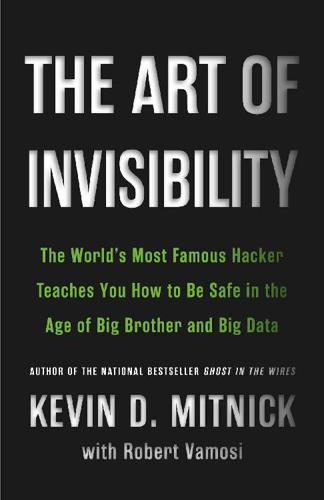
The Art of Invisibility: The World's Most Famous Hacker Teaches You How to Be Safe in the Age of Big Brother and Big Data
by
Kevin Mitnick
,
Mikko Hypponen
and
Robert Vamosi
Published 14 Feb 2017
Things have gotten complicated: we have the expectation of privacy within our own homes and on our own property, but now that’s being challenged. Google, for example, masks out faces and license plates and other personal information on Google Street View and Google Earth. But a neighbor with a private drone gives you none of those assurances—though you can try asking him nicely not to fly over your backyard. A video-equipped drone gives you Google Earth and Google Street View combined. There are some regulations. The Federal Aviation Administration, for instance, has guidelines stating that a drone cannot leave the operator’s line of sight, that it cannot fly within a certain distance of airports, and that it cannot fly at heights exceeding certain levels.16 There’s an app called B4UFLY that will help you determine where to fly your drone.17 And, in response to commercial drone use, several states have passed laws restricting or severely limiting their use.

Life After Google: The Fall of Big Data and the Rise of the Blockchain Economy
by
George Gilder
Published 16 Jul 2018
Page and Brin set out to render the world, beginning with its simulacrum, the Worldwide Web, as a readable set of digital files, a “corpus” of accessible information, an enormous database. As the years passed, Google digitized nearly all of the available books in the world (2005), the entire tapestry of the world’s languages and translations (2010), the topography of the planet (Google Maps and Google Earth, 2007), down to the surfaces and structures on individual streets (StreetView) and their traffic (Waze, 2016). It digitized even the physiognomies of the world’s faces in its digital facial recognition software (2006, now upgraded massively and part of Google Photos). With the capture of YouTube in 2006, Google commanded an explosively expanding digital rendition of much of the world’s imagery, music, and talk.
…
It has a currency—a monetary system—and it is based on a gold standard. It is a fake gold standard, but the emulation is accurate enough to create a gilded simulacrum of monetary value. In Stephenson’s account, T’Rain employs a sophisticated geologist to reproduce algorithmically not only the topography of Google Earth but also the underlying strata of its actual geology. To acquire purchasing media for the game you have to “mine” simulated gold from the stratigraphic mazes of the algorithmic sub-terrain. In theory, this is as relatively costly, time-consuming, and difficult in the geologist’s virtual reality as mining real gold is from the earth.

Upgrade
by
Blake Crouch
Published 6 Jul 2022
While I was doubtful there’d be a security checkpoint at the river, you never knew. My guess was that, while the National Guard and the CDC didn’t want people coming into town, their main focus would be on keeping the townsfolk from leaving. At 10:45 P.M., my Garmin chimed. I’d spent much of last night studying the Google Earth satellite images of Glasgow and the surrounding terrain, and before setting out on the water, I’d dropped a GPS pin at what I had chosen for my take-out point. I paddled to shore, hopped out of the raft, dragged it onto dry ground. The edge of town was just under a thousand meters east of my position, on the far side of an open field.
…
He might as well have been screaming at me how much he loved violence and inflicting pain—the worst kind of person to encounter with an upgrade. He carried no weapon that I could see. I stayed down, letting him come closer. Thoughts fired at the speed of light. How did he find me here? Simple. He was expecting me. He’d done the same Google Earth reconnaissance I had, determined the Milk River was the best way into town, the field I had crawled across the safest approach. And he had waited for me to show. I’d messed up. Been so intent on finding the best way into a quarantined city that I had failed to consider that someone of my intelligence would have identified the same route.
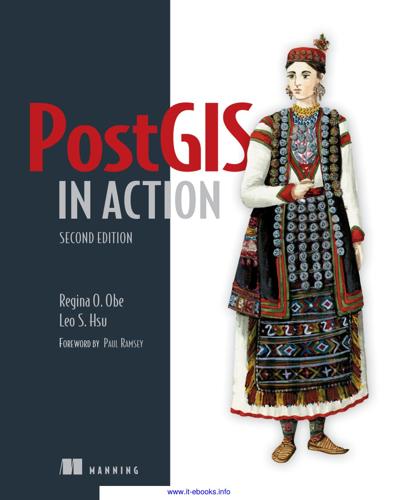
PostGIS in Action, 2nd Edition
by
Regina O. Obe
and
Leo S. Hsu
Published 2 May 2015
The types of people we’ve found are most attracted to PostGIS and are best suited for reading this book are listed here. GIS PRACTITIONERS AND PROGRAMMERS You know everything about data, geoids, and projections. You know where to find sources of data. You can create stunning applications with ArcGIS, MapInfo, Google Earth, OpenLayers, Adobe Flex, Silverlight, or other Ajax-enabled toolkits. You’re adept at generating data sources in Esri shapefiles, using MapInfo, and creating cartographic masterpieces. You may even be able to add and extract data from a spatially enabled database, but when asked questions about the data, you’re stuck.
…
Listing 4.6 Export subset of records based on filter to KML Export PostGIS table and query to KML Simple export whole table to KML ogr2ogr -f "KML" /gisdata/us_adminbd.kml ➥PG:"host=localhost user=postgres port=5432 dbname=postgis_in_action ➥password=mypassword" us.admin_boundaries -dsco NameField=name_2 ogr2ogr -f "KML" ➥/gisdata/biketrip.kml PG:"host=localhost user=postgres port=5432 ➥dbname=postgis_in_action password=mypassword" -dsco NameField=time ➥-select "SELECT track_seg_point_id, ele, time" ➥-where "time BETWEEN '2009-07-18 04:33-04' AND '2009-07-18 04:34-04'" ➥staging.aus_biketrip_narangba Export multiple tables to a single KML file ogr2ogr -f "KML" ➥/gisdata/biketrail.kml PG:"host=localhost user=postgres port=5432 ➥dbname=postgis_in_action password=mypassword" -dsco NameField=time ➥staging.track_points staging.tracks Licensed to tracy moore <nordick.an@gmail.com> www.it-ebooks.info 99 Importing OpenStreetMap data with osm2pgsql These examples always include a NameField argument. This tells ogr2ogr which field to use as the KML title. When exporting multiple tables, ogr2ogr places them all into the same KML file. Take a look at the KML generated by the preceding multi-table export in Google Earth, and you’ll see two layers in the biketrail.kml file: one for track_point and one for tracks. EXPORT TO MAPINFO TAB FILE FORMAT USING OGR2OGR The next example outputs to MapInfo TAB format. Unlike KML, which is always in WGS 84 lon/lat (EPSG 4326), MapInfo data can be in any spatial reference system.
…
ST_AsBinary is the OGC- and SQL/MM-compliant version, whereas ST_AsEWKB is a PostGIS-specific version that includes the SRID. 6.1.2 Keyhole Markup Language (KML) Keyhole Markup Language is an XML-based format created by Keyhole, Inc., to render geospatial data in its applications. KML gained enormous popularity after Google acquired Keyhole and integrated KML into Google Maps and Google Earth. OGC accepted KML as a standard transport format in its own right. The PostGIS geometry and geography function for exporting to KML is called ST_AsKML. The default output is KML version 2 with 15-digit precision. ST_AsKML isn’t one function, but several with the same name that take different arguments.

One Minute to Midnight: Kennedy, Khrushchev and Castro on the Brink of Nuclear War
by
Michael Dobbs
Published 3 Sep 2008
After reeling through more than a hundred cans of film, and tens of thousands of images, I feel enormously fortunate to have found some previously unpublished photographs of the Bejucal facility taken by U.S. reconnaissance planes in October 1962. Several frames included shots of the special vans used to transport nuclear warheads around Cuba, proof that I had found the right place. I was able to combine these photographs with contemporary images from Google Earth to find the precise location of the nuclear storage site. A final example: uncovering the details of the U-2 flight over Chukotka, also on Black Saturday. Standard academic accounts of the missile crisis usually mention this incident only in passing. The U.S. Air Force has failed to declassify a single piece of information about the flight by Captain Charles F.
…
Unpublished MS by Del Pino. 101 "Our greatest problem": Notes on meeting between Castro and Cuban military chiefs, October 24, 1962, released by the Cuban government, Documentos de los Archivos Cubanos, Havana 2002. 102 This stretch of coastline: Szulc, 474–6. 102 A thirty-minute drive: Author's visit to Tarará beach and SAM site, March 2006. Both the SAM site and the antimissile site are still visible on Google Earth at 23 09 28.08 N, 82 13 38.87 W. 103 As he drove back to Havana: Acosta, 165. For Castro's thoughts, see Blight et al., Cuba on the Brink, 211. Photographs of Castro's visit to the AA unit are available on Cuban Web sites. 103 "Fidel gets his kicks": Franqui, 189. 104 A few months earlier: Estimate by Soviet defense minister Malinovsky; Blight and Welch, On the Brink, 327. 104 The Marine regiment selected: Marine Corps records, October 1962, JFKARC. 104 "Where are we gonna go?"
…
In the latter, Gribkov incorrectly states that the Luna warheads were stored at Bejucal. According to Beloborodov, who was directly responsible for them, they were stored in Managua. The coordinates of the Bejucal bunker are 22 56 18 N, 82 22 39 W. The outlines of the bunker and circular road are still visible on Google Earth. The headquarters facility was half a mile south of the bunker, on the northeastern outskirts of Bejucal. The coordinates of the Managua complex (three bunkers) are 22 58 00 N, 82 18 38W. 175 "The experts kept saying":Author's interview with Dino Brugioni, May 2007. 176 "a double security fence": Joint Evaluation of Soviet Missile Threat in Cuba, October 19, 1962, CREST; Lundahl briefing of JFK, October 22, 1962. 176 The molasses factory: Brugioni, Eyeball to Eyeball, 542.
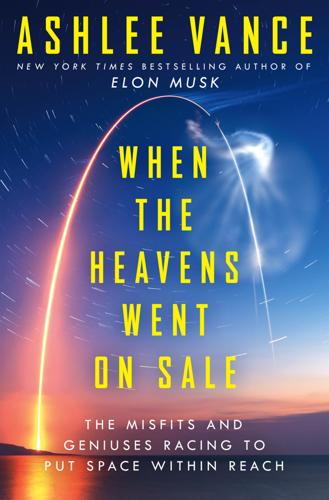
When the Heavens Went on Sale: The Misfits and Geniuses Racing to Put Space Within Reach
by
Ashlee Vance
Published 8 May 2023
Once they know what these objects look like, the AIs watch them all the time and make note anytime a road changes, a house is torn down, or a ship leaves port. This global analysis system never stops running and serves as a sentry system for the human analysts. When something interesting on Earth changes, an alert is sent to a human, who then takes a closer look at what’s happening. You are no doubt familiar with products such as Google Earth and Google Maps that seem to do similar work. Much of the imagery in those systems comes from commercial satellite systems, and Google has certainly done a remarkable job at using the pictures to catalogue the world. The pictures, though, are often dated and tend to be much better in highly populated areas.
…
D’Mello had come from Australia and started at Rocket Lab in mid-2014 as a glorified intern.* He’d bounced from one project to another and built up some cred as a capable human. Since no one else had figured out the logistics behind selecting a rocket launch site, D’Mello seemed like a good enough man for the job. D’Mello pulled up Google Earth on his computer and began scouring both the North Island and the South Island for unpopulated areas near the coasts. If they could be reached from Auckland by car or a short plane ride, all the better. He placed markers on his map for around two dozen locations and then investigated them further.
…
See Schingler, Jessy Kate (née Cowan-Sharp) Crawford, James, 122 Cube of Learning (Beck; sculpture), 149 CubeSat, 92, 93–94 Cupid, 438 Cyclone-4 rocket, 445 Dangerous Sports Club, 54 DARPA (Defense Advanced Research Projects Agency), 37–39, 116, 195–196, 199, 202, 285, 369–370, 374–375 deep-space exploration, 490 Defense Advanced Research Projects Agency (DARPA), 37–39, 116, 195–196, 199, 202, 285, 369–370, 374–375 Dell, Michael, 410n Delphin engine, 370 Delta Clipper, 47 differential drag, 32, 109 DirectTV, 443n DISCOVERER, 116 diversity, lack of, 287, 288 D’Mello, Shaun, 215, 219, 231 Dnipropetrovsk (Dnipro), 438–443, 444, 447–448, 450 Dotcom, Kim, 138 Doves (satellites), 27, 31–32, 96, 103–106, 109–110, 227, 396 Dragon capsule, 327 EchoStar, 443n Edwards Air Force Base, 173, 412 Electron rocket concept for, 139, 209 construction of, 140–141 first launch and, 226–227 flight frequency of, 16 kick stage for, 230–231 launch challenges and, 214–218, 220–221 Markusic and, 424 Planet Labs and, 107 reusability and, 490 schedule and, 224 second launch and, 227–228 size comparison of, 395 success of, 337–338, 365, 369 third launch of, 238–241 work on, 209–213 Elizabeth II, Queen, 84 Energia rocket, 437 English, Christa, 410, 411, 417, 419, 424, 465 EOS Data Analytics, 433 Escapia, 59, 273 European Space Agency, 83 Eveleth, Decker, 112–115, 119 expected casualty analysis, 345 Expedia, 273 FAA, 330–331, 332, 336, 343, 345 Falcon 1, 2–13, 16, 20, 38, 40, 56, 188, 208, 397, 415, 419, 426 Falcon 9, 12, 141, 395, 428, 490 Farrant, Ben, 289–290, 370, 391 Fay, Michael, 190–192, 193, 203, 216–217 Federal Communications Commission, 131 Ferraro, Matthew, 101 Firefly Aerospace Astra and, 493 delays and, 466–467 first launch and, 479 founding of, 404–405 funding and, 455, 464–465, 470–471, 475 goals of, 402, 403–404 increase rocket size and, 455 launch license denial and, 472, 485 Polyakov and, 434–436, 457–458 Polyakov’s ouster and, 484–486 setbacks for, 458–459 SpaceX and, 403 success of, 486 in Ukraine, 448–450 value of, 476 Firefly Farm, 466 Firefly Space Systems advantages for, 208 bankruptcy of, 429, 433–434 founding of, 423–427 funding and, 428–430 goals of, 207, 427 launch vehicles of, 395 Martin and, 356 Polyakov and, 433–434 Rocket Lab and, 214, 230 US government agreement and, 456 Vandenberg Air Force Base and, 460–464 Fisher & Paykel, 154–157, 159, 161, 163, 165 Five Eyes intelligence-sharing group, 222 Flanagan, Matthew, 339, 356–362, 391 Fleet Space Technologies, 238–239 Fleming, Shane, 218 flight termination systems, 225, 227, 286, 344–345 Flirt, 438 4D, 274–275, 489 FuckedCompany.com, 274 Gamma, 426 Garcia, Ian, 290, 329 Garver, Lori, 67 Gates, Bill, 387, 388 Gemini mission, 42 Gentile, Bryson, 311–314, 317, 379 geolocation data, 125–126 Gies, Bill, 287–288, 338–340, 391 Gillies, Daniel, 234n Gillmore, Chester, 108 Goddard, Robert, 145 Google Ames Research Center and, 58, 61, 64–65 Google Earth, 120 Google Maps, 120 Google Mars, 64, 276 Google Moon, 64–65, 276 PhoneSat project and, 93 Skybox Imaging and, 111n Gorbachev, Mikhail, 47n GPS chips, 303 Grassley, Chuck, 68 Great Mercury Island, 190–191, 202–203 Griffin, Michael, 43, 54, 59 Guiana Space Center, 397 hacker houses, 73 Halley’s Comet, 153–154 Hawking, Stephen, 86 HitDynamics, 438 Hofmann, Chris, 338–339, 346, 350, 379, 382, 391 Holicity, 387 HomeAway, 273 Hopkins, Anthony, 148 Houghton, Samuel, 199–201 Howard, Ben, 101, 103, 106, 488 Hubble Space Telescope, 43 Humanity Star, 227–228 Hundley, Lucas, 281–282 Hydra, 447 hydrogen peroxide, 159–161 Hyperloop, 356 ICBM factory in Dnipro, 440, 444 image analysts, 118–119 imaging satellites, 98–99 India Pakistan and, 123–124 space program in, 27–28 Indian Space Research Organisation (ISRO), 27, 29–30 Industrial Research Limited (IRL), 169–171, 179, 181, 184 Industrial Revolution, 145 Ingels, Bjarke, 312 Instant Eyes project, 195–196, 199–201 International Astronautical Congress, 49, 86 International Space Station (ISS), 13, 105, 107, 436 International Space University, 66, 86–87 International Talk like a Pirate Day, 79 International Traffic in Arms Regulations (ITAR), 66, 233–234 internet service, satellites and, 14, 18, 128–130, 487–488 Intimidator 5, 91 ion thrusters, 450 Iridium, 129, 388 Israel Defense Forces, 119 ITAR (International Traffic in Arms Regulations), 66 jade, 149 James, Deborah Lee, 475 James Webb Space Telescope, 327 Jazayeri, Mike, 365n Jet Propulsion Laboratory (JPL), 43, 85, 174–175 Jobs, Steve, 63 Jornales, Rose, 286–287, 391 Joyce, Steven, 221, 223 Judson, Mike, 290–291, 307, 317, 318, 324 Jurvetson, Steve, 91, 102, 104n, 105, 488 Keeter, Milton, 330–331, 332, 338–340, 343–346, 391 Kelly, Isaac, 326, 338–342, 391 Kemp, Chris Ames Research Center and, 59–61, 276 Astra going public and, 385, 387–388, 390–391 Beck and, 365–366 Brockert and, 292 budget issues and, 326 Burning Man and, 253–254 company name and, 294–295 “Dawn of Space” party and, 295–296 engine tests and, 282–283, 307 financial issues and, 370–372, 374, 378, 381–382 funding and, 296–297, 365, 366, 383 goals of, 309–310, 384 Google and, 64–65 on himself, 267–277 Jessy Kate and, 324–325 Judson and, 291n launch attempts and, 316, 361, 376, 380, 382–383, 393 launch delays and, 334 launch failures and, 336, 337, 347, 349, 350–354, 364 launch locations and, 280, 304 launch preparations and, 331–333 life advice from, 308 living arrangements of, 102n loss of driver’s license and, 297–299 Lyon and, 390 Marshall and, 85 Martin and, 356, 357–358 media attention and, 317 moving rocket and, 305, 306 Open Lunar Foundation and, 488 OpenStack and, 250–253 Polyakov and, 468–469 Rainbow Mansion and, 72–73 recent work of, 489, 492–493 Rocket Lab and, 338 security and, 301 simplicity of design and, 279 Skyhawk space and, 310–314, 367–369 status meetings and, 281 Stealth Space Company and, 260–263, 265 Thompson and, 348–349 transparency of, 394 Ventions LLC and, 250, 257–258 Whitesides and, 423 Kennedy, Fred, 13, 37–38 Kennedy Space Center, 174 Kessler syndrome, 131 Key, John, 220, 221, 222, 223 Khosla Ventures, 206–207, 209, 214 Khrushchev, Nikita, 440 King, P.
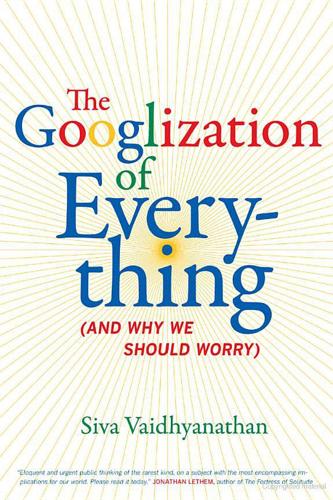
The Googlization of Everything:
by
Siva Vaidhyanathan
Published 1 Jan 2010
In 2007 Google announced plans for a mobile-phone operating system and attempted, but failed, to change the ways that the United States government allocates radio bandwidth to mobile companies in an attempt to open up competition and improve service.11 And since 2005 the company has been Googlizing the real world through Google Maps, Street View, and Google Earth, a service that allows users to manipulate satellite images to explore the Earth from above. Only one company does all that, so it does not even need a label beyond its increasingly pervasive brand name. This diversity of enterprises has confused and confounded other firms that compete with Google.
…
See Federal Emergency Management Agency (FEMA) filters, 7, 175–76, 178–79, 182 financial status, Google’s, 17–18, 229n14; and earnings from advertising, 27, 229n14 Finland, 142 Firefox, 17, 29, 30 Fleetwood Mac, 113 Flickr, 82 foreign markets, Google’s share in, 25, 132–33, 141–45, 229n14 forgetting, of information, 174, 176–79 260 IND EX Foucault, Michel, 111, 112 founders, Google’s, 67, 156, 186–87, 202 France, 14, 25, 47, 115, 130, 142, 146, 153 Frankel, Max, 56 free market, 45, 46 free rider problem, 30–36, 166 free speech, 109, 110; in China, 120, 130, 131 free trade, 109 Froomkin, Michael, 245n54 Gandy, Oscar, 236n20 gang-related online video, 110 Ganley, Paul, 168, 169, 172 Gaukroger, Stephen, 149 Germany, 14, 25, 47, 65–66, 102, 108, 112, 113, 121, 122, 123, 130, 134, 142, 153 global civil society, 135, 138, 140, 141, 145, 148, 243–44n48 globalization, 108–10, 111, 146 Gmail, 3, 16, 19, 67, 86, 90, 129, 143, 183; Chinese dissidents’ use of, 116, 118; Iranian dissidents’ use of, 116; students’ use of, 197 “God,” search results for, 63–64 Google bombing (search-engine optimization), 66 Google Books: and antitrust laws, 153, 162; authors’ response to, 152, 153, 154, 156, 161, 162, 163, 173, 202; Chinese response to, 153; copyright issues raised by, 10, 155, 159–61, 163, 166–71, 172; European response to, 153; and fair use, 153, 160–61, 162, 165–66, 168–70, 172; fourfactor analysis of, 169; initial project of, 156–60; legal actions resulting from, 48, 154, 156, 160–62, 165–66, 168; libraries’ participation in, 17, 23, 152–53, 155, 158–60, 162–66, 169, 171, 186, 202, 203; and misapplication of Web standards to books, 152, 167, 171; noncommercial service preferable to, 169, 171–72; and out-of-print books, 153, 154, 156, 161–62, 171; and partner program, 157, 159; and privatization of knowledge, 152, 153, 155, 164–65; and public domain, 157, 158, 159; and public failure, 44, 155; public project preferred to, 203–4; publishers’ response to, 11, 17, 48, 152–54, 156–63, 165–68, 170–73, 202; and registered users, 183; and rights registry, 161, 162; and royalty payments, 161, 172, 173; universities’ participation in, 150–53, 155, 158, 162–65, 169, 171–72, 186 Google Checkout, 16 Google Docs, 24, 29 Google Earth, 17 Google headquarters, 49, 72, 187 Google Maps, 106, 107, 117 Googlemobiles, 98, 104–5 Google News, 32–35, 44, 78, 79, 148 Google Scholar, 186, 190–94 Google Street View, 17, 48, 98–108, 111, 237nn24,32 Google Voice, 16 Google Web Search. See search engine, Google; search results, Google Gorbachev, Mikhail, 122–23 GoTo (search engine), 27 Graham, Christopher, 106 Granovetter, Mark, 231n33 Great Britain.

Falter: Has the Human Game Begun to Play Itself Out?
by
Bill McKibben
Published 15 Apr 2019
On an agreeably cool March morning a few years ago, I stood on the roof of a suburban ranch house in Surprise, a suburb of Phoenix, with Elon Musk’s cousin Lyndon Rive, who was at the time the CEO of Solar City, the biggest installer of rooftop solar in the country. Around us, a five-man crew was laying out a grid of solar panels, following a plan designed by an employee in California who had measured the roof by looking it up on Google Earth. The crew had assembled at the house at seven that morning, and by five in the afternoon the new solar array would be ready to be turned on. The homeowner was paying nothing up front, and within the first month, she would see her total electric bill decline—why would anyone not do it? “It’s like email in 1991,” Rive said.
…
See also oil and gas industry; and specific types climate change research and divestment and federal subsidies and fossil record Fossouo, Max-Marc Fountainhead, The (Rand) Fox News fracking Francis, Pope Freedom Partners Investment Freud, Sigmund Friedan, Betty Friend, Tad Frontiers of Freedom Fukushima reactors “Future Does Not Need Us, The” (Joy) Future of Humanity Institute Gagarin, Yuri Gaia theory Gallagher, Nora Gandhi, Mohandas GDP, global gene drives gene editing GenePeeks General Agreement on Tariffs and Trade (GATT) gene therapy or repair genetically modified (GMO) food genetic engineering choice and danger of germline, heritable regulation and somatic space travel and genetic testing GenRich class Germany Ghana Gilgamesh glaciers Global Climate Coalition (GCC) Global Seed Vault Gmail Go goldenrod Goldman Sachs Goodall, Jane Goodell, Jeff Google Google Earth Gore, Al government antigovernment ideology and public choice theory and regulation and Grain Belt Great Barrier Reef Great Barrier Reef Legacy Great Society Greece Green Bay Packers greenhouse effect. See climate change greenhouse gases, defined. See also carbon dioxide emissions; methane Greenland Green Mountain National Forest Green Mountain Power (GMP) Green New Deal Green Revolution Greenspan, Alan grouper Guardian Gulf of Mexico Gulf of Oman Gulf Oil Gupta Empire Halliburton Hamer, Dean Han Empire Hansen, James Harari, Yuval Hari, Johann Harland, Greg Harvard Business Review Hawaii Hawking, Stephen Hawn, Goldie Hayek, Friedrich Hayflick limit Haynes, Robert health care Healthy Longevity Grand Challenge Heartland Institute heat index heat waves.
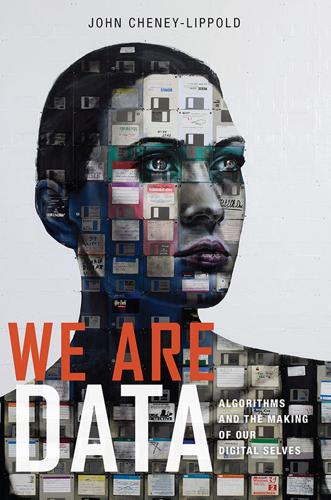
We Are Data: Algorithms and the Making of Our Digital Selves
by
John Cheney-Lippold
Published 1 May 2017
These “beta” programs indicate that they are not in their final form and have not been officially released. They are in a developmental limbo, previously known as beta testing, in which users (often a small population) toy with a program in order to find and weed out bugs from its final distribution. Lev Manovich describes our use of digital technology as such, claiming, “a user of Google Earth is likely to experience a different ‘earth’ every time she uses the application.”139 Both the world itself and the representation that Google presents us of that world are in constant flux. We should think of algorithmically processed data in this way. Measurable types like ‘gender’ or Shimon’s version of ‘you’ are not truths but betas.
…
See also Immersion Goffman, Ervin, 47, 51, 206–7 Golumbia, David, 258 Google, 11, 86, 89–92, 108, 147, 154–56, 167, 182, 197, 231, 259; algorithms, ix–xiii, 5–10, 27, 29–32, 58–66, 73, 76, 98, 108, 137, 157, 166, 186, 192, 195, 226, 241, 253–54, 257; Data Wars and, 19–26; making data useful, 46, 81, 88, 153, 229–30; in PRISM, 289n12; privacy, 207, 222–23, 238. See also GChat; Gmail; “Who Does Google Think You Are?” Google Ads, 6 Google Alerts, 58 Google Chrome, 179 google.com, ix, 6, 230, 238 google.com/ads/preferences, 6 google.co.uk, ix–x Google Earth, 90 Google Flu Trends, 100, 121–29, 126, 131–32, 136, 148 Google Maps, 136 Google Translate, 35, 159, 175–80, 178, 193–94, 196, 292n68, 292n73, 292n74 Gordon, Avery, 259 Government Communications Headquarters (GCHQ, UK), 74, 186 GPS, 9, 19, 25, 123, 153, 156, 262 Graham, Stephen, 132 Gramsci, Antonio, 52 graph matching, 43–44 Gray, Herman, 67 Grudin, Jonathan, 227 Guattari, Félix, 77, 105, 164, 171–72, 190 hackers, 155, 208, 228, 240 Hacking, Ian, 8, 61–62 Halberstam, J., 25, 60–61, 191 Hall, Stuart, 63, 185 Hansen, Mark B.

Cyprus - Culture Smart!: The Essential Guide to Customs & Culture
by
Constantine Buhayer
Published 24 Feb 2022
Wherever there are signs along military areas to reduce speed, reduce it. The advice about Turkish military camps is, avoid them; do not slow down alongside them; do not take any pictures or hold a camera or make any stops. On a different note, Turks revere their flag. Northern Cyprus is probably the only place where even the Google Earth camera vehicle has a Turkish flag visibly displayed on its hood. A “Pirate” Returns to Cyprus The director of the film Pirates of the Caribbean—Dead Man’s Chest wanted the two sailors quarreling over the hero’s hat to invent a language. They happened to be Jimmy Roussounis, a Greek Cypriot and Nej Adamson Salih, a Turkish Cypriot, who chose to shout at each other in their respective Greek-Cypriot and Turkish-Cypriot dialects.

Kill Chain: The Rise of the High-Tech Assassins
by
Andrew Cockburn
Published 10 Mar 2015
Potential targets on the ground are aware of the delay: Yemeni members of al-Qaeda reported in 2011 that when they hear a drone overhead, they move around as much as possible. Nor do the pictures themselves necessarily always bear close resemblance to the world as the rest of us see it and sometimes are “no better than looking at Google Earth through a straw,” as one veteran remarked of the plane’s “spotter TV” feature. Thus for most of the time the convoy was under watch, the sensor could only focus on two of the three vehicles at a time. If the operator zoomed out even slightly, the already imperfect resolution was lost. Imagery became even less precise if there was dust in the air, if the drone was too high, at dusk or dawn (when both infrared and daylight-use electro-optical cameras lose efficiency), or when the sensor operator could not focus properly.
…
While it was possible to make out cars and other vehicles, it was impossible to distinguish “dismounts” (people) from bushes. One of the test team’s briefing slides that I looked at compared aerial pictures of an air base. One was a Gorgon Stare infrared “full image.” In other words, it showed the widest area of which it was capable. The other came from Google Earth, the free online service available to all. They were identical, revealing buildings and roads, and airfield runways, but nothing smaller and more detailed. Another slide showed a “subview,” a sample of what troops in the field would get if they were to make a request to the drone overhead. It was just possible to make out the cars.

The Driver: My Dangerous Pursuit of Speed and Truth in the Outlaw Racing World
by
Alexander Roy
Published 13 Oct 2008
We had to re-create the conditions of 3446’s calamitous final leg. We had to see. We had to know. I bought another V1. Cory would shoot the entire practice drive, allowing me to correlate the V1’s alerts down to the mile marker, waypoint them true or false in the Garmin, then study potential traps in Google Earth. I had to evaluate my new, professionally programmed scanner. We had to understand what happened in Lone Pine Canyon. I had to do this having not slept for the 41 and a half hours we’d been awake the last time we reached this point. I glanced at the Garmin again. Our driving average had been 86.1 mph.
…
Every minute unspent on reviewing Driveplan .91Beta (Assault-22), or parsing www.speedtrap.org for new entries, or individual states’ sites for road-construction schedule changes, or watching hundreds of hours of Cory’s interviews with the U.S. Express drivers, or scrolling through the Garmin maps or Google Earth to find speed traps (actual or potential) I’d missed after watching the entire 3446 video in real time, was one that could put me in jail, or cost me my life. Every Friday and Saturday remaining in March had to be spent testing the M5, the new night-vision system, and the power gyrostabilizers for the binoculars and camcorders.

Python Data Analytics: With Pandas, NumPy, and Matplotlib
by
Fabio Nelli
Published 27 Sep 2018
For many of them you can choose the city of Comacchio as a reference to calculate the distance from the sea (see Figure 10-2). Once you have determined the distances from the 10 cities, you will get the values shown in Table 10-1.Table 10-1The Distances from the Sea of the 10 Cities City Distance (km) Note Ravenna 8 Measured with Google Earth Cesena 14 Measured with Google Earth Faenza 37 Distance Faenza-Ravenna+8 km Ferrara 47 Distance Ferrara-Comacchio Bologna 71 Distance Bologna-Comacchio Mantova 121 Distance Mantova-Comacchio Piacenza 200 Distance Piacenza-Comacchio Milano 250 Distance Milano-Comacchio Asti 315 Distance Asti-Comacchio Torino 357 Distance Torino-Comacchio Finding the Data Source Once the system under study has been defined, you need to establish a data source from which to obtain the needed data.
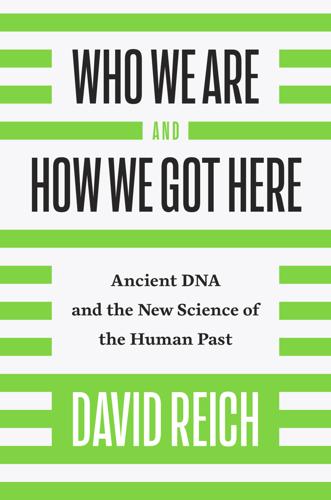
Who We Are and How We Got Here: Ancient DNA and the New Science of the Human Past
by
David Reich
Published 22 Mar 2018
Skoglund et al., “Genetic Evidence for Two Founding Populations of the Americas,” Nature 525 (2015): 104–8. 39. Povos Indígenas No Brasil, “Surui Paiter: Introduction,” https://pib.socioambiental.org/en/povo/surui-paiter; R. A. Butler, “Amazon Indians Use Google Earth, GPS to Protect Forest Home,” Mongabay: News and Inspiration from Nature’s Frontline, November 15, 2006, https://news.mongabay.com/2006/11/amazon-indians-use-google-earth-gps-to-protect-forest-home/. 40. “Karitiana: Biopiracy and the Unauthorized Collection.” 41. Povos Indígenas No Brasil, “Xavante: Introduction,” https://pib.socioambiental.org/en/povo/xavante. 42. M. Raghavan et al., “Genomic Evidence for the Pleistocene and Recent Population History of Native Americans,” Science 349 (2015): aab3884. 43.

Genius Makers: The Mavericks Who Brought A. I. To Google, Facebook, and the World
by
Cade Metz
Published 15 Mar 2021
The previous May, about a month after the launch of Project Maven, a team of Googlers met with officials at the Pentagon, and the next day the company applied for the government certifications needed to house military data on its own computer servers. But as Mattis discussed these technologies inside Google HQ three months later, he knew that navigating the relationship would require some delicacy. Mattis said he’d already seen the power of the company’s technology on the battlefield. After all, American adversaries were using Google Earth, an interactive digital map of the globe stitched together from satellite images, to identify mortar targets. But he was keen that the U.S. should up its game. Now, with Project Maven, the Defense Department wanted to develop AI that could not only read satellite images but also analyze video captured by drones much closer to the battlefield.
…
Department of Defense Devlin, Jacob, 273 diabetic retinopathy, using deep learning to test for, 179–80, 183–85 digital assistants, talking, 140, 169 Digital Equipment Corporation (DEC), 85 digital utopianism, 160 DistBelief, 91, 134, 135–36, 191–92, 193–94, 221 diversity issues bias within deep learning technology, 10–11, 231–32 Black in AI, 233 facial recognition systems, 231–32, 234–36 racial profiling by machines, 233 within training data, 231–32 DNNresearch acquisition by Google, 9, 198 auction for, 5–9, 11, 197 founding by Geoff Hinton, 2, 5, 98, 193 Domingos, Pedro, 192 Dota/Dota 2 (game), 281, 297 dreaming as a way of learning, 200 Duan, Rocky, 283 Duda, Richard, 24–25 Edge.org, 154 Efros, Alexei, 96–97 Eidos, 103–04 Elixir, 103–04 empiricists, 266, 268–89 Ensign, Jordi, 178 EPAC (electronic profile-analyzing computer), 17 Epstein, Jeffrey, 154 ethical issues AI Now Institute at NYU, 247 autonomous weapons, 240, 242, 244, 308 deceiving people into thinking a bot is human, 265 ethical AI team at Google, 237–38 GDPR (General Data Protection Regulation) for data privacy, 248 Google employee petition against Project Maven, 247–50 use of AI technology by bad actors, 243 Etzioni, Oren, 207, 271, 274, 291–92 Eustace, Alan acquisition of deep learning researchers and companies, 99–101, 134 at the NIPS Conference, 5, 10 problem-solving philosophy, 133–35 reflections on DeepMind’s progress, 113–14, 301 skydiving feat, 133–34, 135 “exclusive-or” concept, 25, 38–39 Facebook AI lab, 255 Applied Machine Learning Team, 255–56, 257 bid for DeepMind, 116, 121–24 building an AI machine to win at Go, 167–70, 255 Cambridge Analytica data breach, 251–52 campus, 121, 254 corporate reputation, 122–23, 125–26, 254–58 Facebook M, 169 FAIR (Facebook Artificial Intelligence Research), 119–21, 124–28 fake news scandals, 209, 252 flagged content, 253 hate speech, 253 identifying and removing unwanted content, 258–60 international presence, 207 key players, 323 live-streaming of 2019 Christchurch mosque attack, 258–59 work with natural language and complex ideas, 169, 271–72 facial recognition technology at Amazon (Amazon Rekognition), 236–38 bias, 231–32, 234–36, 308 government’s use of, 239–40, 308 at IBM, 235 law enforcement’s use of, 235–36 at Microsoft, 235–36 Fahlman, Scott, 40 FAIR (Facebook Artificial Intelligence Research), 119–21, 124–28 fake news, 208–09, 252 “Fake News Challenge,” 256–57 Fanon, Frantz, 235 Farabet, Clément, 58–59, 119–21, 197 Feinstein, Dianne, 258 Fergus, Rob, 128 Feynman, Richard, 205–06 Foo Camp, 196 Ford, Jackie, 61–62, 150–51, 309 foreign interference terrorist propaganda, 253, 256 in U.S. elections, 252, 258 the Founders Fund, 110, 112 Fukushima, Kunihiko, 51 Future of Life Institute, 157–60, 244, 291–92 games Breakout, 111–12, 113–14 capture the flag, 295–96 Dota/Dota 2, 281, 297 Go, 167–78, 214–17, 223–24, 269 Quake III, 295–97 StarCraft, 296–97 as the starting point for artificial intelligence, 111–12 GANs (generative adversarial networks) origin of, 205–06 Progressive GANs, 210 success of, 259–60 Garlock, Chris, 174 Gatsby Unit, 105–07 GDPR (General Data Protection Regulation), 248 Gebru, Timnit, 232–34, 237–38 gender issues female representation, 231–32, 237–38 male-only work environment, 130 selecting training data, 231–32 generative models, 114, 204–05 Geometric Intelligence, 197, 267–68 Ghahramani, Zoubin, 267–68 Giannandrea, John (“J.G.”), 136, 139, 241, 243, 307 Gibson, Garth, 208 Girschick, Ross, 130, 132 global platforms, 225–26 Go (game), 167–78, 214–17, 223–24, 269 Goodfellow, Ian (“the GANfather”), 56–57, 90–91, 124, 141–42, 203–06, 210–13, 282, 290, 308 Google 20 percent time, 87, 180 ability to read any Gmail message, 6 acquisition of DeepMind, 100, 112–16, 300–01 acquisition of DNNresearch, 5–7, 9, 198 Advanced Solutions Lab, 246 AdWords, 138 BERT universal language model, 273–74 building technologies to meet future needs, 197–98 campus, 83, 246 the Cat Paper, 88, 91 Chauffeur project, 137–38, 142 in China, 215–17, 220–26 corporate culture, 241–42 corporate priorities, 125 data centers, 76–77, 136, 138–39, 146–48 Duplex technology, 265–66 ethical AI, 237–38 Gang of Nine, 247 Google AI China Center, 225 Google Assistant, 264–65 Google Brain, 88–90, 124, 144, 146, 180, 183, 185–87, 212–13, 279–81 Google Cardboard, 180 Google Cloud Platform (GCP), 221–22, 245 Google Earth, 242 Google Photos, 228–30 Google Search, 83–84 Google Translate, 148–49 Google X, 83 “gorilla” tag incident, 229–30 GPU chips and cards usage, 134–36, 147 hardware development, 146–50, 215 international presence, 207, 215–17, 220–26 I/O conference, 263–65 key players, 321–22 machine translation, 144, 183 Moffett Field and Hangar One activities, 246 motivations for open-sourcing resources, 221 mythology and lore, 86–87 objections to Chinese censorship, 215–17 open research philosophy, 129–30 power consumption improvements in the data centers, 139 Project Mack Truck, 138–39 Project Marvin, 83 Project Maven, 240–50, 308 RankBrain, 139 robotics group, 279–81 speech recognition project, 74–79 tension between DeepMind and Google Brain, 185–86 TensorFlow, 220–22, 225 TPU (tensor processing unit), 148–50, 215, 222 government, U.S.
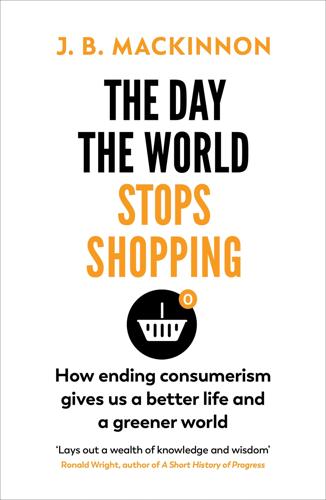
The Day the World Stops Shopping
by
J. B. MacKinnon
Published 14 May 2021
Private Zoom-viewings at auction houses pushed some jewellery sales to record highs; a Cartier Tutti Frutti bracelet (which looks like Skittles that melted among diamonds, except that the Skittles are sapphires, rubies and emeralds) went for $1.34 million at the height of the first lockdown, nearly twice the estimated price. We walked the streets of distant cities in Google Earth. We learned to accept ordering fruits and vegetables online, without seeing, smelling or feeling them. Animal Crossing sold faster than any other video game in history, then became a platform for virtual fashion, with hours-long lineups within the game to attend exclusive sales—using in-game currency—by well-known designers.
…
See also, Zavestoski, Stephen esteem, essential element, 246 Every One Every Day, 186–93 externalities, 288 “extreme luxury,” 199 extrinsic values, 120–21, 127 Fairphone, 152 Fakir Fashion, 157, 159–60 Fakir, Yousuf Ali, 158 fakirs, 157 family budget, 36–38 family business, 161, 170, 172, 174, 181, 188 fashion fashion cycle, 38, 60, 112, 155, 157, 252 fast fashion, 13, 26, 93, 138, 155–56, 159–60, 162–63, 166, 168, 210 Fashion Nation, 25 feedback loop, 115, 156, 255 Finch, Bruce, 38 Finland, 93–96, 98, 103–6, 108, 262 Finnish Depression, 94, 96–97, 99, 104–6, 139 “first affluent society,” 3 first days, not-shopping carbon emissions, reduction of, 57–67 human development, inequality in, 31–41 night, return of, 69–78 not-shopping, immediate effects of, 17–29 time, relation to, 43–55 First World War, 20, 97, 186–87, 219 Fisher, Eileen, 164 fitness, 47, 127 Font Vivanco, David, 215–16, 220 Forrester, Jay, 82 “four mores,” 169 Fredrickson, Syd, 243 Friedlander, Alan, 228–30, 234–35 Friedman, Milton, 262 Fritz, Charles E., 98 Frost, Robert, 72 “full participatory ecology,” 190–91 furusato, 261 Gǂkao, 1–2, 5–6 gamanzuyoi (“steadfastly patient”), 175 Gambert Shirts, 161 Gap, The, 116 Garden State Plaza, 43 gaseous emanations, 74 gatherer-hunters, 277 GDP, 70, 84–87, 89–90, 132, 187, 258, 290 Geffen, David, 126 General Electric, 145 Generation X, 37, 239, 287 Generation Z, 160, 210 “gentleman” (occupation), 211 GFZ German Research Centre for Geosciences, 72 Ghaziabad, India, 59 Gilded Age, 210 Gina Tricot, 157 Glenn, John, 69, 71–72, 77 Glimpse, 108, 114 Global Carbon Project, 62 global consumer spending, 13 Global Footprint Network, 32, 37 global hectares, 32 global warming, 11, 57, 65–66, 109 Glotin, Gérard, 172 good growth, 147 Goodin, Robert E., 278 Google Earth, 250 Gould, Elise, 36–37 GPI (genuine progress indicator), 87 Gravity’s Rainbow (Pynchon), 146 “great acceleration,” 20 Great Depression, 22, 84, 93, 96–97, 134, 213, 238 Great Recession, 10, 22–25, 63, 66, 86, 96–97, 108, 113, 139, 180, 220 green demarketing,” 112 green growth, 60, 62, 64, 66 green investment, 89 “green materialism,” 122 greenhouse effect, 4 greenhouse gas, 9, 11, 59, 82, 88–89, 197, 215, 227 “greening,” 8, 115, 150 Gregg, Richard, 238 Groundhog Day (film), 118 “growthmanship,” 84 GVP (gross virtual product), 258 H&M, 157 Haastrup, AJ, 192–93 haikyo, 261 Haiti, 6 Hallel, Zoe, 185–86, 189, 191 Hammersmith (district), 47 Happy Planet Index, 39 Harvard Business Review, 112 Hatta, Satoko, 269–71 Henok, 172 henokiens, 172–74, 177, 181 Her Finland (blog), 94 hi, 273 high human development, 34–35 “high status,” 102 “high street,” 188 hikikomori, 269 Hoelzenbein, Fabian, 148 Homo sapiens, 4, 19 Hood, Clifton, 211, 213 Horn, Mitch, 51–52 Hough, Walter, 73–74 houses, as status signal, 101–2 Houshi, 181–83 Houshi, Zengoro, 182 “human ecosystem,” 220 human nature, 64, 272 hunter-gatherers, 3–5, 19–20, 275, 277–79, 282 “hunting spirit,” 5 Huppert, Isabelle, 151 Ice Age Generation, 262 Ilakaka, Madagascar, 72 income inequality, 35, 90, 99, 103–4, 108, 290 Industrial Revolution, 20, 83, 95, 146, 158 “inner meaning of running below capacity,” 5 “inner meaning,” 275 Inoue, Nozomu, 214 Institut Européen d’Administration des Affaires (INSEAD), 174 International Centre for Anti-consumption Research, 241 International Energy Agency (IEA), 61 internet, 24, 29, 51, 96, 107–8, 116, 179, 250, 256–57, 291 “internet of things,” 148, 255 intrinsic values, 120–21, 123–24, 126–29, 243, 247 involuntary simplicity, 239 iPhone, 26, 36, 216, 255 Istanbul, Turkey, 20 I-turners, 264–65 Jääskeläinen, Lasse, 94–95 Jackson, John Brinckerhoff, 139 Jackson, Rob, 62, 66–67 Jackson, Tim, 82, 117 Jacobs, Meg, 21 Japan.
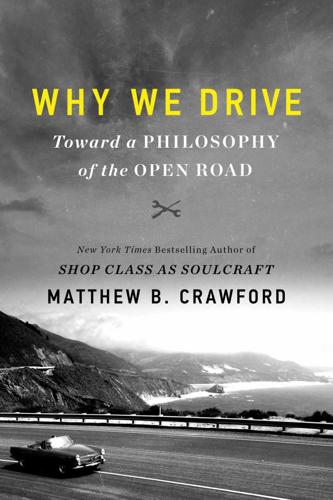
Why We Drive: Toward a Philosophy of the Open Road
by
Matthew B. Crawford
Published 8 Jun 2020
Together they enact a certain collective identity, that of the German Driver, and this makes them sufficiently predictable to one another that they are able to accommodate a wider range of speeds on the highway. If they are to preserve this cultural achievement, they will have to insist on it. Meet the New Boss Street View Seeing Like Google Google launched Street View in 2007. It added 360-degree, street-level camera angles to its Maps function. One could now zoom down from a Google Earth satellite view to what a pedestrian would take in if she were to continuously swivel her head and pivot about. Places one has never been, and may never visit, have become available for full inspection from afar. By January 2009, the effort was meeting resistance around the world from communities who felt somehow violated by the incursion.
…
, an “augmented reality” game that had people running around on a scavenger hunt (in the real world) to find cartoon characters who had been inserted into the landscape, as viewed through a player’s smartphone camera. This was a social experiment conceived by John Hanke, product vice president for Google Maps and the force behind Street View. (Earlier he had founded Keyhole, a satellite mapping company, with funding from the CIA. It was acquired by Google and became Google Earth.) From within Google, he started Niantic Labs, the purveyor of the game. At a mobile gaming conference in Barcelona in early 2017, he explained the significance of Pokémon Go! It had the most wholesome of motivations: “getting more exercise, getting outside, being more active, and really at the core of it having an opportunity to socially go out and do something fun with other people and meet other people through the game.”

The Perfect Weapon: War, Sabotage, and Fear in the Cyber Age
by
David E. Sanger
Published 18 Jun 2018
Since he was the government’s leading censor, the fact that any Chinese citizen with an Internet connection could read something unpleasant about how he performed his duties was a rude awakening. From that moment, the die was cast. Google’s problems accelerated beyond search results. Beijing officials didn’t like Google Earth, the satellite mapping software, because it showed “images of China’s military, nuclear, space, energy, and other sensitive government agency installations.” Knowing that George Bush was steadily pressing China to do more to combat terrorism, officials told the American embassy that Google Earth was a terrorist’s best tool. Li required the three state-owned Chinese telecommunications firms to cut off Google, preventing it from reaching hundreds of millions of Chinese users.
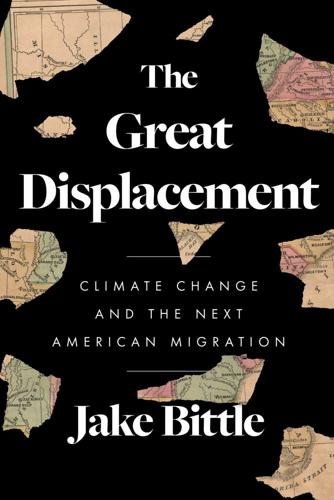
The Great Displacement: Climate Change and the Next American Migration
by
Jake Bittle
Published 21 Feb 2023
“reasonably expected or provided against”: Marco Ornelas and Rebecca Andrews, “Court of Federal Claims Rejects Takings Claims Related to Hurricane Harvey Downstream Flooding Cases,” Argent Communications Group, March 28, 2020. retreat from the bayous: Historical screenshots of Wimbledon Champions West area, viewable on Google Earth Pro. happening each year: The regulatory floodplain boundaries for the area can be viewed at FEMA’s Flood Map Service Center, located at msc.fema.gov. hundred-year floodplain threshold: Alexandra Tempus, “Presto Chango: How Flood Map Revisions Allow Building in Risky Areas,” FairWarning, November 12, 2020.
…
amount of water that was moving through greater Phoenix: “Plan of Operation: Submitted Draft,” Central Arizona Groundwater Replenishment District, November 8, 2004. Available at https://www.cagrd.com/documents/policies/2006-CAGRD-Conservation-Program.pdf CAGRD would pick up the tab: Interview with Sarah Porter, March 2021. for Merrill Ranch’s first phase: Historical satellite images viewable on Google Earth Pro. Unable to pay back his loans: Russell Grantham, “Arbitrators: Developer Should Pay $43.6 Million,” Atlanta Journal-Constitution, March 10, 2011. Georgia bank that had backed him later collapsed: Russell Grantham, “Just Like Atlanta, Developer W. Harrison Merrill Rises Again,” Atlanta Journal-Constitution, December 14, 2009.
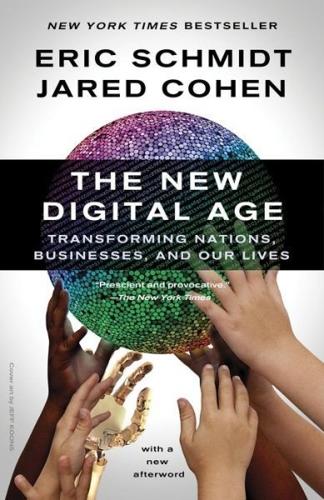
The New Digital Age: Transforming Nations, Businesses, and Our Lives
by
Eric Schmidt
and
Jared Cohen
Published 22 Apr 2013
The more likely terrorist scenario continuing into the new digital age will resemble the Mumbai attacks in 2008, when ten masked men held the city hostage in a three-day siege in which 174 people were killed and more than 300 wounded. The gunmen relied on basic consumer technologies—BlackBerrys, Google Earth and VoIP—to coordinate and conduct the attacks, communicating at a command center in Pakistan with leaders who watched live coverage of the events on satellite television and monitored the news to provide real-time tactical direction. Technology made these attacks much more deadly than they could have been otherwise, but once the last (and only surviving) gunman was captured, the information he and, critically, the leftover devices of his comrades, provided allowed investigators to follow an electronic trail to significant people and places in Pakistan that might not have otherwise been known for months, if ever.
…
Dugan, Regina, 3.1, 5.1, 6.1 Duggan, Mark DuPont East Africa Eastern Europe East India Company e-banking, 3.1, 3.2 e-commerce, 3.1, 3.2, 5.1 economic crash, 2008, 2.1 economics, data about Economist, 96–7 education, 1.1, 1.2, 2.1, 2.2 data about privacy in security in efficiency e-government Egypt, 3.1, 4.1, 4.2, 4.3, 4.4, 4.5, 6.1n Egyptian Credit Bureau, n Egyptian Stock Exchange, n El Al Airlines election irregularity elections, U.S., 2012, 4.1 elections, Venezuela electricity Emergency Information Service empathy encryption, 2.1, 2.2, 2.3, 4.1 Ennahda party entertainment Equatorial Guinea Ericsson, 3.1, 3.2 Eritrea Estonia, 3.1, 6.1 Ethiopia Etisalat Etisalat Misr European Commission European Union, 2.1, 3.1, 4.1 evolution, 3.1, con.1 exiles expectations gap explosive-ordnance-disposal (EOD) robots extortionists Facebook, itr.1, 2.1, 2.2, 2.3, 2.4, 2.5, 2.6, 3.1, 3.2, 3.3, 4.1, 5.1, 5.2, 6.1, 6.2 data safeguarded by facial-recognition software, 2.1, 2.2, 6.1, con.1 failed states FARC Farmer, Paul FBI, 2.1, 5.1 Ferrari, Bruno fiber-optic cables, itr.1, 3.1, 4.1, 4.2 filtering, 2.1, 3.1 financial blockades fingerprinting Finland Fixing Failed States (Lockhart and Ghani), 7.1n Flame virus, 3.1, 3.2 Food and Drug Administration food prices foreign aid forgetfulness Forum on China-Africa Cooperation (FOCAC) Foster-Miller 4G, 7.1, 7.2 France, 6.1, 7.1, nts.1 Freakonomics (Levitt and Dubner), 2.1 Fred freedom of assembly free expression free information French Data Network Fukushima nuclear crisis, n gacaca, 249–50 Gadhafi, Muammar, 4.1, 4.2, 7.1 Gallic Wars “Gangnam Style,” 24n Gates, Robert Gaza General Motors genocide virtual genome sequencing geography Georgia (country) Georgia (state) Germany gesture-recognition technology Ghana Ghani, Ashraf, n GiveWell globalization, 1.1, 3.1 Global System for Mobile Communications (GSM) Goldsmith, Jack, n Google, itr.1, 2.1, 3.1, 3.2, 3.3n, 163, 5.1, 7.1 Chinese cyber attacks on, itr.1, 3.1, 3.2 data safeguarded by driverless cars of Project Glass in tweet-by-phone service of Google App Engine Google Earth Google Ideas Google Map Maker Google Maps, 6.1, nts.1 Google+ Google Voice GPS, 6.1, 6.2, 6.3 GPS data Great Firewall of China, 3.1, 3.2 GreatNonprofits Green Revolution GuideStar hackers, 2.1, 2.2, 5.1, 5.2, 6.1 Hackers’ Conference, n hacktivists Hague, 6.1, 7.1, 7.2 haircuts Haiti, itr.1, 7.1, 7.2, 7.3 Haiti After the Earthquake (Farmer), 7.1 Hama, Syria Hamas, 5.1, 5.2, 6.1 Han Chinese handheld mobile devices Hanseatic League haptic technology, 1.1, 2.1n, 203–4 harassment, 6.1, 6.2 hard-drive crashes hawala, 69 Hayden, Michael V.
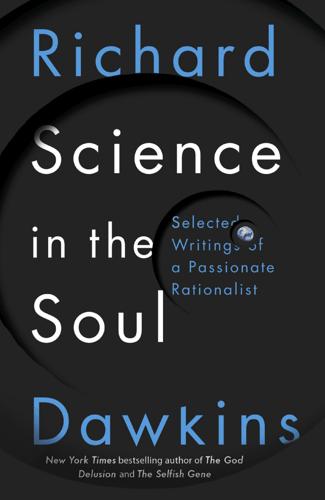
Science in the Soul: Selected Writings of a Passionate Rationalist
by
Richard Dawkins
Published 15 Mar 2017
To draw a tree diagram of the complete pedigree of all life you’d need a sheet of paper whose acreage would cover the island of Manhattan six times over. James Rosindell was accordingly moved to write the brilliant ‘OneZoom’ software, which represents the entire tree of life as a fractal. You can fly over it on your computer screen like a sort of taxonomic Google Earth, and ‘drill down’ to any particular species you fancy. OneZoom is now being fleshed out in collaboration with Yan Wong, my co-author of The Ancestor’s Tale, the second edition of which makes extensive use of it. Rosindell and Wong invite enthusiasts (I am one) to sponsor favourite species to defray the costs of adding their details to the tree
…
The post-Berners-Lee world, if we could have imagined it forty years ago, would have seemed shattering. Anybody with a cheap laptop computer, and an averagely fast wifi connection, can enjoy the illusion of bouncing dizzily around the world in full colour, from a beach webcam in Portugal to a chess match in Vladivostok, and Google Earth actually lets you fly the full length of the intervening landscape as if on a magic carpet. You can drop in for a chat at a virtual pub, in a virtual town whose geographical location is so irrelevant as to be literally non-existent (and the content of whose LOL-punctuated conversation, alas, is likely to be of a drivelling fatuity that insults the technology that mediates it).

Who Owns England?: How We Lost Our Green and Pleasant Land, and How to Take It Back
by
Guy Shrubsole
Published 1 May 2019
After they refused to share the underlying data with me, I was able to extract it from their map with the help of a data analyst, sense-check it against aerial photographs, and publish the results on whoownsengland.org. The management of driven grouse moors has had a profound and very visible impact on landscapes. Take a look on Google Earth at any of the upland areas of northern England, and you’ll soon spot the tell-tale patterns where the moorland heather has been slashed and burned to encourage the growth of fresh shoots favoured by young grouse. But to really appreciate the bleak devastation of a grouse moor, you need to visit one.
…
Hydrogen cyanide, phosgene, mustard gas; their anodyne names each concealing a formula for cruelty, so bitterly recalled by Wilfred Owen: If you could hear, at every jolt, the blood Come gargling from the froth-corrupted lungs … An OS map from 1923 shows Porton Down, unlabelled but also unredacted, as a growing complex of workshops and buildings, connected by a light railway system for the transport of shells and equipment. But by now the research was outgrowing the available land, and more was needed. It was to come from a most unusual source. Take a look at maps of Porton Down today, or aerial photos on Google Earth, and you’ll see a strange pattern of trees within the land marked DANGER AREA to the west of the main laboratory; like a set of fields whose hedges have gone wild and seeded the ground with their offspring. When I compared modern images to old maps of the same area, I was surprised to see that this had once been a private estate called Old Lodge, with gardens and a large house long-since demolished.

Predator: The Secret Origins of the Drone Revolution
by
Richard Whittle
Published 15 Sep 2014
Their CIA hosts also wanted to keep the Predator operation as inconspicuous as possible, so Air Force participants were instructed to wear civilian clothes only, and the unit’s little base in the glade near the water tower would be made to look as much as possible like a construction site. The CIA campus at Langley was a favorite photographic subject for foreign spy satellites—and, for that matter, users of Google Earth. “You’ve got to be kidding me, right?” Wallace blurted out when Cooter called her at Ramstein to tell her about the move to Langley. She and Captain Paul Welch, a communications officer at Ramstein, had worked for the past six months to get ready for more Predator flights over Afghanistan conducted from Germany.
…
Eielson Air Force Base 11th Reconnaissance Squadron (Black Owls) El Mirage airfield Empire State Building End of History, The (Fukuyama) “Endurance Unmanned Aerial Vehicle (UAV) Program” (Deutch-Rutherford memo) Enduring Freedom, Operation European Command European Union Executive Orders Exposition Internationale, L’ F-4D Phantom F-5 Tiger F6F Hellcat F-14 Tomcat F-15 Eagle F-15E Strike Eagle F-16 F-16C Fighting Falcons F-18 F-22 Raptor F-100F Super Sabre F-117 stealth fighter F/A-18 fighter-bombers Federal Aviation Administration (FAA) Federal Bureau of Investigation (FBI) 15th Reconnaissance Squadron 53rd Test and Evaluation Group 56th Rescue Squadron Firebees Fireflys 1st Armored Division 555th Tactical Fighter Squadron Flynn, Cathal Fogleman, Ronald Ford, Gerald Fort Belvoir Fort Huachuca Fort Irwin Forty-Four ball (AN/AAS-44 V) forward air controller (FAC) Foscue, Greg Fossum, Robert Franks, Tommy free-flight World Championships Front Burner (Lippold) Frontier Systems Fry, Scott Fukuyama, Francis Fulcher, Tim Garmabak Ghar camp Gates Learjet GBU-12s General Atomics (formerly GA Technologies) 11th RS and Blues buy Forty-Four ball and Gnat 750 and Karem quits Leading Systems buyout and Predator forerunner and Predator name reused by General Dynamics Germany Gersten, Peter Ghengis (pilot) Gibaldi, Rich Gibbons, James A. Gila River Memorial Field Gjader air base gliders Global Hawk (RQ-4) Global Response Center (CIA) Glovka, Leo Gnat Gnat 750 Google Earth Gorbachev, Mikhail Gordon, John A. Gordy, Greg GPS Gration, Scott Griffith, Ronald Grimes, William D. W. Gross, Cliff ground control station (GCS) Afghanistan and Balkans and bore sighting and complex controls of Creech Air Force Base Fort Huachuca Forty-Four ball and Langley (Trailer Park) MTS ball and Nellis Air Force Base Predator and, in 1994 Ramstein, and Summer Project U.S. location for Groundhog Day (film) Guatemala Guay, Jeff A.
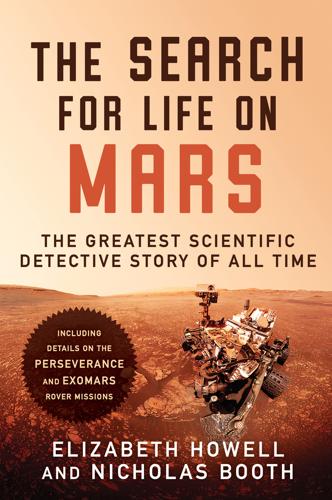
The Search for Life on Mars
by
Elizabeth Howell
Published 14 Apr 2020
From repeated radar observations, it appears that the wind has had a greater role in shaping the polar caps than had previously been known. Many of the observed patterns of ice and dust at both poles show telltale signs of having been eroded by wind. But there is a frustrating problem. The highest resolution camera in orbit around Mars today can see down to ten inches (twenty-five centimeters) at the surface (better than Google Earth, in fact). At best, the shallow radar instrument that flies along with it can only see down to thirty-three feet (ten meters). “We can’t quite connect them,” says Professor Holt. “We haven’t been able to positively identify an exposed layer and outcrop that you can trace and connect with [the shallow radar].”
…
They are unexpected in their beauty and hosting of unusual microbial life-forms. Frozen in place: Dunes observed in January 2020 by the Mars Reconnaissance Orbiter. Its HiRise camera can see down to 10 inches (25 centimeters) in scale. Within a lifetime, our quest to understand the Red Planet has returned photographs of Mars with greater resolution than those for Google Earth. A glacier on Mars—seen here in the midlatitudes—suggests that episodes of glaciation have occurred in fits and starts throughout its history and more recently than originally thought. The first selfie from the InSight lander in Homestead Hollow, as it prepared to place “the wok” (at the center) on the Martian surface.
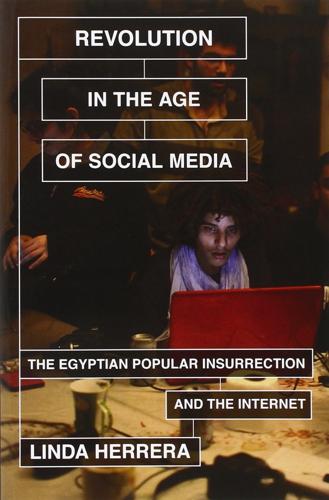
Revolution in the Age of Social Media: The Egyptian Popular Insurrection and the Internet
by
Linda Herrera
Published 14 Apr 2014
As Morozov comments in his book The Net Delusion: Given the amount of research and technology money coming out of America’s defense and intelligence communities, it’s hard to find a technology company that does not have a connection to the CIA or some other three-lettered agency. Even though Google does not publicize it widely, Keyhole, the predecessor to Google Earth, which Google bought in 2005, was funded through In-Q-Tel, which is the CIA’s for-profit investment arm. On January 21, 2010, Secretary of State Hillary Clinton delivered what would become an iconic speech on internet freedom. The speech reiterated the US commitment to working with cyberactivists in closed societies to find ways around their governments’ blocks and censorship.
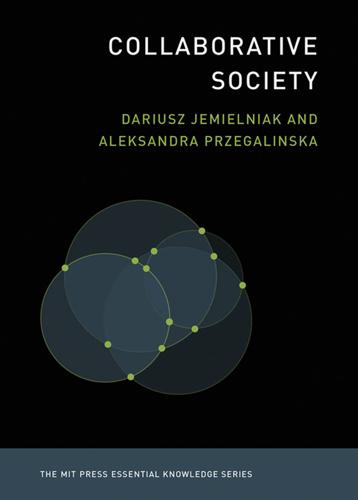
Collaborative Society
by
Dariusz Jemielniak
and
Aleksandra Przegalinska
Published 18 Feb 2020
Anti-surveillance efforts such as TOR, Signal, or even Silk Road are usually used for one-on-one communication but have collaborative features as well. Geo-bombing is a technique in which citizens of the network—also called “netizens”—add a geo-tag when editing YouTube videos so that the location of the video can be displayed in Google Earth. RECAP is software that was written to “liberate US case law” and make it freely available online. The software project takes the form of a distributed document collection and archive. Some of these collaborations are spontaneous and anonymous, but others are carefully organized by consolidated groups of activists.

Wired for War: The Robotics Revolution and Conflict in the 21st Century
by
P. W. Singer
Published 1 Jan 2010
But in 2006, when its forces wanted to target a British army base outside Basra in Iraq, al-Qaeda didn’t have to invent rockets that go into space or build expensive reconnaissance satellites that could take photos of the Earth. Instead, its operatives went onto the Internet (which al-Qaeda also didn’t have to pay to develop) and downloaded images of the base from Google Earth. The footage was so detailed that they were able to sight their mortars to target the soft-skinned tents in the base, rather than harder-to-damage buildings. THE PERILS OF A BAD HAIR DAY When we think of the terrorist risks that emanate from unmanned systems, robotics expert Robert Finkelstein advises that we shouldn’t just look at organizations like al-Qaeda.
…
Akin to the massive virtual worlds in such venues as Second Life, a usable cityscape would be built of any urban battle zone, detailed down to the blueprints and individual occupants of each building. A fleet of unmanned robotic sensors and systems (ranging from spy satellites to tiny insect UAVs peering into buildings) would continually update the virtual version of the city with real-world footage and information. Imagine the video game Sim City crossed with Google Earth. It would give soldiers the ability to zoom into any neighborhood or even individual structure to see what is going on in real time. According to one report, “You have continuous coverage, around corners and through walls. You would never, for example, lose those mortar bombers who got out of their car and ran away.”
…
Singer, July 7, 2006. 270 “an ideal platform” USAF Scientific Advisory Board, Air Defense Against Unmanned Aerial Vehicles (UAVs) (2006). 270 costs only $1,000 http://diydrones.com, accessed April 28, 2008. See also “Build Your Own War Bot,” at http://howto.wired.com/wiki/Build_Your_Own_War_Bot, accessed March 20, 2008. 271 The footage was so detailed Thomas Claburn, “Terrorists Take Over Google Earth,” Information-Week , January 17, 2007, http://www.informationweek.com/showArticle.jhtml;jsessionid=CYKV3P1NN DZPWQSNDLPSKHoCJUNN2JVN?articleID = 1 96901827. 271 “They can make a lone actor” Robert Finkelstein, interview, Peter W. Singer, July 7, 2006. 271 “a few amateurs” Ibid. 271 “One bright but embittered loner” Joel Garreau, Radical Evolution: The Promise and Peril of Enhancing Our Minds, Our Bodies—and What It Means to Be Human (New York: Doubleday, 2005), 139. 271 “The obligation of subjects” Christopher Coker, Humane Warfare (London, New York: Routledge, 2001), 18.
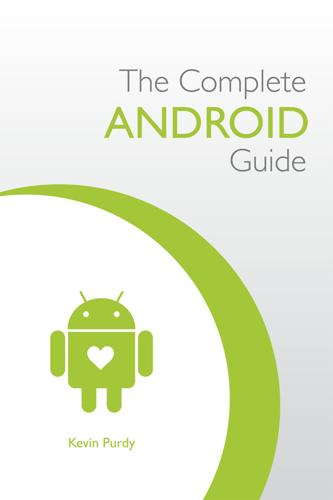
The Complete Android Guide: 3Ones
by
Kevin Purdy
Published 15 Apr 2011
Start the app and start recording before you head out on any trip, and your adventure gets tracked on a Google Map using our GPS connection. Along with that map, you get a detailed spreadsheet analysis of your elevation changes, minutes spent moving or still, averages, timings, and other data, all of which can be easily exported to Google Docs, Google My Maps, Google Earth, or straight database files. (Free) NPR News NPR Android App Need your morning fix of National Public Radio's calm, slightly heady news and features, but find yourself far from good reception? Like all but one of the stories slated for All Things Considered this afternoon? The NPR app has you covered in both cases.
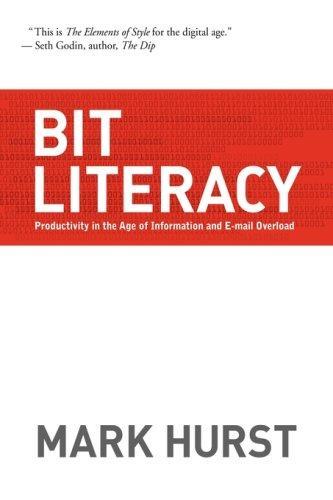
Bit Literacy: Productivity in the Age of Information and E-mail Overload
by
Mark Hurst
Published 15 Jun 2007
How will it change their experience of childhood to know that they are being tracked, to the meter, every waking minute? GPS data isn’t the only trail of bits that people will generate in the physical world. Satellite cameras are getting more and more accurate, and any moment you walk outside, you (or your car) could be photographed for the next update of Google Earth. (Knowing this, some companies and activists have cleverly painted enormous logos and slogans on roofs and other flat expanses visible to satellites.) Cameras will be nearly ubiquitous on street level, too, at least in urban areas. Corporations, police, even friends with “life recorders” will capture the actions and utterances of everyone in sight, whether they like it or not.

Cities Under Siege: The New Military Urbanism
by
Stephen Graham
Published 30 Oct 2009
The global circulation of the tourist-style digital images of the Abu Ghraib torturers, for example, provided not only a massive boost to the war’s opponents but also iconic images of torture to activists and investigators who had suspected widespread brutality within the US system of incarceration without trial. Efforts by US military information-operations campaigns to buy up relevant satellite imaging during the invasions of Iraq and Afghanistan have not kept Google Earth, for instance, from being widely used by antiwar activists and Iraqi insurgents alike. And while digital video cameras have been used to sustain cheap cable TV channels offering demonized depictions of the dangers lurking in city cores, those very same technologies enabled bystanders to reveal the regular killings of Iraqi civilians by the private military corporation Blackwater.
…
Bruce, War Stars,162 n.24 Franko, Katja, 80 n.75 Franze, Mats, 148 n.214 Frauenfelder, Mark, 326 n.107 Freedman, Des, 69 n.30 freedom, 346 Freilich, Chuck, 230 n.13 Friedman, Thomas, 273 furniture, street, 102–3, 285 G8, 121 Gallison, Peter, 14 n.55&56 Gannon, Charles, Rumors of War and Infernal Machines,175 n.77 Garnar, Andrew, 303 n.10, 315–16, 318 n.74 gated community, xix, xxi, 24, 53, 99,106, 107, 129, 144–45, 147, 244, 261, 309–10, 315, 380; Iraq as, 244; Israel as, 261; SUV as, 309–10, 315, 320; US bases as, 211–12, 213, 214 Gates, Kelly, 55 n.79, 116–17 Gates, Robert M., 334 Gaza, xxiv, 113, 143, 145, 171, 177, 227, 233, 247–48, 257, 262, 284, 294, 361; as lab for urban control, 240–41, 243–44, 250, 287; population, 286 n.83; simulated, 193; strangulation of, 286–90 Gelinas, Nicole, 25, 48 General Dynamics, 247 General Motors, 317–19, 333 Genoa, 22, 121 Gentry, John, 176–77 Gerber, Tony, 190 n.22 Geyer, Michael, 60 Giddens, Anthony, The Nation-State and Violence,11 n.36 Gilbert, David, 11 n.38 Gillem, Mark, 212 Gilman, Nils, 272 n.27, 274 Gilroy, Paul, 56 n.86, 81, 83 Gini coefficient, 7–8 Giroux, Henry, 7 n.21, 25 n.108, 74, 113 n.97, 368 n.57 Gitlin, Todd, 306 Giuliani, Rudolph, 47–48 Glenn, Russell, 187 n.14, 195 n.36, 196 n.41, 198 n.47 Global Guerillas, 269 n.18, 270 n.21 globalization, 9, 132, 264, 273, 297, 353, 379–80, 383 global warming. See climate change Glosson, Buster, 280 Glover, Ross, 56 n.87 Golan, Gan, 27 n.111, 123 Goldberg, Bernel, 252 n.97, 253 Goldenberg, Suzanne, 112 n.86 Goldman, Laura, 258 n.119 González, Roberto, 33 Google Earth, 73 Goonewardena, Kanishka, xix n.12, xxiii n.20, xxix n.31, xxviii n.28, 11 n.39&42, 15 n.62, 36 n.1&5, 39 n.16, 79,84–86, 378 n.76, 379 Gordon, Gerald, 257 Gorman, Ellen, 314 n.56 Gorman, Siobhan, 20 n.83 Goyette, Carmen, 214 GPS, xxv, 63, 65, 68, gg,157, 177, 271, 309, 316, 327, 332, 362–64, 367–68, 376, 378 Graham, Stephen, xxii n.18, 13 n.50&53, 14 n.56, 23 n.98&99, 25 n.106, 58 n.94&95, 84 n.95, 92 n.19, 93 n.26, 112 n.91, 121 n.121, 135 n.164, 143 n.195, 226 n.1, 265 n.8, 284 n.77, 384 n.96 Gramsci, 61 Graves-Buckingham, A.

Ghost Fleet: A Novel of the Next World War
by
P. W. Singer
and
August Cole
Published 28 Jun 2015
,” Intercepts (blog), Defense News, January 31, 2013, accessed August 24, 2014, http://intercepts.defensenews.com/2013/01/is-chinas-j-31-fighter-going-navy-all-the-way/. 326 Garmin AeroScreen: “Avionics and Safety,” Garmin, accessed August 24, 2014, http://www.garmin.com/en-US/explore/intheair; fictional electronic system. 326 the F-15C: “F-15 Eagle Fact Sheet,” U.S. Air Force, March 14, 2005, accessed August 24, 2014, http://www.af.mil/AboutUs/FactSheets/Display/tabid/224/Article/104501/f-15-eagle.aspx. 327 the aircraft equivalent of the Ghost Fleet: Mark Wilson, “Google Earth’s View of the Boneyard, Where Planes Go to Die,” Gizmodo (blog), February 23, 2010, accessed August 24, 2014, http://gizmodo.com/5478203/google-earths-view-of-the-boneyard-where-planes-go-to-die. 327 Roscoe’s jet: Jon Harper, “Air Force to Eliminate Nearly 500 Aircraft in 25 States, D.C., and Overseas,” Stars and Stripes, March 11, 2014, accessed August 24, 2014, http://www.stripes.com/news/air-force-to-eliminate-nearly-500-aircraft-in-25-states-d-c-and-overseas-1.272304. 327 desert-worn KC-135s: “KC-135 Stratotanker,” U.S.
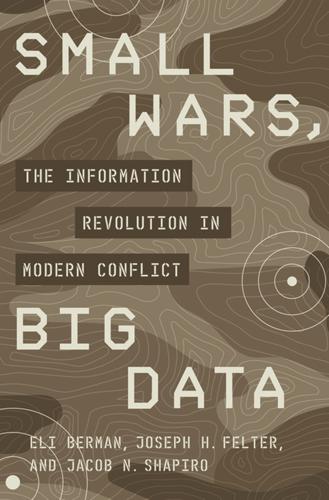
Small Wars, Big Data: The Information Revolution in Modern Conflict
by
Eli Berman
,
Joseph H. Felter
,
Jacob N. Shapiro
and
Vestal Mcintyre
Published 12 May 2018
In addition, Jake and Joe worked with the Army Corps of Engineers to release data on reconstruction spending in Iraq, which, while unclassified, were not publicly accessible or easily interpretable.11 And to make these data usable, Jake and Joe assembled geospatial data to match them (an arduous task at the time that is now almost trivial thanks to Google Earth) as well as other pieces of the puzzle—for example, crucial data on unemployment, health, and population size from the World Food Programme in Iraq. For each piece, we worked with our sources to understand methods of data collection, possible biases, and other potential sources of inconsistencies.
…
The Strategic Effects of Collateral Damage,” American Journal of Political Science 56, no. 1 (2012): 167–87. 45. In our analysis of the surge, described in chapter 5, Jake and coauthors also used IBC data to corroborate other sources and to look at whether the locals’ shift to providing information during the Awakening reduced the rate of Coalition-caused harm. 46. This was in 2007–8, before Google Earth made it possible to instantly match locations from press reports to high-resolution satellite imagery and map data. We had to order, scan, and geo-reference tourist maps of Baghdad to properly locate events. 47. Jake and Luke looked at the data by week for each of Iraq’s 104 districts from February 2004 through February 2009, linking IBC data on 19,961 incidents (59,245 civilian deaths) with 193,264 SIGACT reports, which include data on violent incidents, such as IED explosions, direct fire, and “escalation of force” events (where an increasing perception of a threat ends in violence). 48.
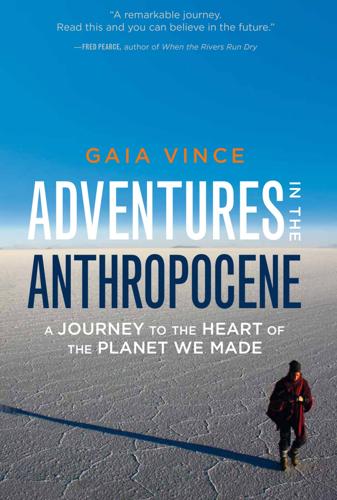
Adventures in the Anthropocene: A Journey to the Heart of the Planet We Made
by
Gaia Vince
Published 19 Oct 2014
The Himalayas is the largest area covered by glaciers and permafrost outside of the polar regions, containing 35,000 square kilometres of glaciers and an ice reserve of 3,700 cubic kilometres. Glacial melting is accelerating every year, with current annual retreat rates of seventy metres for some glaciers. Mountains are changing dramatically and so fast that we can use recently produced Google Earth images to watch the white bits shrink. Melting rates have already exceeded those predicted by the international community of climate scientists (IPCC) – they expect 70% of the region’s glaciers to disappear the same way as Stakmo’s by the end of the century. Meltwater from small mountain glaciers alone already accounts for 40% of current global sea-level rise, and is predicted to add at least 12 centimetres to sea levels by 2100.4 As mountain glaciers shrink, lakes are created from the meltwater, hemmed in by the moraine of rocks and debris that are left by the retreating ice.
…
.: The Population Bomb 146 Eight19 212 El Moro tribe 208, 210 El Niño 166, 179, 187 electricity 11, 27, 325, 326, 363–4 see also dams; hydroelectricity; solar energy; wind turbines electronic goods 311–16 see also mobile phones elephants 94, 173, 198, 200, 227, 228, 242, 245–6, 251, 258, 260, 282–3 Embrapa research institute, Brazil 260 energy 11, 323–4 see electricity; fossil fuels; solar energy; wind turbines Eolewater (company) 209 ‘erratics’ (boulders) 74 Escobar, Pablo 353–4 eskimos 182 Espirito Santo, Maria do 268 ETFE plastic film 374–5 eucalyptus trees 250, 290, 293 Euphrates River 71–2 extinctions 2, 9, 237, 238–40 see also cloning Eyasi, Lake (Tanzania) 223–4 Facebook 28–9, 367, 368, 369 farming see agriculture fashion industry 313, 323 favelas 354–8, 367 feed-in tariffs 323 Fernandez Piedade, Maria Tereza 292 fertilisers 8–9, 136 artificial/synthetic 108, 114, 133, 134–5 dung as 33, 129, 133–4, 145 organic 133, 134 Fiji 174, 175–6 University of the South Pacific 176 fish/fishing 5, 71, 78, 79, 83–4, 85, 95, 100, 151, 179, 182, 187, 190, 206–7, 291–2, 323 and acidification 168 and coral reefs 164, 165 and dams 78, 79, 83–4, 95–6 and overfishing 9, 101, 165, 169–70, 171–2, 183–4, 185 see also specific fish fish farms 101, 184–5 Fishtail Mountain, Nepal 19 flamingoes 228, 333, 336 flash floods 40, 52 Flattery, Martin 232–3, 235 floating islands 162–3, 189 of plastic 187–8 flooding urban 373, 379--80 see also glacial lake outburst floods fog-harvesting 217–19, 285 Foley, Jonathan 143 food prices 124, 145 production 3, 5, 11, 108–9, 143–4, 147 wastage 144, 147 see also agriculture; cereal; meat; vegetables forests 16, 42, 71, 262–5, 285–6 see also deforestation; rainforests Fossey, Dian 276 fossil fuels 3, 17, 42, 67, 300, 305, 324, 325, 326–7 see also coal; gas; oil fossil records 17, 94 fossil water 114, 117, 192, 215 Foster, Norman: ‘the Gherkin’ 374 foxes 229, 240, 258, 377 fracking 318 frankincense 202 Freecycle 322 frogs 239, 257, 262, 266 Fukushima: nuclear disaster 328 fungi 2, 143 FuteraGene 290 Galapagos Islands 151, 250, 251–5 Ganges, River 53, 71 Garbage Island, see Westpoint Island, Belize Gardner, Mark 251–2, 253, 255 gars 71 gas industry 86, 282, 308, 318, 326 Gates Foundation 139 Gayoom, Abdul, President of the Maldives 153, 155, 162 Gayoom, Abdulla Yameen, President of the Maldives 174 geckos 95, 200, 256 genetically modified (GM) animals 260 crops 64–5, 139–42 trees 290 Genghis Khan 59 geoengineering 56–61, 67–8, 84–5, 132, 180, 294--297 George V 17–18 geothermal energy 213 Gerrity, Sean 236 giraffes 225, 228 Givi, Gulab 113 glacial lake outburst floods (GLOF) 52, 79–80, 86 ‘glacier grafting’ 59–60 glaciers 16, 74 artificial 53–4, 57–61 melting 4, 8, 10, 37, 47, 49, 51–3, 56–7, 76, 86, 151, 159, 216–17 glass light-reactive 375 photovoltaic 363 global warming 5, 10, 23, 24, 38, 40, 47, 49, 67, 138, 174, 196 GM see genetically modified goats 196, 198, 201, 231, 234, 235, 250, 253, 255 Gobi Desert, China carbon dioxide storage 330–31 mining 103 solar farms/solar panels 212, 331 wind turbines 209, 331 gold 298, 300, 304–5, 307, 312 see also gold mining Gold, Eduardo 63 gold mining 268, 269, 273, 277, 279, 283, 284, 288, 307, 309 Golmud, Gobi Desert: solar photovoltaic panels 212 Gomez, Martha 260 Gondwana 73 Gonzalez (J.) Foundation 342 Goodall, Chris 322 Google 28, 44 Google Earth/Maps 51, 366, 367 Goreau, Thomas 167 gorillas 237, 248, 276 granite 299 graphene 317 grasses/grasslands 7, 106, 109, 129, 221, 222, 231, 238, 240, 271, 287 Great Acceleration 3, 8, 307, 320 Great Barrier Reef, Australia 169 Green Revolution 109, 114, 133, 317 greenhouse gases 8, 23, 34, 35, 51, 67, 68, 144, 146 and biofuel production 145 see also carbon dioxide; methane greenhouses 65 desalinated seawater 219–20 Greenland 73, 177, 178, 182, 215 Greenpeace 183 Gregory, John and Sue 153 Grindr app 367 groundwater 47 contamination of 310 extraction of 50, 72, 115, 203, 215, 379 Groupon (online shopping network) 367 guanacos 74 guano 108 Gujarat, India 110–14, 115–16, 212 Guyana Shield 267 Haber, Fritz 108 Hadley Cell 15–16 Hadley Centre for Climate Research 66 Hadzabe people 223–7, 320 Haiti 28, 366 Haiyan, typhoon 66 Hansen, James 177 Hartmann, Peter 80–82, 85, 86 Haywood, Jim 66 HCFCs 374 helium 298, 329 H5N1 influenza 349 HidroAysén (company) 79–80, 86–7 high-voltage direct current (HVDC) lines 213–14 Hilbertz, Wolf 167 Himalayas 19, 40, 46, 47, 51–3 Hippocrates 304 hippopotamuses 207, 229 Hiroshima, bombing of 327 HIV/Aids 135, 198, 234, 245, 283, 349 Ho Chi Minh City, Vietnam 89, 380 Ho Tong Yen 360–61, 362 Hoatzin/‘stink bird’ 271–2 Hobbs, Richard 253–4 Hofmeister, Anke 172 Holocene epoch 4, 7, 8, 9, 17, 238, 264, 299, 338 honey badgers 199–200, 226 honey birds 199–200, 226 Hong Kong 90, 346, 340, 369–70 Hooker, Joseph 285–6 Hoover Dam, USA 77 Huaneng Group: carbon capture facility 330 huemal deer 82, 83 Hulhumalé, the Maldives 162 Hunt Oil 280 hunter gatherers 7, 11, 94, 107, 124, 223–7, 233, 238, 279, 338, 345 Hurricane Katrina (2005) 380 Hurricane Sandy (2012) 379 Huvadhoo atoll, the Maldives 164 hydrocarbon fuels 214, 296 hydrodams see dams hydroelectricity/hydropower 31–2, 39–42, 52, 77–8, 213–14, 327 see also dams hydrogen 16, 214, 298, 329, 365 ‘hydropeaking’ 85 hydropower see dams; hydroelectricity Hydropower Sustainability Assessment Protocol 98 ibex 50, 260 ice ages 7, 17, 34, 264 ice melt 177–81 see also glaciers Iceland 184, 213 ICRISAT see International Crops Research Institute for the Semi-Arid Tropics IGCC see integrated gasification combined cycle power plants IMF 135 Imja glacial lake, Nepal 52 Incas, the 62, 270, 333, 334 Independent 178 India 34, 37, 116–17, 147, 320 air-conditioning units 374 air pollution/‘brown cloud’ 37, 38 aquifers 111, 112, 114 biofuel production 145, 332 coal-fired stations 325 GM crops 140, 141 groundwater extraction 115, 117 irrigation 114, 115, 211 land bought in Africa 102–3 mobile phones 28 Slum-Dwellers International network 350 tanka system 115–16, 117 tigers 244, 247 water shortages 110, 114–15 see also Ladakh India Space Research Centre 112 indium 315–16 indium tin oxide (ITO) 316 Indonesia 2, 35, 129, 256 ‘Indus Oasis’ (casino) 113 Indus River 53, 71–2 Industrial Revolution 3, 35, 263, 300, 307, 310 industrial symbiosis manufacture see ‘closed-loop’ manufacture insects 1, 17, 71, 108, 141, 142, 263, 271, 291 as food 97, 148, 388--9 and pest-control 134 see also ants; bees integrated gasification combined cycle (IGCC) power plants 330, 331, 332 Interface (carpet manufacturer) 319 International Crops Research Institute for the Semi-Arid Tropics (ICRISAT) 139–40 International Energy Agency (IEA) 213, 318, 325 International Institute for Environment and Development 98 International Thermonuclear Experimental Reactor (ITER) 328–9 Internet, the 11, 18, 24, 26, 27, 29–34, 136, 322, 367–9 Inuit, the 182 invasive species 250, 252–6 iron 298, 299, 306, 307 Irrawaddy River 53 irrigation 72, 79, 109, 114, 115, 118, 121, 132, 133, 143 with desalinated seawater 219–20 in deserts 107 drip 112, 113, 114, 120 in India 49, 50, 51, 52, 54, 56, 57, 58, 59, 61, 211 in Libya 215 solar-powered 211 Isiolo, Kenya 193, 194 Isla Incahuasi, Bolivia 334 Israel: electric cars 373 Itaipu dam, Brazil/Paraguay border 102 ITER see International Thermonuclear Experimental Reactor ITO see indium tin oxide Ito, Akinori 326 Ituri Forest, Democratic Republic of Congo 246 ivory trade 198, 246 Jadeja, Hardevsinh 110–14, 143 jaguars 240–43, 237, 247, 260, 270, 275, 278 Janjaweed, the 245 Japan 102, 147, 161, 186, 318–19, 327, 340 jatropha 145 jellyfish 185–6 JET experiment 329 jet stream, the 180–81 Jinja, Uganda 122 Jones, Steve 378 Kalinowski, Celestino 279, 280 Kalinowski, Jan 279–80 Kalundborg, Denmark 320 Kampala, Uganda 112 Kandholhudhoo, the Maldives 160, 161, 163 Karachi, Pakistan: Orangi slum 350 Kathmandu, Nepal 18, 30, 32, 36–7, 39, 42 Kenya 135 drought 193, 195–6, 200–1, 206 education 204–5 206 M-Pesa 28 missionaries/missions 193–4, 199, 202, 204–5, 206–7, 208 pastoralists 196, 201, 205–6, 210 road-building 197–8 shanty towns 350 tribal conflict 193, 194–5, 196–7, 201, 206 see also missionaries; Turkana, Lake Kenya, Mount 46, 235 Kew Gardens, London 286 kha-nyou (rodent) 94 Khone Phaphene Falls, Laos 97 Khulna, Bangladesh 343, 346, 347, 352 Kikwete, Jakaya Mrisho, President of Tanzania 230, 259 Kilimanjaro, Mount 46 Kilimo Trust 120 Kinabalu, Mount 46 kingfishers 268, 271 Kipling, Rudyard 18 Kiribati 174–7 Kissinger, Henry 109 koala bears 237, 250 Kolkata, India: 2 Nehru Colony 366–7 Konik ponies 236 Korea, South 90, 102, 124, 346, 365 POSCO iron and steel consortium 336 krill 180 Kubuqi Desert, China 192 Kyakamese village, Uganda 118–20 Laama, Ringin 40 labour, division of 339 Lackner, Klaus 294, 295–6 Ladakh, India 48–51 artificial glaciers 53, 56–61 Laetoli, Tanzania 223–4 landslides 40, 46, 52 languages 26, 55, 62, 224, 273, 277, 347, 378 Lanzhou, China 362 Laos 88, 97, 98, 99 cluster bombs 90 Communist government 90, 91, 94 opium use 89 road-building 91–2 slash-and-burn 89 see also Mekong River La Paz, Bolivia 274, 275, 310 Las Vegas, Nevada 103, 193 ‘Late Heavy Bombardment’ 298 Laurance, Bill 255 lead/lead mining 301, 310, 315, 316 Leakey, Mary 223–4, 232 legumes 38, 133, 134 Leh, Ladakh, India 50–51, 54–5 leishmaniasis 274 lemurs, Madagascan 247, 250, 256 Lenfest Center for Sustainable Energy, Columbia University 294 León, German Cardinas 348 Leonard, Annie: The Story of Stuff 319 leopards 94, 227, 229 snow leopards 33, 260 leprosy 343 Li Quan 247 Libya: Great Man-made River project 215 Licancabur volcano, Bolivia 333 Licapa, Peru 62–4 ‘light-bulb conspiracy’ 312 lighting/light bulbs 315, 371 Lima, Peru 216–17 asentamientos humanos (AAHH; slums) 62, 217, 218, 347–8, 352 fog-harvesting 217–19 lions 227, 228, 229, 239–40, 248 Liquiñe–Ofqui fault line 85 lithium 332, 335–6 Liverpool 349 livestock 147, 148, 196, 200–1, 206 see also cattle; sheep; yaks llamas 74, 221, 300, 334 logging industry 9, 267, 268, 270, 273, 274, 276, 277, 283, 288, 289--90 Loiyangalani, Kenya 199, 204–5, 206–8 London 317, 349, 350, 364, 372, 378 ‘Gherkin’ 374 ‘guerrilla gardeners’ 377 smog 3, 35 Thames Barrier 379 Lopes, Antonio Francisco Bonfim (‘Nem’) 356 Lord’s Resistance Army (LRA) 126, 245 Loshner, Gabriella 83 Lovelock, James 294 Lowoi (schoolteacher) 201, 202 Luang Prabang, Laos 89 Lugo, Ariel 254 Luis Val, Adalberto 291, 292 Lummerich, Anne 218 Luna, Javier Torres 217–18 Lyme disease 242 lysine 138 Ma’aden aluminium mine, Saudi Arabia 104 Maasai, the 224, 229–31 macaws 268, 271, 278, 281 McDougall, Gerald 188–9 McKinsey (consultants) 103, 319 Macquarie Island: rabbits 255 Madagascan lemurs 247, 250, 256 Madagascar 93, 124, 237, 264 Madidi National Park, Amazon Basin 267, 269–72, 273–4, 277–8 Madre de Dios region, Peru 278–84 Madre de Dios River, Peru 280–81, 283 Madrid: Canada Real Galiana 344 mahogany trees 270, 275, 279, 289 maize 125, 129, 130, 138, 144, 250 Makerere University, Kampala 137, 138 malaria 43, 121, 135, 199, 224, 274, 283, 293, 341, 367 Malawi 135 Malaysia 28 Petronas Towers 370 see also Singapore Maldives, the 152–3, 156--9, 175, 186 artificial islands/floating islands 157, 162–3 coral reefs 158, 159, 160, 161–2, 164, 166–8 ‘designer islands’ 160–61 heroin dependency 156 overfishing 169–70, 171–2 Soneva Fushi 172–3 tourists 153–4, 156, 158, 160, 163, 171, 172, 173 Malé, the Maldives 153, 154, 156, 161 Mamang-Kanga, Jean-Baptiste 245 Manaus, Brazil 290–91 manta rays 170, 185, 245 Manu National Park, Madre de Dios, Peru 278–80 Manu River 280–81 Manu Wildlife Centre 279, 281 marijuana 357, 369 marine reserves 186–7 Mascho-Piro tribe 279 Masdar, Abu Dhabi 366 Matterhorn, the 48 Mawlamyaing, Burma 91 meat consumption 147, 148, 290, 322 Medellín, Colombia 353–4, 357 Mekong River 53, 88–9, 90–91, 95, 99–101, 105 fish/fishing 95–6, 100, 101 hydrodams 83, 88, 89, 91, 92–4, 95–6 meltwater see glaciers Mesozoic era 221 metals 298, 299–300 rare earth 305, 315, 373 see also copper; gold; gold mining; iron; silver; silver mining methane 41, 78, 129, 134, 178, 214 methanol 296 metro/underground systems 346, 353, 354, 357, 364, 372, 373 Mexico City 379 miconia shrub 252 ‘microloan’ cooperatives 130 millets 130, 139, 143 minerals 191, 272, 298–9, 300, 305 mining 8, 9, 300, 308–9 see also coal; copper mining; gold mining; silver mining miscarriages 203 missionaries/missions see Kenya mobile phones/smartphones 27–9, 34, 118, 136, 210, 212, 231, 300, 304, 311, 312, 315–16, 335, 367 see also M-Pesa Mohammed, Fatima 161 Mojave Desert, California 209, 213, 214 monkeys 275, 291 chimpanzees 3–4, 306 howler monkeys 271, 281 spider monkeys 267, 271, 275–6, 277, 278, 281 Monsanto (company) 140–41 Montana, USA 236 Morales, Evo, President of Bolivia 274, 277, 278, 282, 335, 336 Morgan, Ned 121 mosquitoes 47, 274, 293, 341 moths, urban 377 mountains 8, 45–8, 66–7 painting white 62–4 M-Pesa mobile phone banking service 28, 208, 211, 350 mulch/mulching 133, 134, 145 Mumbai, India 344, 374 Murray River 72 Museveni, Yuweri, President of Uganda 126 mussels 187 Mutharika, Bingu wa, President of Malawi 135 Mwanawasa, Levy, President of Zambia 175 Nagasaki, bombing of 327 Nairobi 200, 207, 209, 210, 344 Nakai, Laos 92–4 Nam Theun II dam, Laos 92–4 Namibia 215, 216, 362 Nangi, Nepal 21, 24, 25–7, 30–32, 33, 36, 43 Napoleon Bonaparte 285 NASA 177, 294, 333 NaSARRI see under Uganda Nasheed, Laila 154 Nasheed, Mohamed (‘Anni’), President of the Maldives 153–8, 160, 161, 163, 172, 173–5, 190 National Geographic 273 Neanderthals 2, 238, 259, 306 Neem trees 134 Nepal 18–20, 21–3, 24–7, 43 Bengal tigers 243–5 electricity 20, 27, 41–2, see also hydropower (below) glacier melt 37, 40–41 hydropower 31–2, 39–40, 41 Internet/Wi-Fi 24, 27, 30–31, 32, 33, 34 tourism 32–3, 39 yak herders 24, 33, 37, 40 see also Kathmandu; Nangi Netherlands, the 236–7, 379 New Guinea: rainforest 264 New Orleans: and Hurricane Katrina 380 New Songdo City, South Korea 365 New York City 35, 317, 349, 350, 365, 378, 379 Bank of America Tower 371 raised railway park 377 water sources 104 New York Times 77 New Zealand 47, 175, 184, 237, 308 Ngorongoro Crater, Tanzania 224, 228–30 Niger Delta 309 Nigeria 114 Nile, River 71–2, 79, 103, 122, 204, 207 Nineveh 339, 340 nitrogen 8–9, 16, 108, 133, 146, 373 nitrogen-’fixing’ plants 133, 136, 142, 143–4 Nomura’s jellyfish 186 Norphel, Chewang 53–9, 60–61, 69 North-East Passage 181 North Pole, the 177, 182 Norway: hydroelectricity 213–14 Nottingham, University of: Frozen Ark project 259 Nubian Sandstone Aquifer 215 nuclear energy/power stations 327–8 nuclear fusion plants 328–30 nylon stockings/tights 312 obsolescence, planned 312–14 oceans 150–52 acidification 3, 9, 152, 153, 165, 168–9 conservation zones/reserves 186–7 phytoplankton 152, 180, 190 pollution 152, 187–9 see also Arctic Ocean; sea-levels, rising ocelots 240 Odentethes hatcheri (fish) 83 Ohtake, Ruy 358 oil/oil industry 23–4, 181–2, 183, 280, 284, 296, 308, 309, 318, 326 oil spills 182 Okehampton, Devon 349 Okello, David Kalule 135–9 Olmaikorit-Oumo, Florence 130 Ologara village, Uganda 125–6, 127–31 Oman: peridotite 296 Omo Valley, Ethiopia 203, 204 Omoding, Ephrem 125, 127 Omoding, Winifred 125–7, 129–33, 143 One-Laptop-One-Child organisation 31 Oostvaardersplassen, the Netherlands 236–7 opium industry 89–90 orang-utans 248, 273, 276–7 Ordos, Inner Mongolia 331, 359 organic farming 133–4 orius (pirate bugs) 219 oryx, Arabian 256 oscar (fish) 291–2 ostriches 197 otters 83, 270 oxygen 16, 142, 214, 285, 293–4 lack of 133, 185, 186, 187, 291–2 and photosynthesis 263, 264, 284, 299 oysters 168 ozone 35, 37, 38, 373 ozone layer 3, 11, 17, 66 painting mountains/roofs white 62–4, 374 palm oil 276, 290 palm trees 172, 204, 266, 270, 293, 343 Panama Canal 320–21 pandas, Chinese 257 Pangaea 45 pangolins 245 Pantanal, the 240–42 Paraguay 102, 240 Parana River 102 Parco, Salamon 62–4 Paris 347, 364, 373 Parker, Ted 280 parks, national 236 see Bardia, Madidi, Manu, Serengeti and Yellowstone National Park Pascua River dam, Patagonia 73, 75–6 passenger pigeons 259 pastoralists 205–6, 210, 214, 220, 225 see also Maasai, the Patagonia 74–5, 81, 86 hydroelectric dams 73–4, 75–7, 79–88 Peak District, England 310 peanuts 118–19, 120, 129, 132–3, 136, 143 genetically modified 138, 139–40 peas 51, 139 peat 263, 310 Pemuteran, Bali 167 peridotite 296 Peru 41, 52, 108, 278–84, 332 mountain painting 62–4 pest-control/pesticides 129, 132, 134, 136, 141, 143, 185, 219, 243, 293 petrels 186 petroleum 309, 325–6 Petronas Towers, Malaysia 370 Phakding, Himalayas 39 pharmaceuticals 272 Philippines 28, 65, 66 Phnom Penh, Cambodia 100 Phoenix, Arizona 103, 193 photography 304 photosynthesis 2, 16, 38, 143–4, 165, 180, 190, 214, 263, 264, 265, 284–5, 291, 293–4, 297, 299, 317 photovoltaic (PV) panels see solar energy Phuktse, Ladakh, India: artificial glacier 58–9 phytoplankton 152, 180, 190 piezoelectric generators 363 Pilon Lajas Biosphere Reserve, Bolivia 278 Pinatubo, Mount (Philippines): eruption of (1991) 65 pine beetles 236 Piñera, Sebastian, President of Chile 80, 87 PlanIT Valley, Portugal 365 plankton 84, 168, 185, 309, 386 see also phytoplankton plants 1–2, 47, 70–71, 262, 263, 288, 326 plastic 5, 187–8, 311 bags 4, 128, 189, 323, 341 3D-printed items 317 turning back into oil 326 plate tectonics see tectonic movements platinum 214, 298 Playas de Rosarito, Mexico: proposed desalination plants 102 Pleistocene epoch 236, 237, 238 plutonium 328 Pokhara, Nepal 18, 19–20, 30 polar bears 178, 187 polio vaccination 367 pollution 310, 312, 318, 321, 330, 360–61 and environmental services fees 322–3 radioactive 7, 11 see also air pollution; ocean; waste; polyester garments 187 population growth 3, 9, 11, 36, 146–7, 251 POSCO iron and steel consortium 336 potatoes, sweet 140, 143 Potosí, Bolivia: silver mines 300–6, 307, 310 prickly pear 251, 256 printers, electronic 313 3-D 317 public transport 345, 372–3, see also metro Puerto Maldonado, Peru 283–4, 288 Puerto Rico, Gran Canaria: International Institute of Tropical Forestry 254 pumas 73 pumps, groundwater 50, 51, 115, 121, 122 see also boreholes; wells Pun, Mahabir 18–19, 21–7, 30–33, 37 Pun tribe 24, 27, 41 Putin, Vladimir, President of Russia 181–2 PV panels see solar energy pyrolysis 326 Qatar 219 Quechua 62, 347 Racoviteanu, Adina 60–61 radio 17–18 Rahmsdorf, Stefan 177 rain/rainfall 15, 37–8, 46, 47, 150, 151 acid rain 3, 310 in Africa 118, 122, 195 artificial production of 66, 132 harvesting and storing 115–17, 121–2, 216 in India 49–50, 111 in Lima, Peru 216, 217 in Uganda 118, 119, 122, 128 rainforests 15–16, 262, 264–5, 272–3 Borneo 264, 276–7 see also Amazon rainforests Raj-Samadhiyala, Gujarat, India 110–14 Rajkot, Gujarat, India 110, 115 Rajoelina, Andry, President of Madagascar 124 rats 250, 255 Ravalomanana, Marc, President of Madagascar 124 recycling see waste; water REDD+ (Reducing Emissions from Deforestation and Forest Degradation) 287–8, 289 redwoods, Californian 218, 293 Rees, Richard 171 refrigerants 17 Reid, Brian 84 reservoir-building 53, 77–8, 104, 112 Restore and Revive 259 rhinoceroses 227, 228, 246, 248, 258 rhododendrons 250 Ribeiro da Silva, José Claudio 268 rice/rice-growing 78, 90, 97, 101, 109, 134, 136, 143–4, 147, 185, 250 genetically modified 140, 141 Rift Valley 203, 223, 232 Rimac River 216 Rio de Janeiro, Brazil: favelas 354–8, 367 Rio Grande 72 rivers 4, 8, 50, 53, 70–73, 104, 308 see also dams and specific rivers road-building Amazon rainforest 281–4 Burma–Vietnam 91–2 Serengeti 258–9 Robichaud, Bill 92, 94 Robinah, Byarindaba 118–20, 121 Rockefeller Foundation 138, 139 ‘rock glaciers’ 60 rocks 2, 46, 74, 108, 299–300 Rome/Romans 34, 307 roofs, whitewashing 64, 374 Roosevelt, Theodore, US President 227 Rotterdam, Netherlands 379 Rubbish Island, 163 Ruiz, Rosa Maria 266–72, 273–4, 275, 277, 278 ruminants 221–2, see cattle Rurrenabaque, Bolivia 265–6, 269 Rwanda: gorillas 276 Sahara Desert 195 aquifers 215 Desertec solar power plant 213 Great Green Wall 192 minerals from 191, 272 salamander, jumping 257 Sale, Peter 164, 167 salmon, farmed 185 salt production 334 Salter, Stephen 66 Samburu tribe 195, 197, 201, 204, 208 Samso island, Denmark 325 San Cristobel, Bolivia: silver/zinc mine 333 San Diego, California: Zoo 259 San people 232–5 Sánchez de Lozada, Gonzalo 273 sand dams 198, 216 sanitation 11, 20–21, 38, 115, 339 see also toilets Santa Cruz, island of, Galapagos 251–3 Charles Darwin Research Station 251–2, 253, 254 Santiago, Chile 75 São Paulo, Brazil: Heliopolis favela 358 saola antelope 94 Sarima, Kenya 201–3 SARS 349 satellites 18, 22–3 mapping by 60–61, 112, 367 Saudi Arabia 102, 104, 308 solar-powered desalination plants 216 superfarms 148 savannahs 221–3, 238, 265 Save the Children 135 scalesia (Scalesia pedunculata) 251, 252, 253 schizophrenia 377 schools see education seabirds 186 sea cucumbers 168–9 seagulls 377 sea-levels, rising 5, 9, 52, 151, 153, 159–60, 174–8, 189–90, 343, 379 Seasteading Institute 189 Semiletov, Igor 178 Seoul, South Korea 346 Serengeti National Park 223, 227–32, 256, 258 Serere bird 271–2 Serere Sanctuary, Amazon Basin 268 service manuals 313–14 sesame seeds 125, 131, 138 Shabab, the 245 Shanghai 35, 89, 211, 321, 322, 379 shanty towns see slums sharks 164, 171–2, 185, 242 whale 170–71 shearwaters 186 sheep 74, 81, 82, 221, 236 Shemenauer, Bob 219 ships 65, 317, 320–21 Shivdasani, Sonu 172–3 Shrestha, Alok 41 Siem Reap, Cambodia 99 silica 84 silicosis 301, 302, 303, 306 silver 304–5, 312 silver mining, Bolivian 300–6, 333 silver nitrate 304 Silvestre, Elizabeth 216–17 Simpson Valley, Chile 83 Singapore 90, 346, 360, 362, 369 Marina Bay Sands 376 Si Phan Don, Laos 95 Siteram (Nepali guide) 243–4 Skarra, Ladakh, India 53 Skinner, Jamie 98 skyscrapers 370–71 slash-and-burn 107, 128, 277 sleeping sickness 225 sloths 237, 250, 270 slums/shanty towns 341–4, 346, 347, 348–53, 366–7, 378 in Brazil (favelas) 354–8, 367 smartphones see mobile phones Smil, Vaclav 250–51 Smithsonian Institute, Washington DC 227 Smits, Willie 276–7 social media sites see Facebook; Twitter soil(s) 108, 127–9, 142 solar energy/power 30, 211–14 combined with wind projects 209, 213, 361 for desalination plants 193, 216, 219–20 for public and private buildings 363–4, 366 panels/photovoltaic (PV) panels 116, 211–12, 214, 315, 331, 332 and payback schemes 211, 212, 323 storage and distribution 213–14, 365 solar radiation management 63–5, 68–9, 132 Soneva Fushi, the Maldives 172–3 sorghum 120, 125, 130, 139, 143, 144 Soroti, Uganda 125–6, 132, 135 Soules, Luke 313, 314 South Africa 118, 236, 351–2 Southern Ice Field 73 soya/soybean 281, 289, 290 Spain 65, 128, 184, 213, 216, 301, 307 spotted fever 242 Stakmo, Ladakh, India 48–50, 61 Stanbic Bank Uganda 120 star coral 257 Starbucks 368 steam power 213, 219, 307, 365 Stone Age 2–3, 307 stoves see cooking stromatolites 16 sturgeon 71 sugar cane 122, 144, 145, 290 Sumatra: rainforest 264 Sumerian cities 339 Sundrop Farms, South Australia 219 sunflowers 125, 131, 138, 145 sunlight see solar energy; solar radiation management Survival International 234 sustainability 323–5, 369, 371, 375–6 Suzano (Brazilian consortium) 290 Svalbard islands, the Arctic 37 Switzerland 20, 21, 48, 60 Syncrude mine, Athabasca oil sands, Canada 4 syngas 296, 330 Syngenta 140–41 Tacana people 269, 277 Taiwan 90, 146–7 tamarin, pied 291 tanka system 115–16 Tanzania 223–4 road-building 258–9 tourism 227, 231 UAE hunting reserves 227, 230 see also Serengeti National Park tapirs 237, 240, 270, 275, 281 tar sands 309 tara trees 218 Target (supermarket) 369 tarpans 236 Tashi (Indian farmer) 48, 49, 61 Tasmanian devils 247 Tasmanian tigers 260 taxes 97, 123, 194, 324, 350, 356, 357, 368, 372 tectonic movements 45–6, 73, 85, 250, 263, 299, 334 telegraphy 27 television sets 313, 314, 315 tenebrionid desert beetle 218 Thailand 90, 91, 93, 100, 256 Thakek, Laos 91, 95 Thar Desert, Rajasthan, India 209 Thiel, Peter 189 Thiladhunmathi atoll, the Maldives 164 Thilafushi, the Maldives 163 Thompson, Lonny 64 thorium/thorium reactors 315, 328 3D printing 317 Three Gorges Dam, China 83 Thupstan (Indian farmer) 50 Tianjin, China Eco-city 360–63, 375 GreenGen energy plant 330 Tiedemann, Kai 218 tigers 94, 243–5, 246–8, 249, 260 tiger wine 245, 246 Tigris, River 71–2 tilapia 207, 208 tin/tin mining 299, 301, 310, 316 tin oxides, non-stochiometric 316 Toba, Indonesia: volcanic eruption 2 toilets 20–21, 25, 26, 113, 115, 116, 348, 363 tokamaks 329 tokay geckos 256 Tokyo: population 340 Tomasetti, Roberto 166–7 Tong, Anote, President of Kiribati 174–6, 190 Tonle Sap, Lake 99–100 Torres, Geronimo 63–4 tortoises 214, 250, 251, 252, 253, 255 Toshiba 314 tourism industry/tourists Amazon rainforest 270, 273, 276, 279 Cambodia 99 and ‘conservation fees’ 248 India 50–51, 57, 244 Maldives 153–4, 156, 158, 160, 163, 171, 172, 173 Nepal 32–3, 39 Serengeti 228, 231 in Tanzania 227, 231 TRAFFIC 245, 246 trains, maglev 372 trees 129, 263 artificial 295–6, 297 fog-trapping 218 see also deforestation; forests tryptophan 138 tsetse flies 225 Tsodilo Hills, Botswana 233 tsunamis 160, 161, 328 tuberculosis 135, 234 Tullow Oil 210 tuna 169–70, 185, 187 tundra, Arctic 178, 293 tungsten 298 tunqui (bird) 279 Turkana, Lake (Kenya) 193, 199, 203–4, 205, 208, 209 and see below ‘Turkana Boy’ 203 Turkana Corridor Low Level Jet Stream 208–9 Turkana solar power station 210–11 Turkana tribe 194–5, 197, 201–2, 204, 207–8, 242, 316 Turkana wind farm 208–9, 210 Turkmenistan 59 turtles 170, 174, 185, 187, 268, 280 Tuvalu 174 Twitter 28–9, 367, 368 Uganda 26, 118–22 agriculture 118–22, 125, 126–33, 135, 136, 137–8, 140, 144 gorillas 276 National Semi-Arid Resources Research Institute (NaSARRI) 130–31, 136, 138 roads 144 United Arab Emirates: Tanzanian hunting reserves 227, 230 United Nations Convention on Biological Diversity 247 Environment programme 37, 248 Food and Agriculture programme 145 GRIDMAP programme 203 United States of America 157 Agency for International Development 133 biofuel production 145 dams 77, 98 maglev trains 372 meat consumption 147, 148 National Ignition Facility, California 329 Natural Resources Defense Council 374 no-till agriculture 142 oil consumption 318 water use 102, 362 see also specific states and towns Ur 339 uranium 308, 315, 327, 328 Uribe, Freddie 342 Uunartoq Qeqertaq 178 Uyuni, Bolivia 332–3, 336–7 salar (salt flats) 333–6, 337 Vabbinfaru, the Maldives 166–7 Vanua Levu, Fiji 176 VCRs 313–14 vegetables 26, 61, 65, 97, 272 see also legumes Venice 168 vetifer 129 Victoria, Queen 27 Vientiane, Laos 91 Vietnam 90, 92, 100–1 floating markets 101 Villa Hermosa, Colombia 341, 342–3, 344, 346, 347, 352 villages 338–9, 378 Vio, Francisco 82 Vishwanath (‘Zen Rainman’) 116–17 vitamin A deficiency 140 VoIP phones 31 volcanoes/volcanic eruptions 2, 5, 36, 65, 66, 68, 73, 79, 85, 299, 333 Vong, Mr (restaurateur) 96–7 Wageningen, Carlo van 210 Walker, Barry 279, 280–81 warthogs 229 waste 310–11, 312–13, 361 electronic 311–12, 313 food 144, 147 plastic 5, 187–8, 326 recycling 319–20, 322, 323, 324, 351 waste-pickers 350, 351–2 water 11, 46–7, 72–3, 215 fetching 202–3 recycling 115, 323, 362–3 ‘virtual water’ trade 102–3 see also aquifers; boreholes; dams; desalination; fossil water; glaciers; groundwater; irrigation; rain; reservoirs; rivers; wells water shortages 72–3, 103–4, 215–16 Africa 118, 121, 122–3, 215 India 49–51, 57, 110, 111–13, 114–15 see also droughts wattieza (plants) 263 wells, hand-dug 121, 122, 132 Westpoint Island, Belize 188–9 wetlands 53, 71, 78, 85 artificial 104–5 whale sharks 170–71 whales 73, 164, 180 wheat 7, 23, 38, 43, 51, 88, 109, 136, 138, 193, 250, 251 Wiens, Kyle 313, 314–15 Wi-Fi 24, 30–31, 32, 356 Wikipedia 12 wildebeest 228, 229, 231, 258 wildlife see animals and specific animals Wilson, E.

The Art of SEO
by
Eric Enge
,
Stephan Spencer
,
Jessie Stricchiola
and
Rand Fishkin
Published 7 Mar 2012
Most popular Google properties, May 2006 Rank Name Share 1 Google 79.98% 2 Google Image Search 9.54% 3 Google Mail 5.51% 4 Google News 1.49% 5 Google Maps 0.82% 6 Froogle 0.46% 7 Google Video Search 0.46% 8 Google Groups 0.43% 9 Google Scholar 0.27% 10 Google Book Search 0.25% 11 Google Earth 0.22% 12 Google Desktop Search 0.18% 13 Google Directory 0.10% 14 Google Answers 0.09% 15 Google AdWords 0.07% 16 Google Local 0.05% 17 Google Finance 0.03% 18 Google Calendar 0.01% 19 Google Talk 0.01% 20 Google Labs 0.01% Back in May 2006, when images were not shown directly in the web search results, image search comprised almost 10% of Google’s search volume.
…
Most popular Google properties, July 2011 Rank Name Number of searches % of total 1 Google (http://www.google.com) 6,243,892,993 60.35% 2 YouTube (http://www.youtube.com) 2,672,070,772 25.83% 3 Gmail (http://www.gmail.com) 874,662,958 8.45% 4 Google Maps (http://maps.google.com) 229,291,754 2.22% 5 Google News (http://news.google.com) 61,541,405 0.59% 6 Google Docs (http://docs.google.com) 48,207,545 0.47% 7 Google Translate (http://translate.google.com) 37,175,399 0.36% 8 Picnik.com 31,166,949 0.30% 9 Google Video (http://video.google.com) 26,162,413 0.25% 10 Google Chrome (http://www.google.com/chrome) 24,137,868 0.23% 11 Blogger (http://www.blogger.com) 19,787,485 0.19% 12 Google Images (http://images.google.com) 14,517,225 0.14% 13 Orkut (http://www.orkut.com) 10,666,820 0.10% 14 Google Books (http://books.google.com) 10,279,082 0.10% 15 Google Earth (http://earth.google.com) 6,706,180 0.06% 16 Google+ (http://plus.google.com) 6,006,650 0.06% 17 Google Groups (http://groups.google.com) 4,606,855 0.04% 18 Google Finance (http://www.google.com/finance) 3,805,910 0.04% 19 Google Buzz (http://www.google.com/buzz) 3,317,955 0.03% 20 Google Scholar (http://scholar.google.com) 2,809,831 0.03% This drop is most likely driven by the fact that image results get returned within regular web search, and savvy searchers are entering specific queries that append leading words such as photos, images, and pictures to their search phrases when that is what they want.
…
You can also expect that more and more of these local searches will take place on mobile devices. Success in local search will be what makes or breaks many businesses. Consumers are becoming increasingly reliant on local search and its auxiliary services—street maps, directions, satellite views, street views, 3-D visualizations (Google Earth), enhanced listings, user reviews, and ratings. Through Google Goggles, Google even has the capability of searching based on photos you take with your mobile device. Foursquare can help you locate nearby friends, and search for special offers and discounts if you “check in” at certain stores or restaurants.

Age of Context: Mobile, Sensors, Data and the Future of Privacy
by
Robert Scoble
and
Shel Israel
Published 4 Sep 2013
In most places, company employees drive around in specially equipped cars with “tons of sensors” that analyze everything from road width, direction street signs, localized spellings, etc. Then Google takes a look at the same streets and neighborhoods via satellite, which it makes available via Google Earth. In the case of the Galapagos, Google sent in their Street View team, despite the fact that there are no streets on the pristine Pacific island. They reduced the technology contained in the usual cars to be small enough to fit in 40-pound backpacks so the team could carry them around the island.

And Finally
by
Henry Marsh
I started running regularly in my early fifties. Before then I would only run infrequently, and only short distances, until my daughters pointed out to me that this scarcely counted as exercise at all. So – in order to impress them – I started running more than once round the local park. Each circuit – which I carefully calculated on Google Earth – was two-fifths of a mile, and I gradually increased this to running four to five miles every day. This was after I had met Kate, and I was spending the weekends, when I was not on call, in Oxford, where she lives. The surrounding countryside provided me with wonderful opportunities for running, and over the years I ran longer and longer distances at weekends.
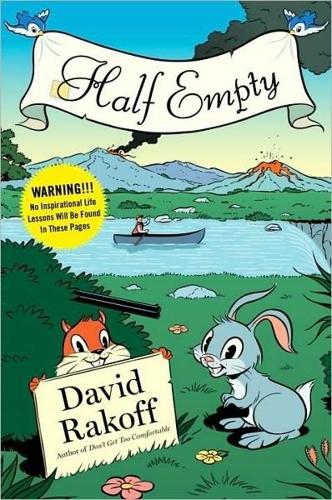
Half Empty
by
David Rakoff
Published 20 Sep 2010
With the railroads, the trickle of settlers coming by wagon train was suddenly upgraded to a flood of terrifyingly efficient westward expansion. Manifest destiny was transformed from the merely notional into reality at a speed never known theretofore. Just ask the Indians. Scrub plain stretches in all directions to the suede-brown hills in the distance. Even seen from above, the satellite images on Google Earth reveal an expanse as beige and unvaried as a slice of bologna. One has a sense of how delayed the gratification of congress must have been for the Central and Union Pacific teams. No doubt, they must have had each other in their sights for weeks before they could consider the job done. Then again, the sight of anyone new, even if only in the distance, must have been a welcome tonic after months of laying track out in the middle of nowhere.
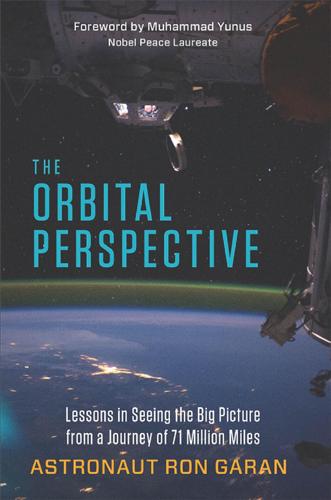
The Orbital Perspective: Lessons in Seeing the Big Picture From a Journey of 71 Million Miles
by
Astronaut Ron Garan
and
Muhammad Yunus
Published 2 Feb 2015
Land of a Thousand Hills In space, I was hit with the sobering contradiction between the beauty of Earth and the unfortunate realities of life, such as conflict that exists on our beautiful planet. But understanding this contradiction does not require a spacewalk or even a trip to space. The overview effect is, in some sense, available to us all. We’ve had pictures of Earth from space for decades, and today we even have tools such as Google Earth, which enables anyone with access to make a virtual trip around the world and then zoom in to any detailed portion of it. And elevated empathy is likewise accessible to anyone who reads the newspaper or has firsthand knowledge of local problems and allows himself or herself to feel some connection with those problems.

A Honeybee Heart Has Five Openings
by
Helen Jukes
Published 25 Jul 2018
There is no lens at the back, as with a human eye, which works to gather an image from the information coming in and so form our perception of a continuous visual field. What she sees is a patchwork pieced together from those thousands of angled views. Highly pixelated, we’d call it. A low-resolution image. If a bee were to take an eye test, by our standards she’d be classified as almost blind. I do a search on Google Earth for our postcode, wanting to get a sense of what the bees might be seeing as they fly up from our terraced plot. The web page is slow to load and it’s difficult at first to make out an image on the screen. But this, right now – as the picture is still assembling itself – must be something close to what she sees.
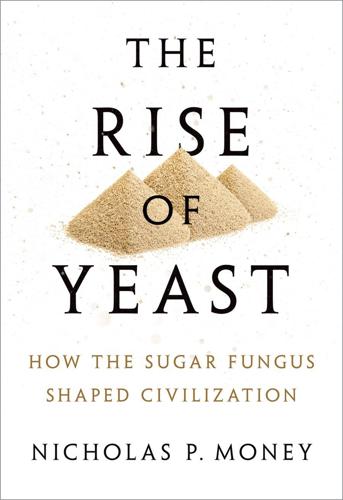
The Rise of Yeast: How the Sugar Fungus Shaped Civilisation
by
Nicholas P. Money
Published 22 Feb 2018
Some corporations are working with water purification experts to develop cleanup systems that rely on other microorganisms to ferment the organic waste left behind by yeast. Environmental laws are driving this new technology, but the continuing reliance of the yeast industry on river access is telling. An aerial survey courtesy of Google Earth shows that the Memphis plant operated by Lallemand is spitting distance from the Mississippi River; AB Mauri’s huge yeast plant in Veracruz is just above the Rio Blanco that drains into the Gulf of Mexico; and the world’s biggest yeast plant, owned by Angel Yeast, is in Yichang, a port city on the Yangtze.
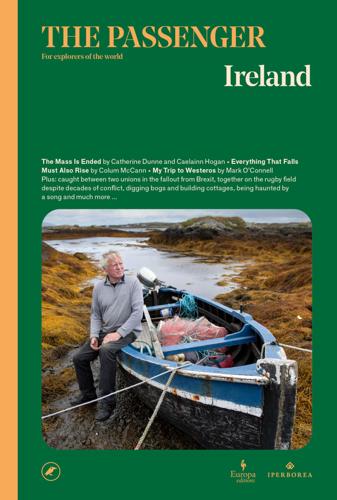
The Passenger
by
The Passenger
Published 27 Dec 2021
Each strip was separated from its neighbour by a drainage ditch about two metres deep, its bottom bright with water. Running along the edge of every tenth bay was an embankment of stockpiled peat three metres high. People often describe the process of removing peat from a bog as ‘harvesting’, but although a bog may look like a field ready for sowing on Google Earth, up close the process resembles harvesting about as much as an array of wind turbines resembles a farm. It’s more like open-pit mining. Still, looking out at the black expanse, Kearney had the air of one admiring a garden tended over a lifetime. When I suggested I grab my umbrella from his car, he suppressed a smile.

The Alchemists: Three Central Bankers and a World on Fire
by
Neil Irwin
Published 4 Apr 2013
Translation: We will withhold the next installments of aid payments, allowing Greece to go broke, unless the government steps up privatization and austerity. Prime Minister George Papandreou had done a lot to transform the Greek government. The son and grandson of previous Greek prime ministers, Papandreou was particularly proud of his strategy of using Google Earth to identify houses with swimming pools that hadn’t been reported for use in calculating property tax bills. It turned out there were 16,974 suburban homes with swimming pools, not the 324 that had been reported. Tax investigators also wandered the parking lots of Greek nightclubs writing down the registration numbers of luxury cars.
…
Strauss-Kahn’s sexual appetites had gotten him in trouble three years earlier: Landon Thomas Jr., “Woman in 2008 Affair Is Said to Have Accused IMF Director of Coercing Her,” New York Times, May 16, 2011. “The view that seems to be taking hold”: George Georgiopoulos and Harry Papachristou, “IMF Says Greece Must ‘Reinvigorate’ Reform Drive,” Reuters, May 18, 2011. Papandreou was particularly proud of his strategy of using Google Earth: Daniel Steinvorth, “Greek Government Hauls Billions in Back Taxes,” Der Spiegel, August 2, 2010, http://www.spiegel.de/international/europe/. “To this demonstrably mistaken recipe I will not agree”: Elena Becatoros, “Greek Opposition Party Rejects New Austerity Plan,” Associated Press, May 24, 2011.

Talk to the Tail: Adventures in Cat Ownership and Beyond
by
Tom Cox
Published 1 Jan 2011
In certain more unfeeling human circles, the flesh around his arms might have been described as ‘bingo wings’. But he retained the slowness of a big cat. In the time since then, Daniel has kept me up to date on his progress. Though he’s lost more weight, he’s still big enough to be seen from space. That is to say: when Daniel logged onto Google Earth to look at a picture of his house, he noticed a large ginger spillage in the corner of the driveway clearly visible as Samson. As winter comes on, Samson spends most of his time curled up in Rosie’s dog bed, but he’s also prone to wander off for periods of a day or two, then return, covered in mud or oil, to calmly inquire about that evening’s menu.
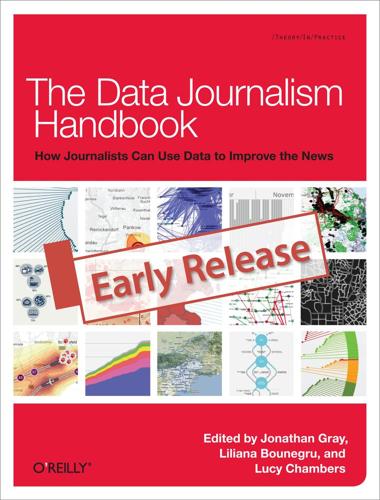
The Data Journalism Handbook
by
Jonathan Gray
,
Lucy Chambers
and
Liliana Bounegru
Published 9 May 2012
The team has also, but to a lesser extent, used MySQL, Access databases, and Solr to explore larger datasets; and used RDF and SPARQL to begin looking at ways in which we can model events using Linked Data technologies. Developers will also use their programming language of choice, whether that’s ActionScript, Python, or Perl, to match, parse, or generally pick apart a dataset we might be working on. Perl is used for some of the publishing. We use Google, Bing Maps, and Google Earth, along with Esri’s ArcMAP, for exploring and visualizing geographical data. For graphics we use the Adobe Suite including After Effects, Illustrator, Photoshop, and Flash, although we would rarely publish Flash files on the site these days as JavaScript—particularly JQuery and other JavaScript libraries like Highcharts, Raphael and D3—increasingly meets our data visualization requirements

The Line Becomes a River: Dispatches From the Border
by
Francisco Cantú
Published 1 Jan 2018
It’s peaceful there, he said—so far the violence hasn’t come for us. Where I’m from the people are humble and hardworking. There’s little money to be had, he said, but in my village the people still haven’t turned to drugs and killing. Later that morning, during a lull in business, he came to the counter with his smartphone. He opened Google Earth and spread his fingers across the screen, bringing close the state of Oaxaca, the green hills surrounding his village. He smiled longingly at the satellite image, pointing to neatly cultivated fields at the settlement’s edge. This is where my cousins make their mezcal, he told me with glinting eyes.

Die With Zero: Getting All You Can From Your Money and Your Life
by
Bill Perkins
Published 27 Jul 2020
But Jason was determined, so off he flew to London, both nervous and excited about traveling alone with a Eurail pass and no set schedule. When he came back a few months later, there was no discernible difference between his income and mine—but the pictures and stories of his experiences showed that he was infinitely richer for having gone. You have to remember: This was the early 1990s, before high-speed Internet and Google Earth. To see what Prague looked like without actually going, you had to get a coffee-table photo book about the place. So hearing his stories and looking at his photos was like listening to some exotic explorer. In Germany, he saw the horrors of Dachau. In the newly formed Czech Republic, he heard about life under Communist rule.

An Elegant Puzzle: Systems of Engineering Management
by
Will Larson
Published 19 May 2019
“Bigtable: A Distributed Storage System for Structured Data” One of Google’s preeminent papers and technologies is Bigtable, which was an early (early in the internet era, anyway) NoSQL data store, operating at extremely high scale and built on top of Chubby. Bigtable is a distributed storage system for managing structured data that is designed to scale to a very large size: petabytes of data across thousands of commodity servers. Many projects at Google store data in Bigtable, including web indexing, Google Earth, and Google Finance. These applications place very different demands on Bigtable, both in terms of data size (from URLs to web pages to satellite imagery) and latency requirements (from backend bulk processing to real-time data serving). Despite these varied demands, Bigtable has successfully provided a flexible, high-performance solution for all of these Google products.
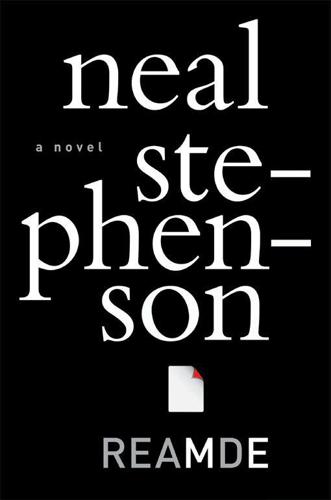
Reamde
by
Neal Stephenson
Published 19 Sep 2011
A few younger clients, and some gentlemen in bib overalls, fixated on laptops. Richard made himself comfortable in a booth, ordered two eggs over easy with bacon and whole wheat toast, and pulled his own laptop out of his bag. The opening screen of T’Rain was a frank rip-off of what you saw when you booted up Google Earth. Richard felt no guilt about this, since he had heard that Google Earth, in turn, was based on an idea from some old science-fiction novel. The planet T’Rain hung in space before a backdrop of stars. The stars’ positions were randomly generated, a fact that drove Pluto crazy. Anyway, the planet then began to rotate and draw closer as Richard’s POV plunged down through the atmosphere, which sported realistic cloud formations.
…
Which was, of course, utterly ridiculous, since what actually lay on the other side of that imaginary line was British Columbia, a prosperous and well-regulated place of socialized medicine, bilingual signage, and Mounties. And yet the line was there, drawn on all the maps. Or rather, it was the upper edge of all the maps, with nothing shown beyond it. Since people—at least, before Google Earth came along—could not actually hover miles above the ground and see the world as birds and gods did, they had to make do with maps, which substituted for actually seeing things; and, in that way, the imaginary figments of surveyors and the conventions of cartographers could become every bit as real as rocks and rivers.
…
Having put the reputations of the above people in play, I must reiterate that there are places in the book where I may have misinterpreted their advice, or simply chosen to ignore it for storytelling reasons, and so none of them should be blamed for any defects. Somewhat in the same vein, a word about geography: the advent of Google Earth makes it easy to call up high-resolution maps of any place on the planet and compare them against the descriptions in a work of fiction. Anyone who attempts this with Reamde open on their lap is wasting his or her time. There is an Abandon Mountain in northern Idaho, and something that goes by the local and informal name of American Falls, but I have taken vast liberties with their descriptions here.

Animals
by
Emma Jane Unsworth
Published 2 May 2014
The last time I’d vomited was before Jim had left. He had a late flight so I’d stayed at his, drinking wine on my own and playing Portal 2 on his PS3. At 2 a.m. I was starving and there was nothing in so I staggered to McDonald’s in St Ann’s Square in his canvas espadrilles (did they ever record for Google Earth at night, or was that just during the day? Mortification). I bought too much food and ate it walking back, and then – schoolgirl error – got in bed too soon. The internal tide turned and I knew there was only one way it was going to go. Just thinking about that night made vomiting inevitable so I paid quickly and left the shop.
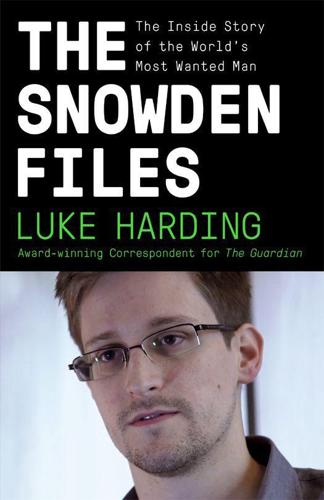
The Snowden Files: The Inside Story of the World's Most Wanted Man
by
Luke Harding
Published 7 Feb 2014
The slides, given to Poitras and published by Der Spiegel magazine, show that the NSA had developed techniques to hack into iPhones. The agency assigned specialised teams to work on other smartphones too, such as Android. It targeted BlackBerry, previously regarded as the impregnable device of choice for White House aides. The NSA can hoover up photos and voicemail. It can hack Facebook, Google Earth and Yahoo Messenger. Particularly useful is geo-data, which locates where a target has been and when. The agency collects billions of records a day showing the location of mobile phone users across the world. It sifts them – using powerful analytics – to discover ‘co-travellers’. These are previously unknown associates of a target.

The Secret World of Oil
by
Ken Silverstein
Published 30 Apr 2014
Since striking oil near the town of Jennings in 1901, the industry has transformed and defined the state. During the following century, it drilled 220,000 wells, built six hundred oil-producing fields, and constructed (with massive help from the state) eight thousand miles of access canals and pipelines, most of it running through wetlands. Look at South Louisiana with Google Earth and you’ll see a coastal landscape punch-holed by drilling operations and cut to ribbons by support infrastructure. The industry’s historic operations are a major reason why Louisiana’s coastal wetlands are disappearing at the rate of about twenty-five to thirty-five square miles per year, one of the fastest rates in the world.5 The canals and pipelines eliminated the natural wetlands barrier, and sucking oil and gas out of the marshes caused the land to literally cave in and disappear.
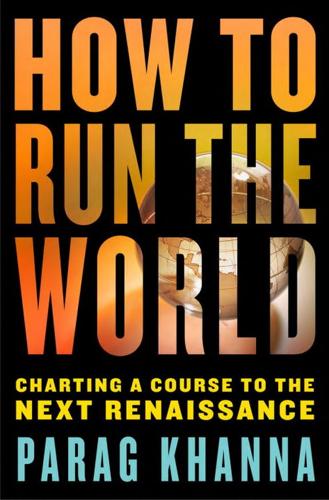
How to Run the World: Charting a Course to the Next Renaissance
by
Parag Khanna
Published 11 Jan 2011
To protect their brand, Office Depot and Staples have ended their relationship with Asian Pulp and Paper, whose practices plundered the Indonesian rain forest. The Marine Stewardship Council plays a similar role for fisheries, 70 percent of which are being harvested to below replacement levels, using the power of its labels to certify seafood producers. It even uses real-time Google Earth maps on its website to track and promote sustainable fisheries and their techniques. In Alaska, the privatization of fisheries incentivized fishermen to catch halibut only when prices are high, saving the fish from overexploitation. For both forests and fisheries, a sense of local ownership is the key to building community-level sustainability.
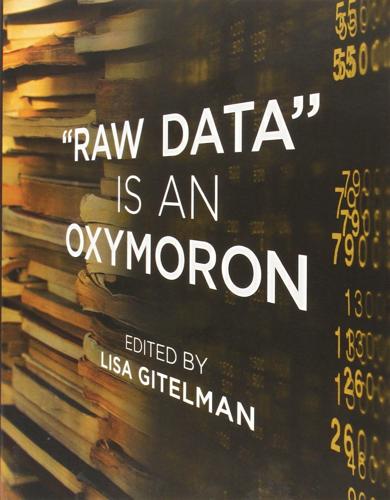
Raw Data Is an Oxymoron
by
Lisa Gitelman
Published 25 Jan 2013
Playing along, the organization began to field calls from children interested in Santa’s whereabouts, and eventually to issue brief broadcast “updates” of Santa’s location, claiming to use NORAD’s “satellites, high-powered radars, and jetfighters” to track Santa’s journey. The radio broadcasts continued until 1997, when the Santa Tracker moved to the Internet. In 2007, Google partnered with NORAD on the endeavor, creating 2D Google maps and 3D Google Earth images based on NORAD’s tracking data. In 2011 the Santa Tracking program drew on over 1,000 U.S. and Canadian military volunteers to field over 100,000 phone calls and emails; the Apple/Android SantaTracker smartphone app was downloaded 1.4 million times, while the NORAD Santa Tracker Web site received 2.2 million hits.

Give People Money
by
Annie Lowrey
Published 10 Jul 2018
A few years later, a chance meeting with a person connected to Google.org, the tech giant’s giving arm, led to a $2.4 million donation. Thousands of Kenyans, and later Ugandans and Rwandans, started receiving Silicon Valley’s cash. The nonprofit was always low-overhead and digital-first, working with macro scripts in Excel and Google Earth images. “I remember one of the first things I learned about GiveDirectly was that they used satellite images to see housing changes,” Mike Krieger, a founder of Instagram and a GiveDirectly donor, told me, meaning new roofs and other upgrades. “This definitely feels like how a tech company would have approached that problem.”

Wanderland
by
Jini Reddy
Published 29 Apr 2020
She is nothing like the curmudgeonly woman in the not-very-community shop. ‘I haven’t, but let me ask my husband,’ she replies in a friendly way. I can hear her calling out to him in the background. ‘Not heard of it,’ he says. My heart sinks. Then, there’s a long pause and… ‘He’s found it!’ It turns out her husband has found Glen Temple on Google Earth. Inwardly I roll my eyes. There’s nothing like technology to tarnish a mystery. But still, the information is helpful. ‘It looks like it’s inland, sort of west of the abbey, somewhere in the centre-ish of the island,’ says Jana. ‘Try talking to Daniela. She works at the Iona Heritage Centre. She might know more.
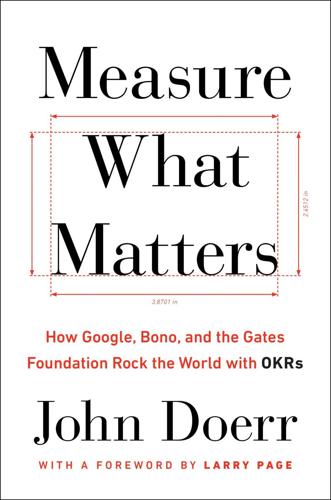
Measure What Matters: How Google, Bono, and the Gates Foundation Rock the World With OKRs
by
John Doerr
Published 23 Apr 2018
For organization-level OKRs, the buck stops with senior leadership. They must personally commit to the process. Where do they begin? How do they decide what truly matters most? Google turned to its mission statement: Organize the world’s information and make it universally accessible and useful. Android, Google Earth, Chrome, the new-and-improved YouTube search engine—these products and dozens more share a common lineage. In each case, the impetus for development came from the founders and executive team, who made plain their focus and commitment through objectives and key results. But good ideas aren’t bound by hierarchy.
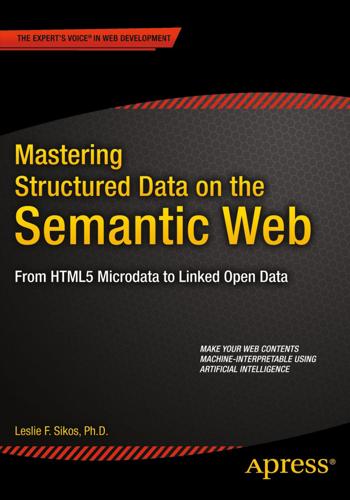
Mastering Structured Data on the Semantic Web: From HTML5 Microdata to Linked Open Data
by
Leslie Sikos
Published 10 Jul 2015
An XHTML 1.x Document That Supports GRDDL Transformations <head profile="http://www.w3.org/2003/g/data-view"> <link rel="transformation" href="grddlxfn.xsl" /> ■■Caution The profile attribute is not supported in XHTML5. In XML documents such as the Atom syndication format (used for news feeds) or KML (used to display geographic data in Google Earth and Google Maps), a transformation can be associated with the XML namespace by simply pointing to the namespace (Listing 2-38). Listing 2-38. An XML Namespace Declaration Pointing to NamespaceTransformation <foo xmlns="http://example.com/1.0/"> When the http://example.com/1.0/ namespace is accessed, it reveals the namespaceTransformation, allowing easy deployment of RDF/XML from XML documents.
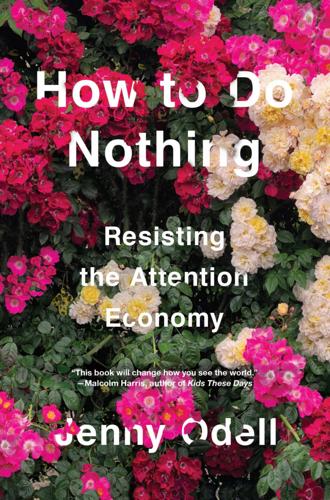
How to Do Nothing
by
Jenny Odell
Published 8 Apr 2019
“Nothing” is neither a luxury nor a waste of time, but rather a necessary part of meaningful thought and speech. Of course, as a visual artist, I’ve long had an appreciation of doing nothing—or, more properly, making nothing. I had been known to do things like collect hundreds of screenshots of farms or chemical-waste ponds from Google Earth, cutting them out and arranging them in mandala-like compositions. In The Bureau of Suspended Objects, a project I did while in residence at Recology SF, I spent three months photographing, cataloging, and researching the origins of two hundred discarded objects. I presented them as a browsable archive in which people could scan a handmade tag next to each object and learn about its manufacturing, material, and corporate history.
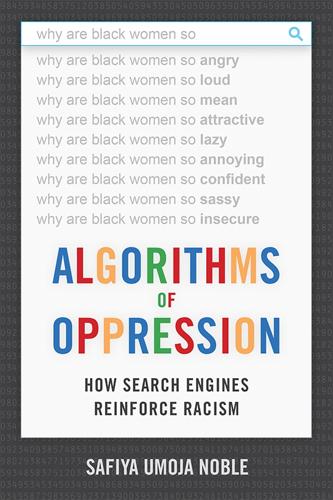
Algorithms of Oppression: How Search Engines Reinforce Racism
by
Safiya Umoja Noble
Published 8 Jan 2018
George Ritzer and Nathan Jurgenson at the University of Maryland characterize this emphasis of merging the consumptive and productive aspects of digital engagement as “a trend toward unpaid rather than paid labor and toward offering products at no cost, and the system is marked by a new abundance where scarcity once predominated.”26 The critical communications scholar Dallas Smythe describes this type of prosumerism as “the audience as commodity,” where users are sold to advertisers as a commodity and, in return for “free” services, users are explicitly exposed to advertising.27 Christian Fuchs, the director of the Communication and Media Research Institute and Westminster Institute for Advanced Studies, discusses this accumulation strategy, bolstered by Google’s users, as a process of both prosumer commodity and audience commodity by virtue of the decentralized nature of the web.28 The intensive participation of people in uploading, downloading, sharing, tagging, browsing, community building, and content generation allows for mass distribution and one-to-many or many-to-many engagements in a way that traditional media could not have done due to its centralized nature.29 In Fuchs’s work on the political economy of Google, he characterizes the unpaid, user-generated content provided by its users as the basis for Google’s ability to conduct keyword searching because it indexes all user-generated content and “thereby acts as a meta-exploiter of all user-generated content producers.”30 Surplus labor is created for Google through users’ engagements with its products, from Gmail to Google Scholar, the reading of blogs in Blogger/Blogspot, the use of Google Maps or Google Earth, or the watching of videos on YouTube, among many of the company’s services.31 The vertical offerings of Google are so great,32 coupled with its prioritization of its own properties in keyword searches, that mere use of any of these “free” tools creates billion-dollar profits for Google—profits generated from both unpaid labor from users and the delivery of audiences to advertisers.

Scotland’s Jesus: The Only Officially Non-Racist Comedian
by
Frankie Boyle
Published 23 Oct 2013
Is it just me or does PRISM sound like one of the pathetic team names on The Apprentice? Instead of spying, you expect to see a woman in a pencil skirt trying to negotiate the price of curtains in East London. Luckily my phone comes complete with a voice scrambler. It’s just one of the unmentioned benefits of joining the 3 network. The government clearly already uses Google Earth to spy on us. I only had to bury four shop mannequins in my garden before I got a free new front door after police kicked the old one off its hinges. Result. It must be weird working for the CIA. The boss comes in and you’ve been looking at spreadsheets, and you have to really quickly pretend that you were actually really busy on Facebook.
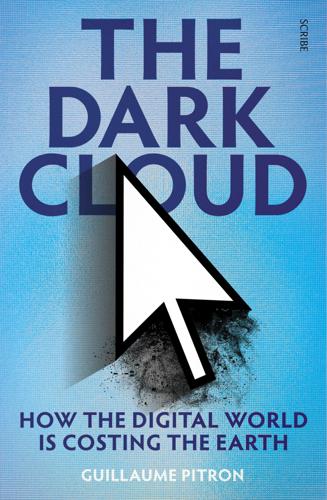
The Dark Cloud: How the Digital World Is Costing the Earth
by
Guillaume Pitron
Published 14 Jun 2023
Accordingly, Google, which owns some fifteen data centres around the world, often uses shell companies so that its name is only associated with these infrastructures once the builds are approved.39 In the US, the search engine also imposed strict confidentiality clauses on the municipalities where it set up in order to bypass any public discussion about the water and electricity consumption of its data centres.40 Likewise for Apple’s immense 4.6-hectare data centre in Maiden, North Carolina, which only appeared on the satellite images of the Google Earth application when its commissioning was announced in 2009!41 As for Amazon, a document leaked on Wikileaks revealed that the company was discreetly multiplying its data centres under innocently named companies such as Vadata Inc and Vandalay Industries.42 In the decades ahead, this unbearable lightness of the net will put labour unions — the existence of which is historically tied to the concentration of the workforce in tangible places of production, such as factories — face-to-face with existential challenges.

A Map of Future Ruins: On Borders and Belonging
by
Lauren Markham
Published 13 Feb 2024
She wasn’t quite sure where it had been, since she’d only been a kid, stuck inside, with no reference to the outside world, and there was no address for this “extraterritorial refuge for extralegal immigrants” in any official records or maps she could get her hands on. The camp, she was coming to understand, had always been an “invisible city.” Since the archives failed her, Boym took her search online, scouring the outskirts of Vienna via Google Earth. She also began interviewing others who had transited through the same camp, asking them to add their memories to a map of the place she’d sketched out on a paper napkin. Everyone seemed to have different recollections of the place, though—both how it had looked and how it had felt, what it had meant to them to be encircled by its walls.

Mauritius, Réunion & Seychelles Travel Guide
by
Lonely Planet
You're still best to avoid public displays of affection outside your hotel and generally to be aware that what might be entirely standard at home may not be viewed in the same light here. Maps Although Mauritius markets itself heavily as a major tourism destination, the island has a frustrating lack of decent maps. The best map of the island is the satellite imagery on Google Earth. If you don't have printing facilities on hand, try the map produced by the Institut Géographique Nationale (IGN; www.ign.fr). The Globetrotter travel map is also a good choice. Both should be available from local bookstores and supermarkets. Otherwise, see if you can pick up the reasonable Tourist Map of Mauritius & Rodrigues by ELP Publications – we found it at Le Village Boutik in Pamplemousses (Rs 230).
…
In general, travellers have nothing to fear from the police, who rarely harass foreigners and are very polite if you do need to stop them. Possession and use of drugs is strictly illegal and penalties are severe. Maps There's a frustrating lack of decent maps of the archipelago. The best map of the island is the satellite imagery on Google Earth. You can also pick up the Map of Seychelles, a tourist map of the three main islands that's available at the tourist offices on Mahé, Praslin and La Digue. Money The unit of currency is the Seychelles rupee (Rs), which is divided into 100 cents (¢). Bank notes come in denominations of Rs 10, Rs 25, Rs 50, Rs 100 and Rs 500; there are coins of Rs 1, Rs 5, 1¢, 5¢, 10¢ and 25¢.

Admissions: A Life in Brain Surgery
by
Henry Marsh
Published 3 May 2017
I hoped that I would be buried in the wood after my death, and that eventually the molecules and elements of which I am made would be rearranged as leaves and wood. I had no idea at all of the disaster that awaited my marriage. I lost the land and the trees with divorce, and they were soon sold off. You can still see the wood, now overgrown and neglected, on Google Earth. A third of the trees should have been felled to allow the remaining ones to grow stronger, but this has not been done. I miss the place greatly – not only the fields and the wood, but the workshop I set up in one of the ancient cob-built barns opposite the farmhouse. The windows, which I had made myself, in front of the workbench, which I had also made, looked out over the low hills of north Devon towards Exmoor.
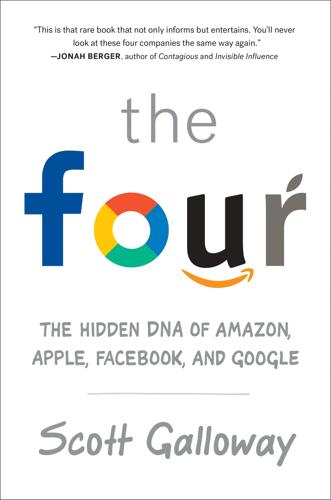
The Four: How Amazon, Apple, Facebook, and Google Divided and Conquered the World
by
Scott Galloway
Published 2 Oct 2017
In particular, to capture and control every cache of productive information that currently existed on, or could be ported to, the web. And with absolute single-mindedness, the company has done just that. It began with the stuff already on the web—it couldn’t own that, but it could become the gatekeeper to it. After that, it went after every location (Google Maps), astronomical information (Google Sky), and geography (Google Earth and Google Ocean). Then it set out to capture the contents of every out-of-print book (the Google Library Project) and work of journalism (Google News). With the insidious nature of search, Google’s absorption of all the world’s information took place in the open—and potential victims didn’t seem to notice until it was too late.
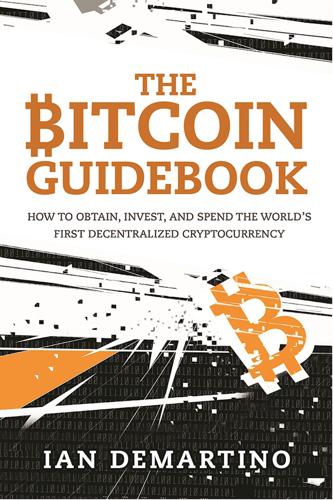
The Bitcoin Guidebook: How to Obtain, Invest, and Spend the World's First Decentralized Cryptocurrency
by
Ian Demartino
Published 2 Feb 2016
I preach a bit more patience but the point remains: a lot will be determined by then. Predicting anything is tough with a new technology, because the changes are amplified drastically when the in-hindsight obvious uses are in place. Imagine trying to predict AltaVista, Geocities, and ICQ before web browsers existed, then imagine trying to predict Facebook, Reddit, and Google Earth in 2000 when AltaVista, Geocities, and ICQ were still Internet mainstays. Given that I will likely be wrong at least as often as I am right, what kind of services do I see evolving in a cryptocurrency wonderland? Amazing ones. Altcoins are currently plagued by speculative investing. This drives everything in the space.

Going Dark: The Secret Social Lives of Extremists
by
Julia Ebner
Published 20 Feb 2020
I live in Pasing next to a refugee camp, which probably explains why I’m here. ‘All right, do you have a headset?’ ‘Sure’. ‘Okay, let’s do a voice call tonight.’ My preparation time is rather limited, but I do some speedy research on insurance companies based in Munich, write a quick list of words and phrases of marketing jargon and open a Google Earth map of Pasing on my laptop. As the recruiter called Gardes du Corps (Bodyguard) is awaiting me in the voice chat, I calculate the chances of him being Bavarian. Bavaria counts just over 12 million citizens; the entire German population is currently at roughly 82 million. About 15 per cent. I think of my grandmother’s dialect before switching on the microphone.
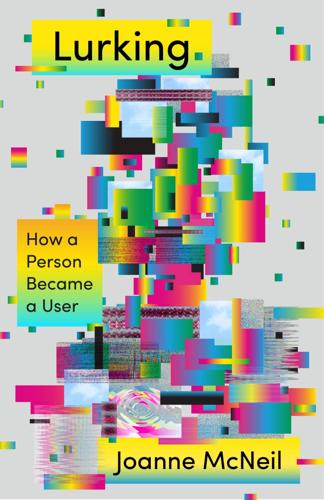
Lurking: How a Person Became a User
by
Joanne McNeil
Published 25 Feb 2020
Representatives went to library conferences like the annual gathering of the American Library Association (ALA) with great enthusiasm, eager to partner with groups, and especially to find librarians who might help scan books. In 2006, Google started a blog called Librarian Center, complete with the URL google.com/librariancenter. They hired a “Library Partnership Manager,” who sent out the “Google Librarian Newsletter,” which included a mix of links to news on libraries and its own products like Google Earth. The newsletters were sent less frequently in 2007, and they finally came to a stop in 2009. Later, the Librarian Center page was taken offline, although it is still available to view on the Internet Archive’s Wayback Machine. After abandoning the community, Google returned to the ALA Conference in 2012 with convenient corporate amnesia.

Fallen Idols: Twelve Statues That Made History
by
Alex von Tunzelmann
Published 7 Jul 2021
Kim was estimated at one point to have 40,000 statues, busts and bas-reliefs: one for every 3 square kilometres. Victor Cha, The Impossible State: North Korea, Past and Future (2012; London: Vintage Books, 2013), p. 71, estimates that there were 40,000 Kim Il-sung monuments by 1992; see also ‘23 things you probably didn’t know about North Korea’, Telegraph, 8 January 2019. The AccessDPRK blog analysed Google Earth images of North Korea in 2017 and 2018 and estimated the number of monuments in the country as 11,170. This project would not have been able to spot statues that were indoors, so it is likely that the total number is considerably higher. See Jacob Bogle, ‘The monuments of North Korea’, 27 February 2019, https://mynorthkorea.blogspot.com/2019/02/the-monuments-of-north-korea.html. 3Oral history interview with Barón Antonio González Santana, 14 January 2021, by Pauline Kulstad González. 4Lauren Derby, The Dictator’s Seduction: Politics and the Popular Imagination in the Era of Trujillo (Durham and London: Duke University Press, 2009), p. 174. 5Quotes from Lauren Derby, The Dictator’s Seduction, p. 119. 6Quoted in Castilia Vargas, ‘Edwin Espinal’, Listín Diario, 11 September 2007; see also Víctor A.

The Twittering Machine
by
Richard Seymour
Published 20 Aug 2019
Google has an even more comprehensive set of tools. It is not just the search engine which allows Google to see what people are up to online. They have the Google Chrome browser, their Gmail service, their DNS server, YouTube, website analytics, Google Translate, Google Reader, Google Maps and Google Earth. They can analyse messages, contacts, travel routes and the shops visited by users. They have a deal with Twitter, giving them access to all tweets. Users hand over immense amounts of raw material to the platforms every time they access the app. This new revenue system is transforming both the consumption and production of information, ripping it out of the control of Cold War-era broadcasters and print giants allied to the liberal state.

Skyjack: The Hunt for D. B. Cooper
by
Geoffrey Gray
Published 8 Aug 2011
His first step was to call Alan Stone (“my metal guy”), who looks exactly how you would imagine a metallurgist to look: spectacles, mustache, fanny pack. He runs Aston Labs, a metals research firm in Chicago. When Tom discovered silver on the bills in his lab in Arizona, he sent the images to Stone for his opinion. Yes, definitely silver, Stone confirmed. But how did it get there? Together, the scientists gazed at Tena Bar on Google Earth. The sand on the beach where Brian Ingram found the Cooper bills, they saw, was not white and powdery. It was black. After studying the properties of silver, Tom and Alan learned that microscopic traces of silver can seep out of sand. And when silver comes into contact with a porous and natural element—like the linen that money is made from—a chemical event takes place.
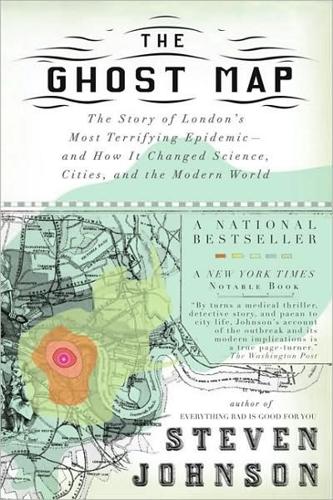
The Ghost Map: A Street, an Epidemic and the Hidden Power of Urban Networks.
by
Steven Johnson
Published 18 Oct 2006
When the next great epidemic does come, maps will be as crucial as vaccines in our fight against the disease. But again, the scale of the observation will have broadened considerably: from a neighborhood to an entire planet. The influence of the Broad Street maps extends beyond the realm of disease. The Web is teeming with new forms of amateur cartography, thanks to services like Google Earth and Yahoo! Maps. Where Snow inscribed the location of pumps and cholera fatalities over the street grid, today’s mapmakers record a different kind of data: good public schools, Chinese takeout places, playgrounds, gay-friendly bars, open houses. All the local knowledge that so often remains trapped in the minds of neighborhood residents can now be translated into map form and shared with the rest of the world.

The Rise of Superman: Decoding the Science of Ultimate Human Performance
by
Steven Kotler
Published 4 Mar 2014
Go stare at the night sky. Walk in the woods. If you can’t find big nature, contemplate the small. The reasons there are so many clichés about universes inside of dewdrops is because there are universes inside of dewdrops. No dew to contemplate? Use technology to induce awe: surf your city with Google Earth or go see an IMAX movie. Next, up novelty and unpredictability. Normally, we go out of our way to avoid both. We rely on old habits, we cherish our routines. And why not? Automatic pilot is efficient. Routines save the brain energy and who hasn’t driven to work without remembering the trip? Yet vary the route next time.
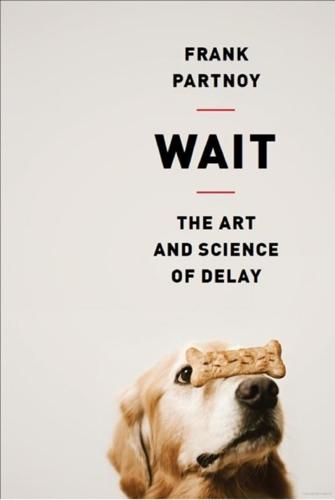
Wait: The Art and Science of Delay
by
Frank Partnoy
Published 15 Jan 2012
Even companies with innovative cultures are restricting the freedom they once gave employees. Google had one-upped Minnesota Mining’s 15 percent free time policy with its own 20 percent “innovation time off” program, which was the source of as many as half of its newly launched products in a given year, including Gmail, Google News, and Google Earth.29 But in late 2011 Google abandoned that program (though it continues to fund new ideas through a cutting-edge research arm). Other companies, such as Hewlett-Packard, have imposed limits on their free time policies. Johnson says, “Part of the secret to having great ideas lies in creating a working environment where those fragments are nurtured and sustained over time.

Overdiagnosed: Making People Sick in the Pursuit of Health
by
H. Gilbert Welch
,
Lisa M. Schwartz
and
Steven Woloshin
Published 18 Jan 2011
13 There is no single correct answer; it depends on how many you can see. The number of islands will increase with the resolution of the map used to identify them. But as the number of islands increases with improved resolution, and many previously undetected islands become apparent, the size of the average island decreases. Check it out yourself. Get on Google Earth. And if you are not an Anglophile, try counting the number of lakes in Utah. When you view the entire United States, you’ll see only one, and it’s big—the Great Salt Lake. But then zoom in a bit. You’ll find two more: Utah Lake next to Provo, and Bear Lake on the Idaho border near Wyoming. Now zoom in more.
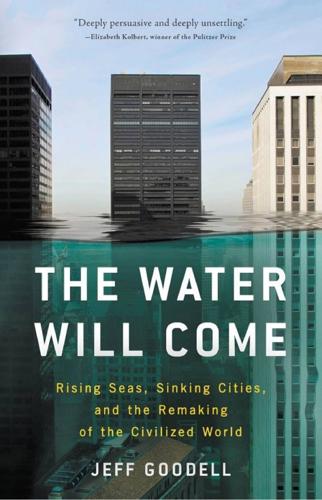
The Water Will Come: Rising Seas, Sinking Cities, and the Remaking of the Civilized World
by
Jeff Goodell
Published 23 Oct 2017
It is essentially how Carl Fisher built Miami Beach, how Lower Manhattan expanded out into its rivers, and how the coastal tribes like the Calusa built shell middens a thousand years ago. Eko Atlantic rising on newly built land in Lagos, Nigeria. (Photo courtesy of the author) Thanks to all this human engineering, over the past thirty years, the Earth has gained more land than it has lost. Using satellite data from Google Earth, researchers at Deltares, a Dutch research institute, found that coastal regions have gained a net 5,237 square miles of land since 1985—an area roughly the size of Connecticut. “We have a huge engineering power,” Fedor Baart, an author of the study, told me. In China, he said, “the coastline all the way from Hong Kong to the Yellow Sea has almost been redesigned.”

Driverless: Intelligent Cars and the Road Ahead
by
Hod Lipson
and
Melba Kurman
Published 22 Sep 2016
Adding to the speculation, in a recent speech at a tech conference, Apple vice president Jeff Williams cryptically described cars as “the ultimate mobile device.”2 In response, car companies are pouring billions of dollars into software development and the epicenter of automotive innovation has moved from Detroit to Silicon Valley. At the time this book was written, Mercedes-Benz’s Silicon Valley Division employed nearly 300 people working on advanced engineering projects and user experience design. Volkswagen had 140 engineers, social scientists, and product designers integrating Google Earth maps into Audi’s navigation system and developing new infotainment systems.3 Toyota announced that it would invest $1 billion over the next several years in artificial-intelligence research, with a laboratory near Stanford and another in Massachusetts, near MIT. Four trends are forcing car companies to rethink their business models: electric cars, ubiquitous wireless, car-sharing, and autonomous vehicles.
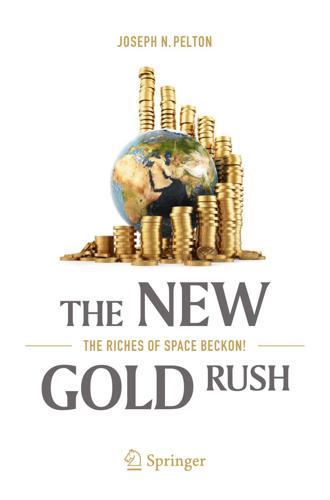
The New Gold Rush: The Riches of Space Beckon!
by
Joseph N. Pelton
Published 5 Nov 2016
In short there is more to worry about than human-driven climate change, but rather to understand that human development and relentless growth gives rise to a number of problems that are interlinked together. Today there is more and more remote sensing data. The images are now increasingly precise and insightful, with the addition of hyper spectral imaging. Today there is not only data from space and governmental agencies that collect meteorological and oceanic data but also from Google Earth and private data collectors such as GeoEye . For those who wish to stare reality in the eye there is a great wealth of imaging data mounting into the petabytes (i.e., thousands of trillions of data points). The unpleasant truth of how the world is changing is revealed by satellite and UAV imaging.
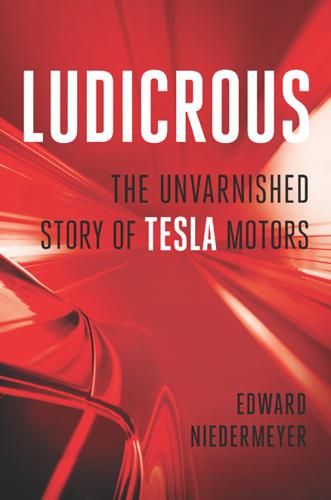
Ludicrous: The Unvarnished Story of Tesla Motors
by
Edward Niedermeyer
Published 14 Sep 2019
Tesla’s post also sought to blame Peter Cordaro for the damage that led to his TMC blog post, noting that Cordaro’s car had “very abnormal” rust that they had never seen on another vehicle. Cordaro, they claimed, lived down a long dirt road, and that those conditions led to the problem. Cordaro debunked this claim in his TMC thread, writing (excerpted as posted): They have my address and should of googled earth my address before making such an outrageous statement. [. . .] The above statement is an out and out lie. I live on a paved road in the city of Connellsville pa. The car was towed from a dirt road as I stated earlier because I was out morel mushroom hunting that day with my wife. We were traveling about 2 miles an hour on a bumpy back road.
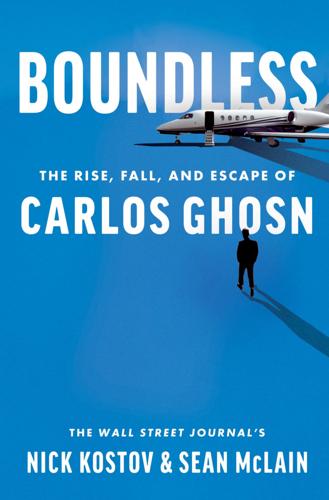
Boundless: The Rise, Fall, and Escape of Carlos Ghosn
by
Nick Kostov
Published 8 Aug 2022
Flying out of Japan had its advantages. Taylor had done some security work for Logan International Airport in Boston and knew exactly where to look for holes: at the private jet terminals. He knew that security checks are much looser at the private terminals because of the lower terrorism risks. So he started exploring them on Google Earth, looking for an out-of-the-way airport that might not have heavy traffic. He was concerned that surveillance and security at the Tokyo airports were way too tight. He started searching for more provincial airports, even though they would require multiple means of travel, and found Kansai International Airport in Osaka, 250 miles from Tokyo.
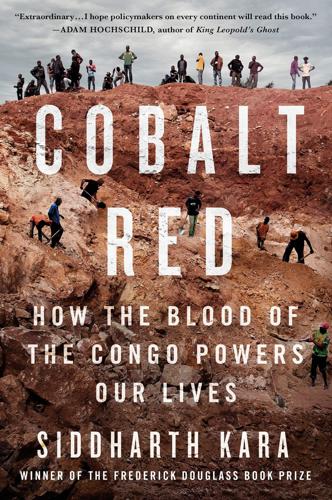
Cobalt Red: How the Blood of the Congo Powers Our Lives
by
Siddharth Kara
Published 30 Jan 2023
We arrive at last at the beating heart of the world’s device-driven economy and EV revolution: Kolwezi. There is no other city like it. Kolwezi is a Wild West frontier, home to roughly one-fourth of the world’s cobalt reserves. The city’s extraordinary mineral endowment has resulted in considerable environmental destruction due to the rapid expansion of mining operations. Look up Kolwezi on Google Earth and zoom in. See the colossal craters, the behemoth open-pit mines, and the immense swaths of dirt. Small artificial lakes provide water to the mining operations, not to the city’s inhabitants. Villages have been flattened. Forests have been razed. The earth has been gouged and gashed. Mines swallow all.

How to Spend a Trillion Dollars
by
Rowan Hooper
Published 15 Jan 2020
And there are many demands on spare land – not least agriculture, housing and recreation. But it does seem that there is a lot of disused and currently wasted land that we could redevelop in a massive tree-planting scheme. The Zurich team, led by an ecologist called Tom Crowther, used data on forest cover from Google Earth and a machine-learning algorithm to predict which new areas could support forests. Once you take away areas where there are already farms and buildings, there is enough land around the world for nearly ten million square kilometres of forest, an area about the size of the United States. Six countries account for most of the spare space, mostly because they are big and have already been deforested to a large extent: the US, Canada, Russia, China, Australia and Brazil.25 In this scheme, we’d plant around 500 billion new trees.
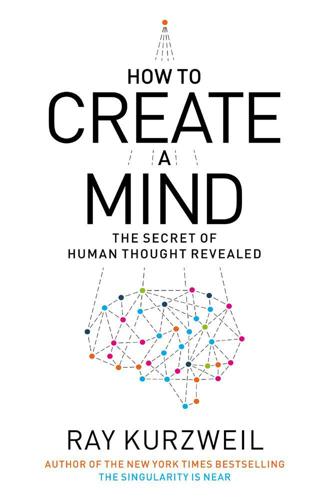
How to Create a Mind: The Secret of Human Thought Revealed
by
Ray Kurzweil
Published 13 Nov 2012
There are large-scale projects to gather this type of data and make it generally available to scientists. For example, Cold Spring Harbor Laboratory in New York has collected 500 terabytes of data by scanning a mammal brain (a mouse), which they made available in June 2012. Their project allows a user to explore a brain similarly to the way Google Earth allows one to explore the surface of the planet. You can move around the entire brain and zoom in to see individual neurons and their connections. You can highlight a single connection and then follow its path through the brain. Sixteen sections of the National Institutes of Health have gotten together and sponsored a major initiative called the Human Connectome Project with $38.5 million of funding.7 Led by Washington University in St.
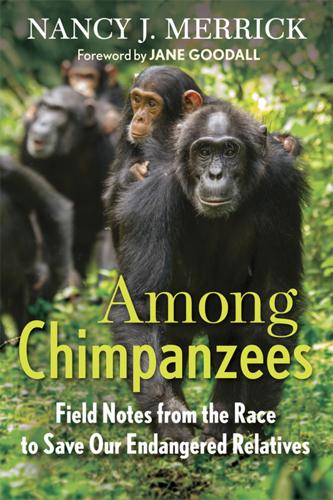
Among Chimpanzees
by
Nancy J. Merrick
Next, visit ChimpSaver.org and join the site’s mailing list to stay abreast of important campaigns, alerts, and ways to help. Explore its pages to experience firsthand just how remarkable chimps and other great apes are, and check ChimpSaver.org’s links to organizations that are making a difference. Most important, use the site to view Google Earth time-lapse maps of the Congo Basin forests and become part of a social media community of advocates committed to saving the basin. For the first time, every one of us with a computer and Internet access is able to view the forests of the Congo in near real time, to know when they are in jeopardy, and to collectively and meaningfully raise our voices on behalf of not just chimps but also the people that so need those forests to endure. 2.
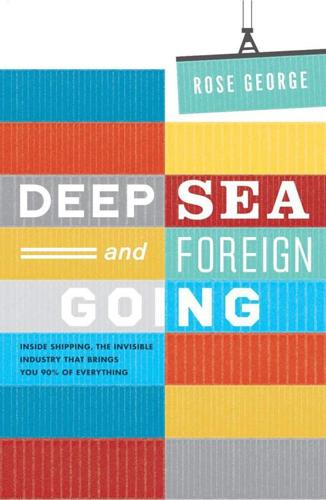
Deep Sea and Foreign Going
by
Rose George
Published 4 Sep 2013
Other villages and towns in Somalia have also banished pirates. But still pirates have no difficulty finding refuge. Perhaps they are good for business. Dr Anja Shortland of Brunel University wanted to answer this question by measuring normal economic indicators, but on the ground, research in Somalia is difficult. Instead, she used Google Earth, studying satellite images of areas where pirates were known to operate. She was looking for evidence of construction and electricity as indicators of prosperity and progress. Shortland compared images from 2005 to those from 2009. None of the notorious pirate towns – Eyl, Hobyo – had enough light to show up, then or now.
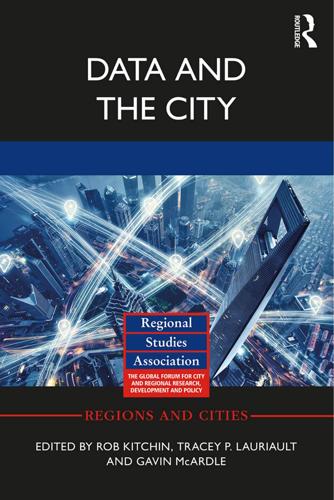
Data and the City
by
Rob Kitchin,Tracey P. Lauriault,Gavin McArdle
Published 2 Aug 2017
According to Borgmann, natural information is the information that we receive from the natural world such as that received from a meandering river which direct us to walk a specific way or direction; cultural information is information that we used to construct reality, to act and do things in the world – music sheets for example are used to play music, a map is used to construct and plan a route; finally, he qualified technological information as something different – information as reality. This is when information claims to be such a detailed representation that it can replace reality for all intents and purposes, as demonstrated by the highly detailed images and visualizations in digital globes such as Google Earth. Borgmann’s (1999) use of the words natural, cultural and technological is very specific and differs from their everyday use, and this difference is important. What is important to note is that according to his definition, technological information obfuscates our ability to understand the world and to deal with it in a meaningful way (see Sieber and Haklay 2015).

Messing With the Enemy: Surviving in a Social Media World of Hackers, Terrorists, Russians, and Fake News
by
Clint Watts
Published 28 May 2018
His technical signatures hitting my blog didn’t provide much other than his presence in Somalia, but his words gave me important context. In just a few short Google searches, I pulled up maps from aid efforts in Somalia, showing roads and villages not typically displayed or easily correlated in Google Earth. A few minutes later, I printed a Somali clan map created by a college professor, showing the group Hammami said had helped him hide in Somalia. It doesn’t rain much in that country, so I pulled the weather reports for the clan area, and it had rained in only a couple of places that day. Omar mentioned ice, a rare commodity in the Horn of Africa and one requiring electricity, so I looked for places within a thirty-to forty-five-minute donkey cart ride—five kilometers or so—from towns where it had rained that day.

The Trains Now Departed: Sixteen Excursions Into the Lost Delights of Britain's Railways
by
Michael Williams
Published 6 May 2015
At the end of this line is a place that no ordinary mortals can enter – a railway graveyard full of old rolling stock unwanted by the train companies, securely guarded within a former Ministry of Defence ammunition depot. The contents of this yard are so secret that they consume megabytes of Internet trainspotter paranoia. Could it even be that there is a hoard of veteran locomotives buried secretly underground here, concealed from the prying of Google Earth satellites? Who knows? But the smell of death always hovered around the old SMJ, and how appropriate that the last bit of the line should live on as a modern Valhalla. As always with the Shakespeare Route, there is a ready quote to be plucked from the Bard. What better epitaph for the slowest railway in the land than Falstaff’s: ‘I were better to be eaten to death with a rust than to be scoured to nothing with perpetual motion’?
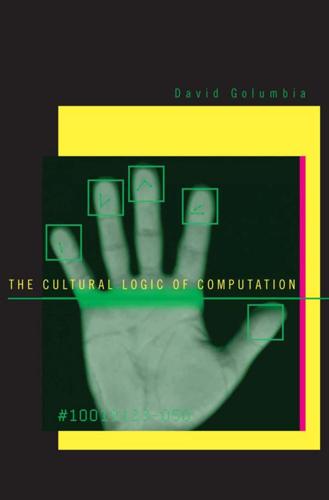
The Cultural Logic of Computation
by
David Golumbia
Published 31 Mar 2009
Where once much of the Earth was largely “smooth” terrain to which lines of segmentation might be intermittently applied, today all of the Earth’s land mass, and a great part of its waters, are constantly surveilled by electronic monitoring, all of which inherently places locations on a single, global grid. The grid is so unquestioned and so available now that even mass applications are made available for individuals (see especially Google Earth), though without the analytic and surveillance tools to which corporations and governments have access. There would seem to be no position at all from which to question whether it is desirable or even ethical to persistently map every square inch of global terrain and make it available for electronic processing; since the benefits of such a scheme are so apparently obvious, only cranks or luddites might stand in opposition to them.

Mindf*ck: Cambridge Analytica and the Plot to Break America
by
Christopher Wylie
Published 8 Oct 2019
We had data about her mortgage applications, we knew how much money she made, whether she owned a gun. We had information from her airline mileage programs, so we knew how often she flew. We could see if she was married (she wasn’t). We had a sense of her physical health. And we had a satellite photo of her house, easily obtained from Google Earth. We had re-created her life in our computer. She had no idea. “Give me another,” said Jucikas. And he did it again. And again. And by the third profile, Nix—who’d hardly been paying attention at all—suddenly sat up very straight. “Wait,” he said, his eyes widening behind his black-rimmed glasses.
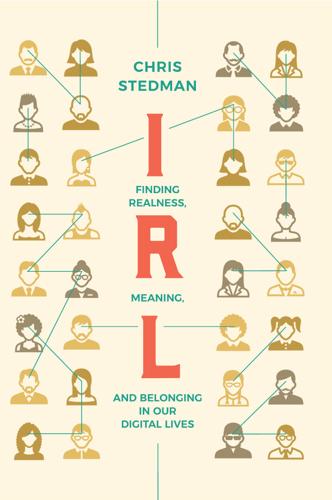
IRL: Finding Realness, Meaning, and Belonging in Our Digital Lives
by
Chris Stedman
Published 19 Oct 2020
No map, book, or social media platform is large enough to capture all of reality. We need maps, but we also need to understand their limitations. “There will always be maps of the world,” Brotton concludes in A History of the World in Twelve Maps, “and their technology and appearance at some point in the future will make the world map in a modern atlas, and even Google Earth’s home page, seem as quaint and unfamiliar as the Babylonian world map.” Social media, too, is making our old ways of documenting and sharing the self seem quaint, and surely in the future we will look back on Twitter and Instagram and laugh at them like we do with Myspace today. (Some people, mostly those younger than me, are already there.)
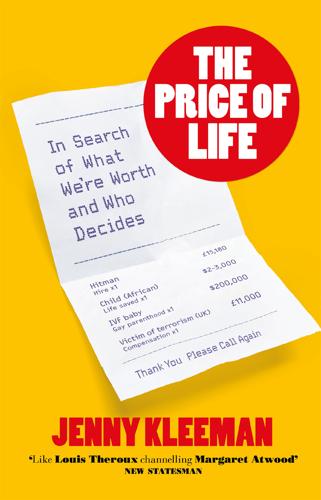
The Price of Life: In Search of What We're Worth and Who Decides
by
Jenny Kleeman
Published 13 Mar 2024
If the email bounced, or Helen didn’t reply, then he would leave it there. But Helen did reply. Yes, she said, she did still require RentAHitman’s services. She gave her full name, her mobile number and the address of the Canadian hostel where she was staying, plus details of funds held in a safe deposit box. Bob spent the night checking Google Earth, MapQuest, online electoral registers, anything he could find to corroborate her story, and it all checked out: the targets were three real people living at the addresses she’d given in the Cotswolds. He printed out his research and took it to a police sergeant friend the next morning, who alerted the Canadian police so they could perform a welfare check on Helen.
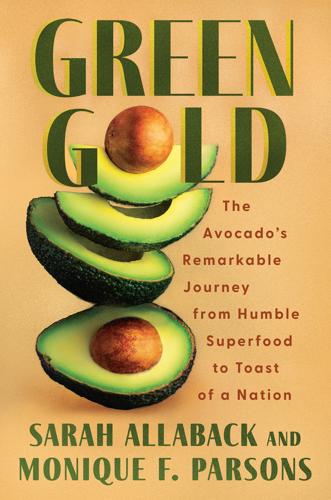
Green Gold
by
Sarah Allaback
Published 14 Mar 2025
As the world’s largest avocado supplier, Mexico has come under scrutiny for the avocado’s environmental impact on protected forests in Michoacán.27 Seven months after the congress, the advocacy group Climate Rights International published a report showing that between 2014 and 2023, more than 25,000 acres of forestland had been cleared in Michoacán to make way for avocado orchards, including 817 orchards planted in violation of Mexican law.28 In addition to including emotional testimony from small farmers and climate activists in the region, the report, “Unholy Guacamole,” compared Google Earth satellite images with the 50,000 USDA-certified orchards permitted to export avocados to the United States and found that neither U.S. nor Mexican officials were enforcing policies to protect the region’s forests. A 2022 study by researchers at the University of Texas and the Universidad Nacional Autónoma de Mexico in Michoacán predicted that in the worst-case scenario, by 2050, deforestation in the state’s “avocado belt” would grow by about 386 square miles, a 74 percent increase since 2017.
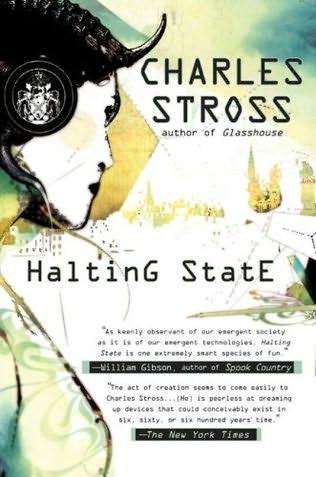
Halting State
by
Charles Stross
Published 9 Jul 2011
“You might find this interesting.” “Uh, what?” He’s grinning. “I logged in before I got here.” He points to a big aerial photograph of a city, something like a spy satellite image. “While I was stuck on the bus, I wrote a plug-in to map the IP addresses of the auction site users into an overlay for Google Earth. I figured that being able to visualize where they were would be…well. It’s not guaranteed accurate—they could be tunnelling in from elsewhere, or covering their trail in some other way—but what I found was interesting.” He flicks a couple of commands at the air, and the pointer tracks across the screen as the image zooms in until you’re looking at a gleaming metal building that looks like a gigantic wood-louse.

The Docks
by
Bill Sharpsteen
Published 5 Jan 2011
(While everyone I talked to is convinced that photography suggests behavior that warrants closer inspection, according to security expert Bruce Schneier, the idea that terrorists first photograph their intended target is “nonsense.” Of all the recent major attacks, as well as the less publicized ones, he writes, “Real terrorists╯.╯.╯. don’t seem to photograph anything.” As Wiedenhoeft concedes, terrorists can go to Google Earth to get all the views they need.) The Coast Guard also relies on its auxiliary, a nationwide volunteer band of thirty-one thousand civilians who, for the price of a tank of gas for their boats, work with the Coast Guard in nonmilitary and non– law enforcement activities such as search and rescue operations and, of course, patrolling the waters for “suspicious activity.”

The End of Illness
by
David B. Agus
Published 15 Oct 2012
We don’t know necessarily what all of these features (i.e., the dots and flecks) are, but we can identify many thousands of them as known proteins, and we now have genes associated with them. Often that means we know something about their function, such as a protein that aids in the metabolism of caffeine, or where the proteins are created in the body (e.g., the stomach), and so on. A good analogy to use in understanding the power of this technology is to think of Google Earth on steroids. We can zoom in on a single dot, identify that dot as a protein found in cold-water fish, and infer that the person could have eaten salmon or halibut for lunch. Of course, we would want to make more useful and insightful conclusions, such as whether a certain protein points to something abnormal going on in the body, or a strange pattern of proteins that forecasts disease.
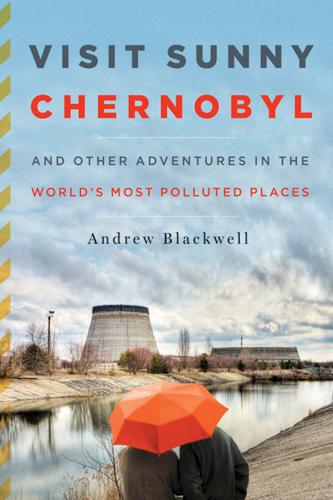
Visit Sunny Chernobyl: And Other Adventures in the World's Most Polluted Places
by
Andrew Blackwell
Published 22 May 2012
Every minute on the water, every thirty seconds, a bottle, a bucket, a piece of tarp, a sprinkle of confetti, multiplied by the countless square mileage of the Gyre. And yet if you looked across the surface of the ocean, it was unremarkable. Would-be debunkers need not resort to pointing out, as they do, that you can’t find an image of the Garbage Patch on Google Earth. They should point out that you can’t find images of the Garbage Patch anywhere. This is because it isn’t a visual problem, and this conflict between the reality of the problem and its nonvisual nature is at the root of the plastic island misconception. A metaphor is needed, a compelling image to suggest the scale and mass of the problem.
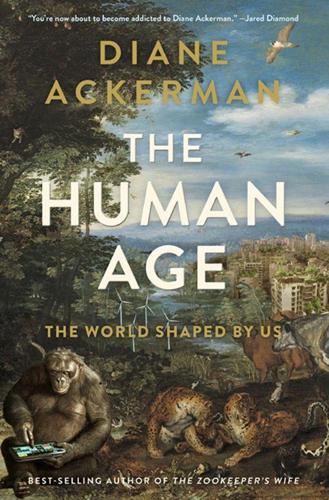
The Human Age: The World Shaped by Us
by
Diane Ackerman
Published 9 Sep 2014
Darting around the world to view postage-stamp-size versions of wild animals that are oblivious to the video camera is the ultimate cinema verité, and an odd shrinking and flattening of the animals, all of whom seem smaller than you. Yet I rely on virtual nature to observe animals I may never see in the wild. When I do, abracadabra, a computer mouse becomes a magic wand and there is an orphan wombat being fed by wildlife rescuers in Australia. Or from 308 photos of cattle posted on Google Earth I learn that herds tend to face either north or south, regardless of weather conditions, probably because they’re able to perceive magnetic fields, which helps them navigate, however short the distance. Virtual nature offers views and insights that might otherwise escape us. It also helps to satisfy a longing so essential to our well-being that we feel compelled to tune in, and we find it hypnotic.
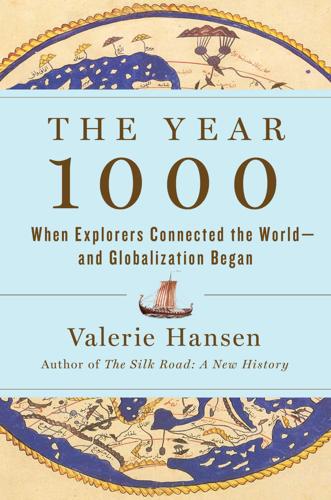
The Year 1000: When Explorers Connected the World―and Globalization Began
by
Valerie Hansen
Published 13 Apr 2020
An imperial fleet of 317 ships: G. F. Hourani, Arab Seafaring in the Indian Ocean in Ancient and Early Medieval Times (1951): 61. Chinese-language inscriptions: J. V. G. Mills, Ying yai sheng lan: “The Overall Survey of the Ocean’s Shores,” [1433] (1970): 6, 11, 12, 49, 59, 138. covering 8,000 miles Luke Stanek used Google Earth Pro software to calculate these distances. Portuguese concentrated on exporting gold: Pierre Vilar, A History of Gold and Money, 1450–1920, trans. Judith White (1976): 57. Epilogue malaria: Daniel Headrick, The Tools of Empire: Technology and European Imperialism in the Nineteenth Century (1981): 58–79.
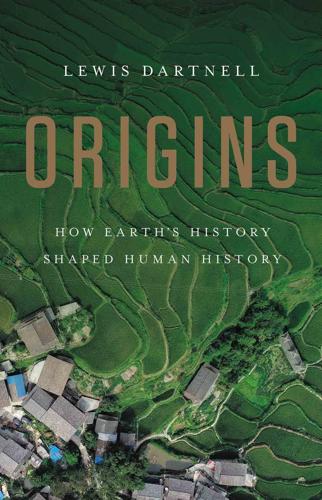
Origins: How Earth's History Shaped Human History
by
Lewis Dartnell
Published 13 May 2019
Welsh slate supplied the expanding industrial cities throughout the nineteenth century and to this day these thin wafers of the Cambrian Period cap buildings across Britain.35 The rocks of different regions around the world have been important not just for providing the raw materials for our construction projects throughout history: the underlying geology has also determined how our modern cities have developed. If you can remember a trip to Manhattan, or visit it now with Google Earth, you’ll see that there are two main areas of towering skyscrapers: the dense cluster of the downtown financial district on the southern tip of the island; and Midtown, sporting the Chrysler Building, Empire State Building and the Rockefeller Center. Between these two nodes of ultra-highrise edifices lies a spread of lower buildings.

Blood and Oil: Mohammed Bin Salman's Ruthless Quest for Global Power
by
Bradley Hope
and
Justin Scheck
Published 14 Sep 2020
Saudi Arabia, Mohammed realized, had been stuck in the same old habits for a half century. It pumped oil, sold it, and spent the money buying things from elsewhere. Only now the kingdom’s population was growing rapidly, while the oil—or at least the international demand for it—was running out. One evening, while mulling those challenges, Mohammed opened a Google Earth map of the kingdom on his computer screen. Staring at an image of his country from space, he scanned the Arabian Peninsula, from Jeddah and Mecca in the west, across the Empty Quarter, to the eastern oil fields of Dhahran, and wondered what he was missing. What opportunities for progress might be hidden in the desert?
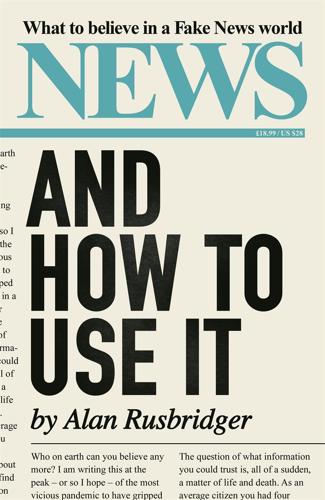
News and How to Use It: What to Believe in a Fake News World
by
Alan Rusbridger
Published 26 Nov 2020
In no time at all he found that one photograph hadn’t been taken in Venice, but from Fondamenta degli Assassini in Burano. Then he set to work on a less obvious picture of a pair of swans, with little in the background to assist location. He had to find three buildings, painted orange, red and pink – in that order. This time he turned to Google Earth, which can show landscapes and enables searching on a larger scale than Street View. Higgins was live-tweeting this search and, within seven minutes, the power of the crowd enabled one of his followers to find the combination of buildings. That one solved, he turned to a picture of an undistinguished bridge with fish apparently swimming under it.
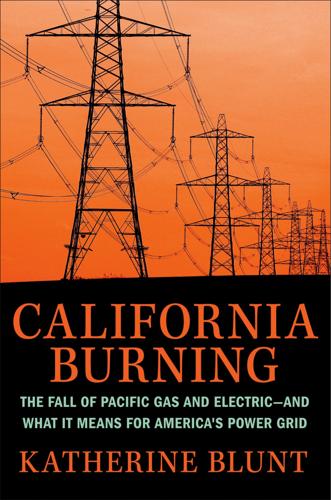
California Burning: The Fall of Pacific Gas and Electric--And What It Means for America's Power Grid
by
Katherine Blunt
Published 29 Aug 2022
PG&E announced its earnings would fall short of analysts’ expectations in the fourth quarter of 2007 and said it expected future savings to be as much as $285 million less than forecast. Workers, meanwhile, were fuming. Almost everything had broken down during transformation. Accenture had attempted to centralize dispatch centers but failed to outfit them with the necessary technology, forcing dispatchers to rely on MapQuest and Google Earth to find where crews were supposed to be performing work. A new design tool meant to make work easier didn’t jibe with PG&E’s system. An effort to improve the way the company used its truck fleet created more problems than it solved. Even payroll had gotten bungled, making the workers angrier still.
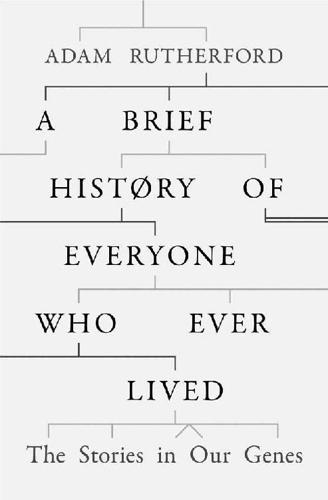
A Brief History of Everyone Who Ever Lived
by
Adam Rutherford
Published 7 Sep 2016
Ultimately, we only saw the picture of how things really are in 1968 when Apollo 8 astronaut Bill Anders took the first decent photo of the Earth as it rose above the Moon. In that picture we saw the world for what it is. In the images of home that have been captured since, from the International Space Station, from satellites, and now so casually from software like Google Earth, we can see every river, every hillock and mountain, every forest, city, village, house, streetlight and road. At night, the pictures taken from the Space Station show the glimmer of the city lights of every conurbation and illuminated trunk road, and the glows that flank the banks of the major rivers that like veins and arteries have fed civilization for all of human history.

With a Little Help
by
Cory Efram Doctorow
,
Jonathan Coulton
and
Russell Galen
Published 7 Dec 2010
"We're giving you a couple of days off," he said. 758 Greg felt a cold premonition that sank all the way to his balls. "Why?" Had he done something wrong? Was he going to jail? 759 "It's Maya." The man turned him around, met his eyes with his bottomless basset-hound gaze. "It's Maya. Killed herself. In Guatemala. I'm sorry, Greg." 760 Greg seemed to hurtle away from himself, to a place miles above, a Google Earth view of the Googleplex, looking down on himself and the rumpled man as a pair of dots, two pixels, tiny and insignificant. He willed himself to tear at his hair, to drop to his knees and weep. 761 From a long way away, he heard himself say, "I don't need any time off. I'm OK." 762 From a long way away, he heard the rumpled man insist. 763 But one-pixel Greg wouldn't be turned aside.
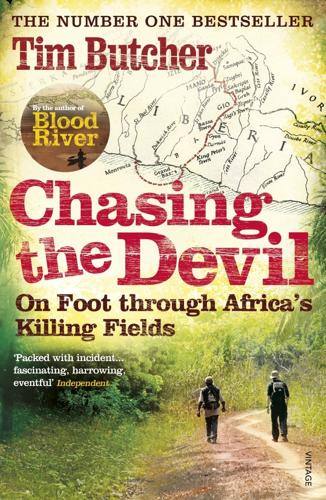
Chasing the Devil: On Foot Through Africa's Killing Fields
by
Tim Butcher
Published 1 Apr 2011
It is a simple enough design with two rocky breakwaters reaching out into the Atlantic and a few wharves, but in the absence of any other major ports in the area it became known as the place for ships to go to in times of trouble. Today a huge Soviet-era trawler from the 1980s, so large you can see it clearly on Google Earth, rots quietly in the tropical sun where it was run aground next to the old commercial wharf after limping into the harbour. Nobody could tell me quite how long it had been there but it must have been many years. A seed that had germinated on one of its upper decks had had enough time to grow into a mature tree and the rust near the old Hammer-and-Sickle emblem was so advanced it had perforated plate steel into a brandy snap-like wafer.

The Costs of Connection: How Data Is Colonizing Human Life and Appropriating It for Capitalism
by
Nick Couldry
and
Ulises A. Mejias
Published 19 Aug 2019
Take any aspect of the social world, even ones for which we currently lack a causal model, and simply generate a proxy for it; there is no limit to what might work as such a proxy, and indeed the vagueness as to what is a “proxy variable” is a problem in legal proceedings that increasingly rely on them.64 So data scientists may ask: Could visual cues in Google Street View scenes be proxies of the likelihood of nearby crime? Could patterns in the distribution of more-expensive car models in Google Earth pictures be proxy demographic variables (income levels, relative poverty/wealth)? The temptation to pursue such proxy hunts is considerable, especially when public census data is costly and only intermittently collected.65 The scope for social experimentation that data relations provide to parts of the social quantification sector is huge but has sometimes proved controversial.66 Privacy concerns may act as a constraint, but, if so, China’s assumed lower sensitivity to privacy concerns works as a market advantage for its AI industry.67 Collect Everything If Big Data reasoning relies on the predictive power that comes from repetitive processing of unstructured data, this data can be generated, directly or indirectly, from whole populations.

Life on the Rocks: Building a Future for Coral Reefs
by
Juli Berwald
Published 4 Apr 2022
He decided to couple his expertise in advertising with his longtime love of diving, establishing a nonprofit called The Ocean Agency to bring attention to the declines he’d seen on the reefs over the years. A major issue, Richard recognized, was that the corals are hidden; often invisible. You have to get wet to see them. How could he get them noticed? Richard approached Google Earth and asked if they wanted to develop the equivalent of Google Street View for the underwater world. Google agreed the idea was a good one but asked Richard to find a partner, which he did in an insurance company called XL Catlin. Because XL Catlin’s business was risk, they asked him to tie the project to their mission.
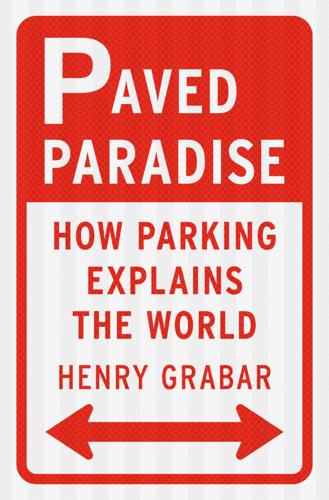
Paved Paradise: How Parking Explains the World
by
Henry Grabar
Published 8 May 2023
Ten additional Dodger Stadiums would fit inside the ballpark’s parking lot. In the mid-aughts, when the team of programmers at Maxis were working on the first new SimCity in a decade, they studied American municipal architecture, politics, and urban design to try to produce a compelling simulacrum. Lead designer Stone Librande used Google Earth to measure his surroundings. The biggest surprise he found was the size of the parking lots. “When I started measuring out our local grocery store, which I don’t think of as being that big, I was blown away by how much more space was parking lot rather than actual store,” he said. “That was kind of a problem, because we were originally just going to model real cities, but we quickly realized there were way too many parking lots in the real world and that our game was going to be really boring if it was proportional in terms of parking lots.”

The Secret World: A History of Intelligence
by
Christopher Andrew
Published 27 Jun 2018
The extent of Stalin’s Terror was so little understood that, when Robert Conquest revealed its scale and horror thirty years later, his now celebrated book provided widespread surprise and significant scepticism.93 By contrast, in July 2017 an NGO based in Seoul, the Transitional Justice Working Group (TJWG), published a report on Kim Jong-un’s even more horrific Gulag entitled Mapping Crimes against Humanity in North Korea, based on interviews with 375 escapees (most of whom were not identified in order to protect their relatives). With the help of Google Earth imagery (not, of course, available in the Stalin era), the defectors and refugees were able to identify 333 killing sites as well as to give details of some of the horrors perpetrated in them. A smaller number of escapees were among those who gave evidence in 2014 to a UN commission of enquiry which reported ‘systematic, widespread and gross human rights violations’.
…
Three other books are based on secret exfiltration of additional important material from KGB foreign-intelligence files: Andrew and Gordievsky (eds.), Instructions from the Centre and More Instructions from the Centre; Haynes, Klehr and Vassiliev, Spies. 92. Andrew and Mitrokhin, Mitrokhin Archive, ch. 15. 93. Conquest, Great Terror. 94. Conor Gaffey, ‘North Korean Defectors are Using Google Earth to Identify Killing Sites and Mass Graves in Kim Jong Un’s Totalitarian State’, Newsweek, 21 July 2017. United Nations, Human Rights Council, Report of the Commission of Inquiry on Human Rights in the Democratic People’s Republic of Korea. UN doc A/HRC/25/CRP. 1, 7 February 2014 Amnesty International Annual Report 2016/17; https://www.amnesty.org/en/countries/asia-and-the-pacific/north-korea/report-korea-democratic-peoples-republic-of/. 95.
…
V., 438 Gerlach, Leopold von, 394 German Confederation (Deutscher Bund), 368–9, 371–3, 384–5, 387–8, 391, 398 German Democratic Republic, 692*, 695–6, 698 Germania (Roman province), 70–71, 74 Germanicus (nephew of Tiberius), 71 Germany ‘blank cheque’ to Vienna (July 1914), 488 British intelligence on German WW1 operations, 522–4 British military/naval attachés in (pre-First World War), 482 during ‘July Crisis’ (1914), 492–4 First World War aid to Bolsheviks in Russia, 544–7 First World War military intelligence, 519–20, 530, 531 loss of First World War military records, 488–9 military collapse at end of First World War, 572 naval mutinies (November 1918), 571 pre-First World War military intelligence, 453–5 pre-First World War naval expansion, 472, 477 Russian decrypts of despatches, 454–6, 470–71, 478, 485–6 sabotage operations in neutral USA (First World War), 520, 521, 522, 527, 528, 542, 604 ‘Schlieffen Plan’, 465–6, 494–5 SIGINT agency established (First World War), 497–8, 502 unrestricted U-boat warfare in First World War, 537, 543–4 Versailles Treaty restrictions on, 573 Versailles war reparations, 585 Weimar Republic, 573, 759–60 see also Nazi Germany Gerolymatos, André, 30–31* Gershuni, Grigory, 437 Giancana, Salvatore ‘Sam’, 63 Giavarina, Francesco, 227 Gifford, Gilbert, 161, 176 Gilbert, Sir Martin, 671 Giles, Dr Lionel, 66 Gisevius, Hans-Bernd, 656* Giustiniani, Sebastiano, 125–6 Given-Watson, Chris, 159* Gladstone, William Ewart, 421–2, 427 Gladwell, Malcolm, 747 Gleichen, Lord Edward, 449, 452 ‘Glorious Revolution’, English (1688), 249–51 Godfrey, Admiral John, 610 Godfrey, Sir Edmund Berry, 239 Godunov, Boris, 154–7 Godunov, Semen Nikitich, 156, 157 Goebbels, Joseph, 648 Goffe, Thomas, 235 Goldbach, Christian, 277 Goldheim, Friedrich, 394 Golovin, Petr, 155‡ Goltz, Baron Bernhard von der, 291 Gonse, General Charles-Arthur, 462 Google Earth imagery, 751 Gorbachev, Mikhail, 684, 697†, 698, 699–700, 704, 706 Gorchakov, Prince Mikhail, 456 Gordian I, Roman emperor, 72 Gordievsky, Oleg, 696–7, 713–14 Gore, Al, 723 Göring, Hermann, 741–2 Gorsky, Anatoly Veniaminovich, 621, 650, 663 Görtz, Georg Heinrich von, 271 Goths, 79–80, 81 Gough, General Sir Hubert, 563 Gournay-sur-Aronde (Oise), 49* Government Code and Cypher School (GC&CS), 576, 577–80, 583, 584–5, 612, 644 Baldwin government indiscretion (1927), 583–4, 616–17 Enigma machine ciphers cracked (1940–42), 616–17 Japanese decrypts by in 1920s/30s, 585, 590 Gower, Earl, 313, 314, 316, 324* Grabež, Trifko, 444–5, 447 Graham, Sir James, 381, 382 Grand Duke Nikolai Nikolyaevich, 575 Grant, Colquhoun, 361 Grant, Ulysses S., 413–14, 423 Granville, Earl, 421–2 Grasse, Admiral de, 307 Gratian, Western emperor, 81 Great Exhibition (London, 1851), 391–2 Greece, ancient, 2, 27–9 Alexander the Great, 37–9, 45–6, 333 and military intelligence, 30–31, 33–6 oracles, 30, 31–2, 32†, 43, 44, 73, 78 Peloponnesian War, 3, 29, 32–5 Persian Wars, 2, 29–31 seers and diviners, 30–31, 35–7, 54–5 Greene, Graham, 593 Greene, Mary, 238 Greenglass, David, 668 Gregory IX, Pope, 102, 105 Gregory XIII, Pope, 161 Gregory XIV, Pope, 138* Greif, Police Lieutenant, 392 Grenville, Lord, 317, 327, 330, 333, 335 Grenville, Sir John, 230 Grew, Joseph C., 629 Grey, Sir Edward, 458, 480, 490, 494 Grey, Nigel de, 518, 536, 542 Grigulevich, Iosif, 63, 622, 623–4, 681, 682 Gromyko, Andrei, 689 Guadalcanal, Solomon Islands, 638 Guaras, Antonio de, 167 Guardian newspaper, 535–6, 746, 747 Guatemala, 679 Guerchy, comte de, 293 Guiscard, Antoine de, 265–7 Guise, Duke of, 174, 175, 183 Gulag, Soviet, 26, 378, 602, 751 use of term ‘Gulag’, 561* Gunpowder Plot (1605), 193–5 Gustafson, Dr Kristian, 687–8 Gustavus Adolphus, King of Sweden, 209 Gwyn, Nell, 237 Gwynne, H.
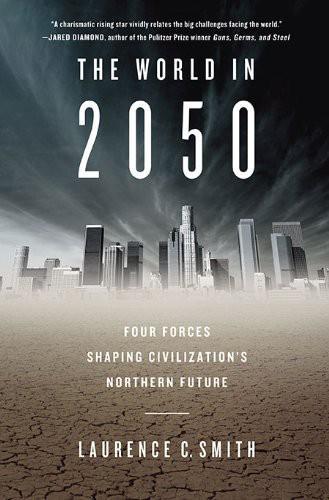
The World in 2050: Four Forces Shaping Civilization's Northern Future
by
Laurence C. Smith
Published 22 Sep 2010
Since then, we have been pumping seven trillion gallons of cold, clear water out of the Ogallala Aquifer to irrigate circular center-pivot fields of wheat, cotton, corn, and sorghum across the Great Plains. This soon transformed over one hundred million acres of highly marginal land—much of it abandoned after the 1937 Dust Bowl—into one of the world’s most productive agricultural regions. From your airplane window or a Web-browser view from Google Earth, you can see for yourself the green circles stamped out across the Texas and Oklahoma panhandles through eastern Colorado, New Mexico, and Wyoming; and running north through Kansas and Nebraska all the way to southern South Dakota. Those verdant, neatly aligned disks are the telltale fingerprints of the Ogallala Aquifer.
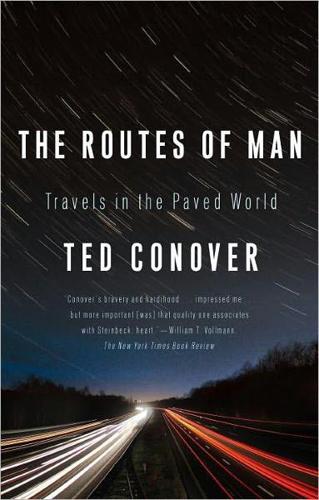
The Routes of Man: How Roads Are Changing the World and the Way We Live Today
by
Ted Conover
Published 15 Jan 2010
“Those dead rats just show it works. It’s advertising.” After my interview with the chief, in the same taxi back to Bill’s, we found ourselves in the same kind of jam. This time my way of coping, as the sides of trucks and buses replaced the view of shanties and billboards, was to imagine an aerial perspective of the mess, à la Google Earth. From above, I could see that the battle for the median strip was in a way a version of the volume control engineered in places like New York’s Tappan Zee Bridge. On the Tappan Zee, custom vehicles known as “zipper machines” move a line of concrete dividers from one side of the roadway to the other depending on which direction has the heaviest traffic; similar systems are in place in Honolulu, Dallas, Philadelphia, San Francisco (though the dividers on the Golden Gate Bridge are plastic, not concrete), Ontario, and Auckland, New Zealand.

Work Rules!: Insights From Inside Google That Will Transform How You Live and Lead
by
Laszlo Bock
Published 31 Mar 2015
Another year, Amit Singhal, our SVP of Search, recalled how, as a child in India, he watched Star Trek’s Captain Kirk direct his computer by talking to it, and how astonishing it is that Google Now allows him to do exactly the same thing. The rest of the day is filled with product demonstrations, where parents can check out our self-driving cars or stand in a twenty-foot-tall room with Google Earth projected all around them, explore the campus, and then join a special TGIF hosted by Larry and our senior team. We now host these days in more than nineteen offices, including Beijing, Colombia, Haifa, Tokyo, London, and New York City, and add more each year. Take Your Parents to Work Day isn’t about humoring helicopter parents who continue to coddle their fully grown children.

Falling Upwards: How We Took to the Air
by
Richard Holmes
Published 24 Apr 2013
XXII, November 1876, pp.685–7; partly reprinted in Crouch, and Evans Victor Debuchy, Les Ballons du siège de Paris, Editions France-Empire, Paris, 1973 Charles Dickens, ‘Vauxhall Gardens by Day’, Sketches by Boz, 1836 Charles Dickens, ‘Lying Awake’, Household Words, 30 October 1852 Linda Donn, The Little Balloonist, (a novel about Sophie Blanchard), Penguin USA, 2006 Mark Dorrian, ‘On Google Earth’, Seeing From Above: The Aerial View in Visual Culture, I.B. Tauris online publisher, 2012 Michael Doughty, ‘James Glaisher’s 1862 Account of Balloon Sickness: Altitude, Decompression Injury, and Hypomexia’, Neurology, No. 60, 25 March 2003 Arthur B. Evans, Jules Verne Rediscovered: Didacticism and the Scientific Novel, Greenwood Press, 1988 Charles M.

Cybersecurity: What Everyone Needs to Know
by
P. W. Singer
and
Allan Friedman
Published 3 Jan 2014
Groups use cyberspace as a low-cost, low-risk venue to gather intelligence in ways they could only dream about a generation ago. For example, no terrorist group has the financial resources to afford a spy satellite to scope out targets with pinpoint precision, let alone the capability to build and launch one into space. Yet Google Earth worked just as effectively for Lashkar-e-Taiba, a Pakistan-based terror group, when it was planning the 2008 Mumbai attacks. As in other areas of cybersecurity, we have to be aware of our own habits and uses of the Internet and how such bad actors might take advantage. In 2007, US soldiers took smartphone photos of a group of new US Army helicopters parked at a base in Iraq and then uploaded them to the Internet.

Happy City: Transforming Our Lives Through Urban Design
by
Charles Montgomery
Published 12 Nov 2013
The architecture firm partly responsible for the High Line, Diller Scofidio + Renfro, demonstrated this again a few dozen blocks north, in their renovation of Lincoln Center for the Performing Arts, where they created a green hillside by adding a new restaurant building to the Lincoln campus. A sloping, off-kilter roof (hyperbolic paraboloid is the technical name for the form) planted with green grass rears up from the plaza, inviting passersby to collapse on its vertical meadow. Zoom in on Google Earth, and you’ll see students from the nearby Juilliard School splayed messily across the lawn. New research takes the proximity argument further. Extreme intimacy—not just looking at nature, but actually touching or working with plants and dirt—is good for us in ways we never imagined. Biologists have found that the bacteria found naturally in soil boosts seratonin and reduces anxiety in lab mice, and they suspect that it has the same effect when breathed in or ingested by humans.

Hope for Animals and Their World
by
Jane Goodall
,
Thane Maynard
and
Gail Hudson
Published 1 Sep 2009
He is not a demonstrative man, but the excitement was clear in his voice as he explained that this was a completely new species of fan palm, the largest ever found in Madagascar—the adult leaves have a sixteen-foot diameter. Apparently the full-grown palm is so massive that it can actually be seen on Google Earth! I can just imagine the amazement of Xavier Metz, the French manager of a cashew plantation, when he and his family came upon this huge palm as they were exploring a remote area in the northwest of the country. He had never seen anything like it, and was sure it was a new species, so he took photos.

The Black Box Society: The Secret Algorithms That Control Money and Information
by
Frank Pasquale
Published 17 Nov 2014
The Center for Investigative Reporting notes that “since so many states are unlikely to be struck by terrorists, fusion centers have had to expand their intelligence mission to cover all crimes and potential hazards, partly to convince local legislators they’re worth financing with taxpayer money into the future.”160 Pork-barrel politics trumps sensible security policy. When the Alabama Department of Homeland Security started working on a Virtual Alabama database collaboration with Google Earth, for example, local police departments weren’t very supportive.161 Surveillance researcher Torin Monahan says that the problem was solved when “DHS promised to include a GIS [geospatial information system] overlay for all registered sex offenders in the state, showing exactly where each of them are supposed to be residing.”162 What began as a national homeland security project expanded into state law enforcement.

The Lie of the Land
by
Amanda Craig
Published 14 Jun 2017
‘There is absolutely nothing to do there except watch TV and get pissed. It’s basically all tiny villages one bungalow deep in village idiots, and old people waiting to die.’ Neither Bron nor Dylan had ever been into the countryside: why bother? For £30, you could catch a flight to somewhere abroad. Xan has looked at where they’re going to live on Google Earth, and the Devon and Cornwall peninsula sticking out into the Atlantic like the deformed trotter of a pig. Nobody in their right mind would want to go there. ‘Promise you’ll come and visit.’ ‘It’s, like, a long way away,’ said Dylan. ‘Maybe in summer,’ said Bron. It’s as much as any of them can manage just to get to Camden Lock by public transport, and Xan knows they never will.
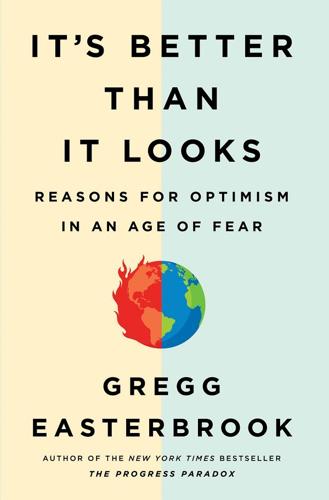
It's Better Than It Looks: Reasons for Optimism in an Age of Fear
by
Gregg Easterbrook
Published 20 Feb 2018
The new headquarters in Springfield, Virginia, of the National Geospatial-Intelligence Agency (NGA) is the third-largest US government building. Most voters don’t know the agency exists, let alone what it does. (The NGA makes hyperdetailed topographical maps, including of the private property of Americans, and at great expense compiles aerial and satellite photographs hauntingly similar to the ones Google Earth gives away free.) If security and intelligence investments have cost the United States a total of about $3 trillion since 9/11, that represents about 1.5 percent of GDP through the period. Add 1.5 percent to the US GDP, and growth would improve from pallid to bullish. Martin Dempsey, a retired Army general who was chair of the Joint Chiefs of Staff and is now a professor at Duke University, said in 2016 that resilience against terrorism—not giving up the Western way of life—is more important than physical security.
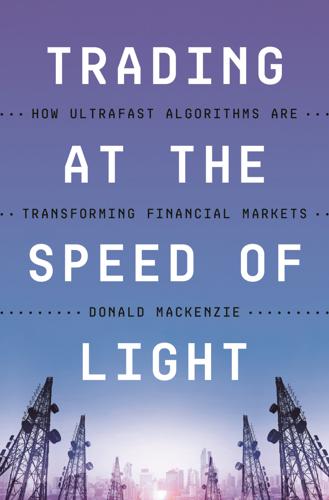
Trading at the Speed of Light: How Ultrafast Algorithms Are Transforming Financial Markets
by
Donald MacKenzie
Published 24 May 2021
The New York Stock Exchange datacenter is “one of the largest technical challenges” for millimeter-wave transmission in New Jersey, says Persico: It sits in a bowl [a shallow dip in the landscape]. Then on the rim of that bowl are old-growth forests. So there are very few ways in and out of [the New York Stock Exchange datacenter] to [NY4&5 and the Nasdaq datacenter]. There are [angles which] may be the best on a piece of paper or on Google Earth to get to your final destination, they [local communities] may let you put up a tower but you’re not touching a tree.… So … some of the very first networks were circuitous. Building a very tall tower at the New York Stock Exchange datacenter would have solved the problem of the dip in the landscape, but such a tower would have been highly visible and, says Tyč, unlikely to be permitted by the prosperous community that surrounds the datacenter.

The One Device: The Secret History of the iPhone
by
Brian Merchant
Published 19 Jun 2017
There’s also plenty of room for AI to do good—which, as a matter of fact, is why Gruber’s here. He’d come on the TED cruise to see if there were any ways he could harness his expertise to help benefit ocean conservation. So far, he’d met with teams to discuss using pattern-recognition software and Google Earth to catch poachers and polluters. “Those are kind of the superpowers that only science fiction was talking about a few years ago,” he says. So, I ask, does the co-creator of Siri use his own AI? How? “Oh, yeah, all the time,” he says. “I use it twenty to thirty times a day. I mean, I get up: What’s the traffic?
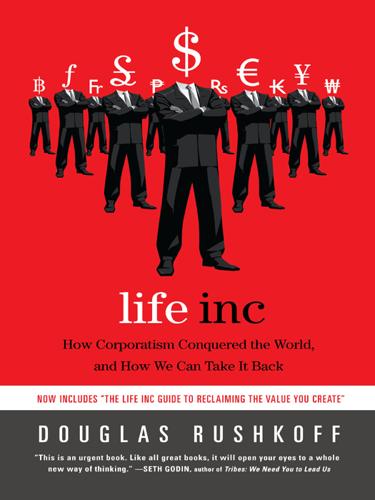
Life Inc.: How the World Became a Corporation and How to Take It Back
by
Douglas Rushkoff
Published 1 Jun 2009
The monarchy’s slow but eventually wholehearted acceptance of cause-and-effect logic and scientific observation might have been great for curbing magical thinking and superstitious activity, but it could just as easily be abused to categorize foreign peoples the way a biologist might categorize any “inferior” species, and foreign places as wilds to conquer. Royals went map crazy. Cartography was as much the rage in the Renaissance as MapQuest and Google Earth are today. Nearly every ship had a cartographer aboard to map new regions of the world and, of course, label them as belonging to whichever kingdom had chartered the voyage. Mapping a territory meant documenting one’s control of it—whatever the reality might have been on the ground. Eventually, the mapmaking fetish turned inward as well, as monarchs attempted to map the entirety of Europe and determine who owned exactly what.

Apocalypse Never: Why Environmental Alarmism Hurts Us All
by
Michael Shellenberger
Published 28 Jun 2020
Syarifah Nur Aida (journalist, Ipeh) in discussion with the author, June 8, 2015. 15. Suparti (factory worker) in discussion with the author, June 8–9, 2015. 16. Ibid. 17. Xiaoping Liu, Guohua Hu, Yimin Chen et al., “High-Resolution Multi-temporal Mapping of Global Urban Land Using Landsat Images Based on the Google Earth Engine Platform,” Remote Sensing of Environment 209 (May 2018): 227–39, https://doi.org/10.1016/j.rse.2018.02.055. 18. Christopher D. Elvidge, Benjamin T. Tuttle, Paul C. Sutton et al., “Global Distribution and Density of Constructed Impervious Surfaces,” Sensors 7, no. 9 (2007): 1962-79, https://dx.doi.org/10.3390%2Fs7091962. 19.
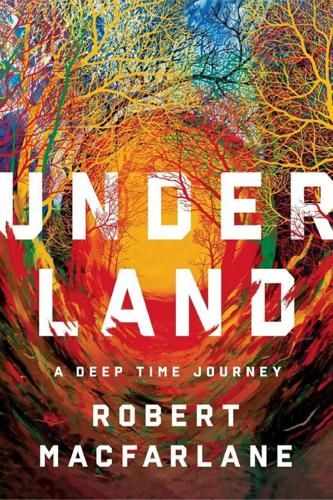
Underland: A Deep Time Journey
by
Robert Macfarlane
Published 1 May 2019
But right now we need to find our bivouac site for tonight. I’d much rather be sleeping on rock than on ice.’ Where a tributary glacier sweeps down to pour into the Knud Rasmussen, a small rock island has been revealed. It is a recent artefact of the increased melt rates – an Anthropocene landmark not present on any existing maps, even on Google Earth – and it sticks out like a boulder in an ice-rapid where the tributary glacier tumbles 400 vertical feet to the Knud Rasmussen. We spot it from two miles away; wonder if it might give enough flat ground on which to camp. Near dusk, we climb a slope of grey ice to reach it. Certainly, we are the first people ever to set foot on that new world, disclosed from the underland of ice.
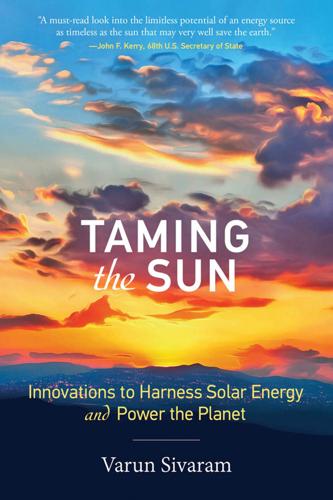
Taming the Sun: Innovations to Harness Solar Energy and Power the Planet
by
Varun Sivaram
Published 2 Mar 2018
The next day, when I arrived for a meeting in the energy ministry, I ran into Raman, who was making the rounds before bidding in a major government auction. A few days later, Softbank won a major contract to build a utility-scale PV project in the Indian state of Andhra Pradesh. Within a year, Raman triumphantly sent me a Google Earth satellite photo of three adjacent project sites. Two were barren—waiting to be built on by slow-moving local firms—but Softbank’s site already brimmed with 350 MW of installed solar panels. Aside from Softbank, other global technology companies have entered the renewable energy business. As of 2016, Apple, Google, and Amazon had all created energy subsidiaries and were aggressively investing in powering their data centers with wind and solar power to reduce exposure to volatile and rising electricity costs.57 Outside the tech world, MGM Resorts, which owns much of the Las Vegas strip, defected from NV Energy, the regulated utility owned by Warren Buffett.
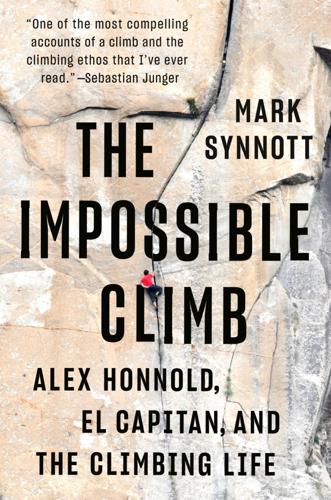
The Impossible Climb: Alex Honnold, El Capitan, and the Climbing Life
by
Mark Synnott
Published 5 Mar 2019
Closer by, a man was spread-eagled in a tree twenty feet in the air whacking walnuts to the ground with a long stick. Sounds of a bustling village filled the air: children playing, babies crying, the bray of donkeys, dogs barking, the constant buzzing of insects. I knew, from having studied the High Atlas Mountains on Google Earth before the trip, that the vast wasteland of the Sahara lay just on the other side of the mountains that rose behind the gîte. More desert lay to the north, east, and west, but Taghia, fed by a fabled spring called the Source, is an oasis. I was trying to figure out the line for a famous route called Babel that climbs the left side of Taghia’s version of El Capitan, a 2,800-foot cliff called Tagoujimt n’Tsouiant, when I noticed two young women marching purposefully down a switchback cut into the slope below the mountain.
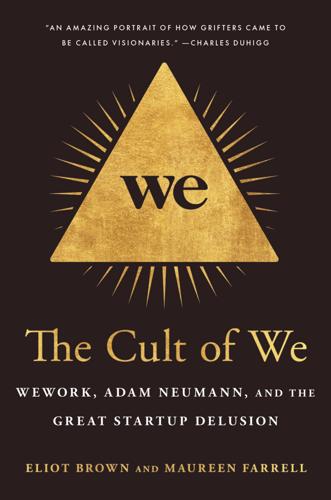
The Cult of We: WeWork, Adam Neumann, and the Great Startup Delusion
by
Eliot Brown
and
Maureen Farrell
Published 19 Jul 2021
Roni Bahar, an energetic self-starter who oversaw the design and development of new offices at WeWork, saw potential in Case early on and shoveled more and more work its way as the WeWork wheels kept turning faster. The firm built software for WeWork to better plan projects and timelines, helping turn WeWork into a machine that could quickly spit out plans for new offices. Bahar commissioned Case to make a Google Earth–like interactive map that Neumann could show to investors, integrated with buildings in every city, with projections of how many members and how much revenue WeWork could get from cities around the world. It showed the potential of diving deeper with the Case team, which Bahar wanted to acquire.

The Rough Guide to Cyprus (Travel Guide eBook)
by
Rough Guides
Published 30 Apr 2019
As you work north from the south, a series of “houses” is identified by what was found in them – the House of the Bronzes, the House of the Pillar, the House of the Horned God (all to the left as you approach along the path) and the Sanctuary of the Ingot God, another house in which many bronze objects were found. Further north is the main site of the extensive copper works. The best view of the site is from the air – if you can’t afford to hire a helicopter, take a look on Google Earth. The Karpaz Peninsula Famous for its wild donkeys and relatively little else, the Karpaz Peninsula (Kirpaşa) stretches for 70km, a tapering finger of land pointing northeast towards Turkey and Syria. One of the most sparsely settled places on the island, road improvements have now made it more readily accessible and holiday villages are springing up along its otherwise pristine beaches.
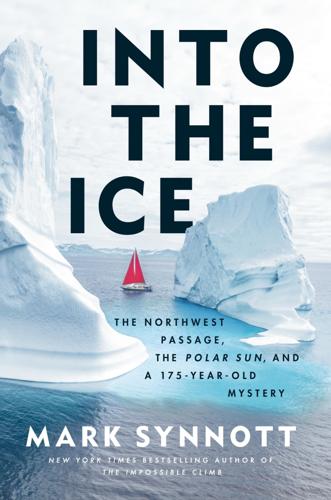
Into the Ice: The Northwest Passage, the Polar Sun, and a 175-Year-Old Mystery
by
Mark Synnott
Published 14 Apr 2025
I owe a lot to Sam because not only did he refrain from laughing me out of the water; he sent me his logbook, which contained a literal treasure trove of data detailing his ninety-day voyage in three-hour increments, including latitude/longitude, water temperature, track (heading), wind speed, boat speed, barometric pressure, sail plan, battery levels, engine hours, and more. Sitting down with his log and Google Earth, I was able to see exactly where he had been and when and roughly what the conditions had been like. Later, Sam would gift me all his paper charts from the Northwest Passage (worth thousands of dollars), which he hand-delivered to Polar Sun. According to Sam, a metal hull, either steel or aluminum, was definitely the preferred choice for sailing amongst ice, but he didn’t consider a fiberglass boat to be a deal-breaker.

The Rough Guide to Cyprus
by
Rough Guides
Published 2 Feb 2025
As you work north from the south, a series of “houses” is identified by what was found in them – the House of the Bronzes, the House of the Pillar, the House of the Horned God (all to the left as you approach along the path) and the Sanctuary of the Ingot God, another house in which many bronze objects were found. Further north is the main site of the extensive copper works. The best view of the site is from the air – if you can’t afford to hire a helicopter, take a look on Google Earth. St Barnabas and the Church of Cyprus One of the great figures of early Christianity, St Barnabas, was a Jew, born in Salamis, who became one of the earliest converts to the new religion and founded the Cypriot Church. Together with his cousin Mark the Evangelist and the pivotal St Paul, he travelled extensively in both Cyprus and Asia Minor, spreading the gospel.
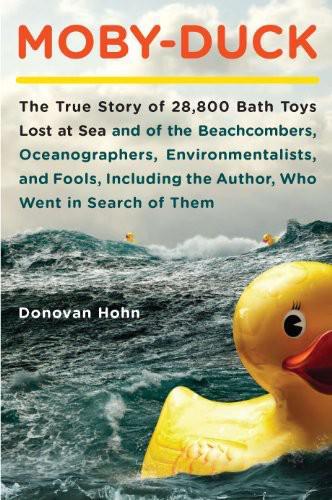
Moby-Duck: The True Story of 28,800 Bath Toys Lost at Sea and of the Beachcombers, Oceanographers, Environmentalists, and Fools, Including the Author, Who Went in Search of Them
by
Donovan Hohn
Published 1 Jan 2010
The Coast Pilot is the navigator’s most trusted guide to America’s territorial waters, which radiate from the land like a blue nimbus two hundred miles thick. Anyone worried that the Image has vanquished the Word can seek solace in its pages. All nine volumes are marvelous documents, each paragraph distilling centuries of firsthand observations made by both sailors and scientists. They are like literary atlases, those nine volumes, literary Google Earths, translating the great big mysterious world into detailed descriptive prose. In addition to harbors and landings and facilities and interesting geographic features, the Coast Pilot alerts mariners to assorted perils of the sea, and if Chris Pallister or I had brought along volume 9, and if we’d turned to chapter 4, page 197, we would have come upon a note warning us about the perilous “tide rips with steep, short choppy seas . . . 3 to 5 miles S of Gore Point.”
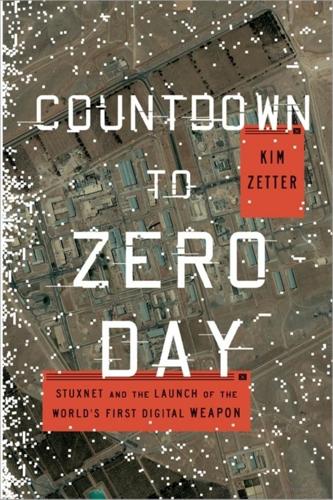
Countdown to Zero Day: Stuxnet and the Launch of the World's First Digital Weapon
by
Kim Zetter
Published 11 Nov 2014
About two months after the press conference, armed with the details from Jafarzadeh and extensive additional research, Hinderstein logged into their account at Digital Globe, one of two commercial providers of satellite images in the United States, to scour the archive for available images.8 Today, satellites have imaged nearly every part of the Earth, with most pictures available to anyone via Google Earth. But in 2002, the only way to find images in Digital Globe’s archive was if someone had already commissioned the company to photograph a site, or if Digital Globe had taken images of a location on its own initiative, such as Niagara Falls or the Grand Canyon—images the company knew would sell well.

How to Change Your Mind: What the New Science of Psychedelics Teaches Us About Consciousness, Dying, Addiction, Depression, and Transcendence
by
Michael Pollan
Published 30 Apr 2018
I had this overwhelming feeling—it wasn’t even a thought—that everything and everyone needs to be approached with love, including myself.” Ian enjoyed several months of relief from his depression as well as a new perspective on his life—something no antidepressant had ever given him. “Like Google Earth, I had zoomed out,” he told Watts in his six-month interview. For several weeks after his session, “I was absolutely connected to myself, to every living thing, to the universe.” Eventually, Ian’s overview effect faded, however, and he ended up back on Zoloft. “The sheen and shine that life and existence had regained immediately after the trial and for several weeks after gradually faded,” he wrote one year later.

Track Changes
by
Matthew G. Kirschenbaum
Published 1 May 2016
Scholars interested in questions such as these for literary manuscripts that now exist only as document folders on hard drives or data in the “cloud” will one day have to come to terms with the particulars of different operating systems, software versions, and hardware protocols, as well as the characteristics of a variety of different hard-copy output technologies, from dot matrix and daisywheel to inkjet and laser printer.77 All of these problems and possibilities depend not just on our knowledge of “computers” or “word processors,” but also on our knowledge of very specific products and technologies. Twenty years ago, just at the moment of the Web’s apotheosis, Sven Birkerts first gazed at the spinning globe in the corner of the old Netscape Navigator browser and counseled his readers to “refuse it.”78 In a much more recent essay he meditates on Joseph O’Neill’s use of Google Earth (whose default view is similarly the planet as seen from space) as a literary device at the end of his 2008 novel Netherland. Birkerts finds the literary image conjured by the technology compelling, so much so that he briefly considers installing the software on his own computer; but once again he opts to refuse it, reaching out to click but then withdrawing his hand: “The fact that such a power is available to the average user leaches from the overall power of the novel-as-genre,” he concludes.79 Say what one will, but this seems to me a dim view of that genre’s contemporary relevance if maintaining its vitality somehow depends on keeping readers an arm’s length from the very subjects it seeks to encompass.

Lonely Planet Southern Italy
by
Lonely Planet
Take a brief look at the ruined 5th-century BC 6Tempio dei Dioscuri and the 6th-century BC complex of altars and small buildings known as the 7Santuario delle Divine Chtoniche, before ending your visit in the 8Giardino della Kolymbetra, a lush garden in a natural cleft near the sanctuary, with more than 300 (labelled) species of plants and some welcome picnic tables. 4Sleeping oPortAteneaB&B€ (map Google map; %349 0937492; www.portatenea.com; Via Atenea, cnr Via Cesare Battisti; s/d/tr €50/75/95; aW) This five-room B&B wins plaudits for its panoramic roof terrace overlooking the Valley of the Temples, and its superconvenient location at the entrance to the old town, five minutes’ walk from the train and bus stations. Best of all is the generous advice about Agrigento offered by hosts Sandra and Filippo (witness Filippo’s amazing Google Earth tour of nearby beaches!). oFattoria MosèAGRITURISMO€ (%0922 60 61 15; www.fattoriamose.com; Via Pascal 4a; r per person €55, incl breakfast/half board €65/93, 2-/4-/6-person apt per week €550/850/1100; s) If Agrigento’s urban jungle has got you down, head for this authentic organic agriturismo (farm stay) 6km east of the Valley of the Temples.

The Disappearing Act
by
Florence de Changy
Published 24 Dec 2020
However, it is to be noted that the flight path to the Southern Indian Ocean is one of many flight paths that were recovered from the flight simulation data.’ This comment in itself was highly problematic. I then came across the graph where the coordinates had been joined up and placed on the background of a Google Earth image so that this reconstructed flight path looked incredibly similar to that of the official Inmarsat version. The issue was that these ‘points’ were not supposed to be related to each other. They were fragments of files. Their technical parameters (altitude, fuel reserve, heading and so on) were grossly inconsistent with one another and nothing indicated that they ever belonged to the same flights.

Hope Dies Last: Visionary People Across the World, Fighting to Find Us a Future
by
Alan Weisman
Published 21 Apr 2025
Every inch of Bangladesh that’s above water is occupied or cultivated. With 175 million people in a country the size of Iowa (population 3 million), except for microstates, Bangladesh is the planet’s most densely populated nation—more than twice as packed as Europe’s most crowded sizable country, the Netherlands. Besides, one glance at Google Earth reveals the extent of Banishanta’s rice paddies. Nevertheless, Bangladesh had recently purchased two Chinese dredgers, and one was parked in front of the village. The idea, the government announced, was to make the Pashur navigable for heavy barge traffic to serve a new economic free zone in Mongla, which would bring jobs to the region.
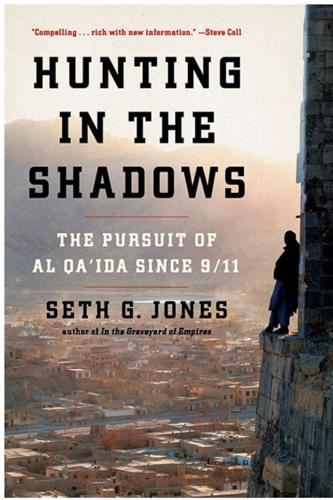
Hunting in the Shadows: The Pursuit of Al Qa'ida Since 9/11: The Pursuit of Al Qa'ida Since 9/11
by
Seth G. Jones
Published 29 Apr 2012
“Right now in Trinidad,” Abdul Kadir explained to Taveras in a phone call recorded by the FBI, it “is hot, with respect to national security, and the international security.” Kadir, who was clearly frazzled, offered some advice: “When you’re traveling, do not walk with anything that can implicate you. Remember the copies that you had?” he inquired, possibly referring to the downloaded Google Earth images of JFK Airport. “It will be advisable not to walk with that, just in case they decide to search you in Trinidad. Because if they search you and they find that, you have to explain to them what you’re doing with that.”90 By June 1 the plot had developed far enough for a likely prosecution.
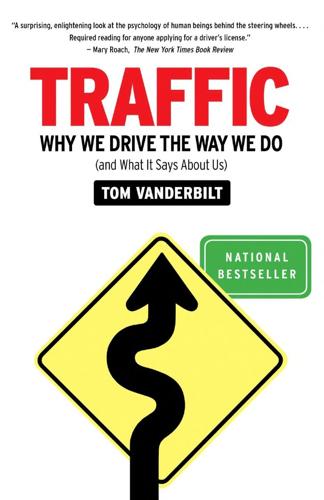
Traffic: Why We Drive the Way We Do (And What It Says About Us)
by
Tom Vanderbilt
Published 28 Jul 2008
Chances are, the row that is dead opposite the store entrance will be the most filled, with cars stretching far out along the row. In each adjacent row, there are likely to be slightly fewer cars. This pattern will continue sequentially in each row so that if one were able to gaze down at the lot from above (as anyone can with Google Earth), the cluster of cars might look, depending on the lot’s occupancy, like a giant Christmas tree or, perhaps, like a bell. If you were to further study this bell-curve arrangement, you might conclude that the cars parked in the row closest to the store entrance but farthest out along the row are actually farther from the store entrance than many of the open spaces in the rows off to the side.

Berlin
by
Andrea Schulte-Peevers
Published 20 Oct 2010
Return to beginning of chapter INTERNET RESOURCES Do your homework and check out these sites so you can hit the ground running when you get to Berlin. Websites with events listings are covered on Click here. 3D Stadtmodell (www.3d-stadtmodell-berlin.de) Take a virtual journey through central Berlin with this Google Earth–powered 3-D model of 44,000 buildings; the top 40 are covered in greater detail and four of them (the Reichstag, main train station, Sony Center and Olympic Stadium) can even be ‘entered’. Berlin Hidden Places (www.berlin-hidden-places.com) Ideas for getting off the tourist track. Berlin Tourism (www.visitberlin.com) Excellent, jam-packed, official tourist-office site; also lets you make room and ticket reservations in all major languages.
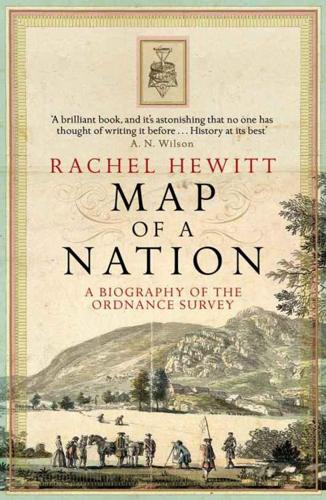
Map of a Nation: A Biography of the Ordnance Survey
by
Rachel Hewitt
Published 6 Jul 2011
Sage found that she could peek through the windows of the well-to-do, while their owners remained oblivious to her intrusion. When the balloon ‘turned on its axis’, she recalled how this ‘pleased us very much, as it presented the whole face of the country, in various points of view’. Sage’s pleasure was not so dissimilar to that of Google Earth and Google Street View users, who can simulate a flight across the earth’s digital representation, turning this way and that at will. One balloonist compared his night-time ‘Balloon-Trip’ across the capital to the experience of ‘looking down on an enormous map of London, with its suburbs to the east, north, and south, as far as the eye could reach, drawn in lines of fire!’
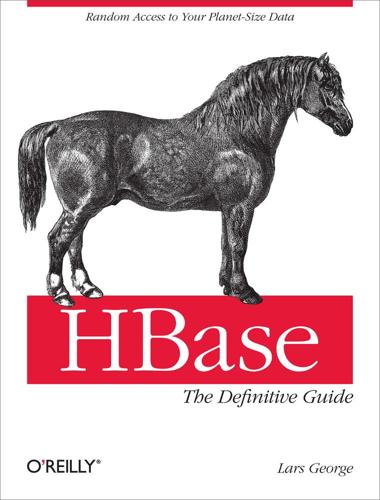
HBase: The Definitive Guide
by
Lars George
Published 29 Aug 2011
The actual Bigtable has been in production at Google since at least 2005, and it has been in use for a variety of different use cases, from batch-oriented processing to real-time data-serving. The stored data varies from very small (like URLs) to quite large (e.g., web pages and satellite imagery) and yet successfully provides a flexible, high-performance solution for many well-known Google products, such as Google Earth, Google Reader, Google Finance, and Google Analytics. * * * [22] You will see in Column Families that the qualifier also may be left unset. [23] Although HBase does not support online region merging, there are tools to do this offline. See Merging Regions. [24] For more information on Apache ZooKeeper, please refer to the official project website.
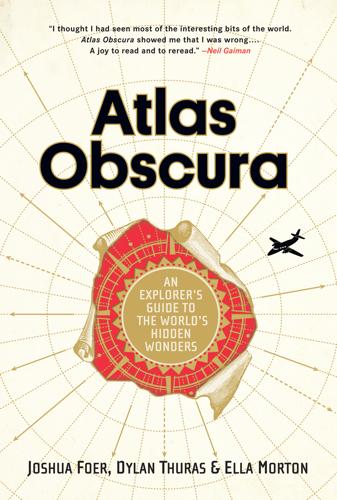
Atlas Obscura: An Explorer's Guide to the World's Hidden Wonders
by
Joshua Foer
,
Dylan Thuras
and
Ella Morton
Published 19 Sep 2016
The Badlands Guardian MEDICINE HAT Gaze out of an airplane window above the Badlands east of Medicine Hat, and a Native American chief will stare back at you. Over millennia, erosion and weathering fashioned the rocky terrain into the shape of a human head, complete with feathered headdress. A gas well and road leading down from the chief’s ear resemble earphones. An Australian woman going by the name of “supergranny” discovered the head on Google Earth in 2006. Following a naming competition, the 820 × 740-foot (250 × 225.5 m) figure came to be known as the Badlands Guardian. (Rejected monikers include Space Face, Chief Bleeding Ear, The Listening Rock, Jolly Rocker, and Pod God.) The Badlands Guardian is an example of pareidolia, the phenomenon of an overactive imagination perceiving recognizable shapes in ambiguous stimuli.

In Pursuit of Privilege: A History of New York City's Upper Class and the Making of a Metropolis
by
Clifton Hood
Published 1 Nov 2016
Hopkins Company, Atlas of Westchester County, New York, vol. 1 (Philadelphia: Hopkins, 1929), sheet 36; Sanborn Map Company, Insurance Maps of Scarsdale, NY (New York: Sanborn Map, 1921), sheets 100 and 108; Digital Sanborn Maps, 1867–1970, Summit, N.J., July 1929–January 1950, sheet 37, accessed October 21, 2012, http://sanborn.umi.com/nj/5634; and Google Earth views of sites on Onondaga Street, Ridge Street, and Evergreen Avenue, Rye, N.Y., and Morris Lane, Scarsdale, N.Y., June 28, 2013. 122. Margaret Culkin Banning, Country Club People (New York: Doran, 1923), 9, 56. 123. New York Times, March 10, 1929, August 7, 1931, August 12, 1932, June 20, 1935, May 18, 1936, May 3, July 21, and December 18, 1941, July 22 and 31, 1946, July 11, 1948; Rye Chronicle, December 29, 1944, January 5 and 13, 1945; Radcliffe, Simply Barbara Bush, 89–92; Herbert S.
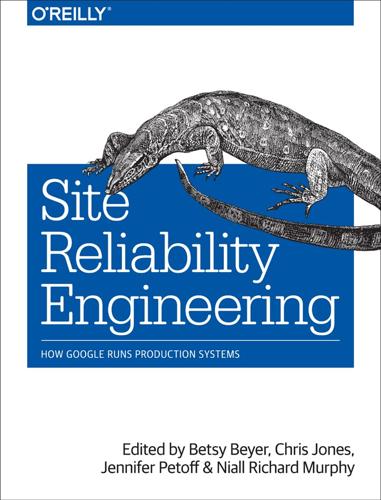
Site Reliability Engineering: How Google Runs Production Systems
by
Betsy Beyer
,
Chris Jones
,
Jennifer Petoff
and
Niall Richard Murphy
Published 15 Apr 2016
The team also curated a “launch checklist” of common questions to ask about a launch, and recipes to solve common issues. The checklist proved to be a useful tool for ensuring reproducibly reliable launches. Consider an ordinary Google service—for example, Keyhole, which serves satellite imagery for Google Maps and Google Earth. On a normal day, Keyhole serves up to several thousand satellite images per second. But on Christmas Eve in 2011, it received 25 times its normal peak traffic—upward of one million requests per second. What caused this massive surge in traffic? Santa was coming. A few years ago, Google collaborated with NORAD (the North American Aerospace Defense Command) to host a Christmas-themed website that tracked Santa’s progress around the world, allowing users to watch him deliver presents in real time.

Owning the Earth: The Transforming History of Land Ownership
by
Andro Linklater
Published 12 Nov 2013
And the prize for those able to use the mechanism was the enjoyment of a legally protected liberty that was independent of government because it originated in human existence. Section Two The Alternatives to Private Property Chapter Six What Came Before Seen from the high-definition cameras in the satellites used by Google Earth, the mountains of Sarawak that sprawl across the northern third of the island of Borneo make a lumpy, chaotic jumble. It is easy to understand why the indigenous inhabitants used to believe the land was formed when its creator idly crumpled it up like paper and dropped it into the ocean. What the cameras cannot show is that the gigantic range was until the 1980s still shrouded by dense tropical forest almost down to the coastal plain.

Spillover: Animal Infections and the Next Human Pandemic
by
David Quammen
Published 30 Sep 2012
From her place at the scope she could manipulate a cursor, a little red arrow, moving it over the field to point out what we were seeing. First she showed me a thin-slice section from a lymph node of a normal, SIV-negative chimpanzee. This was for comparison. It looked like a peat bog as viewed on Google Earth, bulging and rife with sphagnum and huckleberry, thick, rich, and riddled just slightly with narrow spaces resembling small sloughs and creeks. The tissue was stained magenta and heavily speckled with darker blue dots. The dots, Terio explained, were lymphocytes in their healthy abundance. In an area where they’re especially dense, they pack together into a follicle, like a bag full of jellybeans.

The Rough Guide to Paris
by
Rough Guides
Published 1 May 2023
Pavillon de l’Arsenal 21 bd Morland, 4e • Tues–Sat 10.30am–6.30pm, Sun 11am–7pm • Free • http://pavillon-arsenal.com • MSully-Morland The Pavillon de l’Arsenal is an exhibition centre that presents the capital’s current architectural projects to the public. There’s also a permanent exhibition on Paris’s architectural development, centring on a huge interactive screen on the floor showing Google Earth images of Paris; superimposed on it are all the major construction projects planned over the next twenty years, so you can bring up a projected image of what, for example, the Clichy-Batignolles district will look like when the new development is complete. Bastille and around A symbol of revolution since the toppling of the Bastille prison in 1789, the Bastille quarter used to belong in spirit and style to the working-class districts of eastern Paris.
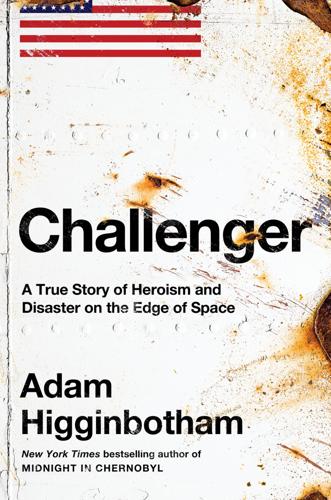
Challenger: A True Story of Heroism and Disaster on the Edge of Space
by
Adam Higginbotham
Published 14 May 2024
Despite the budget: Ibid., 245. To make this argument: Ibid., 278–81. “They start at a number”: Ibid., 284. did not yet officially exist: White, Into the Black, 36. Code-named Hexagon: McConnell, Challenger, 38; White, Into the Black, 73–74. sixty miles of film: Thom Patterson, “1970s Spy Satellite ‘Better Than Google Earth,’ ” CNN, September 1, 2016, https://www.cnn.com/2016/09/01/us/declassified-spy-satellite-hexagon/index.html. The Air Force also: Heppenheimer, The Space Shuttle Decision, 215. Yet such long-distance: Ibid., 234. Faget’s Design MSC-040C became the basis of the design: Jenkins, Space Shuttle, 79, 142–49, 201.

Dead or Alive
by
Tom Clancy
and
Grant (CON) Blackwood
Published 7 Dec 2010
Otherwise confidential information such as arrest reports and investigatory case files were stored in unsecured servers without so much as a firewall or password between them and government website portals. And such was the case with Libya. Within four hours of getting the go-ahead from Hendley, Jack and Gavin had PLOWSHARE chewing on gigabytes of data from both open-source and government databases. Two hours after that, PLOWSHARE regurgitated the information onto Gavin’s hacked copy of Google Earth Pro. Jack called Hendley, Granger, Rounds, and the Caruso brothers into the dimmed conference room. The PLOWSHARE-ENHANCED satellite view of tripoli was overlaid with crisscrossing multicolored lines, clusters, and squares. Jack stood by the LCD screen with remote in hand; Biery sat in the back against the wall, his laptop open on his legs.

Accessory to War: The Unspoken Alliance Between Astrophysics and the Military
by
Neil Degrasse Tyson
and
Avis Lang
Published 10 Sep 2018
Millions of dollars’ worth of images purchased from commercial remote-sensing satellites helped to track Iraqi troops, select targets, plan amphibious operations, execute aerial bombing campaigns, and establish land access routes for Coalition ground forces entering from the deserts of Saudi Arabia in the final hundred hours of the war. Today nobody has to be informed that Earth observation satellites can, as a 1992 US Space Command assessment phrased it, “show what is hidden from normal view.”44 But back then, a decade before the release of Google Earth, that was still a capability worth celebrating. During the Gulf War, wide-field images—supplied by commercial remote-sensing satellites, both American Landsat and French SPOT—provided information on the overall lay of the land, substantial changes in terrain compared with previous images, open areas suitable for helicopter drops, and large-scale movement of troops or matériel.

Southeast Asia on a Shoestring Travel Guide
by
Lonely Planet
Published 30 May 2012
Now there’s a wealth of edible options: steaming plates of chilli crab, nasi biryani and char kway teow to name just a few. Rarely is there a dish that is a pure breed but rather each boasts a hybrid ingredient that makes it uniquely Singaporean. AUN KOH / LONELY PLANET IMAGES © Temburong (Brunei) 14 From a low-flying Twin Otter turboprop (or on Google Earth), Brunei’s Temburong District looks like all of Borneo once did: an unbroken carpet of primary rainforest unblemished by roads or logging gashes. On the ground, most of the sultanate’s eastern sliver is off-limits except to scientists, but you can experience the primeval jungle at Ulu Temburong National Park (Click here).
…
The larger, western part of the country contains the main towns: Bandar Seri Begawan (BSB); the oil town of Seria; and the commercial town of Kuala Belait. The eastern slice of the country, the hilly, mostly forested Temburong District, is much less developed. Away from the coast, Brunei is mainly jungle, with about 75% of the country still covered by virtually untouched forests. As you can see if you fly over the sultanate (or connect to Google Earth), clear cutting, ‘selective’ logging, road building and palm oil plantations – the most serious threats to Borneo’s incredibly rich ecosystems – stop dead at the sultanate’s borders. Brunei has several forest reserves as well as one national park, the superb Ulu Temburong National Park, a 500-sq-km swathe of protected primary rainforest.
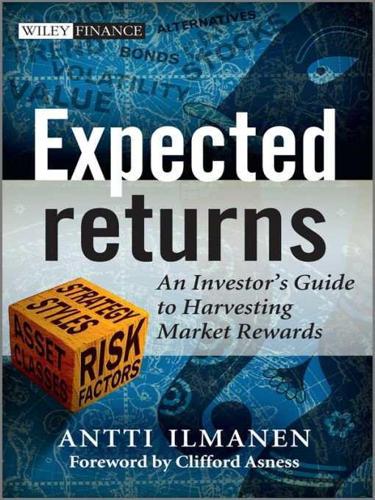
Expected Returns: An Investor's Guide to Harvesting Market Rewards
by
Antti Ilmanen
Published 4 Apr 2011
How can investors deal with the complexity of multiple inputs and perspectives, let alone with the even more bewildering assortment of novel investment products on offer? This book provides a map to investors, giving a bird’s eye view over a rugged terrain and occasionally zooming in to interesting locations (12 case studies), not unlike Google Earth™. I hope my two visual aids—the elephant and the cube—will help readers keep the forest in sight among the many trees along the way. Next, Sections 1.1–1.4 give an overview on the four perspectives on “feeling the elephant” (i.e., on considerations for judging expected returns). These themes will be expanded on through the book. 1.1 HISTORICAL PERFORMANCE Historical average returns are a common starting point for judging expected returns.

Private Empire: ExxonMobil and American Power
by
Steve Coll
Published 30 Apr 2012
If pirates were seen approaching, defense protocols kicked in: broadcasted alerts, lockdowns, the disablement of equipment, and retreat into interior safe rooms. Intelligence collection, threat mapping, and surveillance were about as far as ExxonMobil was now willing to go. The corporation’s security officers used Google Earth satellite photography to create graphic maps overlaid with the locations and dates of recent attacks, and the sites of militant camps in Akwa Ibom. They worked human sources and tried to understand who was who inside the camps.42 ExxonMobil security officers called Africa Command in Germany as attacks unfolded on the open ocean.

Aftermath: Following the Bloodshed of America's Wars in the Muslim World
by
Nir Rosen
Published 21 Apr 2011
Christians have been neutral, not with the occupier, so they have been spared. Shiites are not apostates; their leaders are. Clerics have agreed that the Shiite clerics are infidels, the people are deviants. Hizballah is a Shiite apostate party. The Shiites hate Sunnis.” Another time when I visited Abu Ghassan in his home, Abu Anas was there. They were looking at Google Earth on the laptop while listening to a CD of Salafi chanting called Commanders of the Jihad. They showed me another CD, a tribute to Salih Ablawi, known as Abu Jaafar, who had died with Zarqawi in Iraq. He was from Ayn al-Hilweh too, and Abu Ghassan had a collection of his speeches and pictures from Iraq on his laptop.

Greece
by
Korina Miller
Published 1 Mar 2010
The pride Greeks have in their homes rarely extends to public spaces. Greeks have a residual mistrust of authority and little respect for the state; personal freedom and democratic rights are almost sacrosanct and there is an aversion to the Big Brother approach of over-regulated Western nations (in 2009, Greece banned Google Earth’s street-view function after an outcry over invasion of privacy). This inherent insubordinate streak means rules and regulations are routinely ignored. Many visitors are indeed surprised to learn there are road rules at all. Despite hefty fines, wearing a seatbelt is treated as an optional inconvenience; creative and inconsiderate parking is the norm; dangerous overtaking is rife; and you’ll often see people riding motorbikes, carrying their helmets as they chat on their mobile phones.

Germany
by
Andrea Schulte-Peevers
Published 17 Oct 2010
Also look for coin-operated laptops by Sidewalk Express (www.sidewalkexpress.com; per hr €2) usually found in malls (eg Potsdamer Platz Arkaden, Alexa) and train stations (eg Friedrichstrasse, Alexanderplatz). Fat Tire Bike Tours (Map; 2404 7991; Panoramastrasse 1a; 9.30am-7.30pm) below the TV Tower has an all-you-can-surf rate for €1.99. Return to beginning of chapter Internet Resources 3D Stadtmodell (www.3d-stadtmodell-berlin.de) Virtual Google Earth–powered journey through Berlin. Berlin Hidden Places (www.berlin-hidden-places.de) Ideas for getting off the tourist track. Berlin Tourism (www.visitberlin.de, www.visitBerlin.tv) Official tourist-office website. Berlin Unlike (http://berlin-unlike.net) Hip guide with up-to-the-minute reviews and happenings; sign up for a free weekly newsletter.
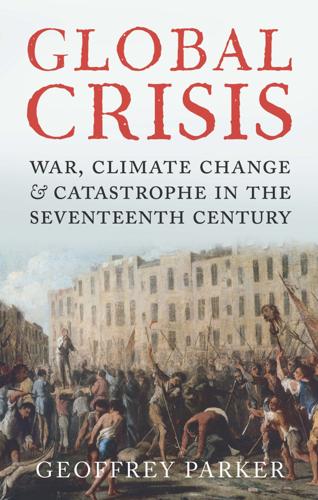
Global Crisis: War, Climate Change and Catastrophe in the Seventeenth Century
by
Geoffrey Parker
Published 29 Apr 2013
Above all, each year he prepared a summary of the detailed accounts of public income and expenditure that he had laboriously prepared, and presented it to the king, specially written in a small book by a noted calligrapher and handsomely bound in red leather, so that Louis could carry it around with him at all times.41 Vauban bombarded the king with more ambitious statistics, but unlike Colbert, who almost always stayed at court and acquired most of his information indirectly, Vauban moved around almost ceaselessly to see things for himself, and he often presented his findings to Louis XIV in visual form. Thus after overseeing in person the construction or reconstruction of France's frontier fortresses, Vauban created a scale model of each one so that the king could visualize the defences of his kingdom without leaving his palace – an early form of ‘Google Earth’. By 1700 almost 150 models existed, mostly on the same large scale of 1/600, with miniature walls, churches, houses and trees recreated in wood, silk, paper and sand. During a siege, the daily updates received from his field commanders could be reproduced on the model, allowing the king to micromanage operations via a stream of detailed instructions.
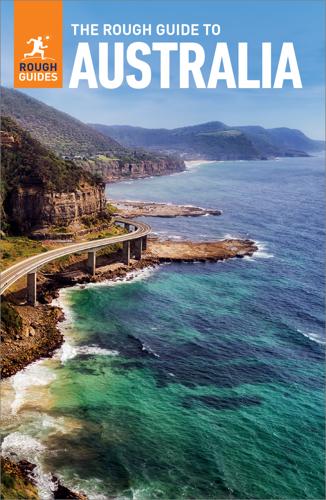
The Rough Guide to Australia (Travel Guide eBook)
by
Rough Guides
Published 14 Oct 2023
A deservedly classic buddy movie in which a young Mel Gibson strikingly evokes the Anzacs’ cheery idealism and the tragedy of their slaughter. Lion (Garth Davis, 2017). Tear-jerking epic that follows Saroo, a Tasmania-raised, India-born young man in his search for his birth family through, firstly, Google Earth and then the Khandwa district of India. The Man from Snowy River (George Miller, 1981). Men, horses and the land from A.B. (“Banjo”) Paterson’s seminal and dearly loved poem caught the overseas’ imagination. A modern kangaroo western. Plains of Heaven (Ian Pringle, 1982). A spookily atmospheric story of two weathermen in a remote meteorological station slowly losing their minds.